Tallinn is the capital city, and major political, financial, cultural and education hub of Estonia. It is also where about 440,000 of Estonia’s 1.3m population live. Tallinn’s Old Town is one of the best preserved medieval cities in Europe and is listed as a UNESCO World Heritage Site – gotta love those UNESCO people… preserving all the history for future generations. I’ve been to more UNESCO sites this year than you can poke a stick at! ( <– Australian expression for a ‘whole bunch of them’).
Anyway, Tallinn is first mentioned as having received city rights as far back as 1219, (I actually typed that as 1912, twice, before getting it right!), but humans are believed to have settled here as long as 5,000 years ago. Initially, the land was owned by the Danes in the 13th century after a successful raid of Lyandisse led by Valdemar II of Danmark. After this, Estonia alternated between Scandinavian and German rule. Due it’s important strategic location, Tallinn became a major trade hub from the 14th to 16th centuries as it grew in importance as part of the Hanseatic League – I’ve written about the Hanseatic League before, but if you’re unfamiliar with it, you can kinda think of it as the early European Union.
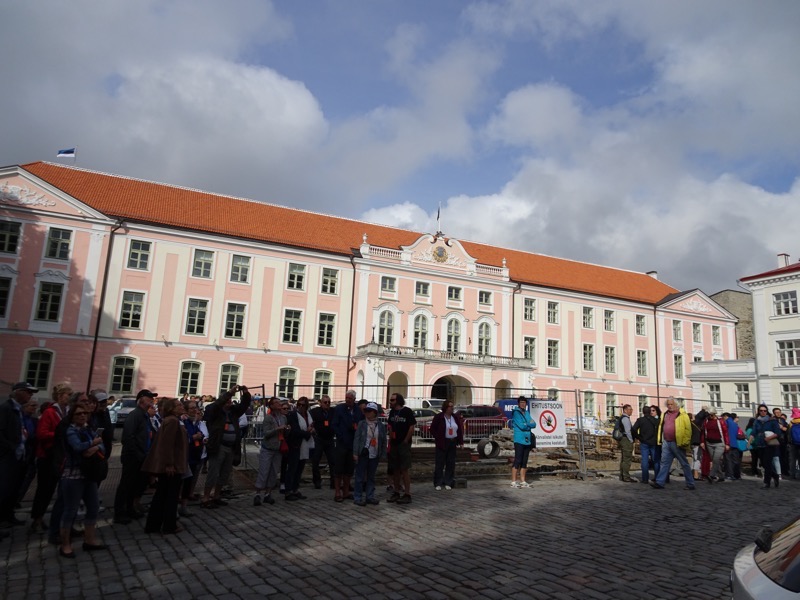 This striking pink building is the Riiggikogu, or Estonian Parliament, also known as Toompea Castle located in the upper part of the Old Town. According to legend, Toompea is the grave mount of an ancient Estonian king, Kalev, which was created by his wife, Linda, who carried rocks for it in her apron. A thousand years ago, it was the seat of an Estonian stronghold, and from the 13th-19th centuries was the home of the nobiity. The houses and palaces that decorate the Toompea now were all built after a huge fire in 1684 and are in the German-Batlic style preferred by the families of noble descent who lived here.
This striking pink building is the Riiggikogu, or Estonian Parliament, also known as Toompea Castle located in the upper part of the Old Town. According to legend, Toompea is the grave mount of an ancient Estonian king, Kalev, which was created by his wife, Linda, who carried rocks for it in her apron. A thousand years ago, it was the seat of an Estonian stronghold, and from the 13th-19th centuries was the home of the nobiity. The houses and palaces that decorate the Toompea now were all built after a huge fire in 1684 and are in the German-Batlic style preferred by the families of noble descent who lived here.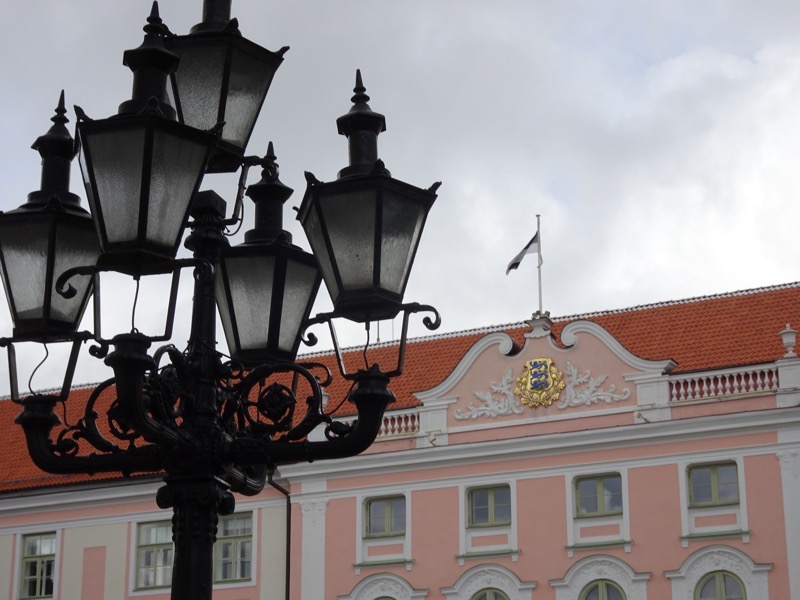 Directly opposite Toompea Castle stands the Russian Orthodox Cathedral of Alexander Nevsky – built in 1894-1900, the building has five onion-shaped cupolas that rest of a study granite blocks and follow the 17th century building style of Mosow and Yaroslavl.
Directly opposite Toompea Castle stands the Russian Orthodox Cathedral of Alexander Nevsky – built in 1894-1900, the building has five onion-shaped cupolas that rest of a study granite blocks and follow the 17th century building style of Mosow and Yaroslavl. 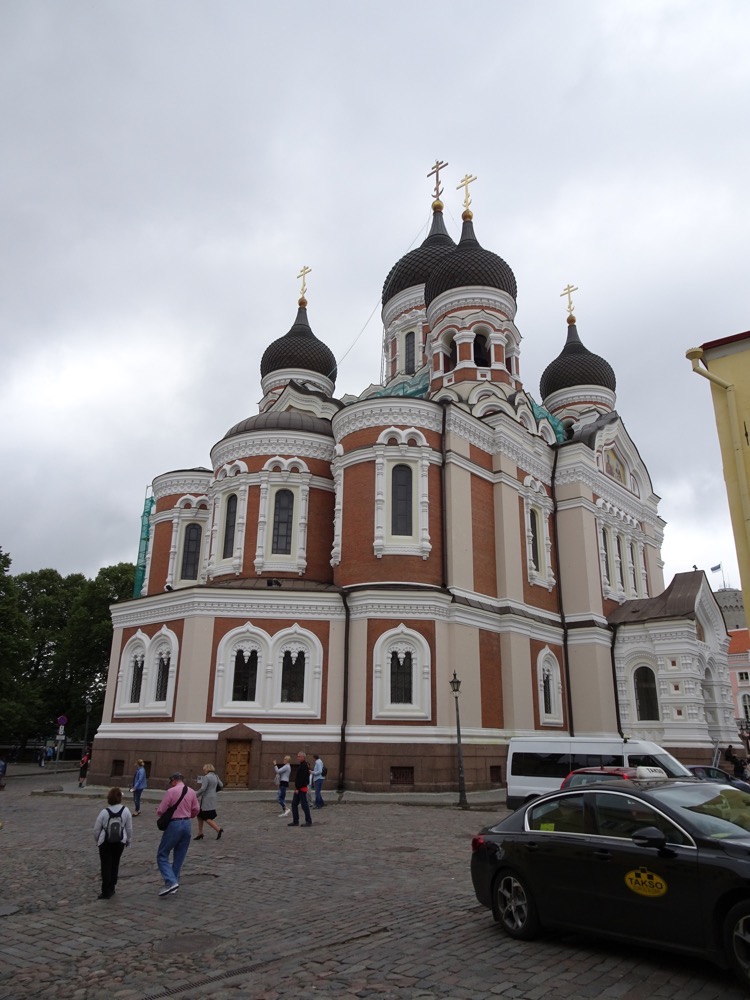 The facade mosaics are by A Frolov as are the wall paintings on the inside.
The facade mosaics are by A Frolov as are the wall paintings on the inside.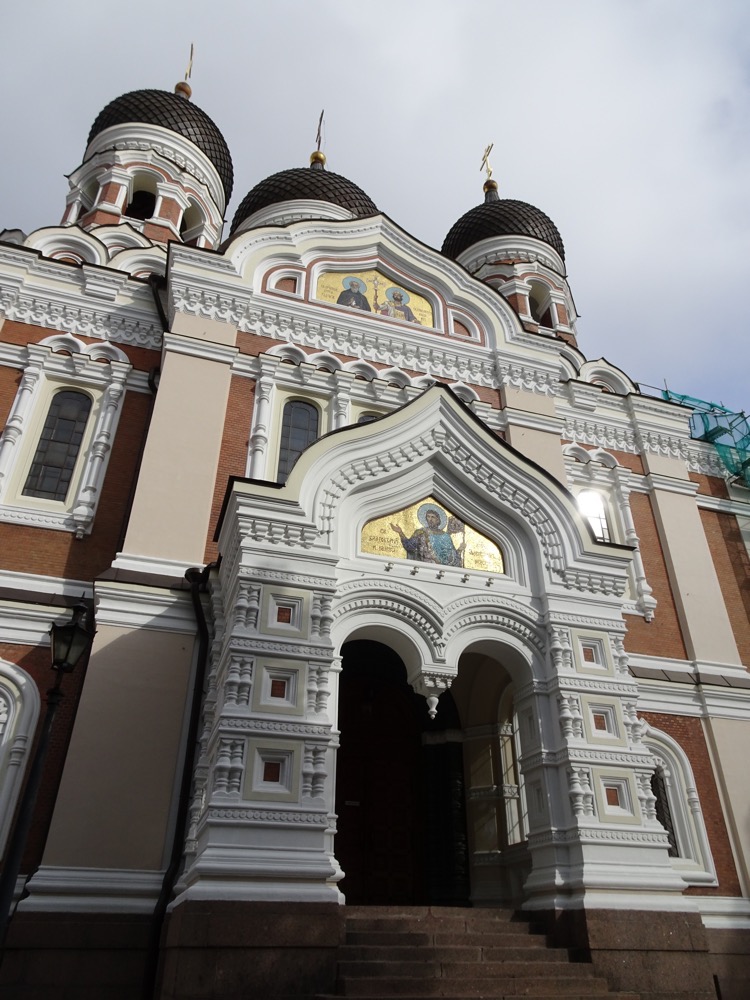 Alexander Nevsky Cathedral boasts the most impressive ensemble of church bells in the country – it comprises of 11 bells, including Tallinn’s largest bell which weighs over 15 tonnes.
Alexander Nevsky Cathedral boasts the most impressive ensemble of church bells in the country – it comprises of 11 bells, including Tallinn’s largest bell which weighs over 15 tonnes.

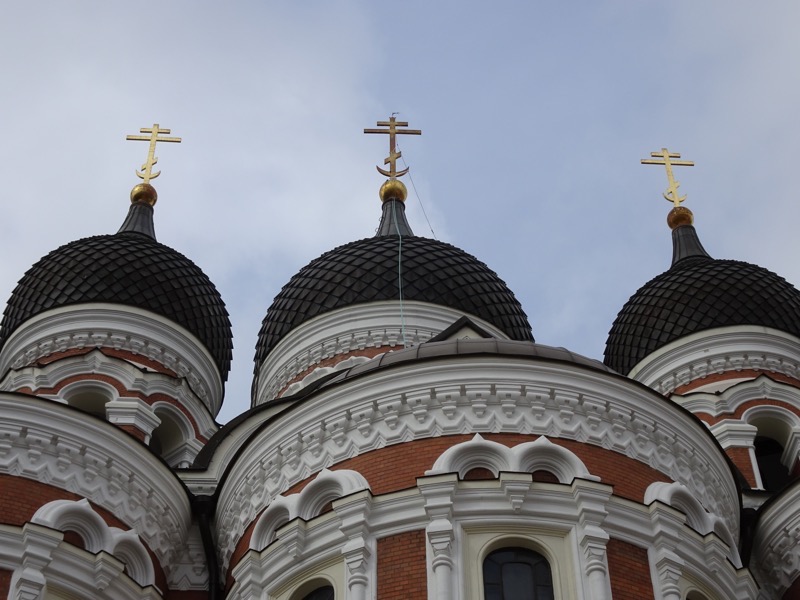
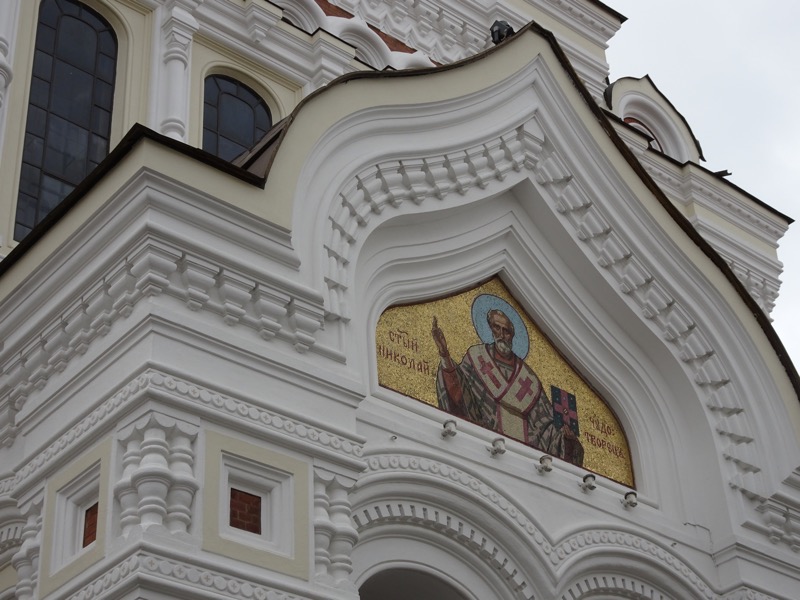 The church holds services and local worship here still.
The church holds services and local worship here still.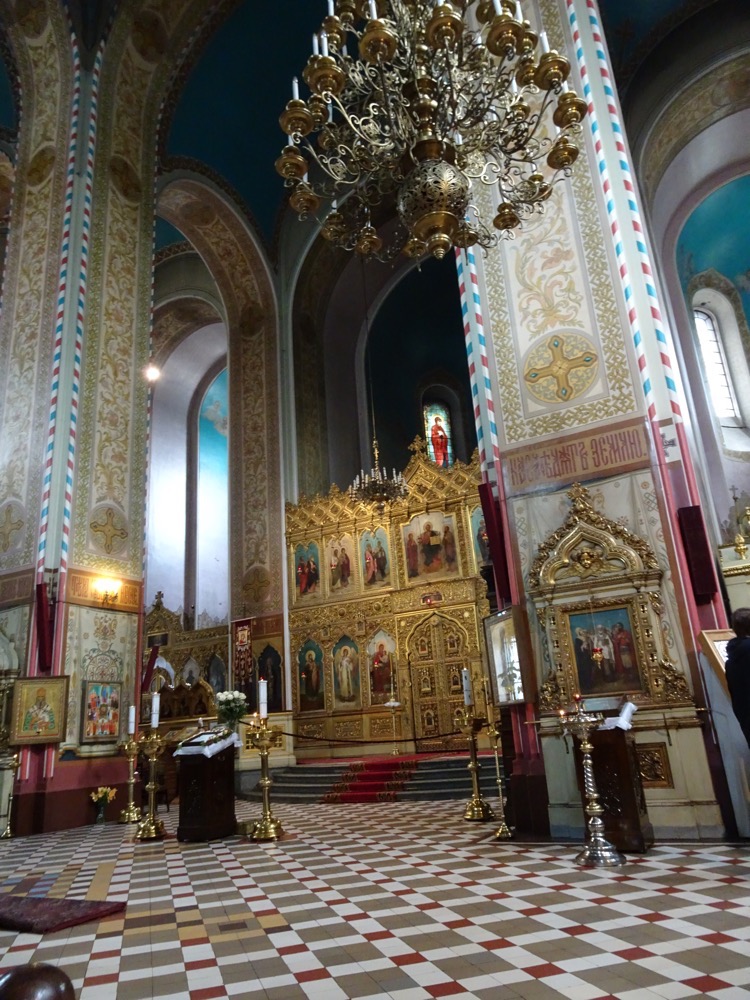
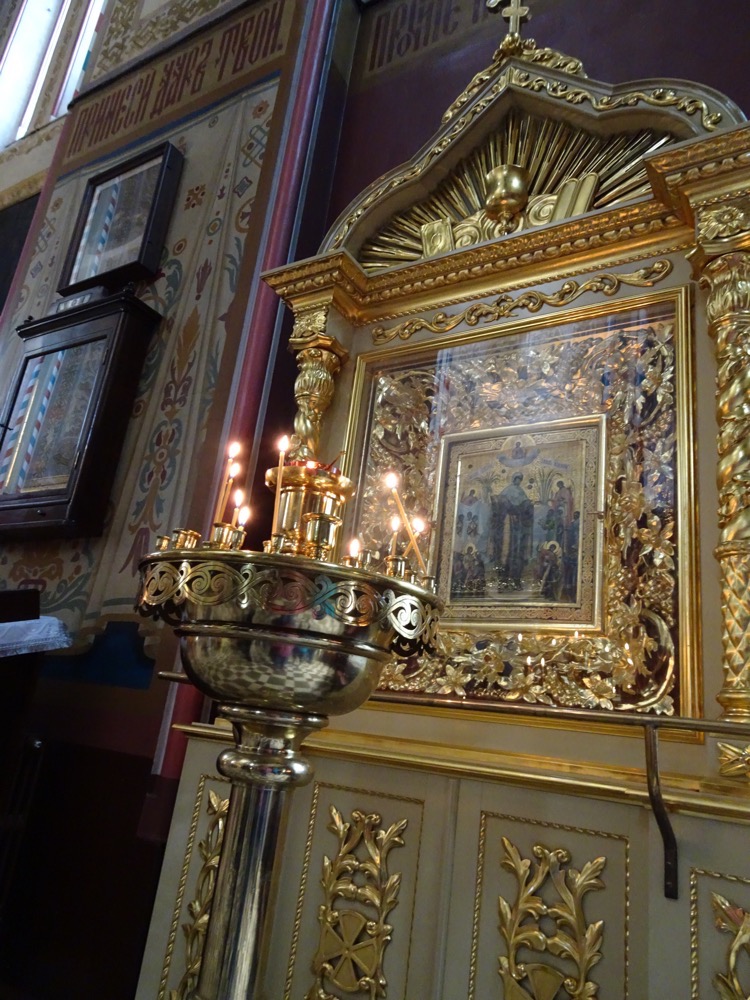
Around the corner is Toomkirik, also known as the Cathedral of St Mary the Virgin which dates from the early 13th century, howeve, all the older decorations were destroyed during the fire of 1684, so the rebuild occured after that and it acquired a baroque spire in 1778-79.
 The interior of the cathedral is relatively simple but contains a remarkable collection of heraldic epitaphs for many of the Baltic-Germa noble families that patronised the church. There are more than 100 of these elaborated impressas decorating the church, many of which were made by Tallinn wood carver Christian Ackerman in the late 1690s.
The interior of the cathedral is relatively simple but contains a remarkable collection of heraldic epitaphs for many of the Baltic-Germa noble families that patronised the church. There are more than 100 of these elaborated impressas decorating the church, many of which were made by Tallinn wood carver Christian Ackerman in the late 1690s.
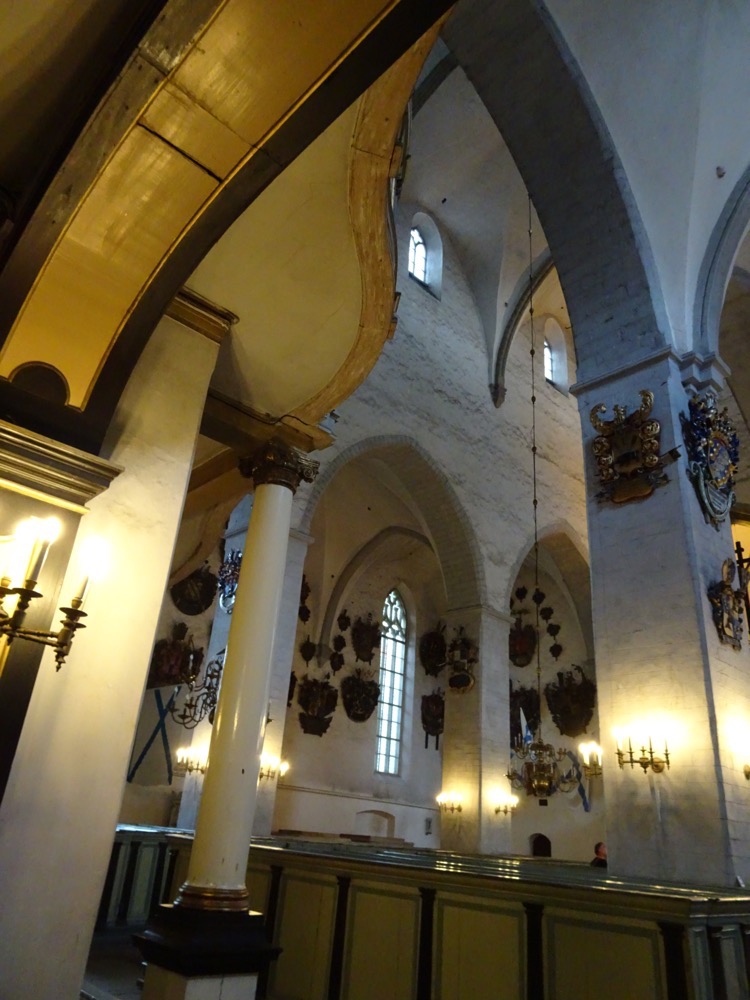
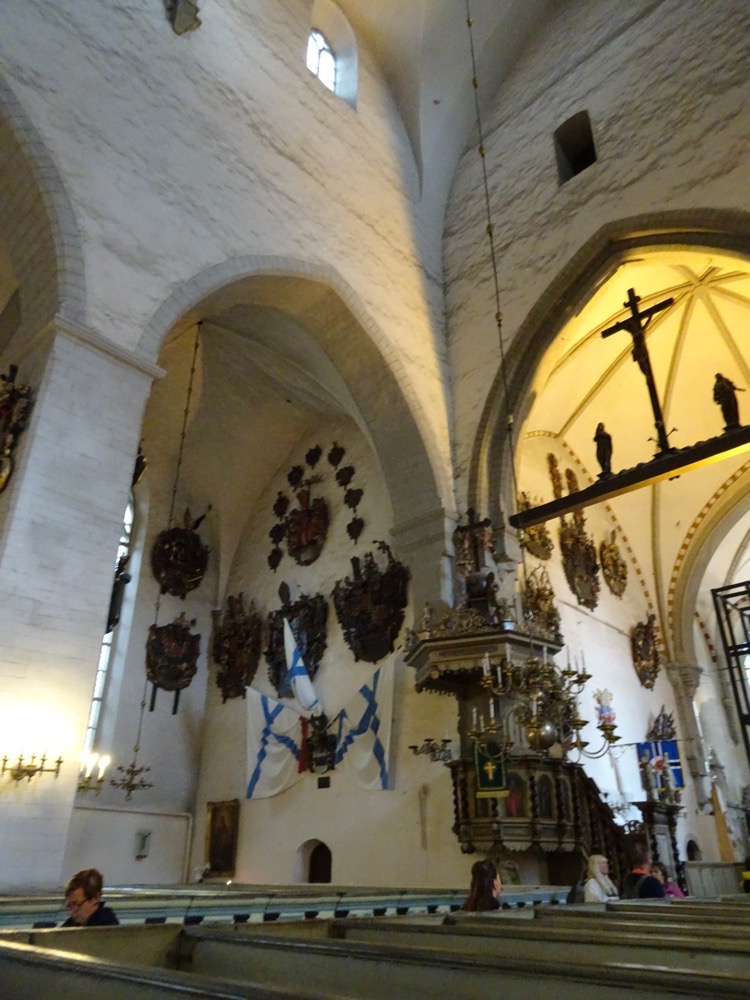
 The narrow cobbled streets of the upper Old Town.
The narrow cobbled streets of the upper Old Town.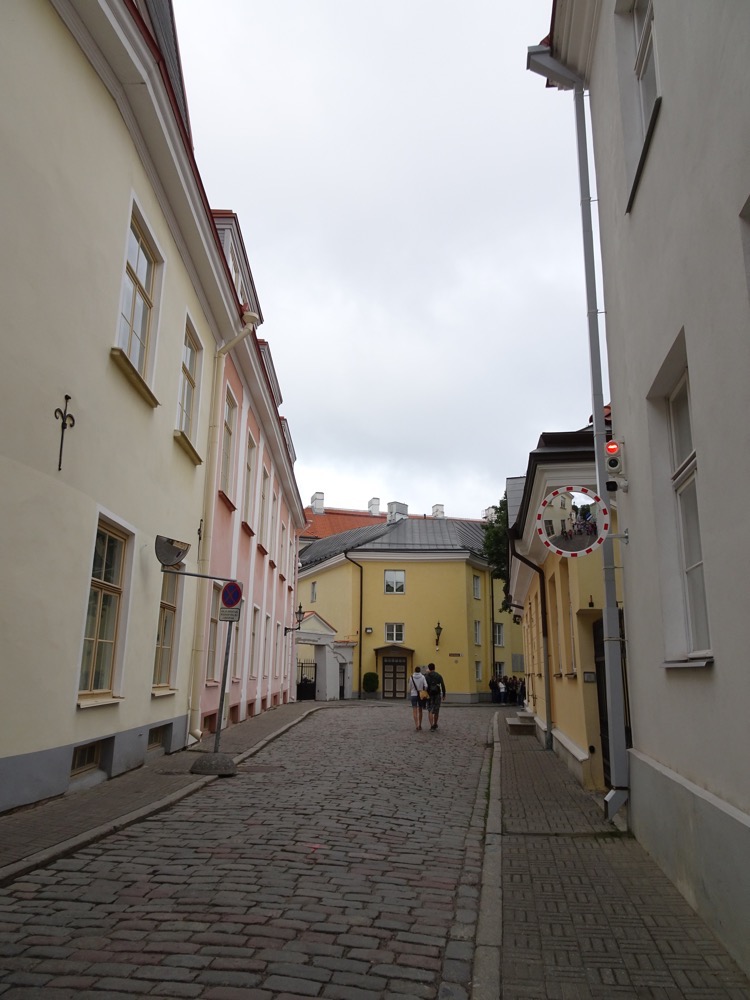 View from the panorama viewpoints towards the gate towers of the lower Old Town.
View from the panorama viewpoints towards the gate towers of the lower Old Town.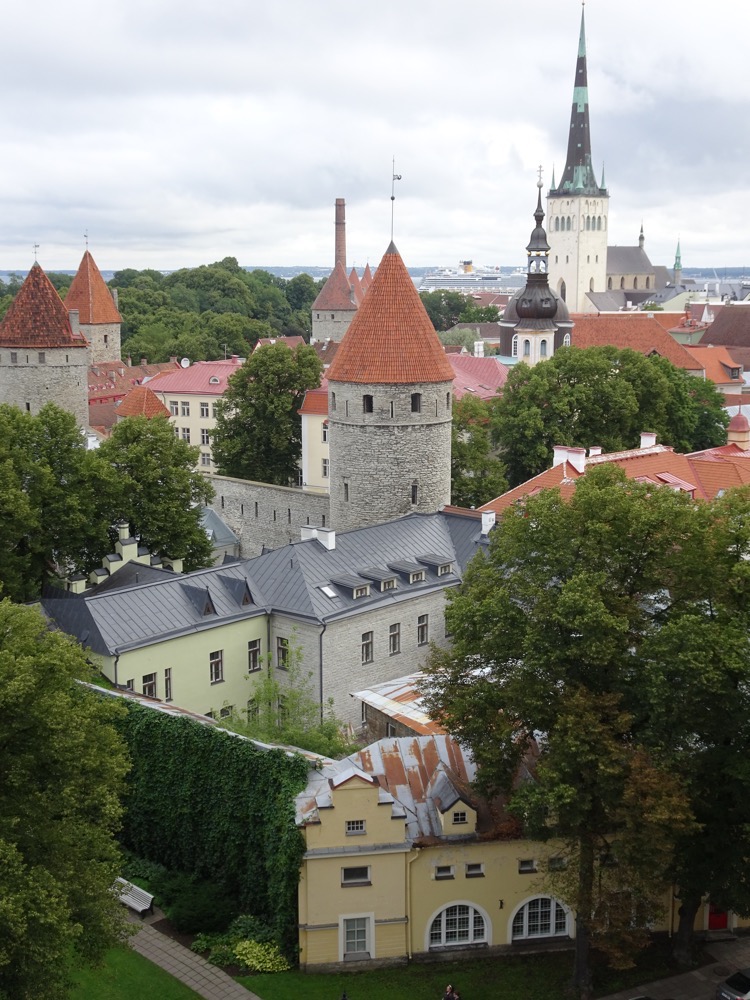 Rear of the Presidential residence.
Rear of the Presidential residence.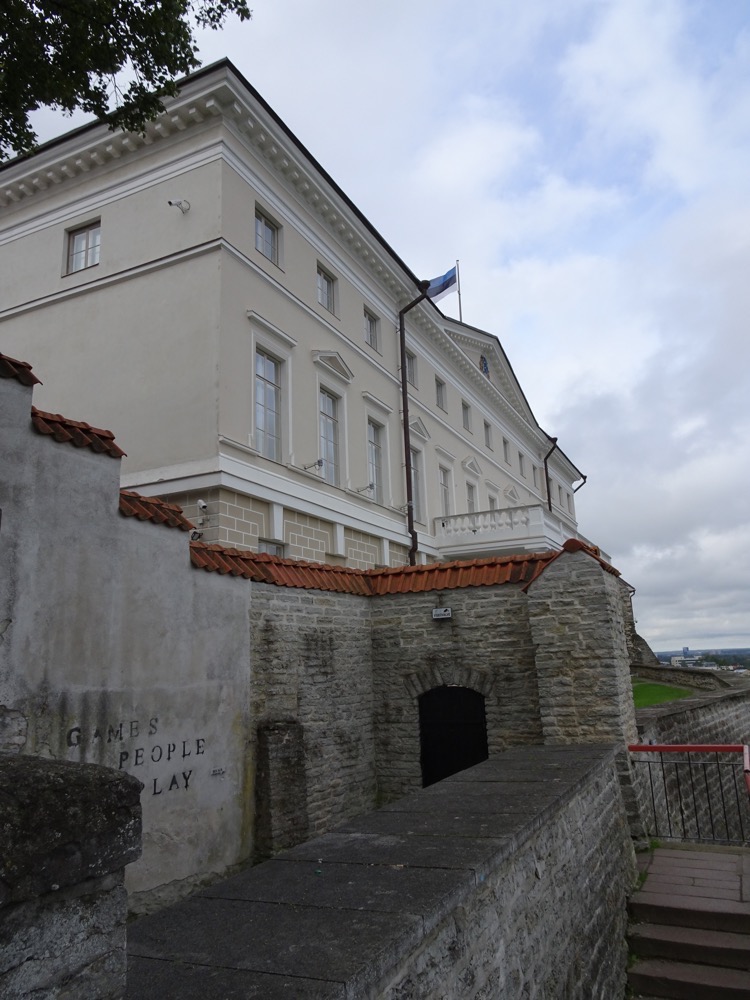
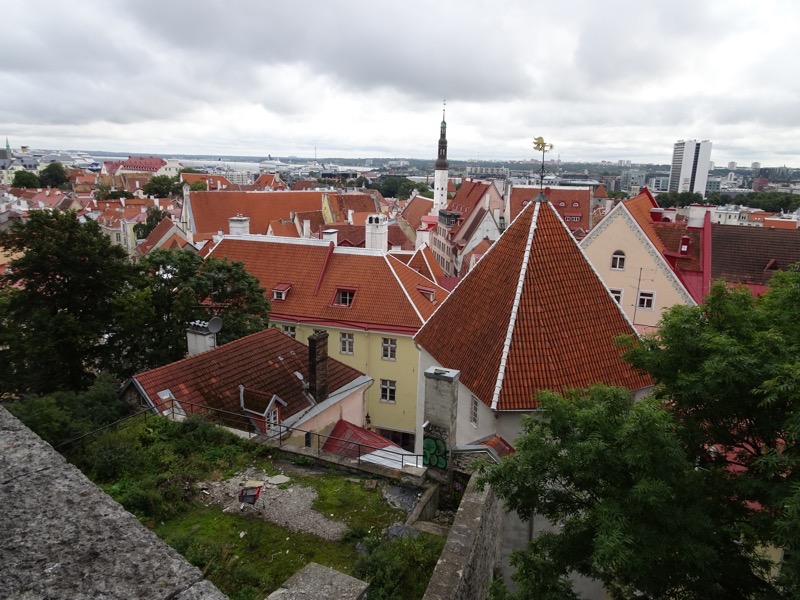 Rooftops of Tallinn.
Rooftops of Tallinn.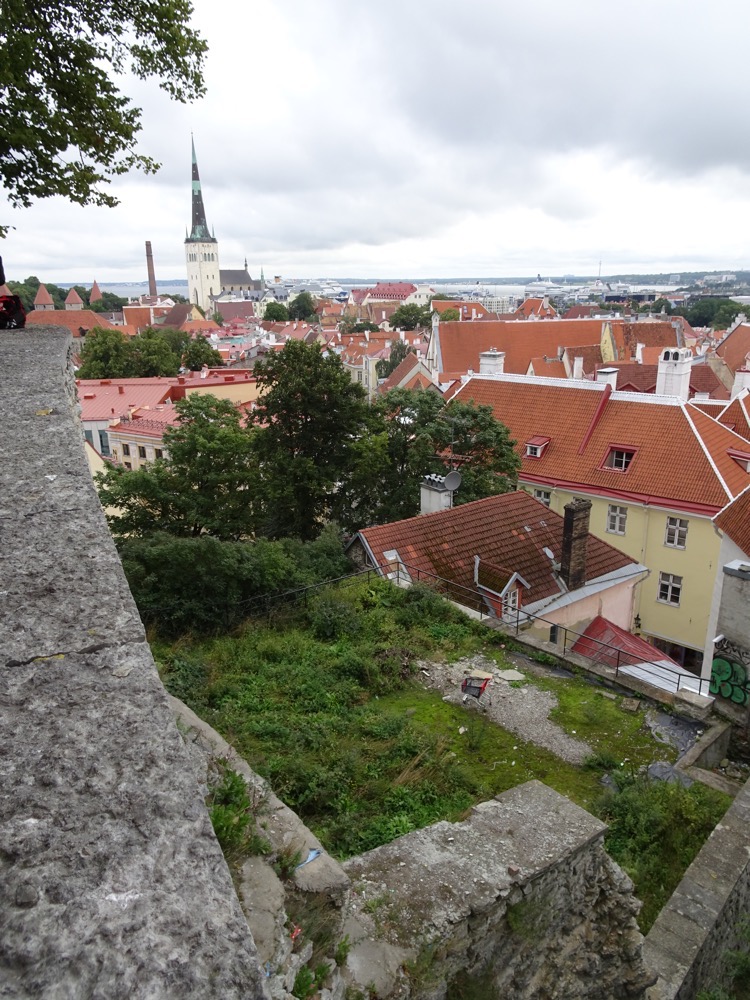 We had a little bit of time to poke around the shops in the upper area of the old town, and there is a heavy focus on amber (amber, amber everywhere!), woolen sweaters, Russian dolls, painted plates, and strangel little ceramic buildings that can be used as candle holders).
We had a little bit of time to poke around the shops in the upper area of the old town, and there is a heavy focus on amber (amber, amber everywhere!), woolen sweaters, Russian dolls, painted plates, and strangel little ceramic buildings that can be used as candle holders).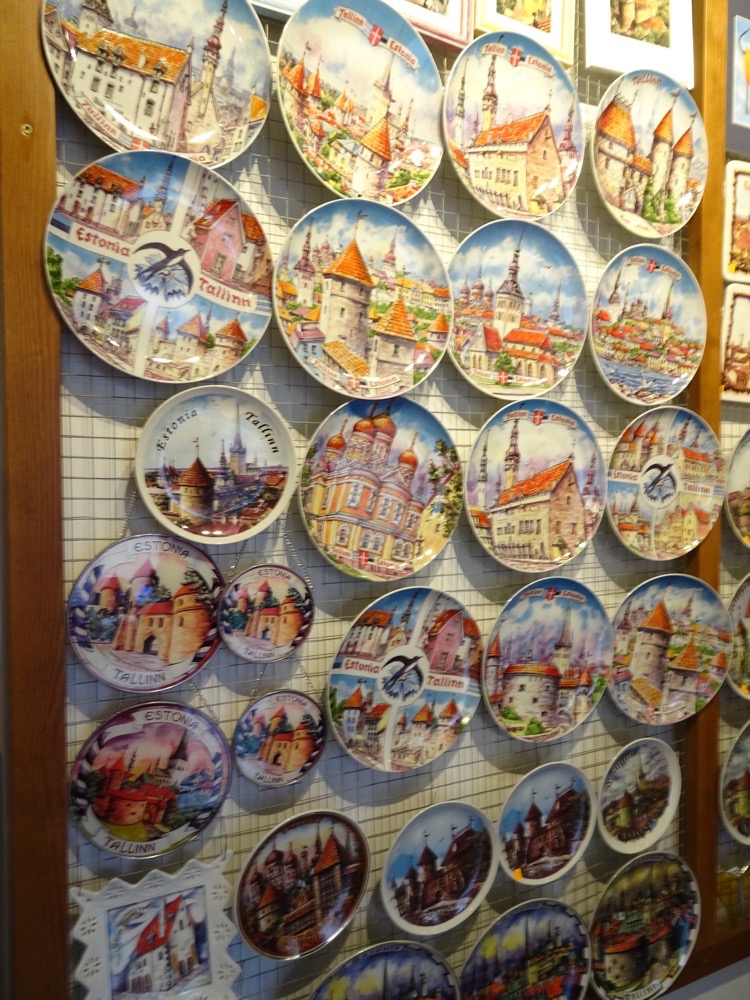

St Catherine’s Church – though which Catherine, I couldn’t tell you.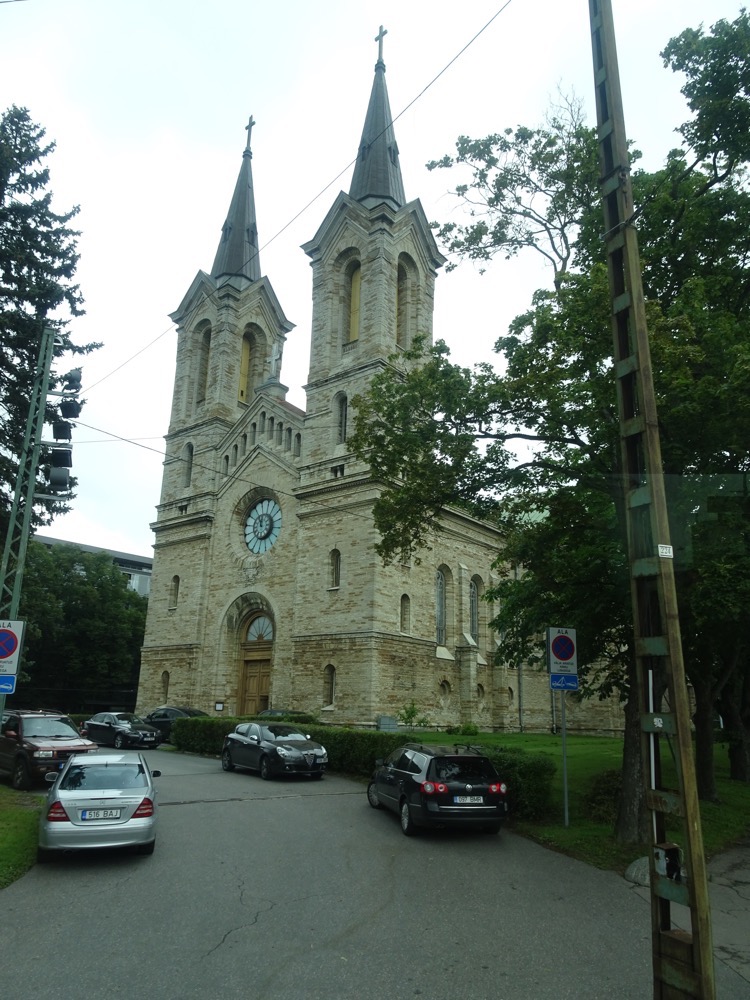
 Our next stop was to Kadroig Palace. Literally meaning ‘Catherine’s Vale’, Kadroig with its beautiful gardens and huge swan lake is a favored outing place for locals. The palace and grounds were built by Russian Tsar Peter I. He had acquired some land with a small house on it and launched on the construction of a summer palace for his wife, Catherine, in 1718. The design was by Italian architect Niccolo Michetti. and has extensive parterres, fountains, cascades, canals, and lakes.
Our next stop was to Kadroig Palace. Literally meaning ‘Catherine’s Vale’, Kadroig with its beautiful gardens and huge swan lake is a favored outing place for locals. The palace and grounds were built by Russian Tsar Peter I. He had acquired some land with a small house on it and launched on the construction of a summer palace for his wife, Catherine, in 1718. The design was by Italian architect Niccolo Michetti. and has extensive parterres, fountains, cascades, canals, and lakes.
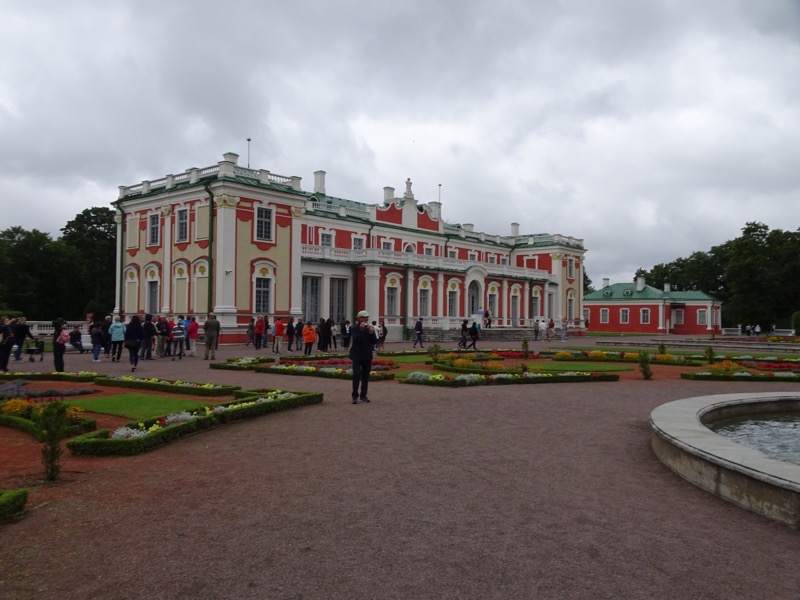
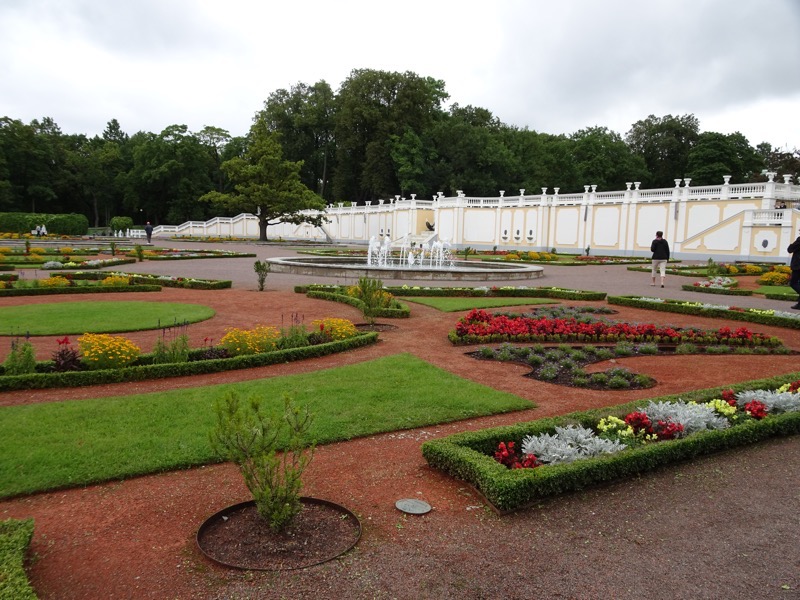
 When completed, Kadroig Palace was the most magnificent example of baroque architecture in Estonia. At present, the main hall is the only extant example of a completely unaltered baroque hall from the time of Peter I. The building is currently used to house the Estonia Art Museum’s collection of foreign art.
When completed, Kadroig Palace was the most magnificent example of baroque architecture in Estonia. At present, the main hall is the only extant example of a completely unaltered baroque hall from the time of Peter I. The building is currently used to house the Estonia Art Museum’s collection of foreign art.
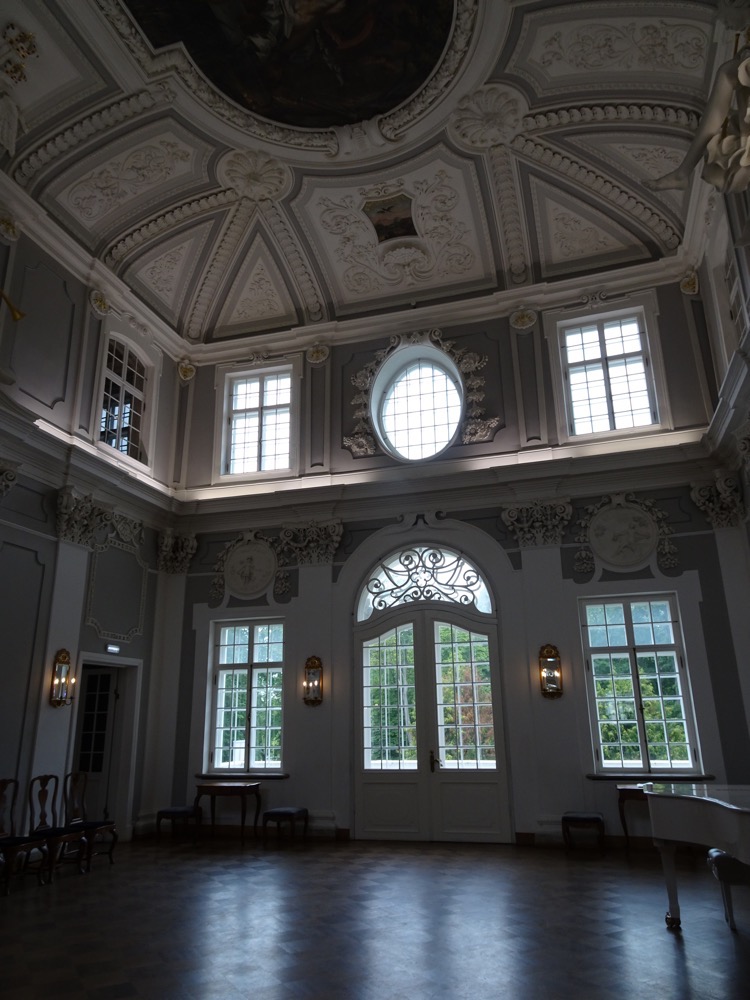
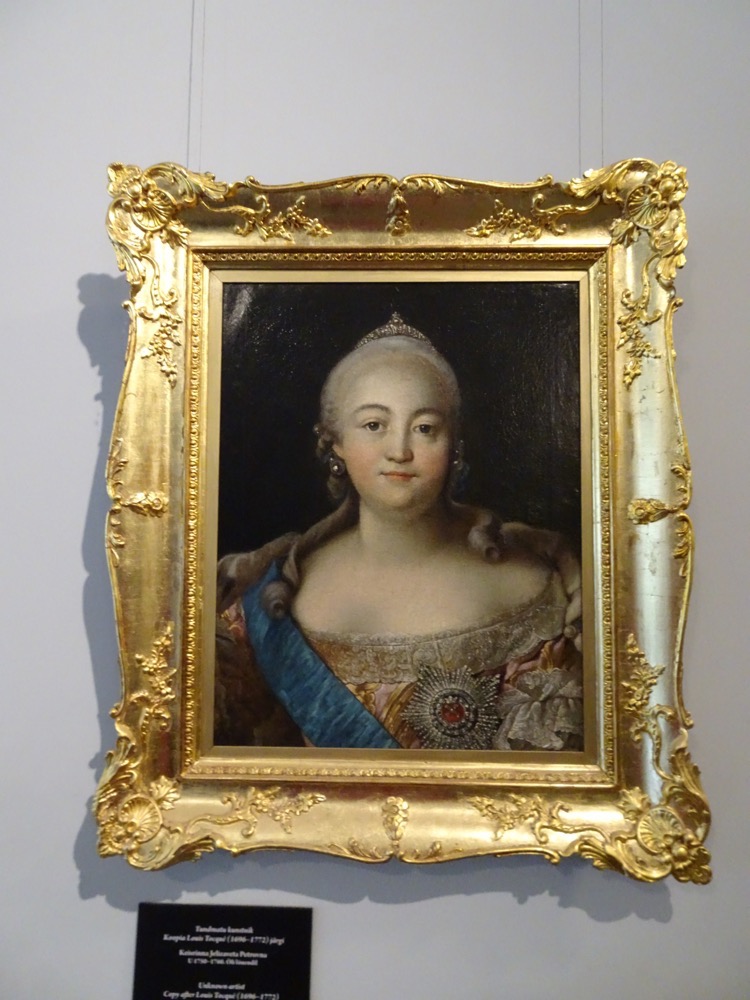 Peter’s second wife, Katherine who it is claimed he fell in love with at first sight, even though she was a common washerwoman at the time. He left? abandoned? sent his first wife to a convent? and married Katherine who then became Empress of all Russia.
Peter’s second wife, Katherine who it is claimed he fell in love with at first sight, even though she was a common washerwoman at the time. He left? abandoned? sent his first wife to a convent? and married Katherine who then became Empress of all Russia.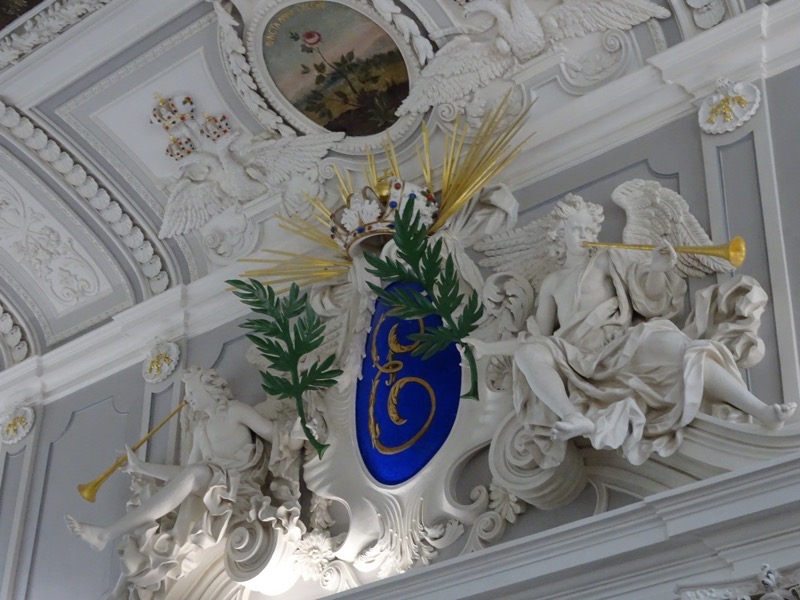 Allegorical fresco depicting the goddess Diana being surprised as she bathed with her nymphs by a hapless hunter. She turned him into a deer, and he grew horns; his dogs did not recognize him and they ripped him to pieces… apparently, Diana represents the triumphal hunter, ‘Russia’ and the hapless hunter-turned-deer, represents ‘Sweden’.
Allegorical fresco depicting the goddess Diana being surprised as she bathed with her nymphs by a hapless hunter. She turned him into a deer, and he grew horns; his dogs did not recognize him and they ripped him to pieces… apparently, Diana represents the triumphal hunter, ‘Russia’ and the hapless hunter-turned-deer, represents ‘Sweden’.
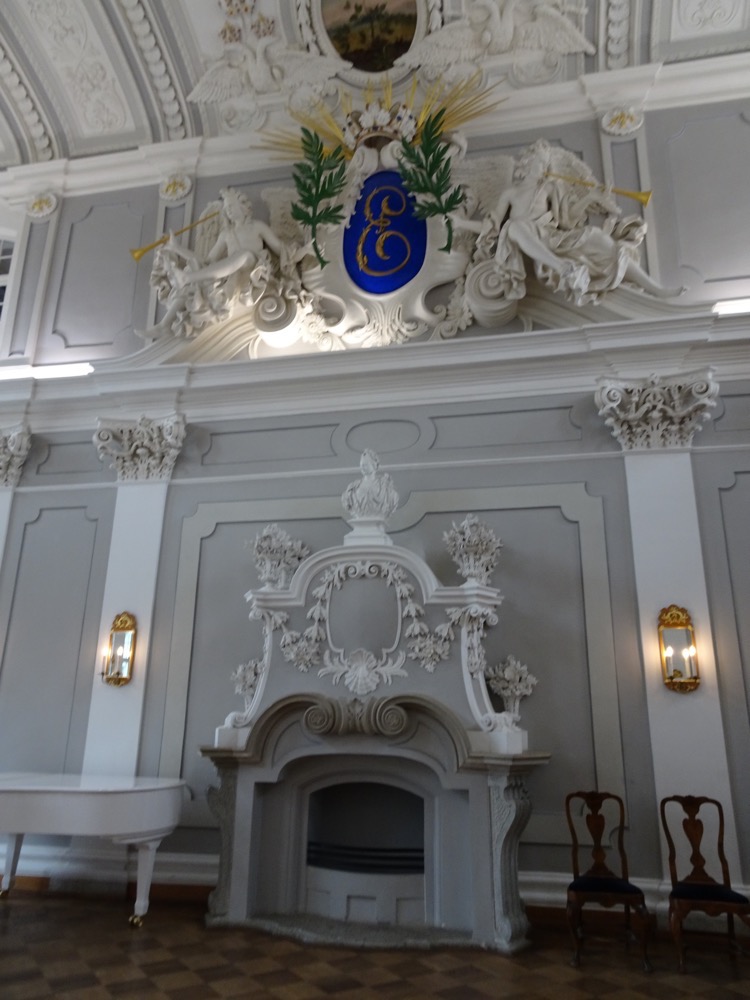
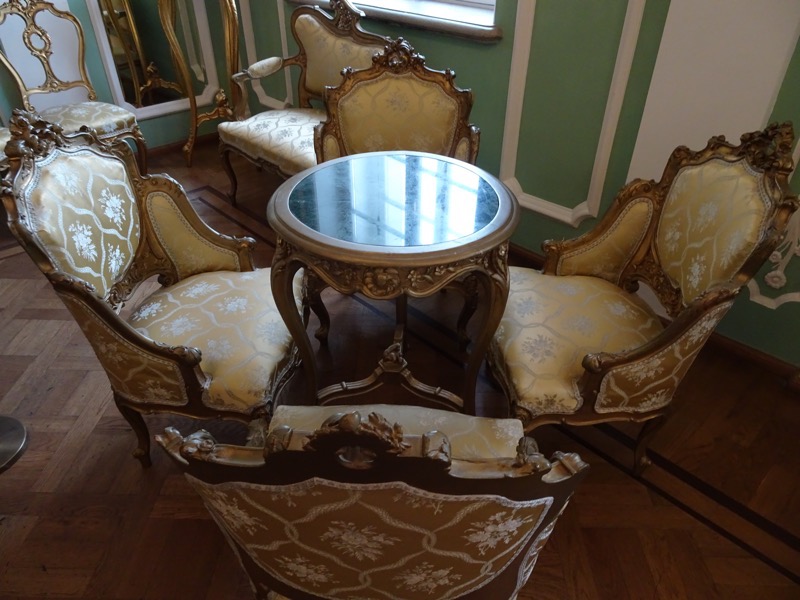
 A random Bruegel in the collection…
A random Bruegel in the collection…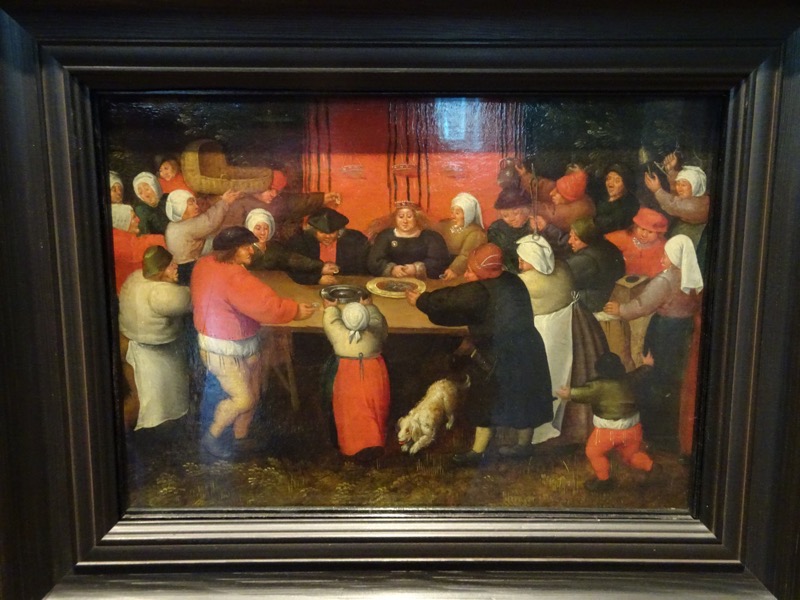 A chinoiserie ceramic slipper – no provenance listed anywhere.
A chinoiserie ceramic slipper – no provenance listed anywhere.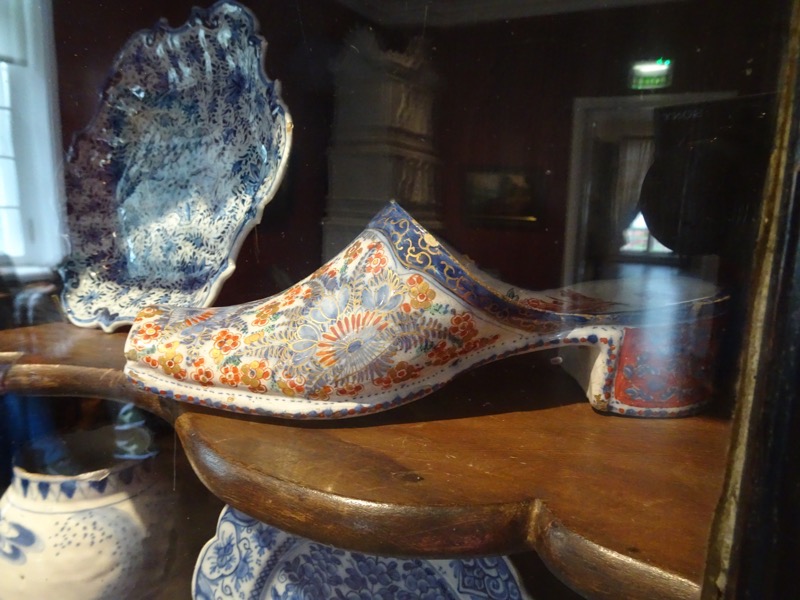 Heating furnaces.
Heating furnaces.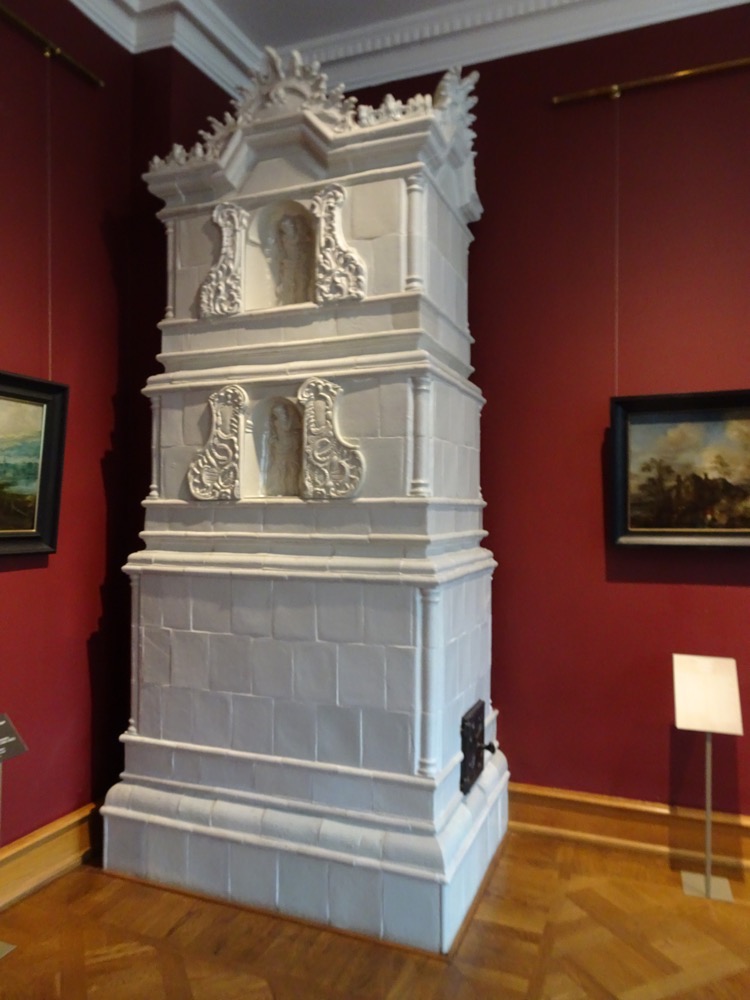
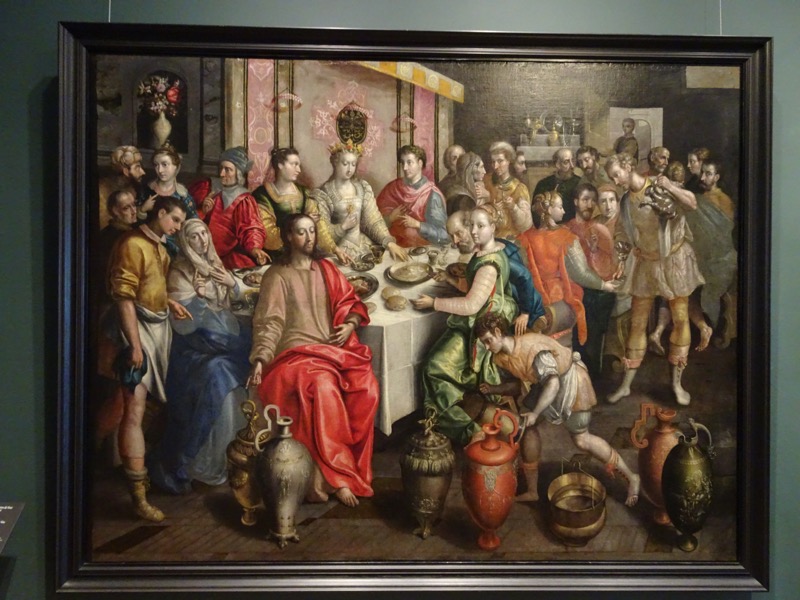
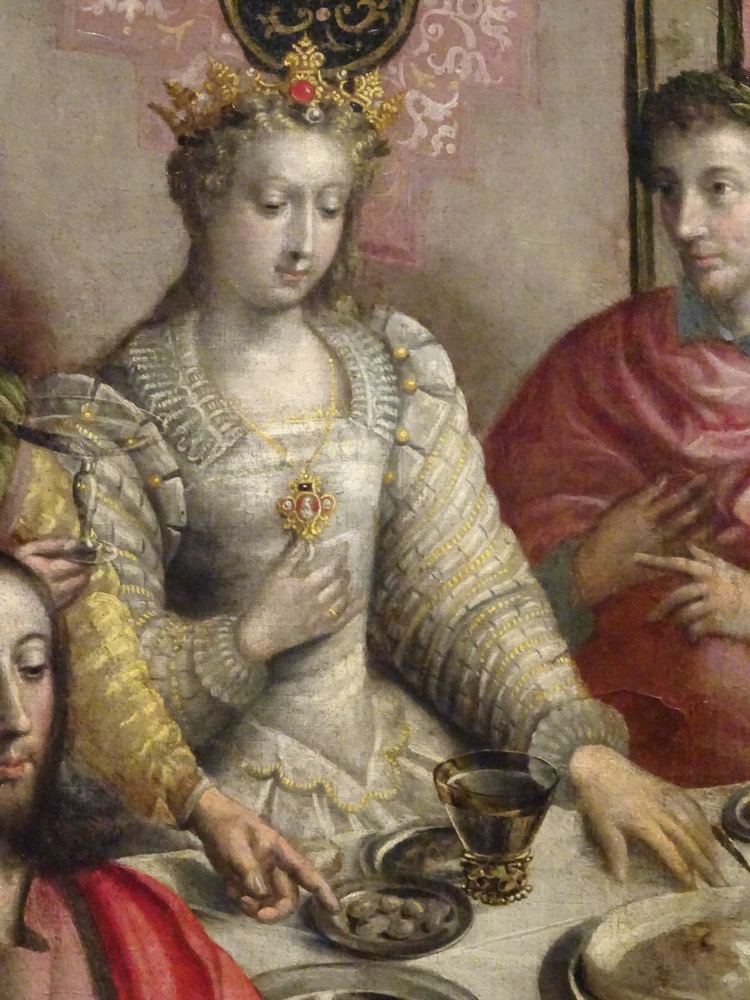
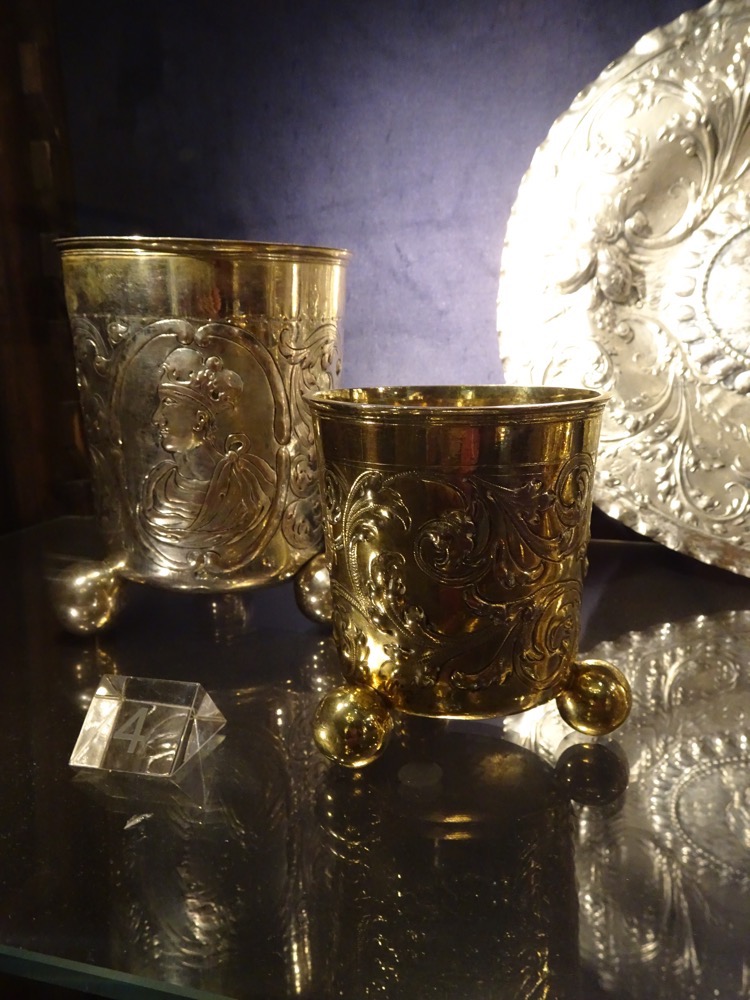 Front facade of Kadroig Palace.
Front facade of Kadroig Palace.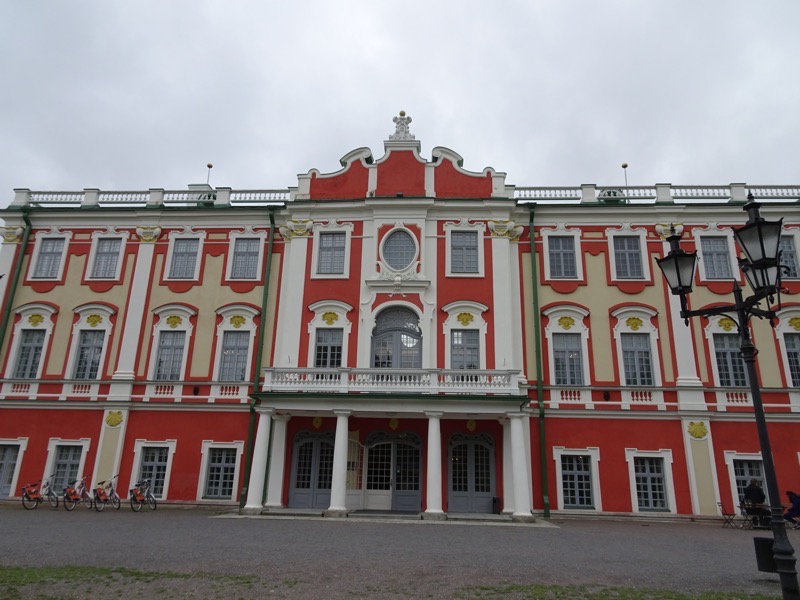
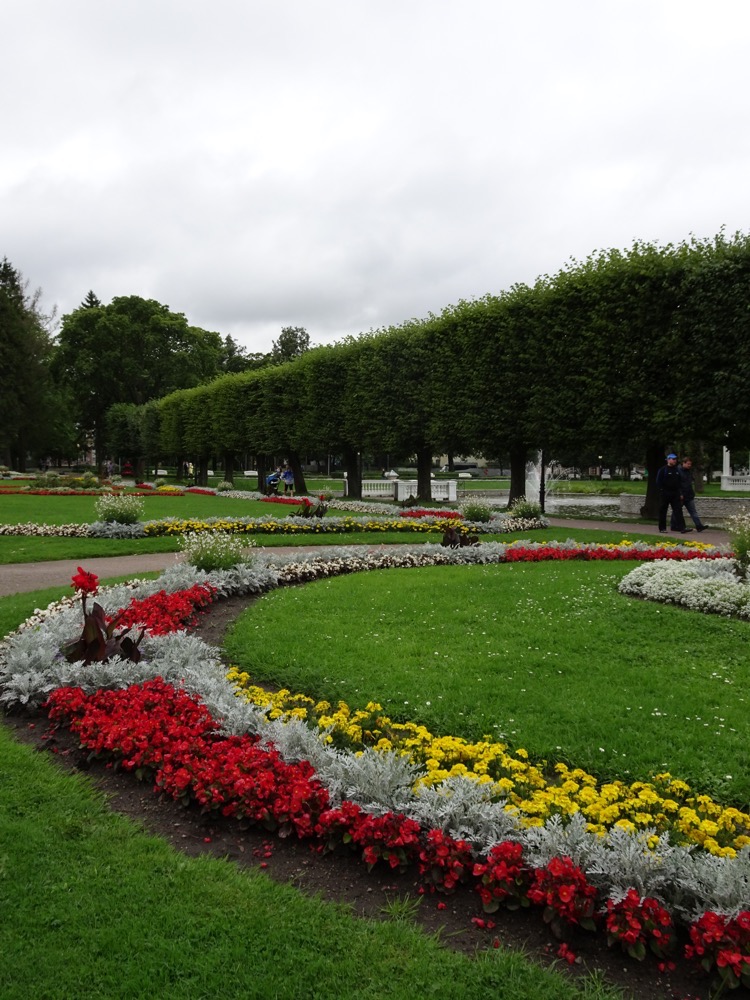 Another chance to have a bit of a poke about the shops came up and we found more textiles… this time in the form of heavy felt hats with cat faces embroidered on them…?!
Another chance to have a bit of a poke about the shops came up and we found more textiles… this time in the form of heavy felt hats with cat faces embroidered on them…?!
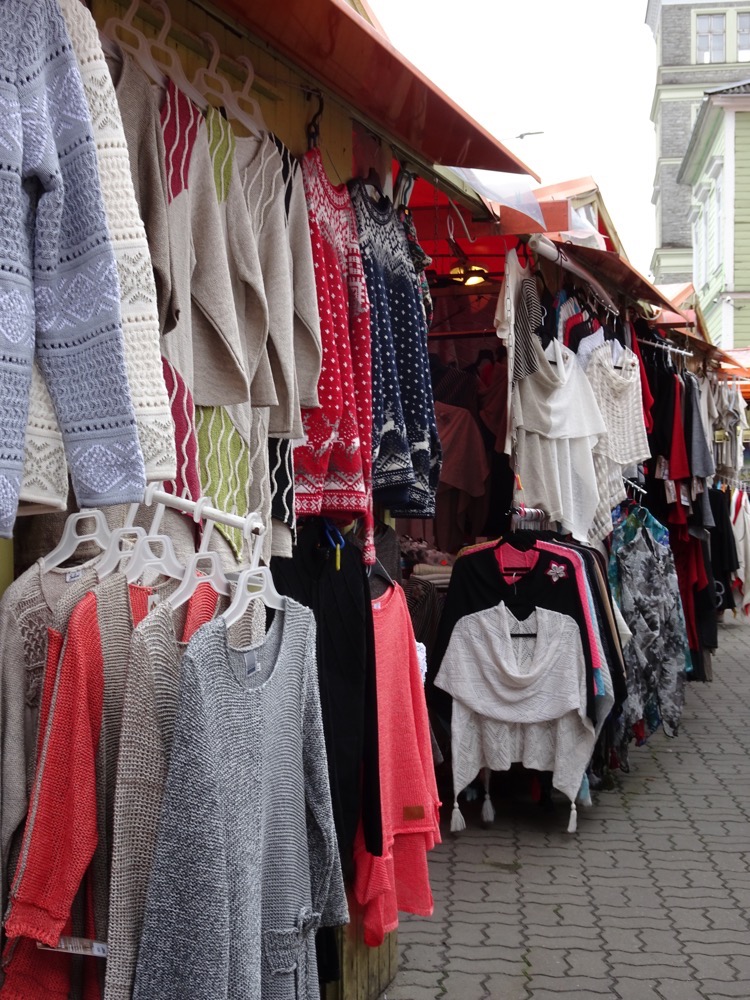
We went for a bit of a wander through the lower Old Town area in the afternoon, which afforded some beautiful examples of gloriously textured old buildings…
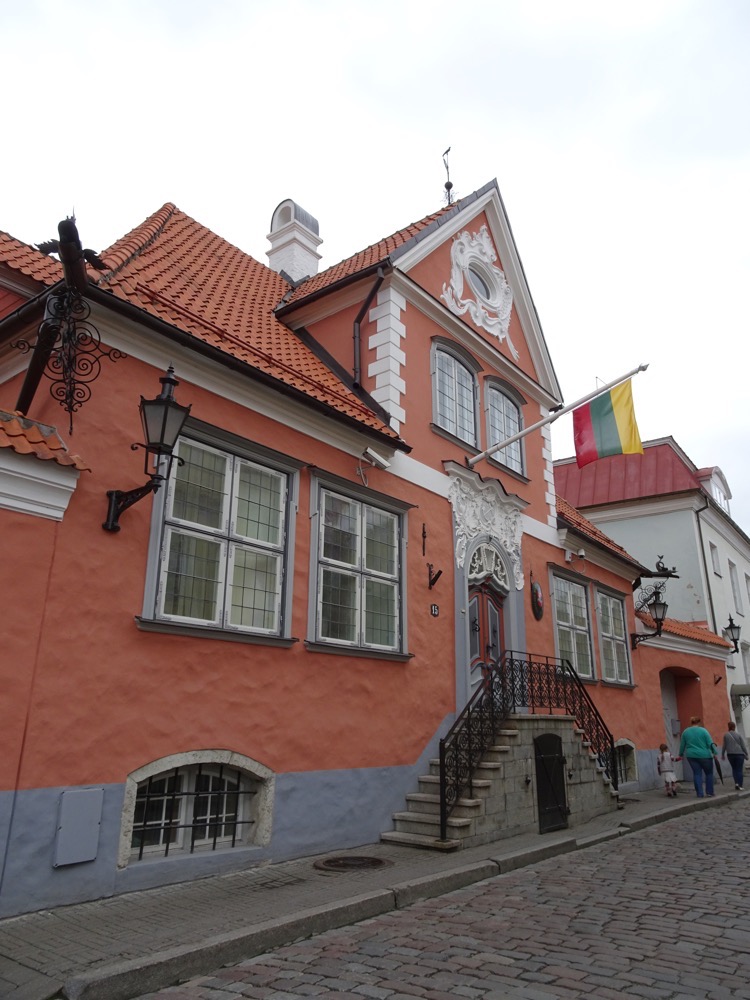 A Medieval merchant’s home.
A Medieval merchant’s home. Tomb’s on the outer wall of St Catherine’s Church (or should I say another St Catherine’s Church).
Tomb’s on the outer wall of St Catherine’s Church (or should I say another St Catherine’s Church). Katariina Kakik – St Catherine’s Alley
Katariina Kakik – St Catherine’s Alley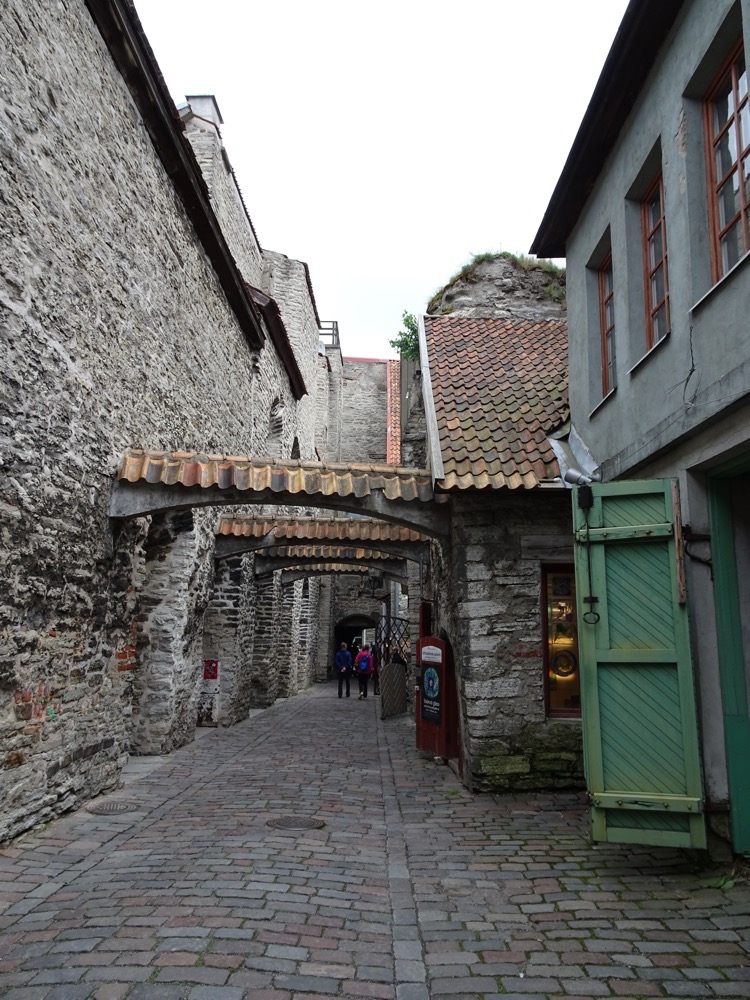
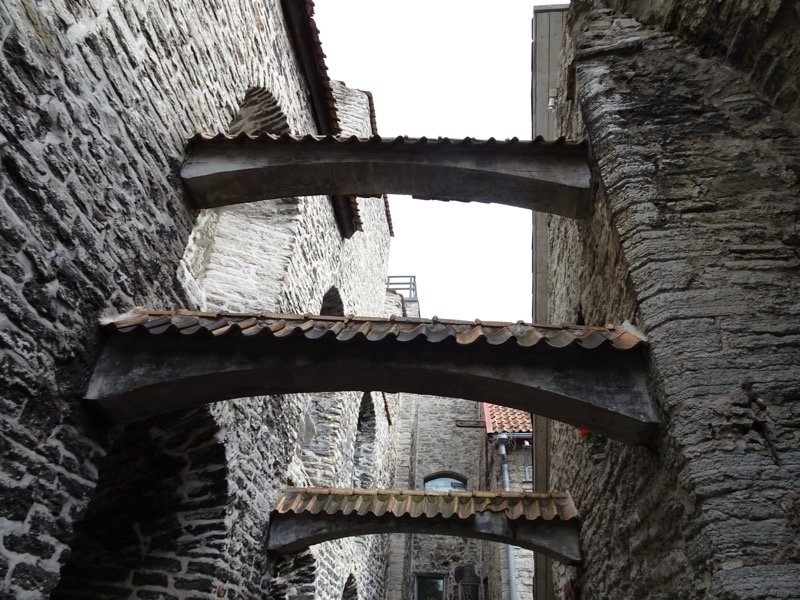 Wandered through the artsy fartsy section of the old town – glass blowers:
Wandered through the artsy fartsy section of the old town – glass blowers:
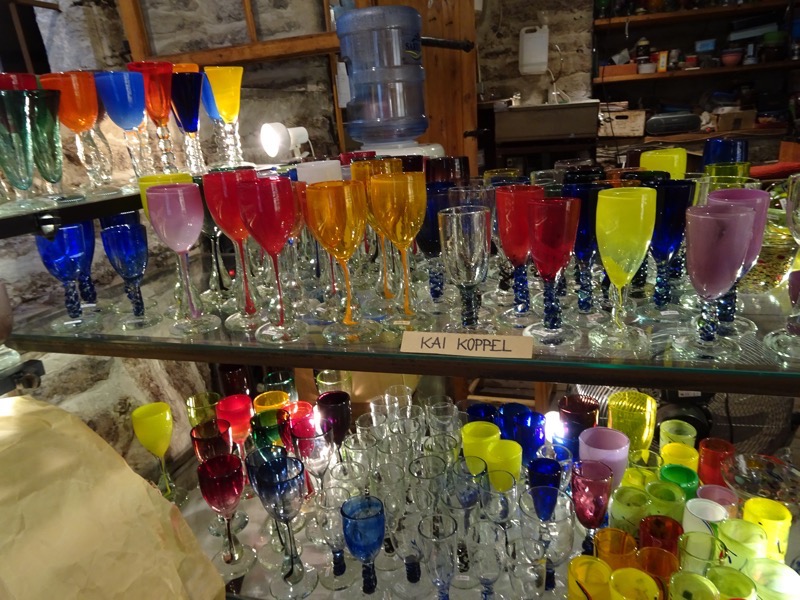
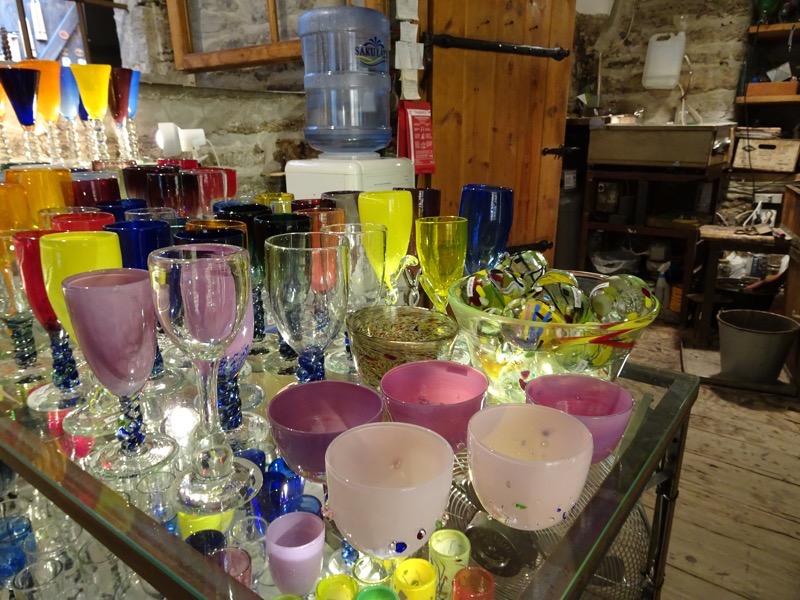 Timber workers:
Timber workers:  Loads of buttons made of juniper, applewood, ash, birch etc. Smelled amazing.
Loads of buttons made of juniper, applewood, ash, birch etc. Smelled amazing.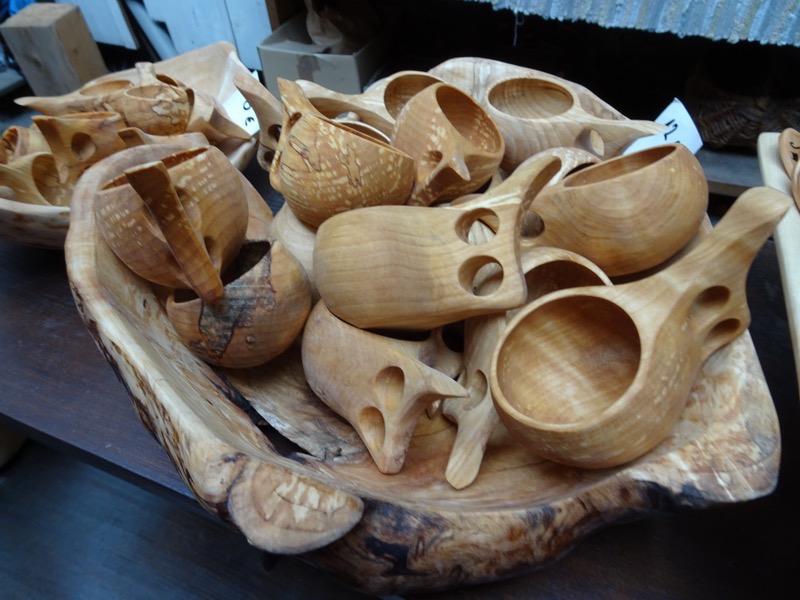 Traditional wooden cups and ladles:
Traditional wooden cups and ladles: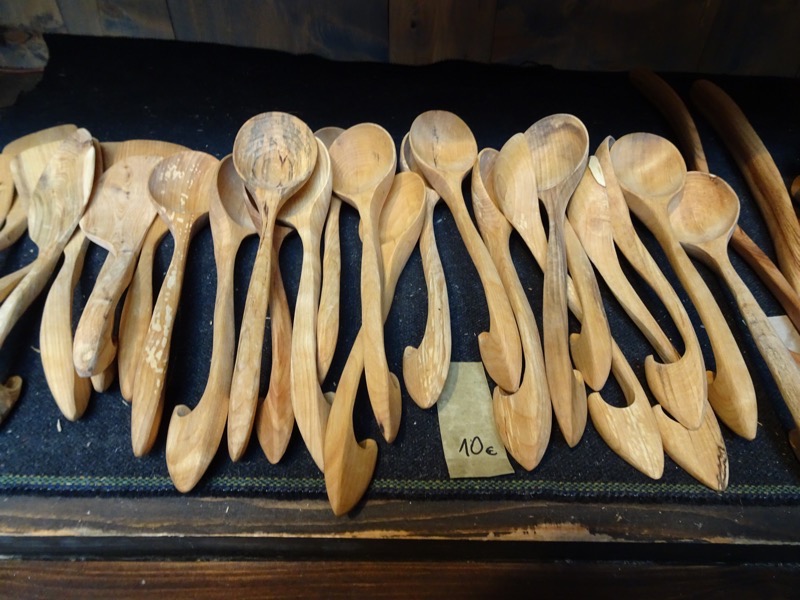 The original medieval fortress walls and gatehouses of the Old Town.
The original medieval fortress walls and gatehouses of the Old Town. 
Rickety and uneven stairway up to the walkway above the city gates.
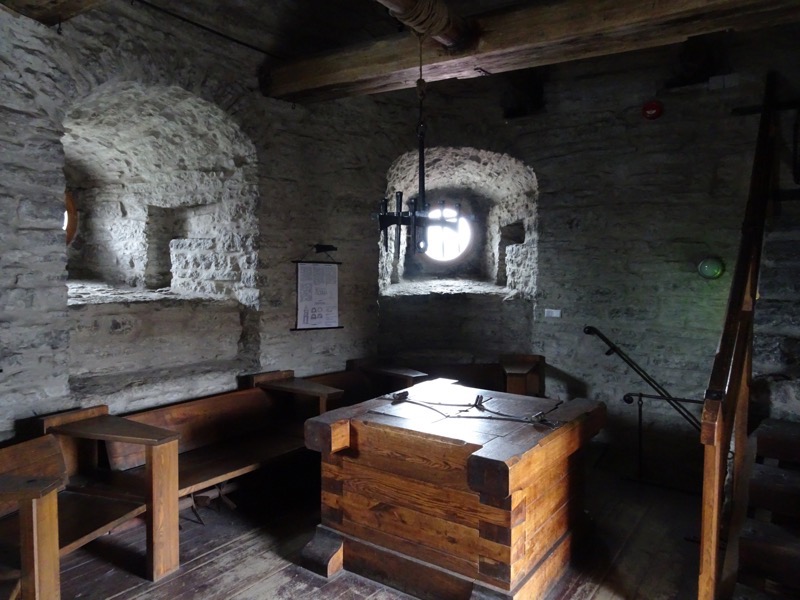 The nice and stable Medieval walkways of the walled city.
The nice and stable Medieval walkways of the walled city.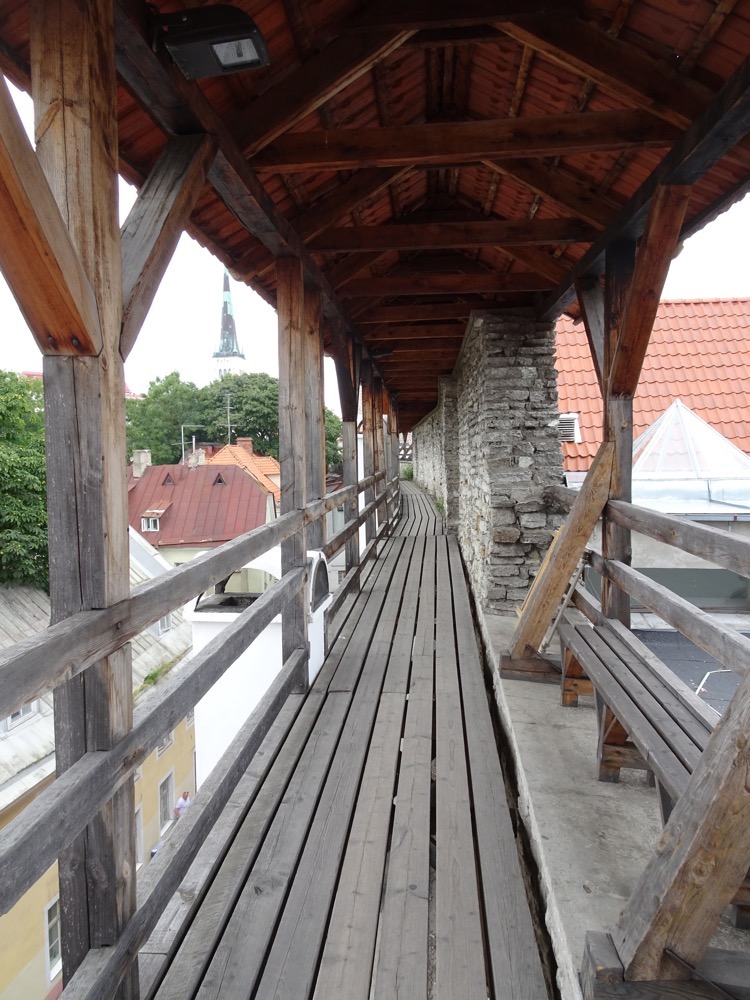
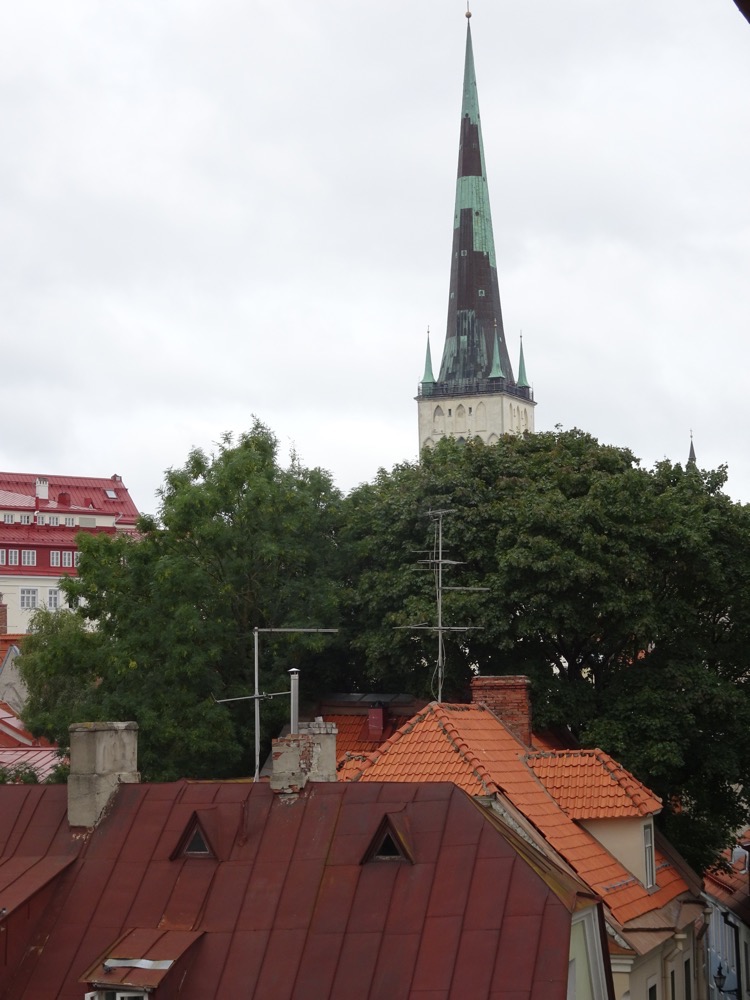

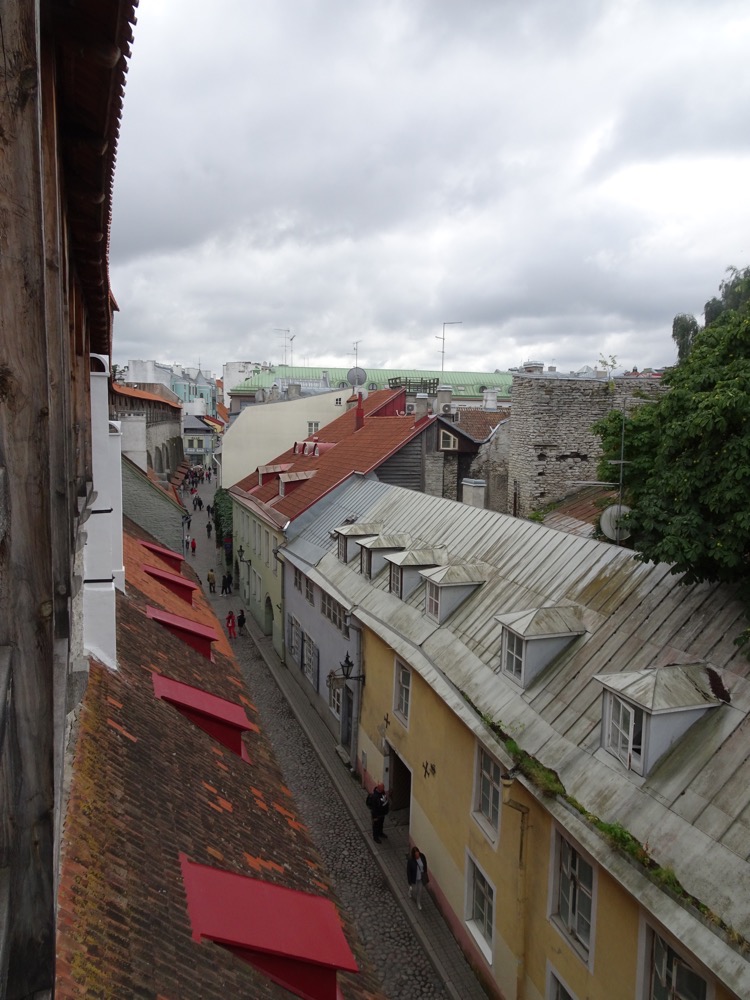 Over the roof tops from the medieval walled walkways.
Over the roof tops from the medieval walled walkways.
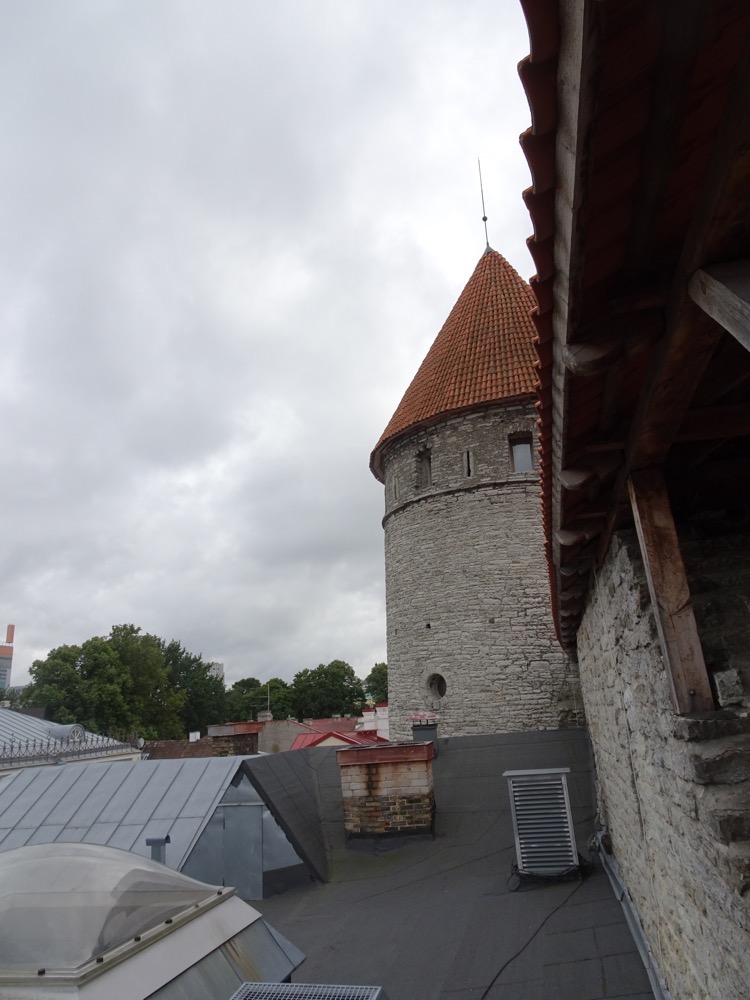 Arrowslit fortifications.
Arrowslit fortifications.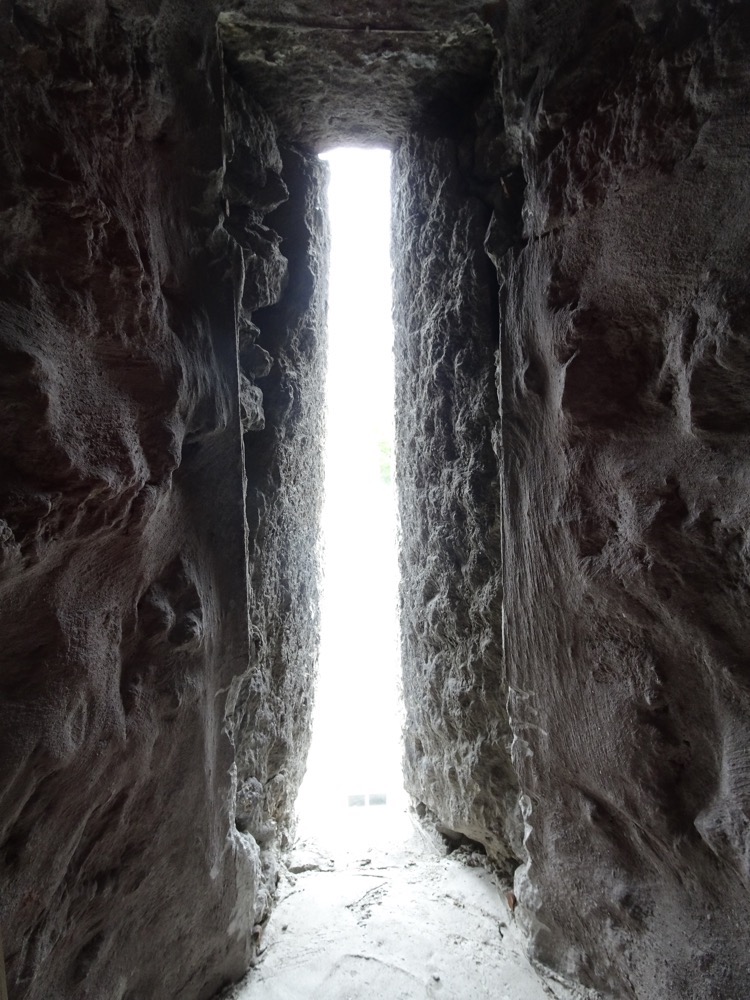 View out a window from the Medieval gate house.
View out a window from the Medieval gate house.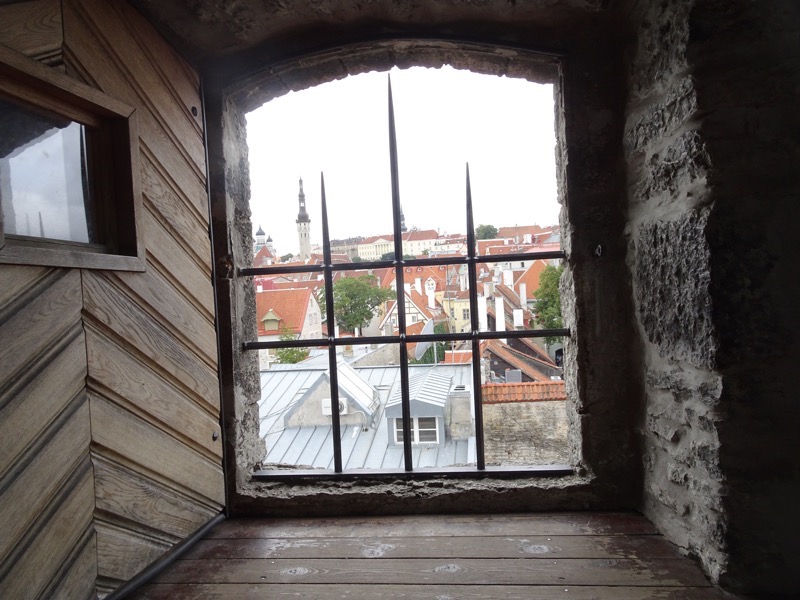 More textiles shopping markets along the fortress walls. The Old Town of Tallinn certainly is a good example of a Medieval city – I think it probably rivals Toledo for having that ‘medieval feel about it’. It’s beautiful and I am now more determined to visit Dubrovnik one day (no segue, it’s just on my list!).
More textiles shopping markets along the fortress walls. The Old Town of Tallinn certainly is a good example of a Medieval city – I think it probably rivals Toledo for having that ‘medieval feel about it’. It’s beautiful and I am now more determined to visit Dubrovnik one day (no segue, it’s just on my list!).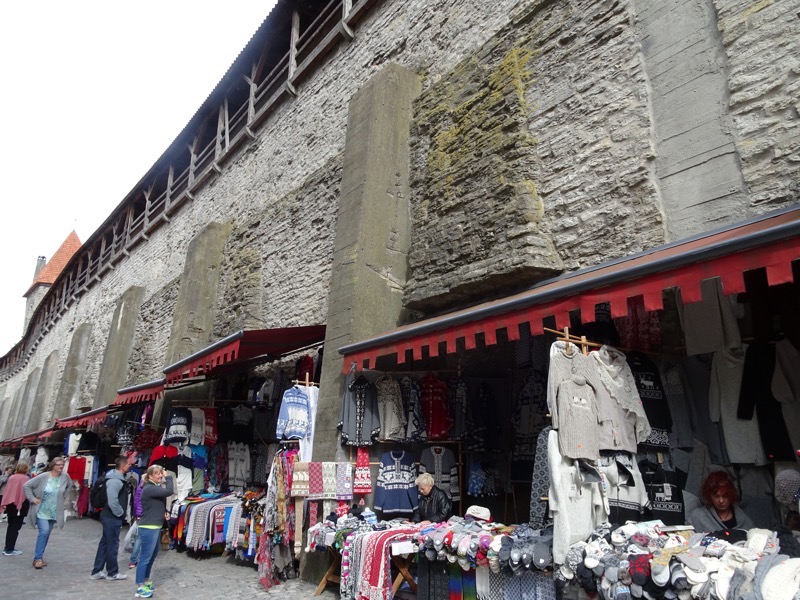 The Viru Gate at the end of Viru Street.
The Viru Gate at the end of Viru Street.
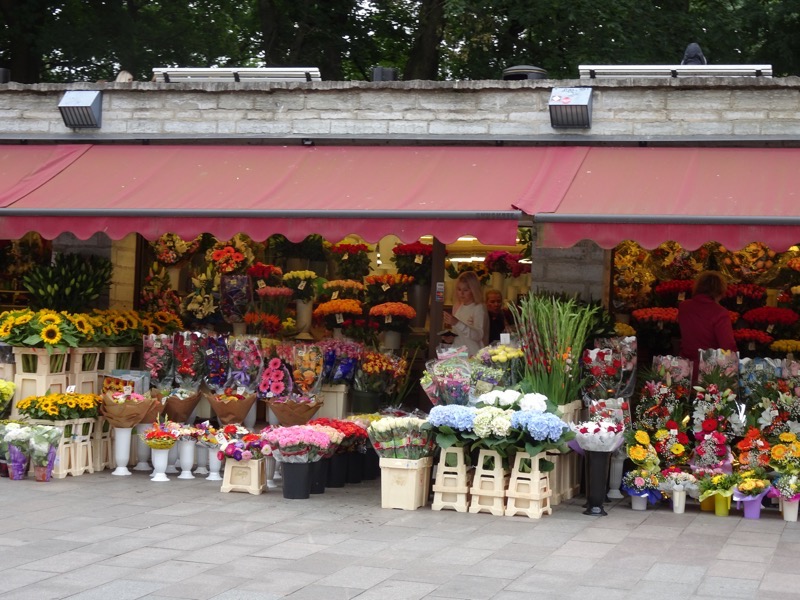
We had a lovely day out in Tallinn, but in the interests of self-preservation – we have two full on days in St Petersburg coming up! – and the fact the ship was due to leave at 1630, we didn’t really have time to go enjoy some of the local food and drink etc. Though Mr K did get to ride on the first ever driverless bus we have ever seen… it was a dinky little thing that is doing runs back and forth along a set route, but it does navigate live intersections with other vehicles. He was very excited – more than one should be by a self-driving bus imo… but there you have it! 😉


 Rostock is the largest city in the northern German state of Mecklenburg-Vorpommern, located on the Warnow River. It is a beautiful university town, with the University of Rostock at its centre having been founded in the early 1400s.
Rostock is the largest city in the northern German state of Mecklenburg-Vorpommern, located on the Warnow River. It is a beautiful university town, with the University of Rostock at its centre having been founded in the early 1400s. Right next to this centre part of town is the St Marien Church. With buildings across narrow streets right beside this church on every side, it is very difficult to stand back far enough to take a photo of the outside of the building – but it is a stunning and very significant church having been built in 1230 and it contains a unique medieval astronomical clock.
Right next to this centre part of town is the St Marien Church. With buildings across narrow streets right beside this church on every side, it is very difficult to stand back far enough to take a photo of the outside of the building – but it is a stunning and very significant church having been built in 1230 and it contains a unique medieval astronomical clock. Stained glass in the southern portal windows depicting “Christ as the Judge of the World”. Tirolean stained glass painting. c.1904.
Stained glass in the southern portal windows depicting “Christ as the Judge of the World”. Tirolean stained glass painting. c.1904.  Wing of the Our Lady Altar, the painting depicting scenes from the passion of Christ. (c1430-1440AD).
Wing of the Our Lady Altar, the painting depicting scenes from the passion of Christ. (c1430-1440AD).
 The Prince’s Gallery and pipe organ were added in 1749-1751 for Duke Christian Ludwig II who reigned at this period. The two-storey organ was Rostock local, Paul Schmidt, however from the outset, the instrument was deemed wheezy and it needed considerable restoration work as early as 1791. The present organ dates from 1938 and was made in Frankfurt. It is a 4-manual siding chest organ with electro-pneumatic action and 83 stops with 4 free combinations (which no doubt means something to someone, but very little to me). It certainly is quite an impressive work of art.
The Prince’s Gallery and pipe organ were added in 1749-1751 for Duke Christian Ludwig II who reigned at this period. The two-storey organ was Rostock local, Paul Schmidt, however from the outset, the instrument was deemed wheezy and it needed considerable restoration work as early as 1791. The present organ dates from 1938 and was made in Frankfurt. It is a 4-manual siding chest organ with electro-pneumatic action and 83 stops with 4 free combinations (which no doubt means something to someone, but very little to me). It certainly is quite an impressive work of art.
 Both the organ, the Prince’s Gallery, and the pulpit which was added around the same time have been executed in a soft olive green with gilded accents to maintain a singular colour scheme with the main altar.
Both the organ, the Prince’s Gallery, and the pulpit which was added around the same time have been executed in a soft olive green with gilded accents to maintain a singular colour scheme with the main altar. The main altar was created by cabinet maker Kahlert and painters Hohenschildt, Marggraf and Bromann.
The main altar was created by cabinet maker Kahlert and painters Hohenschildt, Marggraf and Bromann. Behind the main altar is the most extraordinary astronomical clock that was made in 1472, attributed to master clockmaker Hans Duringer. Before this, Duringer made the Danzig Clock at St Mary’s in Danzig, which together with the Rostock Clock makes the ‘Baltic Clock Family’. This clock in Rostock is the only one that still has its medieval clockworks, which are still in working order. From 1641-1643, it was renovated and extended, figures were changed and a carillon was added. The latest restoration occurred between 1974 and 1977.
Behind the main altar is the most extraordinary astronomical clock that was made in 1472, attributed to master clockmaker Hans Duringer. Before this, Duringer made the Danzig Clock at St Mary’s in Danzig, which together with the Rostock Clock makes the ‘Baltic Clock Family’. This clock in Rostock is the only one that still has its medieval clockworks, which are still in working order. From 1641-1643, it was renovated and extended, figures were changed and a carillon was added. The latest restoration occurred between 1974 and 1977. The clock consists of a calendarium and a clock face, figures of the apostles stand in niches at the top, and Christ is depicted in the middle. At midday and midnight, one of the apolstlyst walks from right to left and the carillon plays at ever other hour.
The clock consists of a calendarium and a clock face, figures of the apostles stand in niches at the top, and Christ is depicted in the middle. At midday and midnight, one of the apolstlyst walks from right to left and the carillon plays at ever other hour. The field below shows the time of day, the zodiac with the appropriate month sign, the position of the sun, and the phases of the moon. The calendarium is approximately 2m in diameter and revolves 360 degrees one every year.
The field below shows the time of day, the zodiac with the appropriate month sign, the position of the sun, and the phases of the moon. The calendarium is approximately 2m in diameter and revolves 360 degrees one every year.  Carved figures supporting the calendarium.
Carved figures supporting the calendarium. In the northern portal is this spectacular triptych altar piece.
In the northern portal is this spectacular triptych altar piece.

 Fountain in the Rostock University Square.
Fountain in the Rostock University Square.
 The Kropelin Gate is a magnificent fortification gate built in 1280, one of 22 former city gates. Now the ultra modern KTC shopping center sits incongruously right beside it!
The Kropelin Gate is a magnificent fortification gate built in 1280, one of 22 former city gates. Now the ultra modern KTC shopping center sits incongruously right beside it! View from the top of the Kropelin Gate… below are part of the medieval walled fortress.
View from the top of the Kropelin Gate… below are part of the medieval walled fortress.

 Canon balls.
Canon balls.

 Kropelin Gate.
Kropelin Gate. After wandering Rostock a little more and doing some shopping, the weather started to come in. Normally when this happens, I head for a museum, and Rostock has an excellent museum – the Kulturhistorisches Museum of Rostock. Unfortunately for us, it’s a Monday and that means, (in the habitually annoying habit of museums the world over), that all the museums in the town were unhappily closed today. Instead, we decided to head back to Warnemunde to find a nice German pub to warm up and to find a couple of pints and maybe some schnitzel… as you do!
After wandering Rostock a little more and doing some shopping, the weather started to come in. Normally when this happens, I head for a museum, and Rostock has an excellent museum – the Kulturhistorisches Museum of Rostock. Unfortunately for us, it’s a Monday and that means, (in the habitually annoying habit of museums the world over), that all the museums in the town were unhappily closed today. Instead, we decided to head back to Warnemunde to find a nice German pub to warm up and to find a couple of pints and maybe some schnitzel… as you do! I honestly thought I was ordering a chicken fillet burger of some sort… the menu said: ‘hamburger chicken schnitzel) – turned out to be chicken schnitzel with potato and an egg on it! Delicious still.
I honestly thought I was ordering a chicken fillet burger of some sort… the menu said: ‘hamburger chicken schnitzel) – turned out to be chicken schnitzel with potato and an egg on it! Delicious still. The canals of Warnemunde.
The canals of Warnemunde.

 A quaint little fountain I found in a back street… I could find no information on this and not being able to read the plaque that was situated beside it, it remains a mystery. 🙂
A quaint little fountain I found in a back street… I could find no information on this and not being able to read the plaque that was situated beside it, it remains a mystery. 🙂  European lock habits strike again.
European lock habits strike again.
 As luck would have it we have arrived in the area in the middle of the summer strawberry festival – I have never seen so many strawberry based products before… strawberry soft drink, strawberry liquor, strawberry hand creams and beauty products, strawberry confectionery and strawberry homewares!
As luck would have it we have arrived in the area in the middle of the summer strawberry festival – I have never seen so many strawberry based products before… strawberry soft drink, strawberry liquor, strawberry hand creams and beauty products, strawberry confectionery and strawberry homewares!






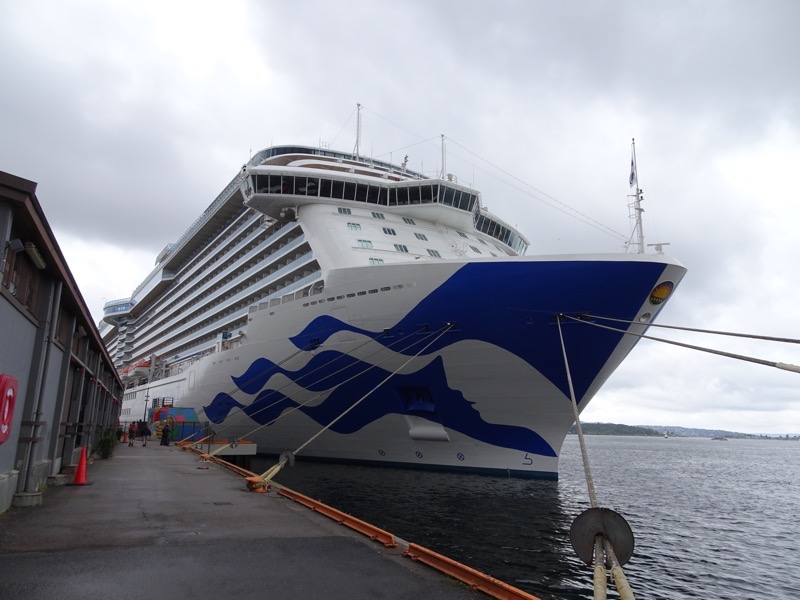
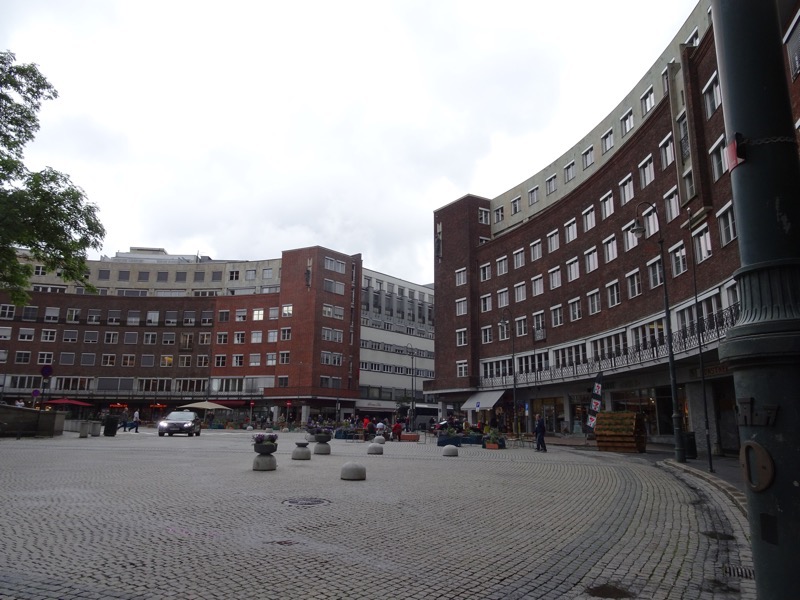 Oslo City Hall.
Oslo City Hall.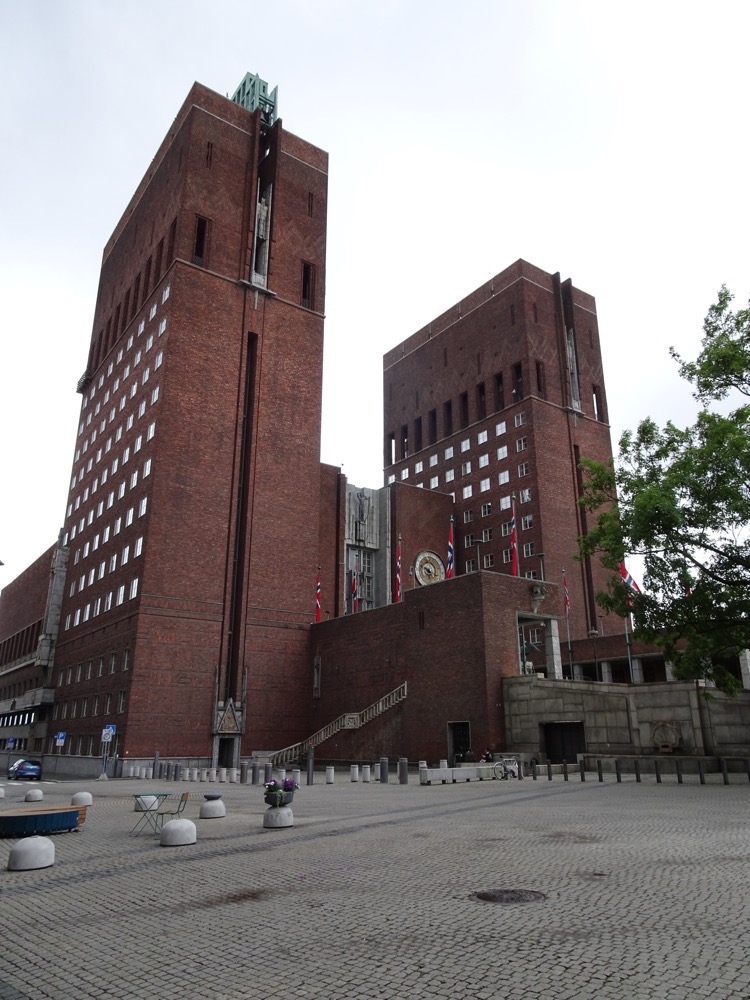
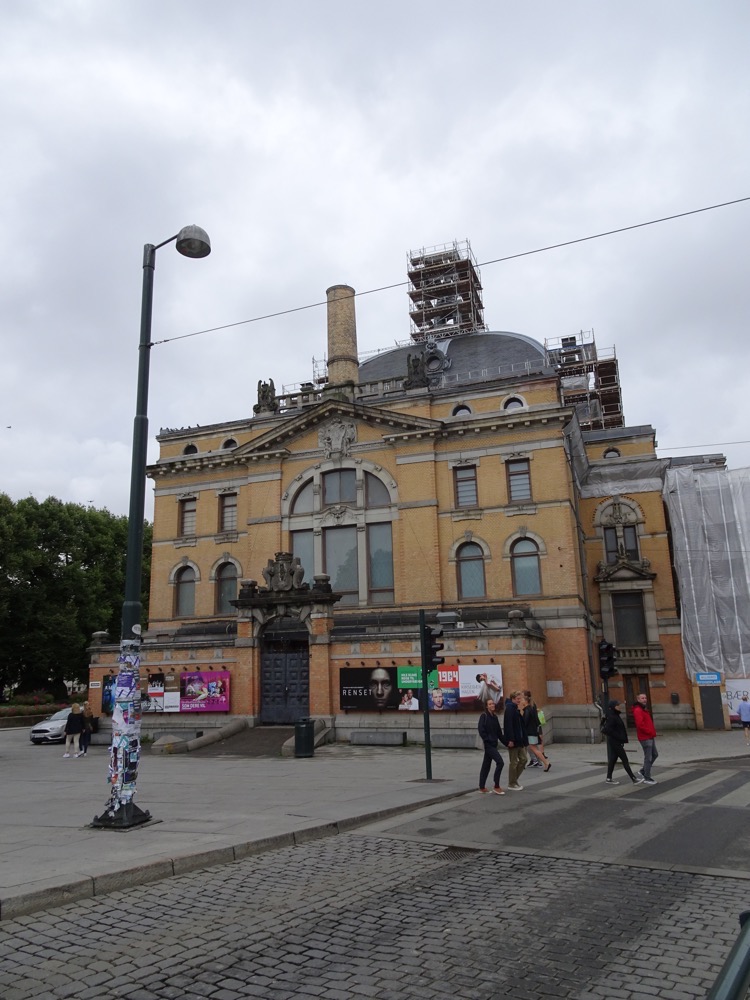 There are so many things to see in Oslo, and we have relatively little time, that we have had to be selective about what we were going to see. We started off the morning heading to Vigeland park, and after getting ever so slightly lost, we discovered a strikingly designed 80 hectare park with five distinctive formal garden spaces. The park showcasing over 200 sculptures created by renowned sculptor, Gustav Vigeland between 1924 and 1943… while the park itself is often referred to ‘Vigeland Park’, the term is actually a misnomer for the world’s largest sculptural installation from a single artist within Frogner Park. The figurative sculptures depict the various stages and elements of the human life cycle, from birth to death to everything in between.
There are so many things to see in Oslo, and we have relatively little time, that we have had to be selective about what we were going to see. We started off the morning heading to Vigeland park, and after getting ever so slightly lost, we discovered a strikingly designed 80 hectare park with five distinctive formal garden spaces. The park showcasing over 200 sculptures created by renowned sculptor, Gustav Vigeland between 1924 and 1943… while the park itself is often referred to ‘Vigeland Park’, the term is actually a misnomer for the world’s largest sculptural installation from a single artist within Frogner Park. The figurative sculptures depict the various stages and elements of the human life cycle, from birth to death to everything in between. 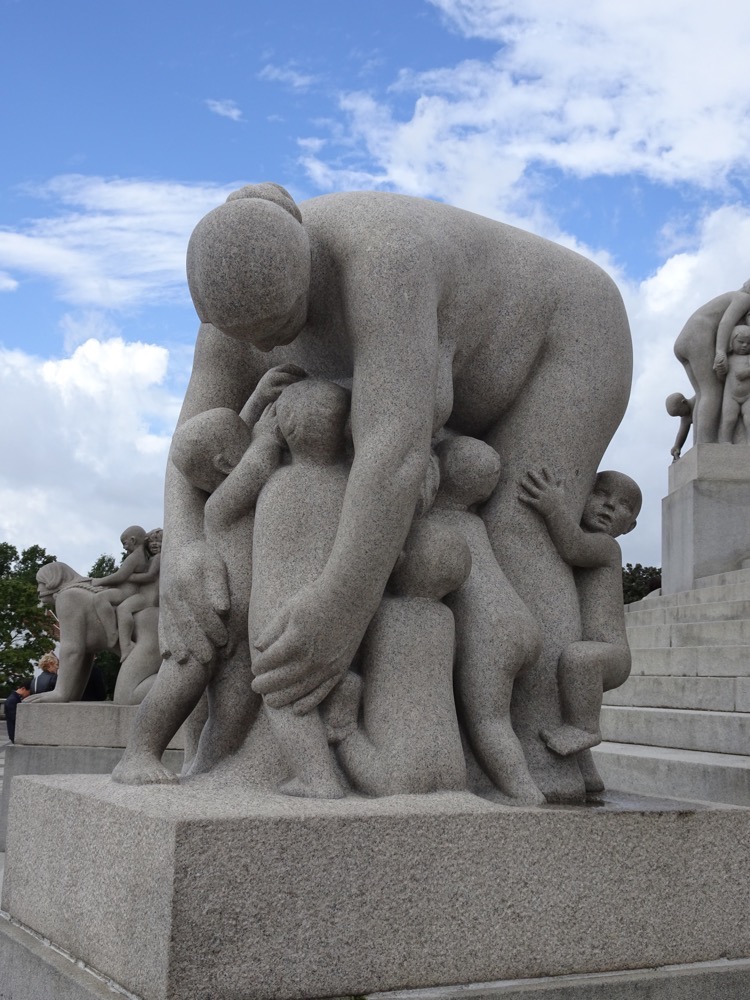
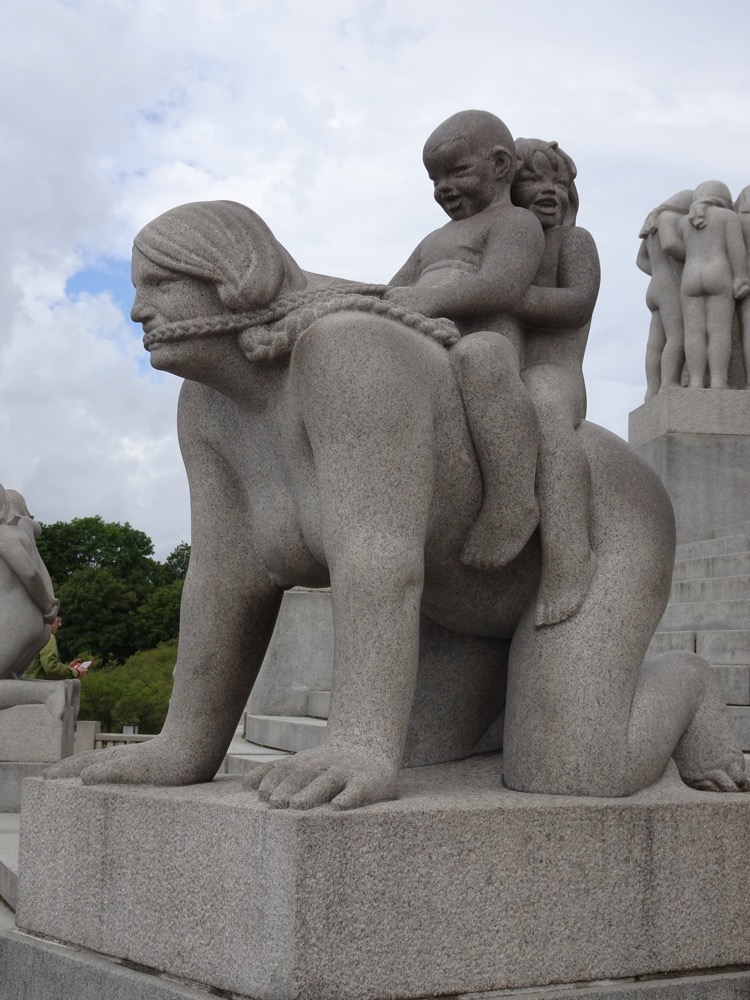 The Monolith at the center of the park.
The Monolith at the center of the park.
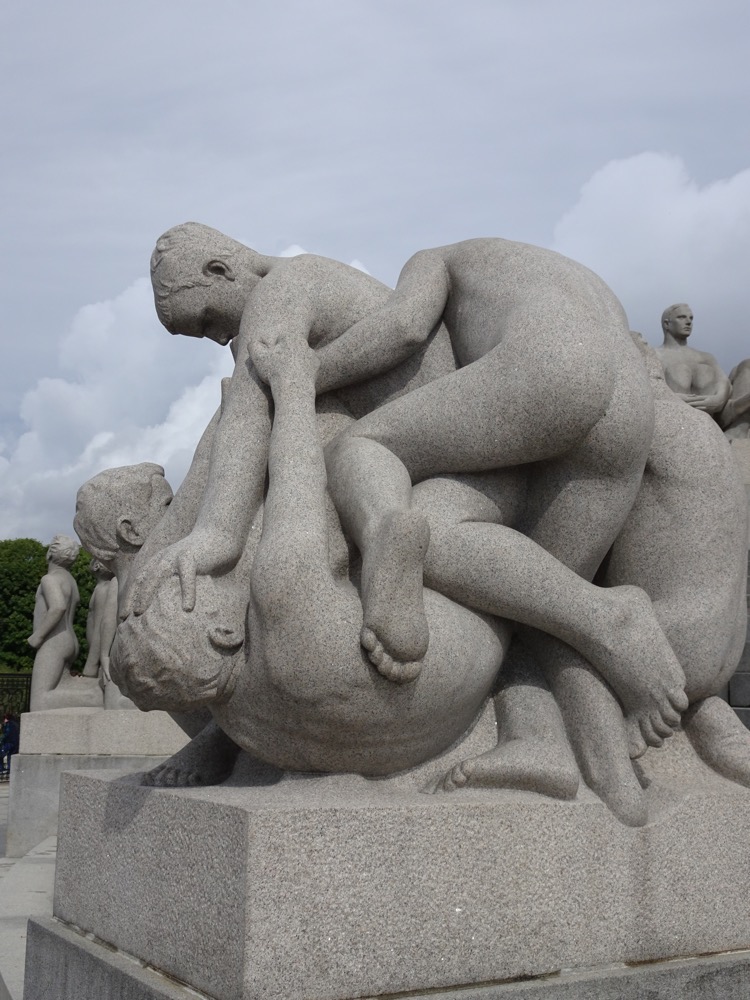

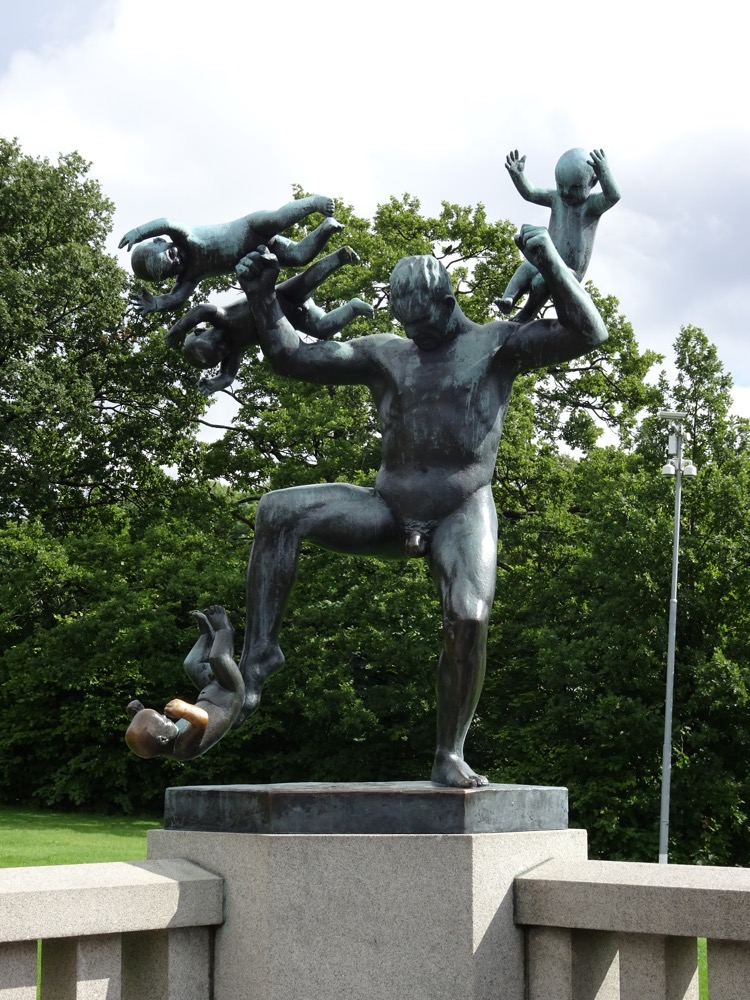
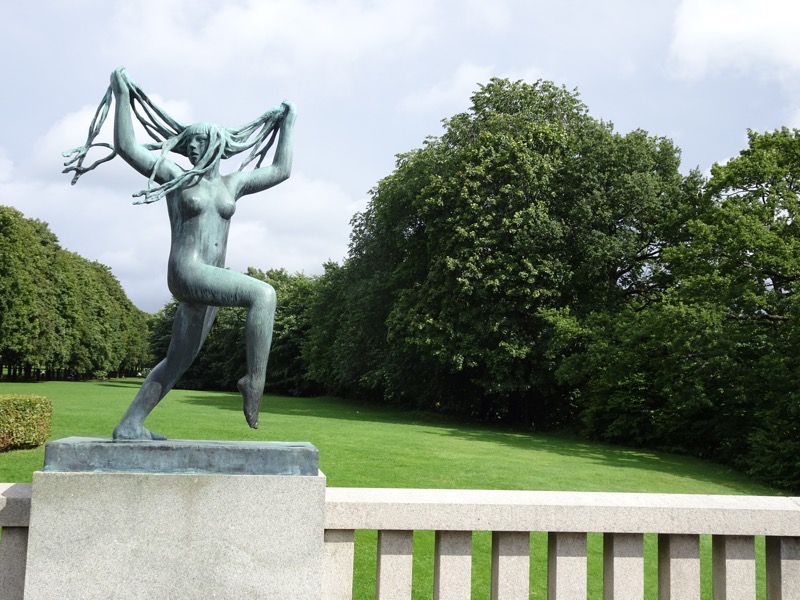

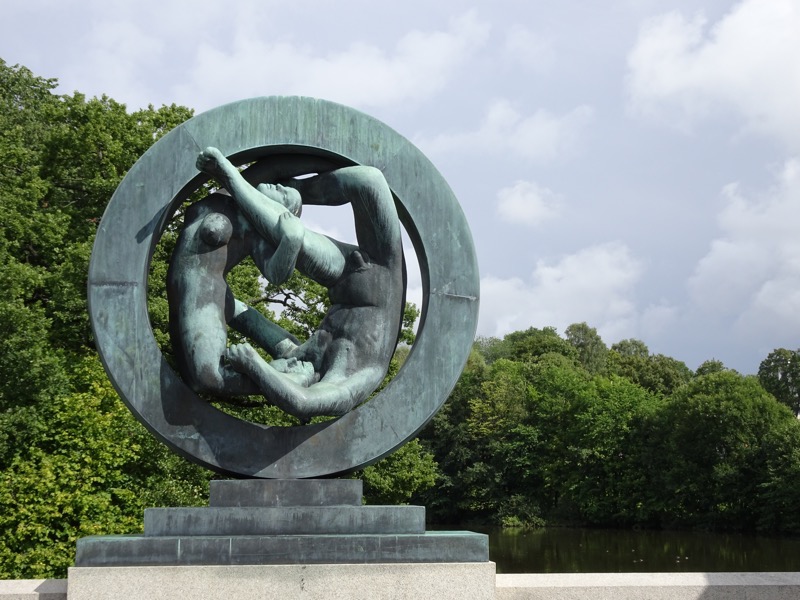
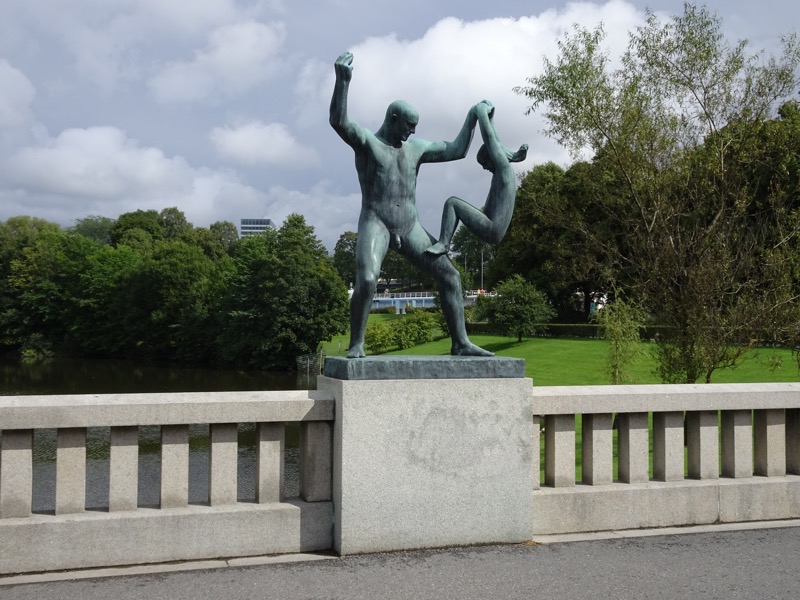
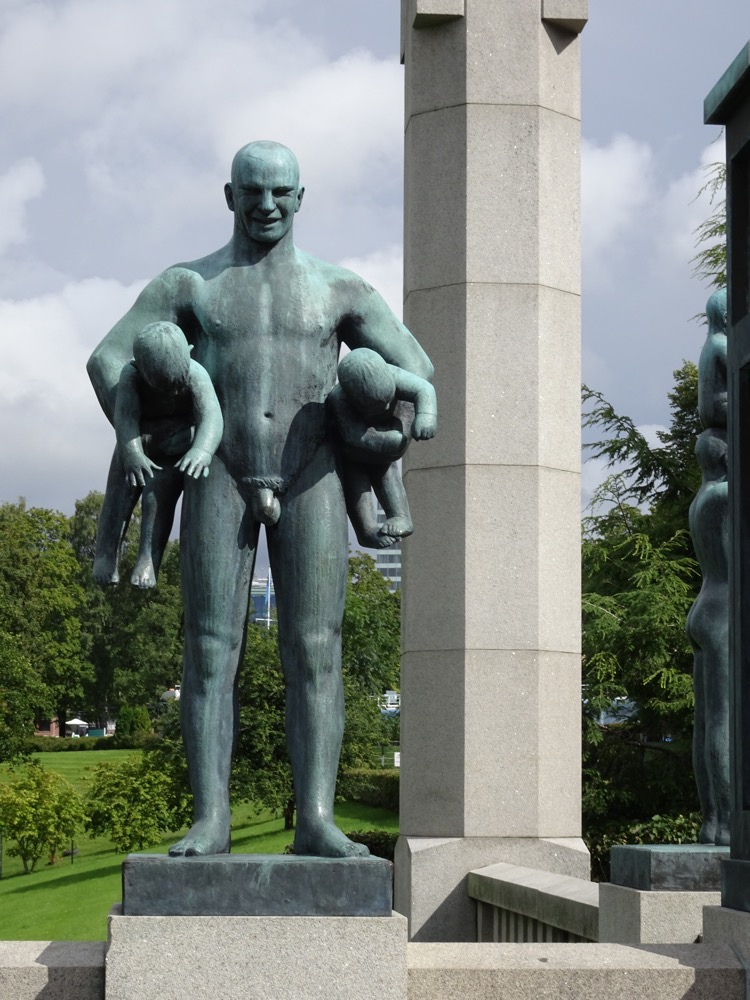
 The Oseberg ship, built around 820AD, is about 21.5m long and 5m wide. There are oar holes for 15 people on each side, so with a helmsman and a lookout, there would have been a crew of about 32 or so people. Built first, but discovered last, the Oseberg ship was excavated in 1904 and took three months to complete. Two wealthy women were buried in the Oseberg ship, and they were joined by a multitude of burial girls – personal items such as clothing, shoes, combs, ship equipment, kitchen utensils, farm equipment, large decorative sleds, a huge cart, carved animal heads, five beds and two tents … along with the fifteen horses, six dogs and two cows that had been sacrificed indicated just how important these two women were. The ship itself could be both sailed and rowed and it is a particularly grand and decorative ship. The owner would have spent considerable resources in having the ship made, and was definitely an item associated with the upper classes.
The Oseberg ship, built around 820AD, is about 21.5m long and 5m wide. There are oar holes for 15 people on each side, so with a helmsman and a lookout, there would have been a crew of about 32 or so people. Built first, but discovered last, the Oseberg ship was excavated in 1904 and took three months to complete. Two wealthy women were buried in the Oseberg ship, and they were joined by a multitude of burial girls – personal items such as clothing, shoes, combs, ship equipment, kitchen utensils, farm equipment, large decorative sleds, a huge cart, carved animal heads, five beds and two tents … along with the fifteen horses, six dogs and two cows that had been sacrificed indicated just how important these two women were. The ship itself could be both sailed and rowed and it is a particularly grand and decorative ship. The owner would have spent considerable resources in having the ship made, and was definitely an item associated with the upper classes.
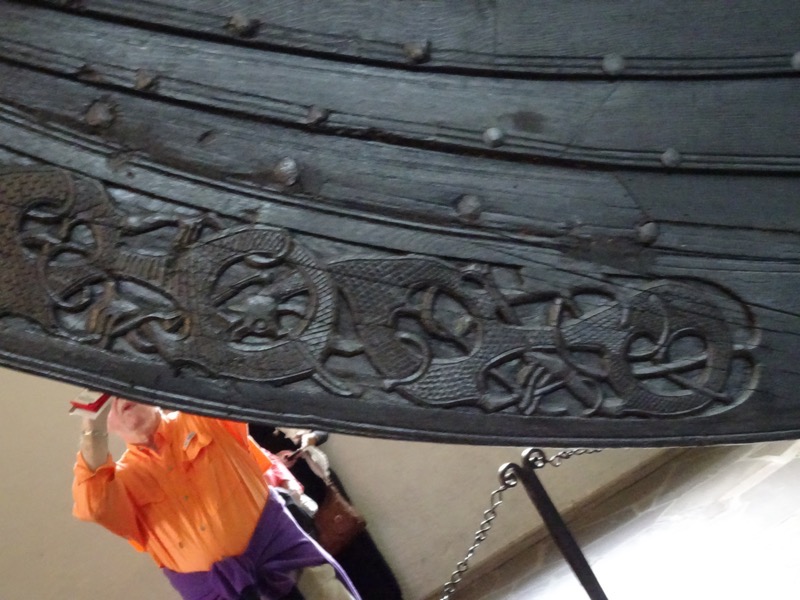

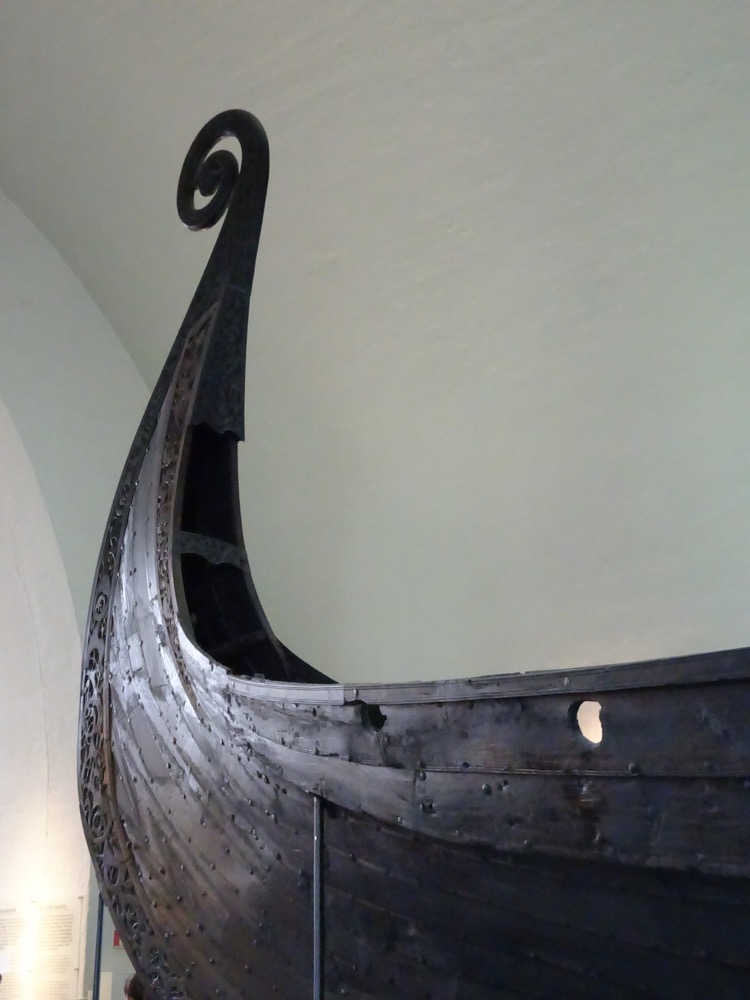
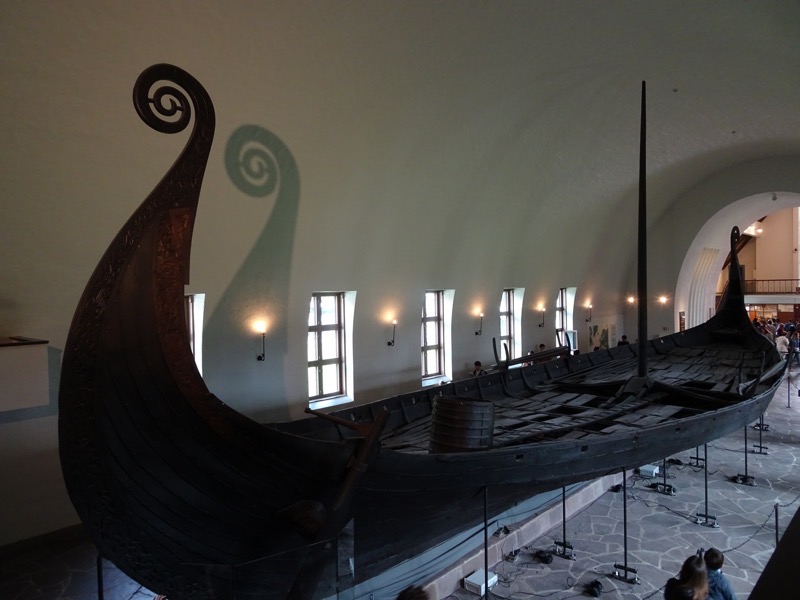

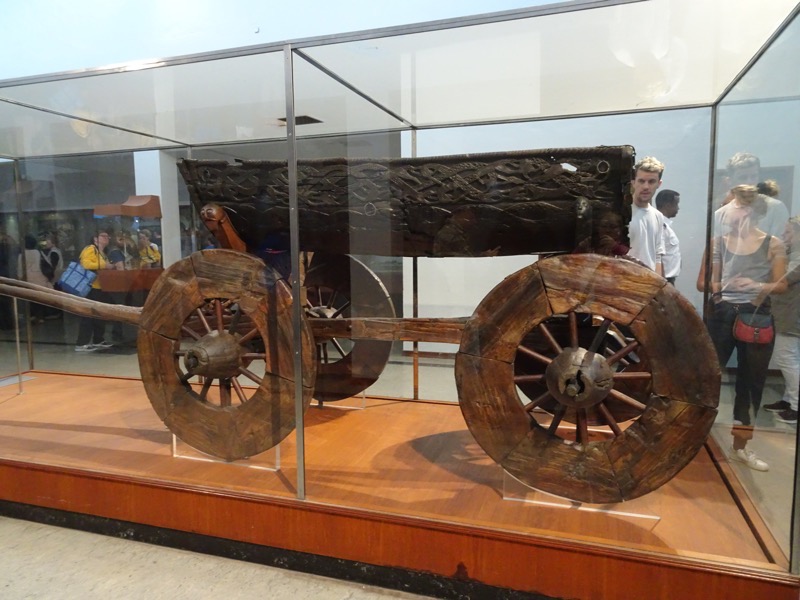
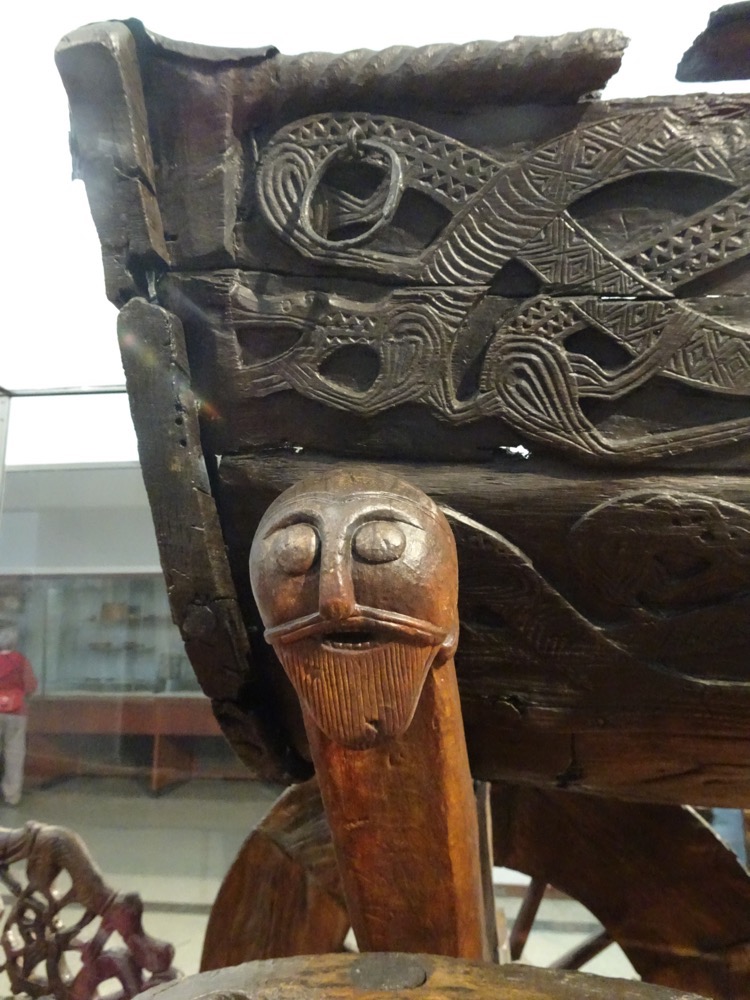
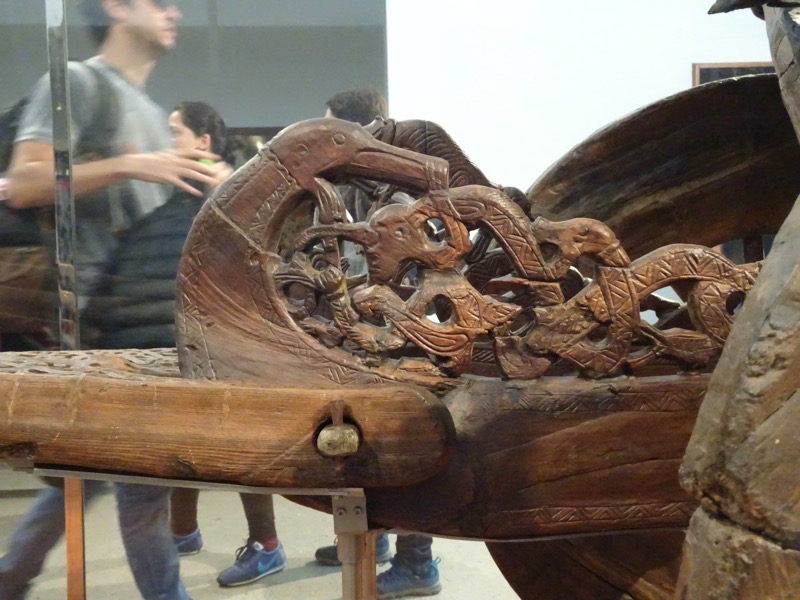
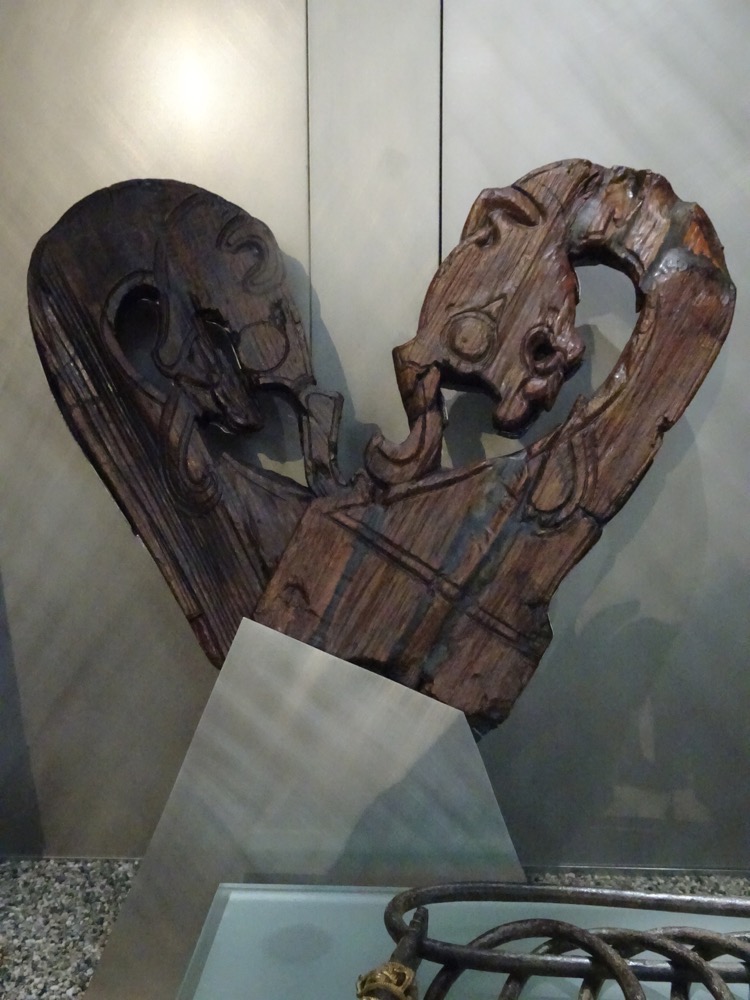 One of several carved animal heads found in the Oseberg grave – origin and purpose for which remains unknown.
One of several carved animal heads found in the Oseberg grave – origin and purpose for which remains unknown.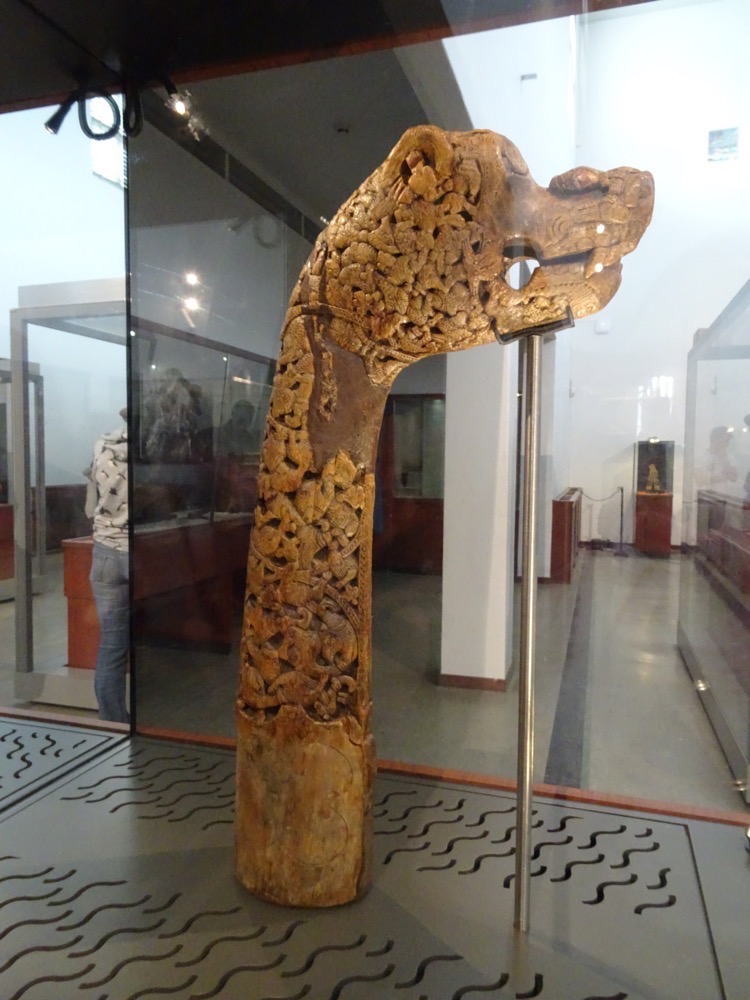 Oseberg chest.
Oseberg chest.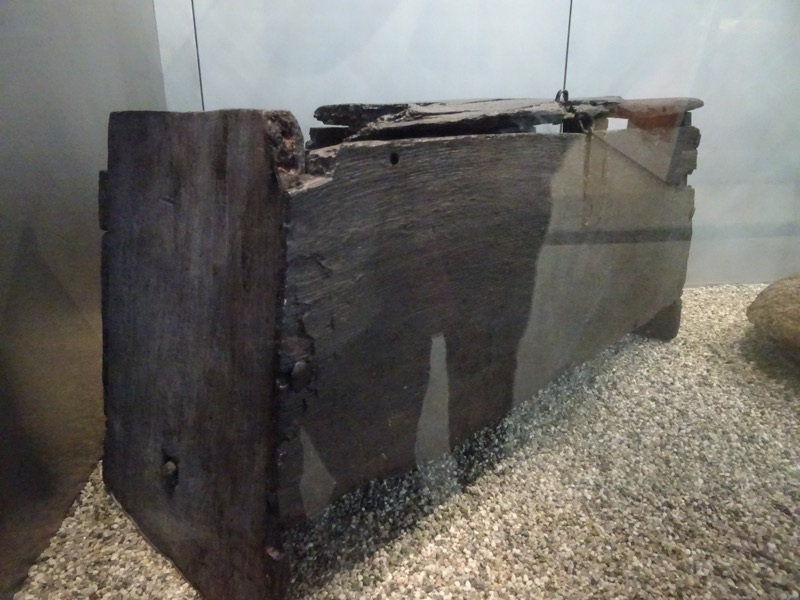
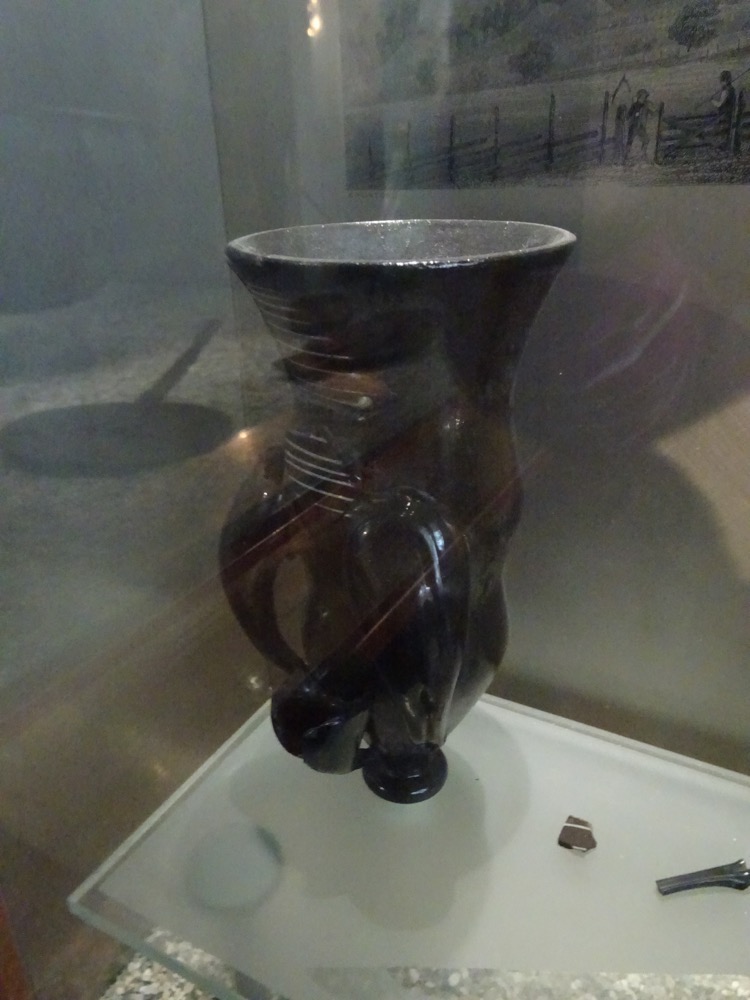
 Very odd enameled mount on a bucket handle. Bucket found in the Oseberg grave, but determined to be of Irish origin. I’m buggered if that doesn’t look like actual heraldry on something that was buried c.820AD.
Very odd enameled mount on a bucket handle. Bucket found in the Oseberg grave, but determined to be of Irish origin. I’m buggered if that doesn’t look like actual heraldry on something that was buried c.820AD.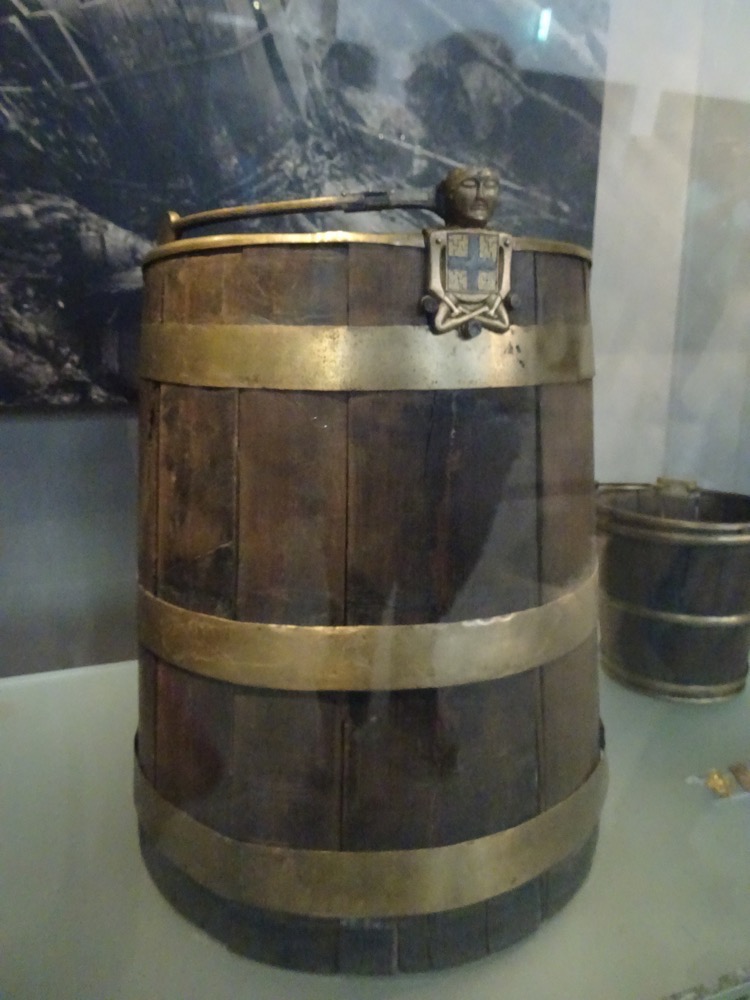


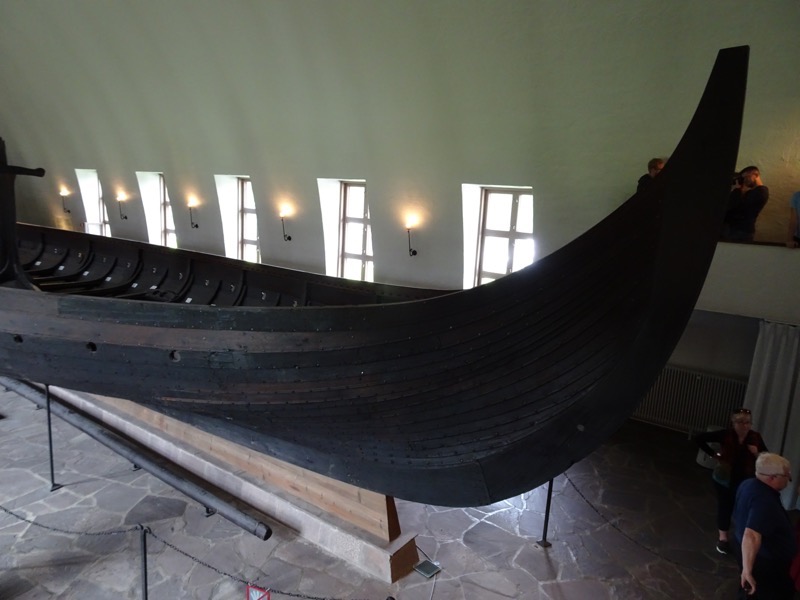
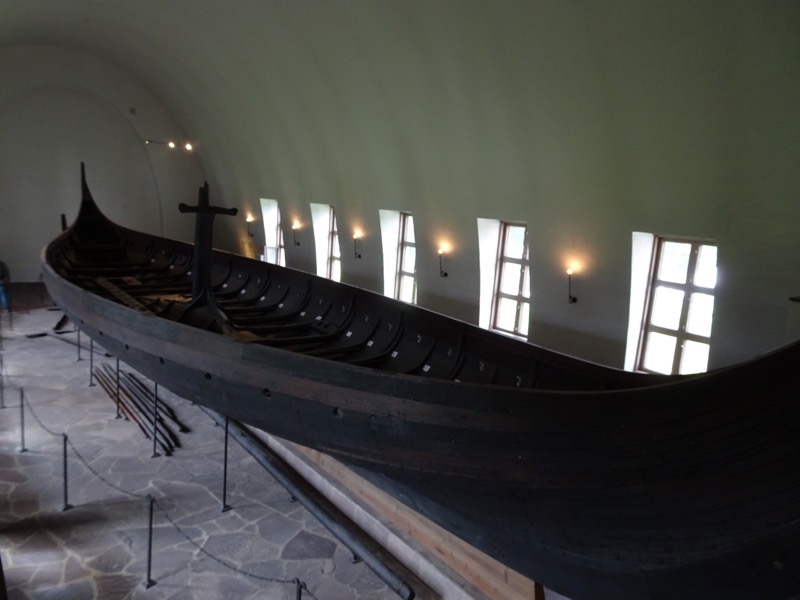
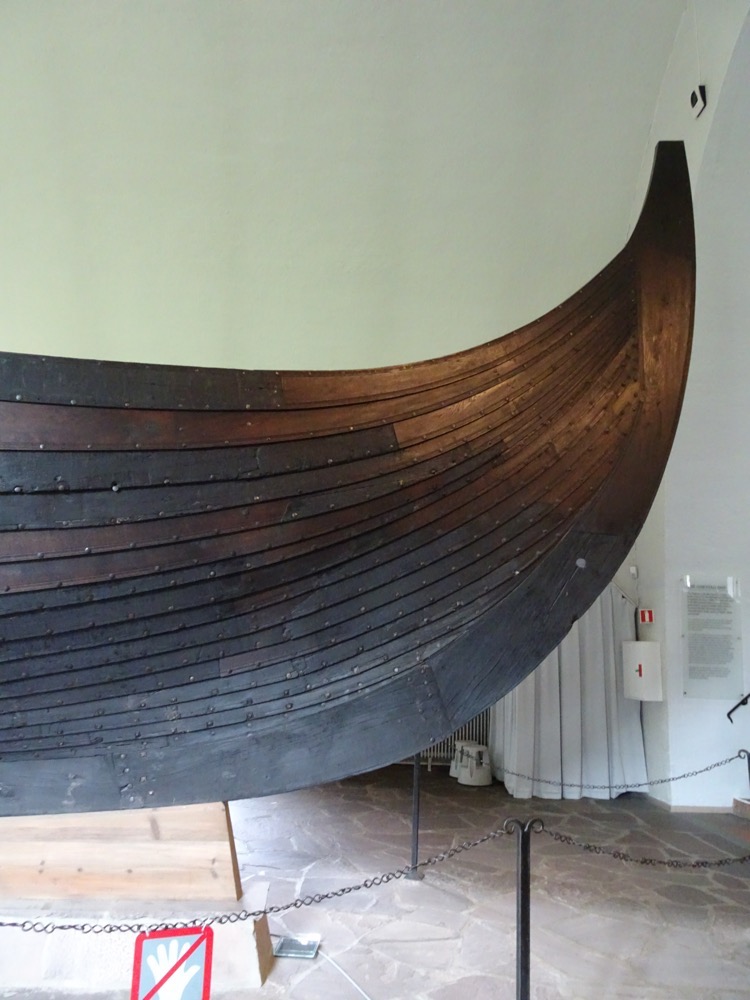
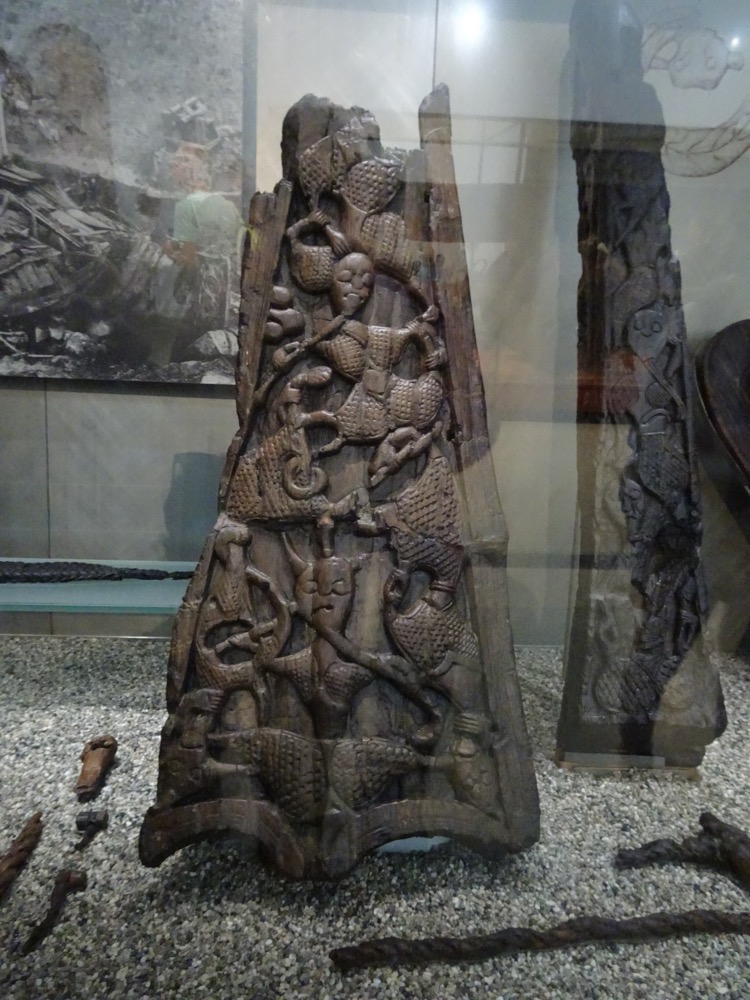
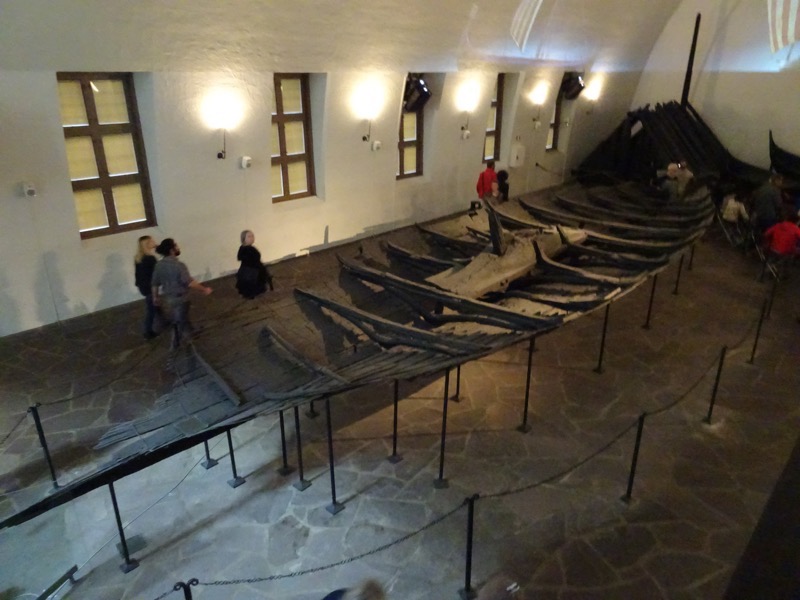 After the excitement of the Vikingskiphuset (we got there just at the right time while people were all busy having lunch, but it got very busy as we were leaving), we decided to swing by the open-air Norsk Folkemuseum (Norwegian Museum of Cultural History), primarily to see the only surviving wooden stave church in Oslo.
After the excitement of the Vikingskiphuset (we got there just at the right time while people were all busy having lunch, but it got very busy as we were leaving), we decided to swing by the open-air Norsk Folkemuseum (Norwegian Museum of Cultural History), primarily to see the only surviving wooden stave church in Oslo. 
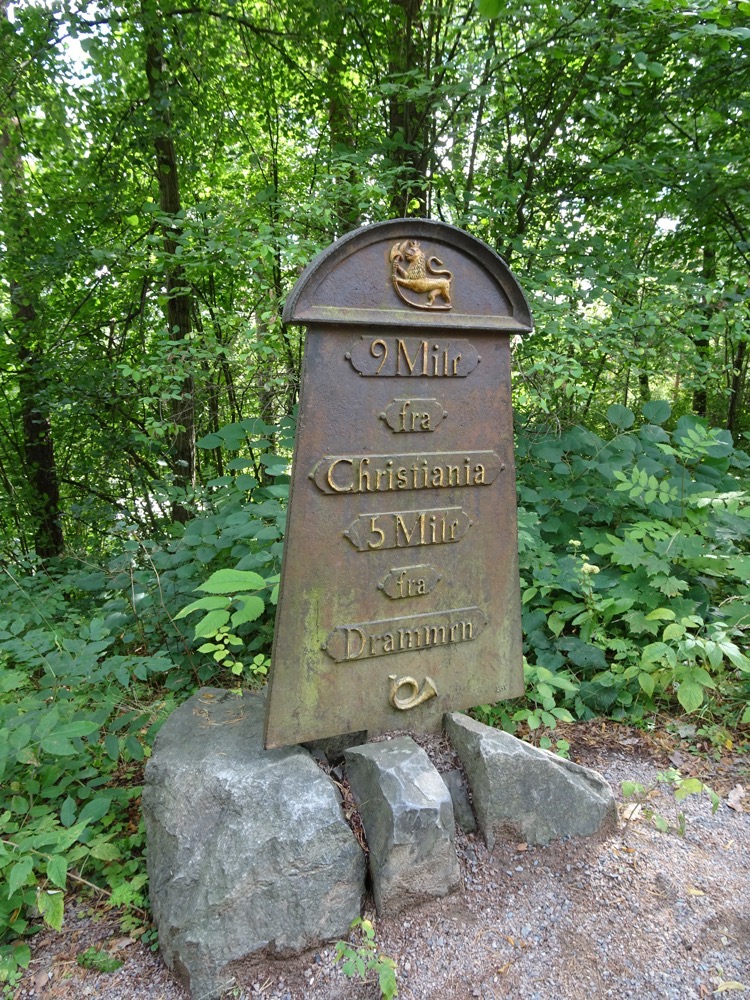
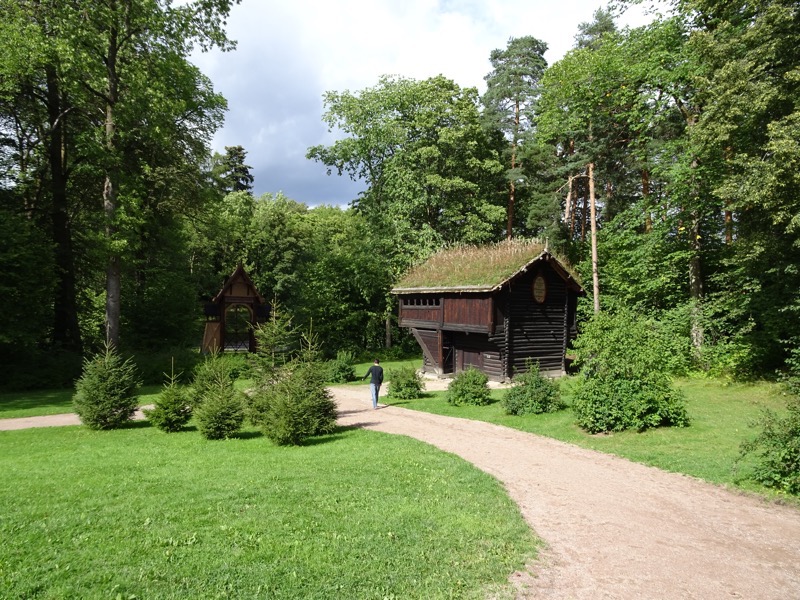 Dendrochronologically dated to the approximately 1157-1212AD, the Gol Stave Church (Gol stavkyrkje) is was originally located in the city of Gol, Hallingdal, Norway.
Dendrochronologically dated to the approximately 1157-1212AD, the Gol Stave Church (Gol stavkyrkje) is was originally located in the city of Gol, Hallingdal, Norway.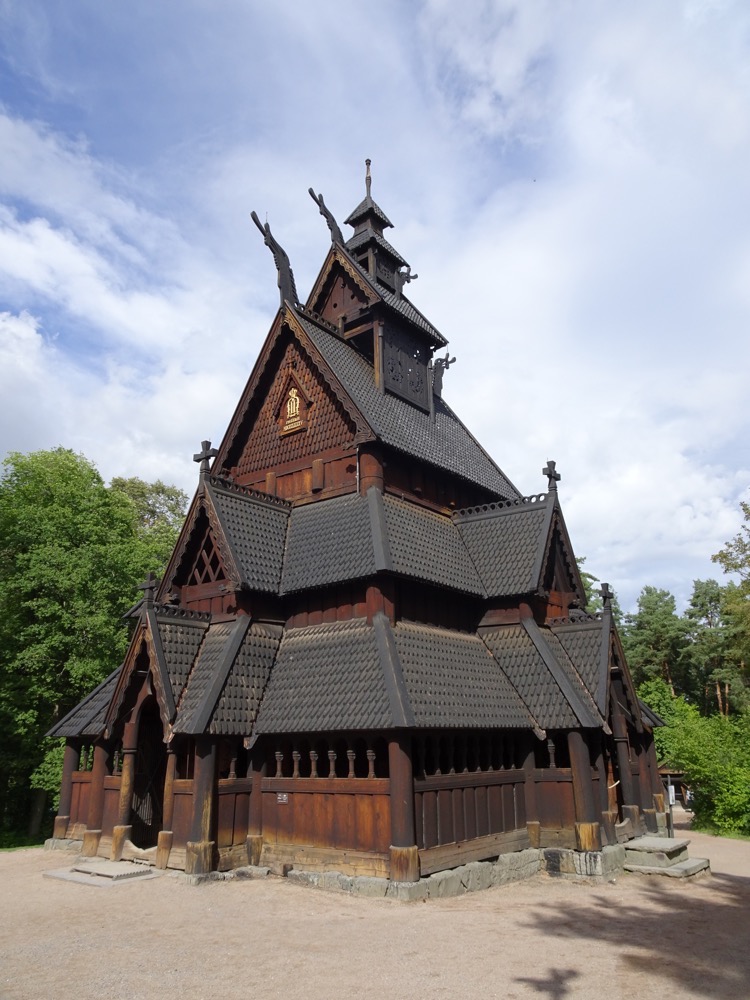
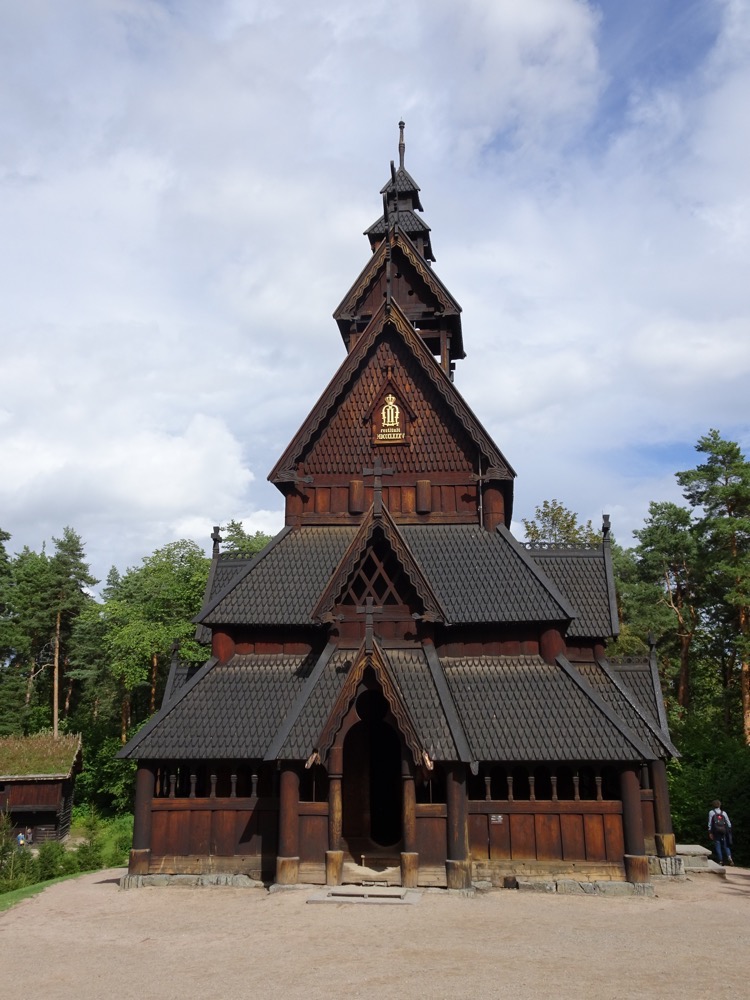
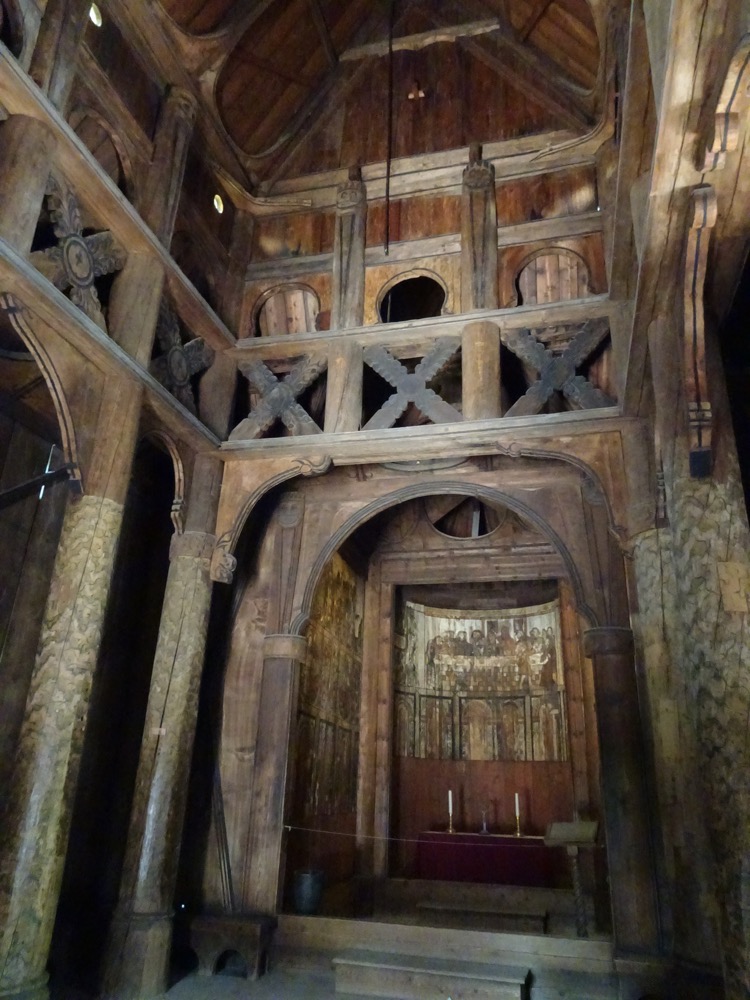
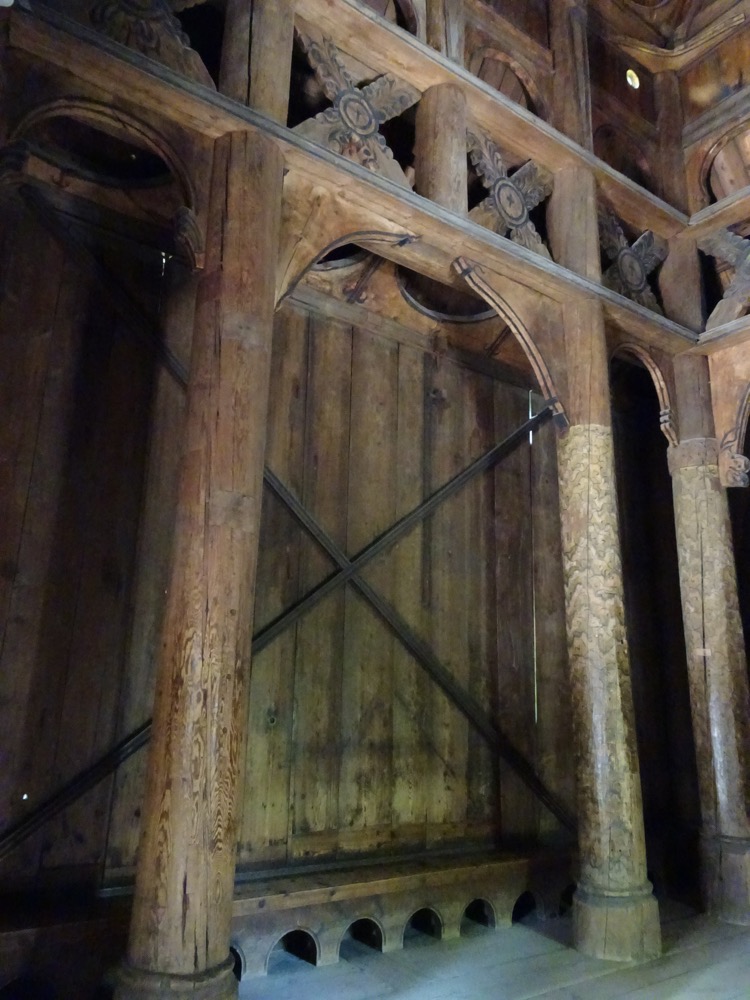

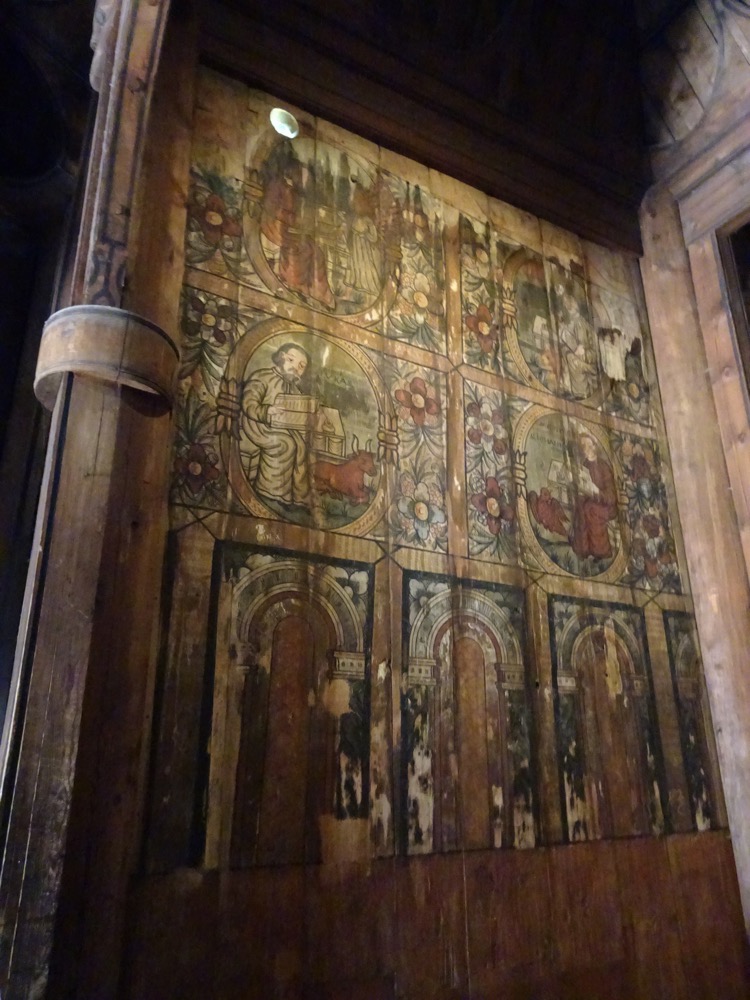

 The cloisered balconies? verandahs? that surrounded the church allow you to walk the entire perimeter of the church without going outside.
The cloisered balconies? verandahs? that surrounded the church allow you to walk the entire perimeter of the church without going outside. The carved entry doors to the stave church.
The carved entry doors to the stave church.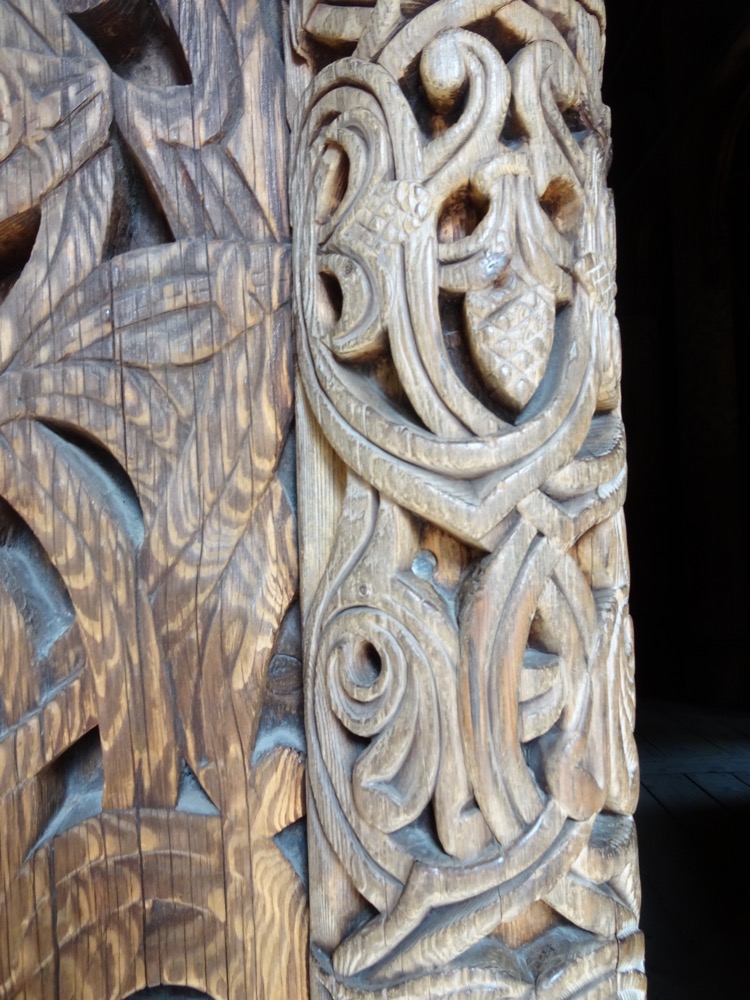

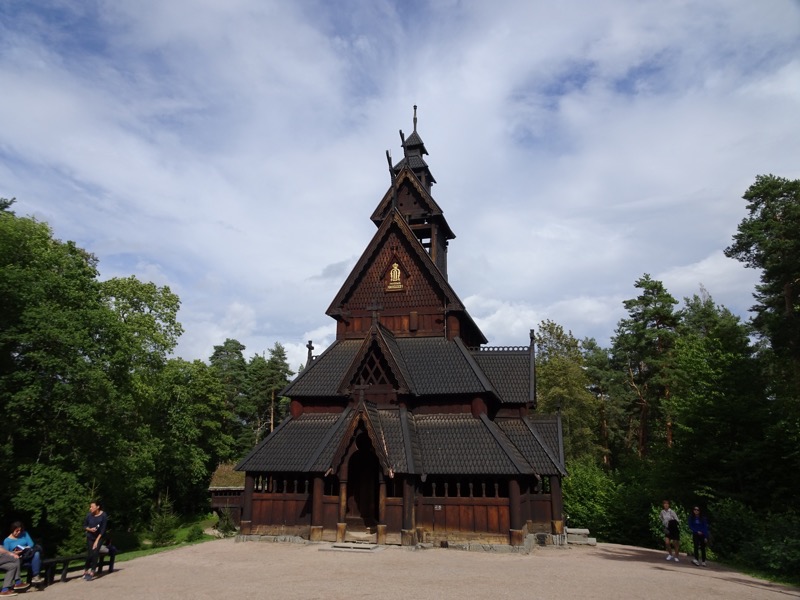
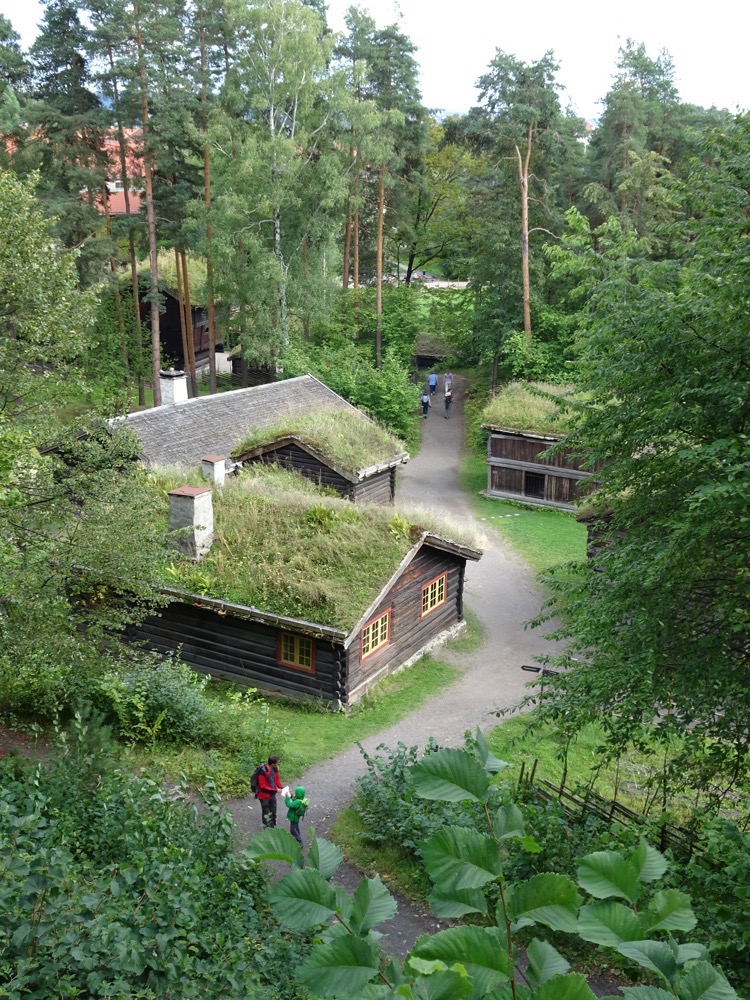



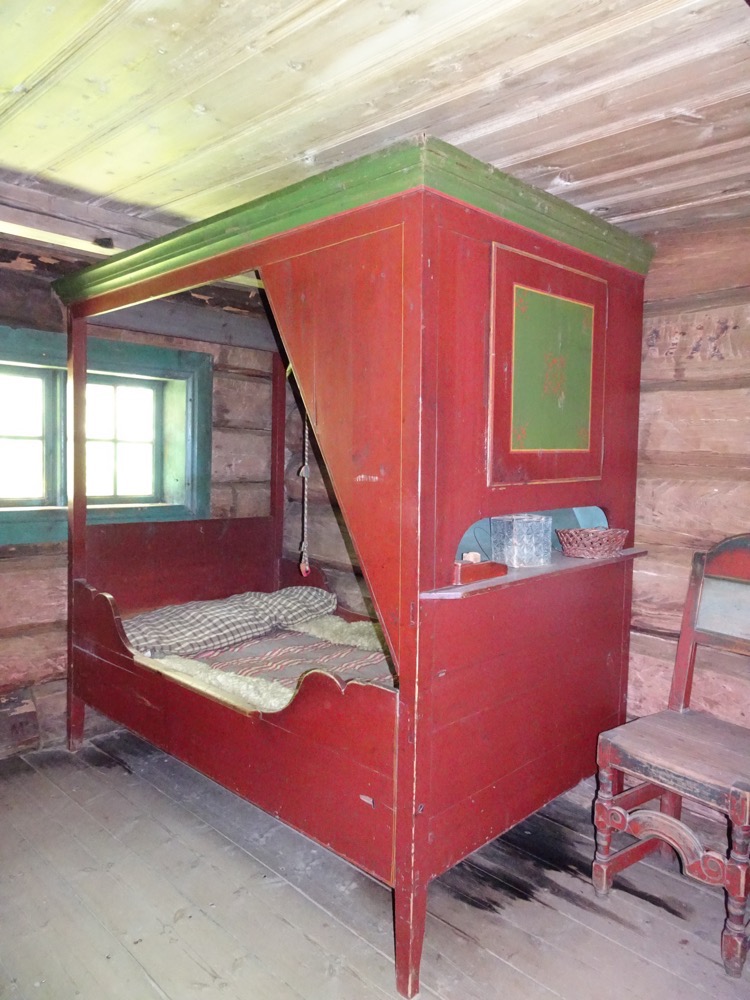

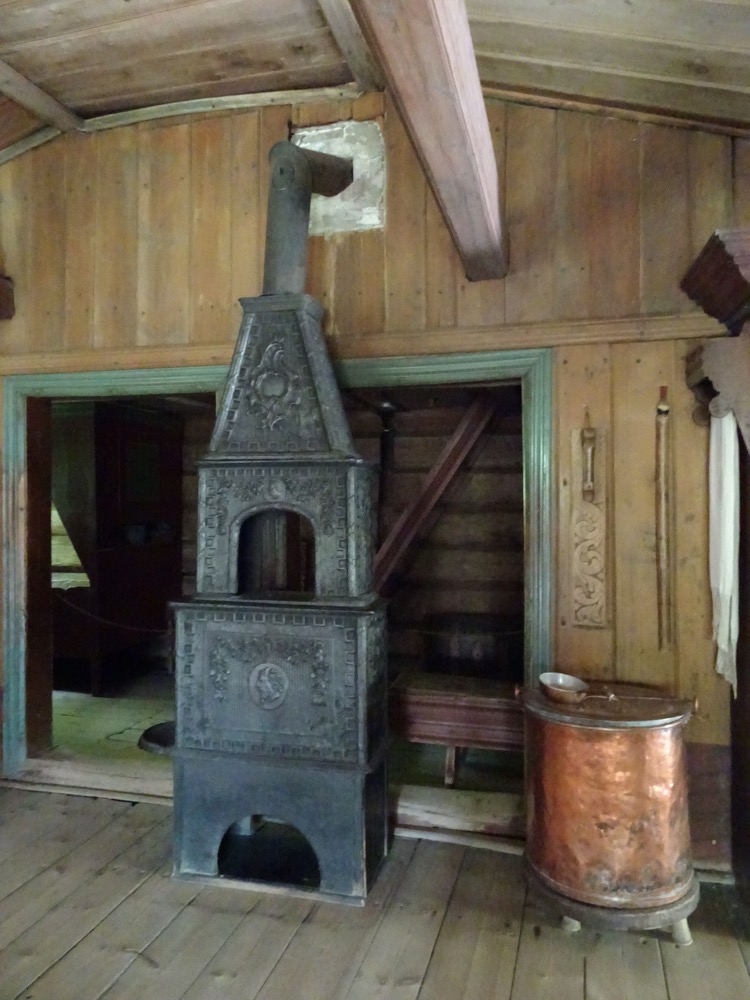
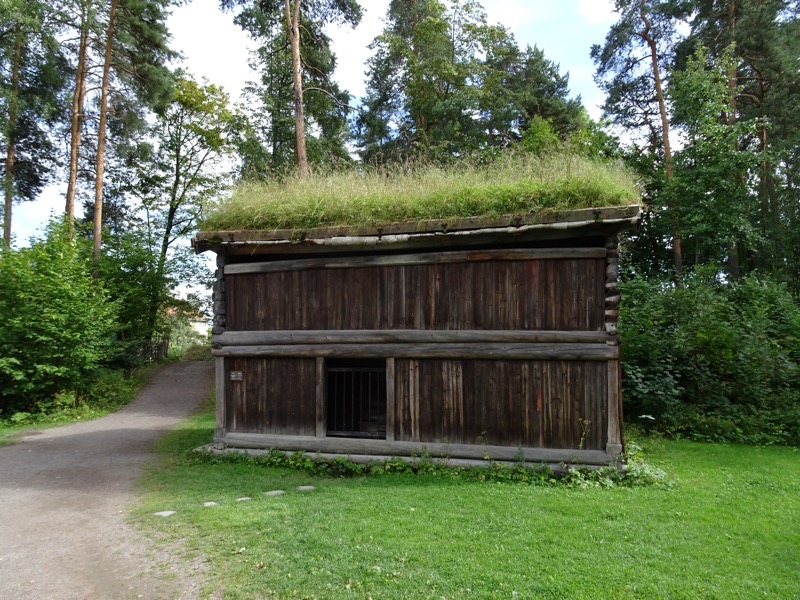
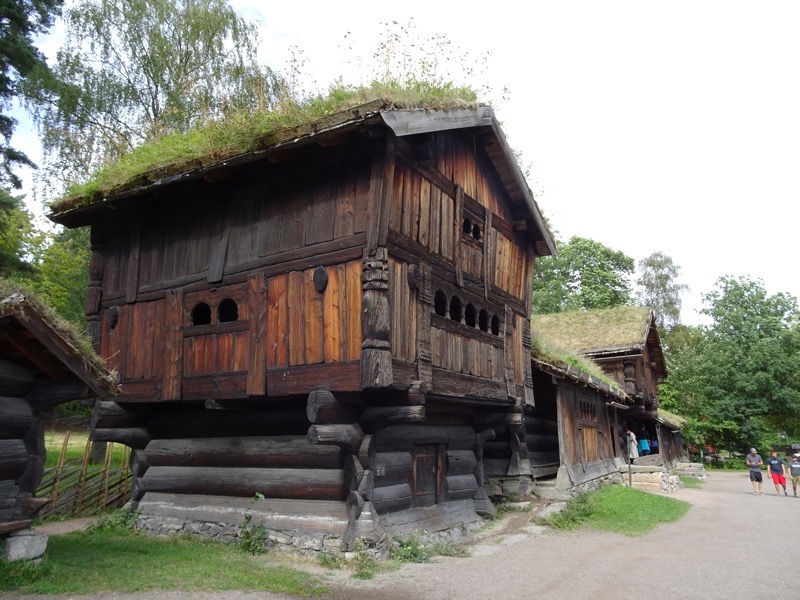

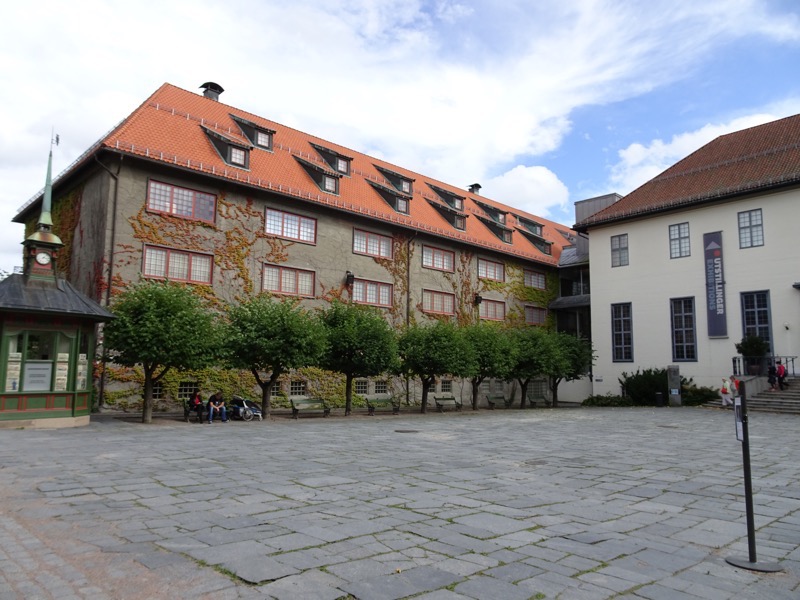
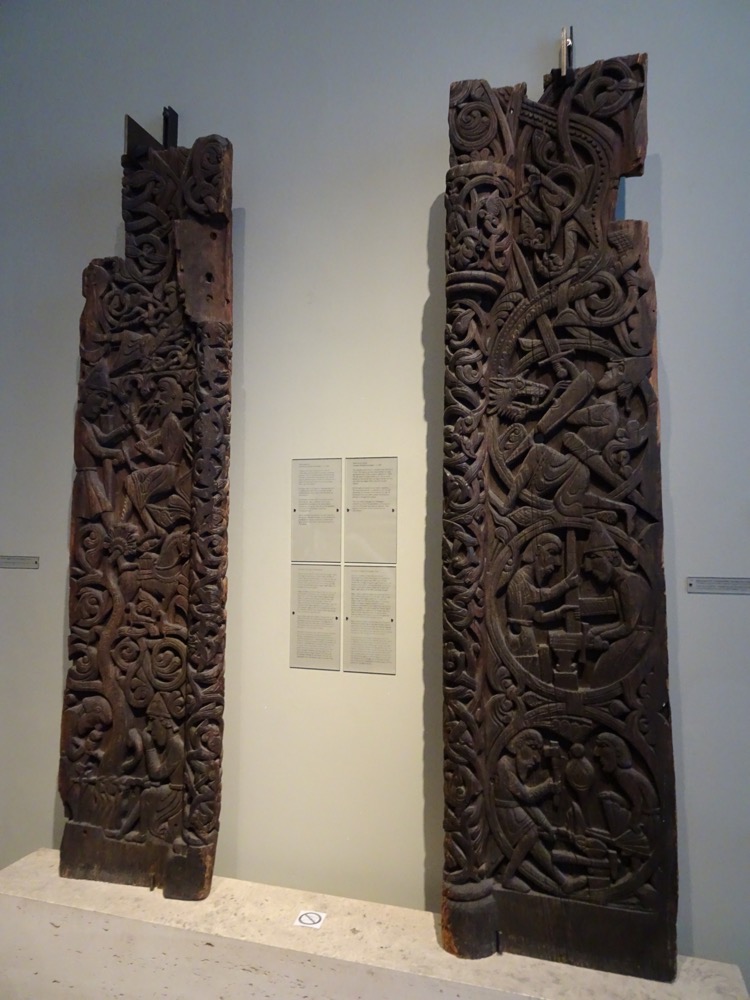 Horse collar, unknown provenance, c.1250-1300AD.
Horse collar, unknown provenance, c.1250-1300AD.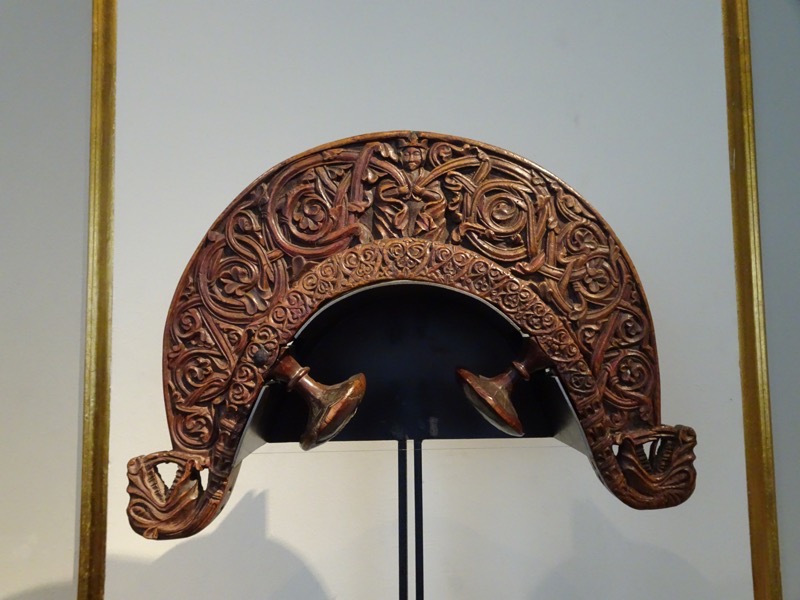 Sheild, 14thC bearing Runic inscription: “Gunnar made me, Helge owns me.”
Sheild, 14thC bearing Runic inscription: “Gunnar made me, Helge owns me.”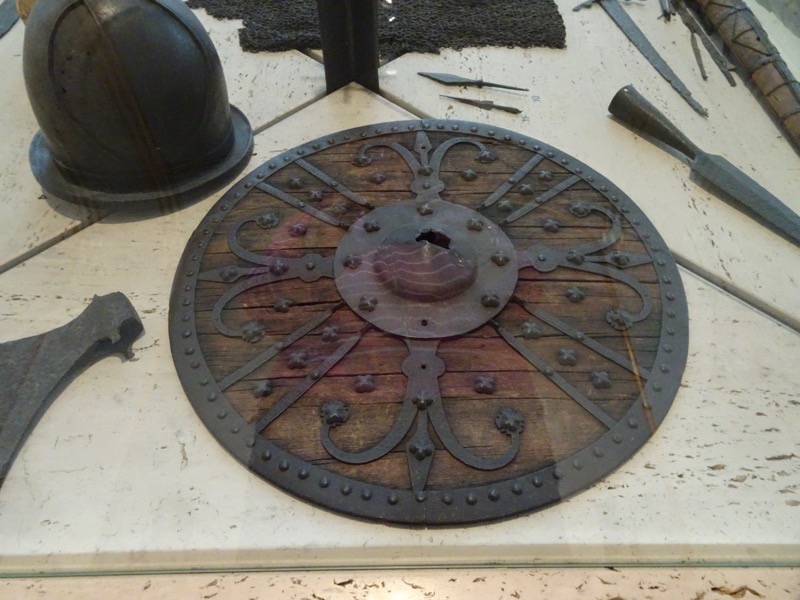
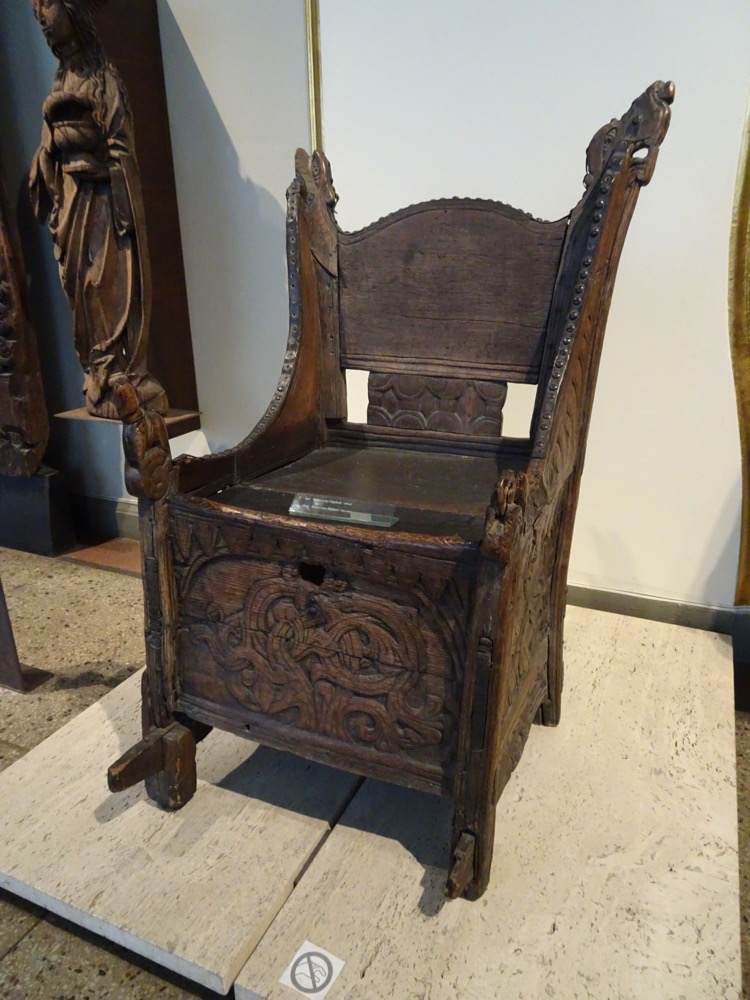 Drinking horn, c.1300 with secondary mounts. Horn appears to be of a native Norwegian breed of cattle.
Drinking horn, c.1300 with secondary mounts. Horn appears to be of a native Norwegian breed of cattle. Drinking horn, horn and gilt silver. 15th century, Elingard, Onsey, Ostford.
Drinking horn, horn and gilt silver. 15th century, Elingard, Onsey, Ostford.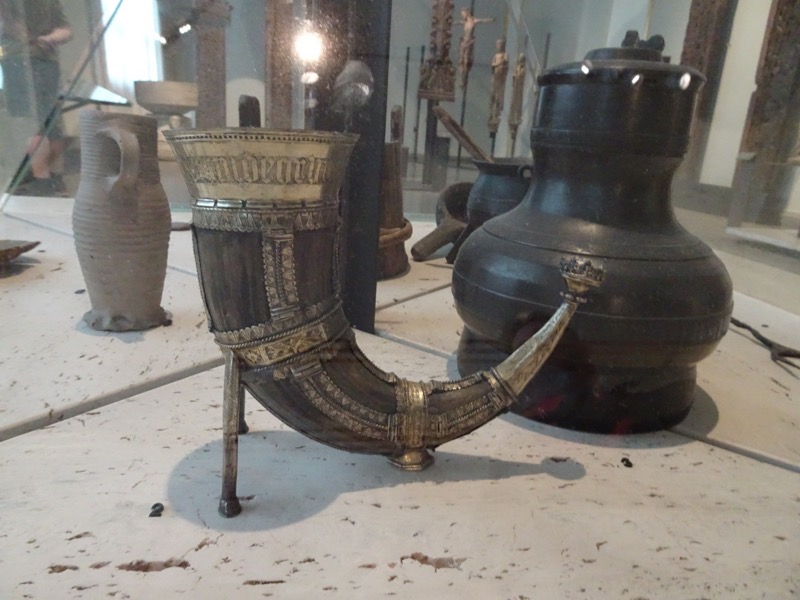
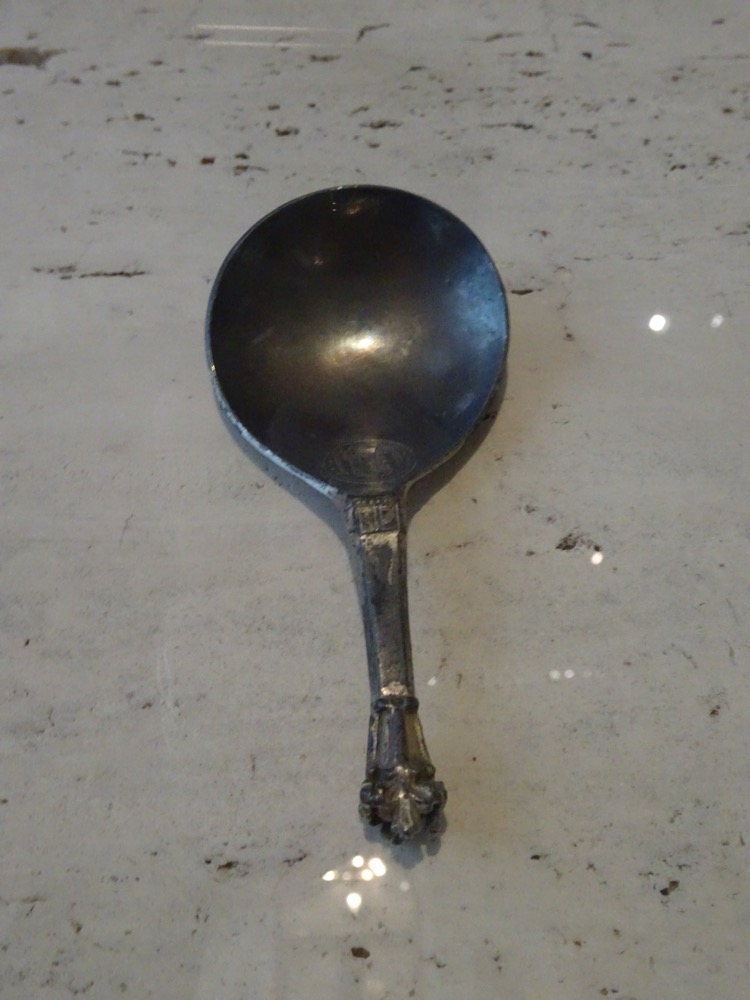
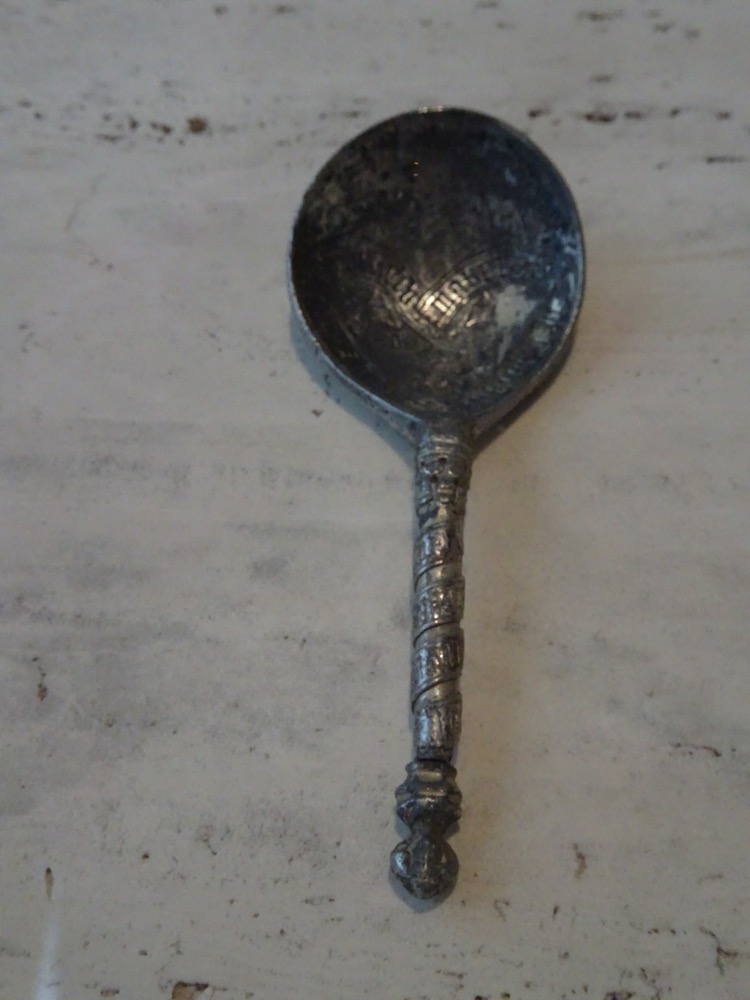 Chair, Tydol church, Osterdolen, Hedmark. c.1150-1200.
Chair, Tydol church, Osterdolen, Hedmark. c.1150-1200.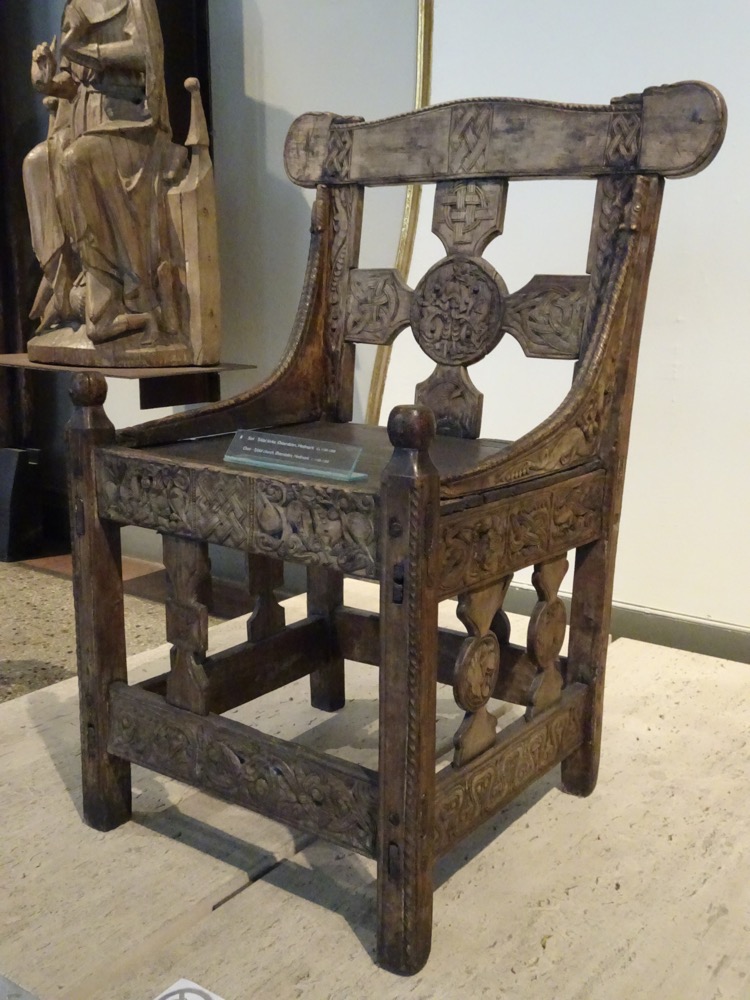 Baptismal font, Vale church, Westfold, c.1210-30.
Baptismal font, Vale church, Westfold, c.1210-30.
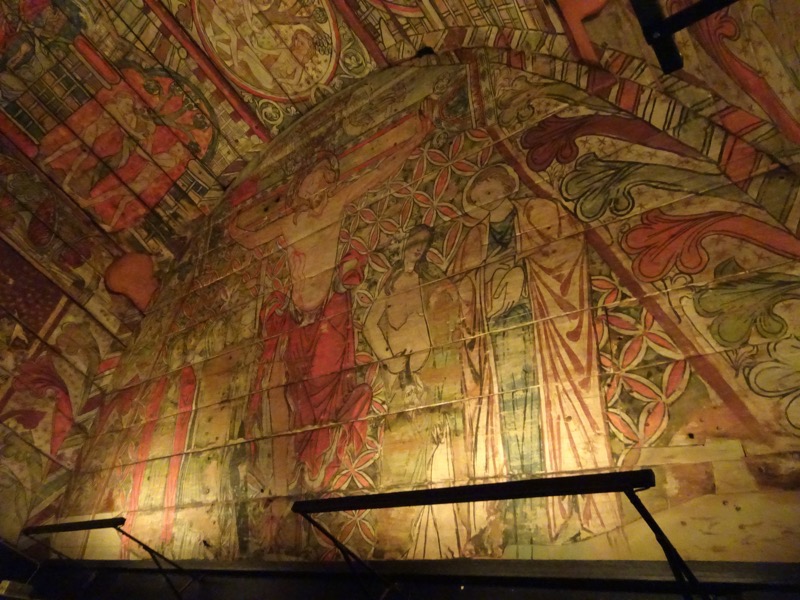
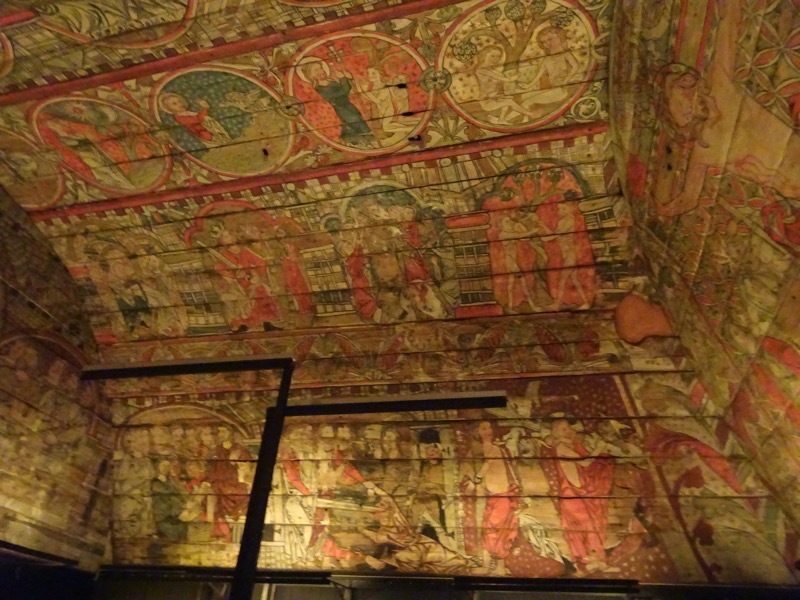
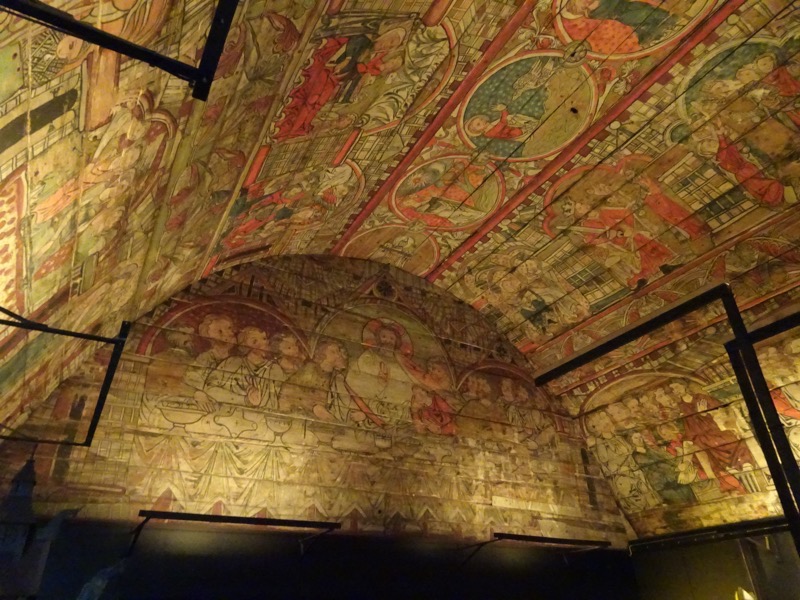

 Aquamanile (knight), Helgeland, Nordland, c.1300. Brass. Northern Germany.
Aquamanile (knight), Helgeland, Nordland, c.1300. Brass. Northern Germany.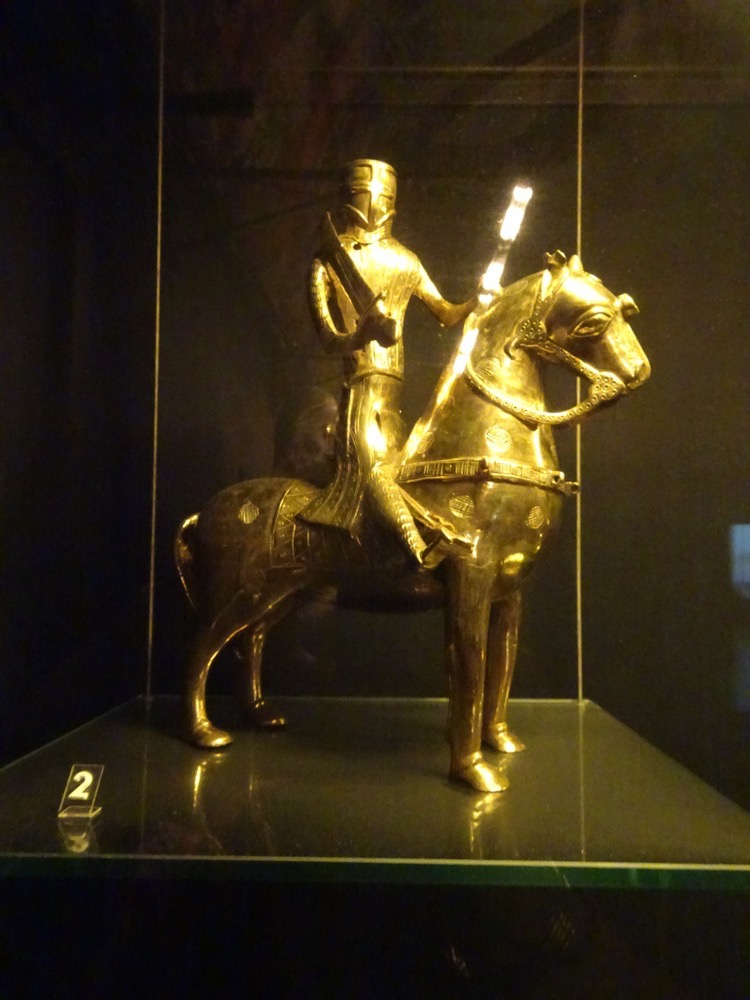
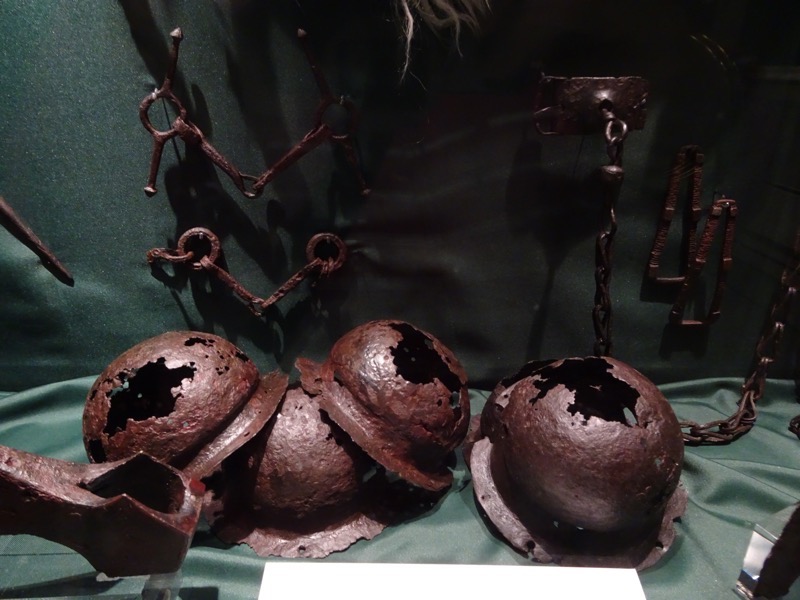 More lovely beads in predominantly matching colour schemes. Brooches, beads, and bracelet below – 10thC.
More lovely beads in predominantly matching colour schemes. Brooches, beads, and bracelet below – 10thC.
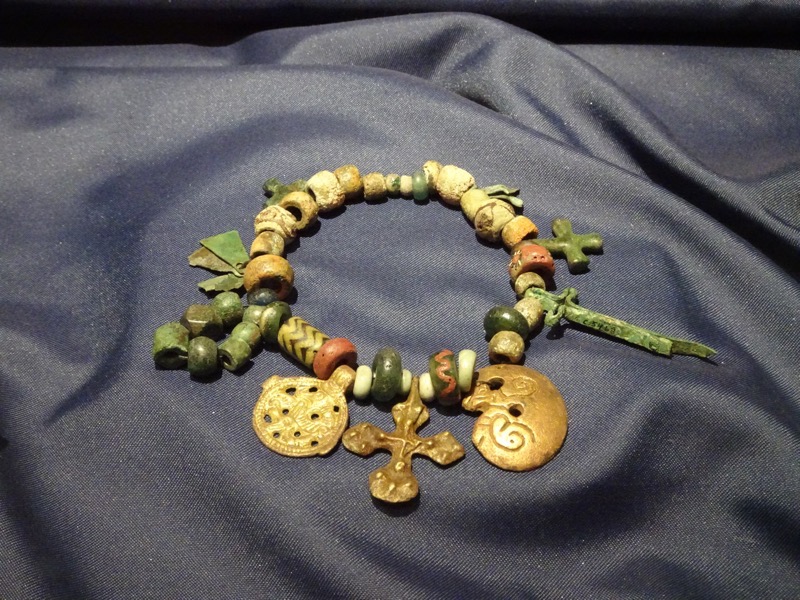 Shaman’s drum hammer. Carved bone. 11th century, Nordset, Rendalen, Hedmark.
Shaman’s drum hammer. Carved bone. 11th century, Nordset, Rendalen, Hedmark.
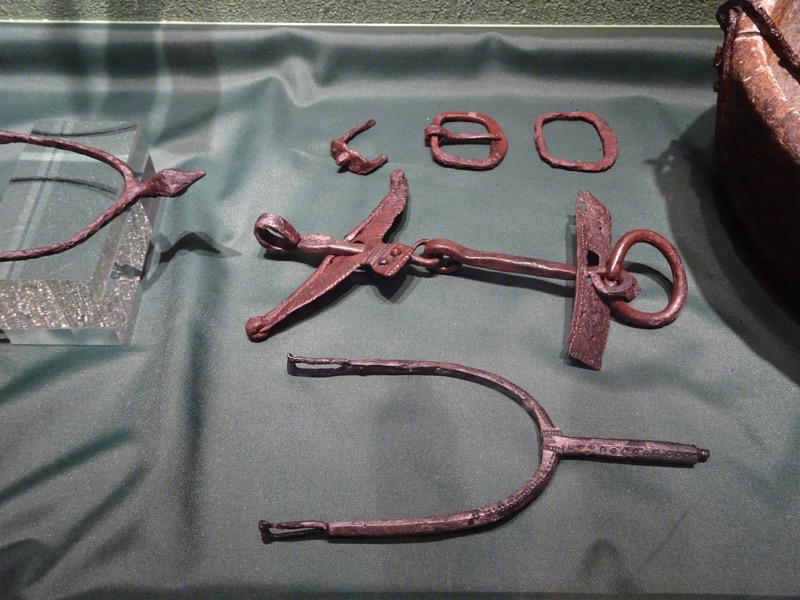
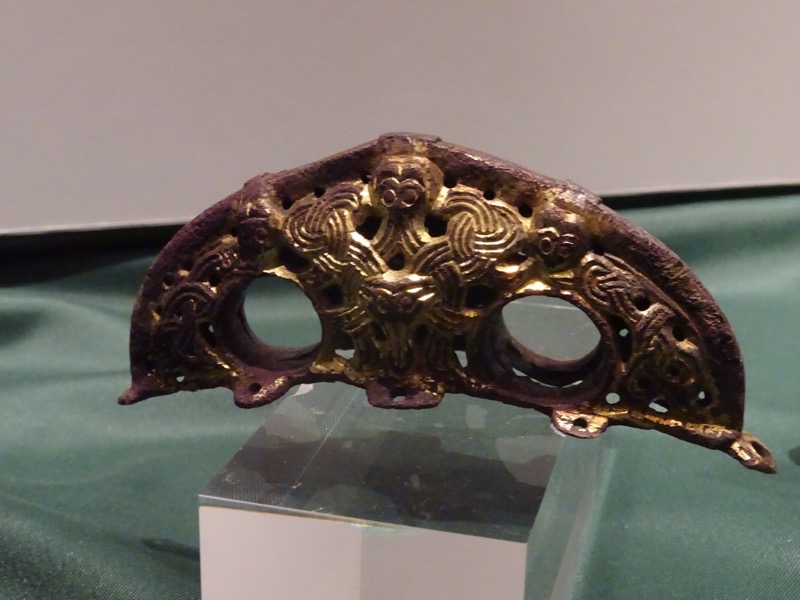 More lovely matching and symmetrical bead sets… I can’t express how pleased I am to find now three sets of beads, across Sweden and Norway, that are not a completely psychotic arrangement of chaotic colour, type and size. The order inherent in some of these bead sets is reassuring.
More lovely matching and symmetrical bead sets… I can’t express how pleased I am to find now three sets of beads, across Sweden and Norway, that are not a completely psychotic arrangement of chaotic colour, type and size. The order inherent in some of these bead sets is reassuring.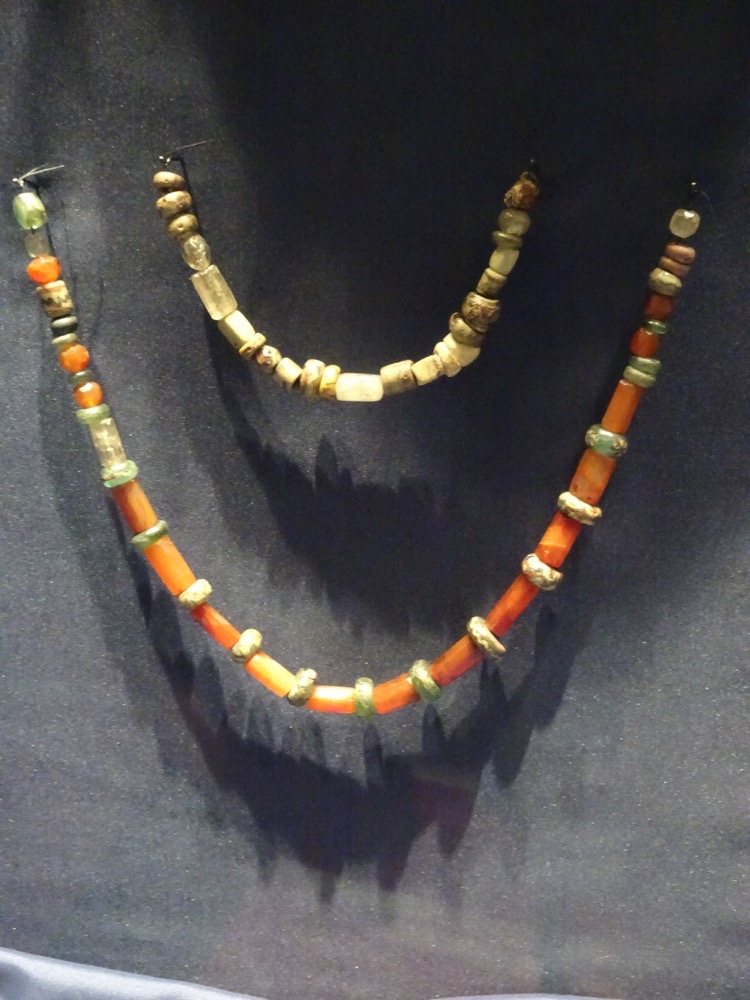 9th C tortoise broach and Verbrannte Leiche. 😀
9th C tortoise broach and Verbrannte Leiche. 😀 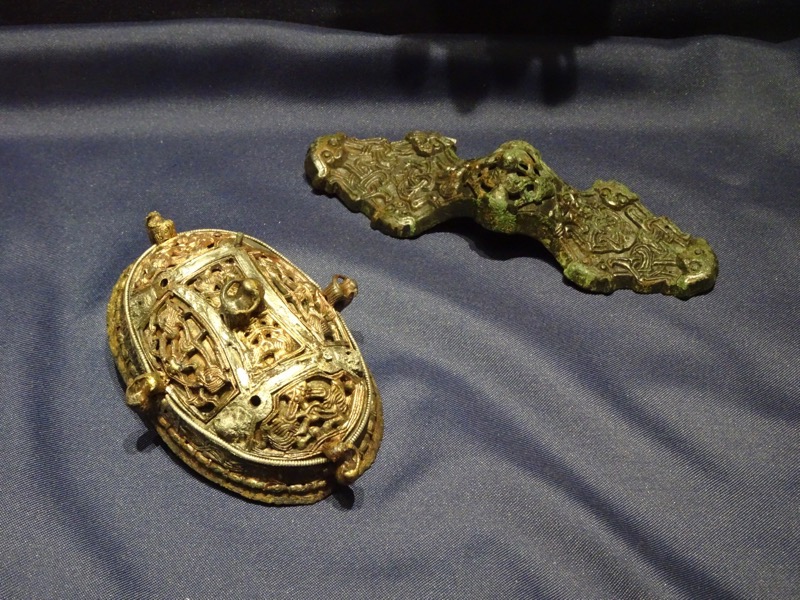
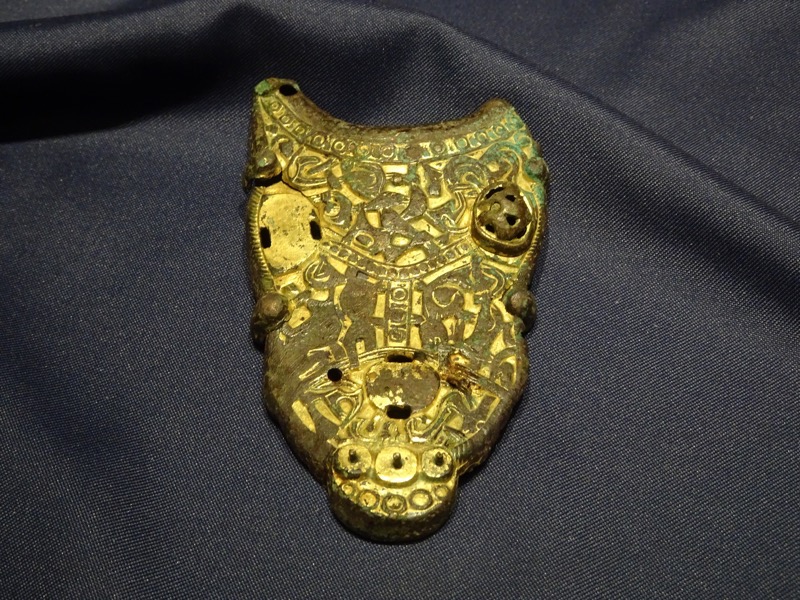


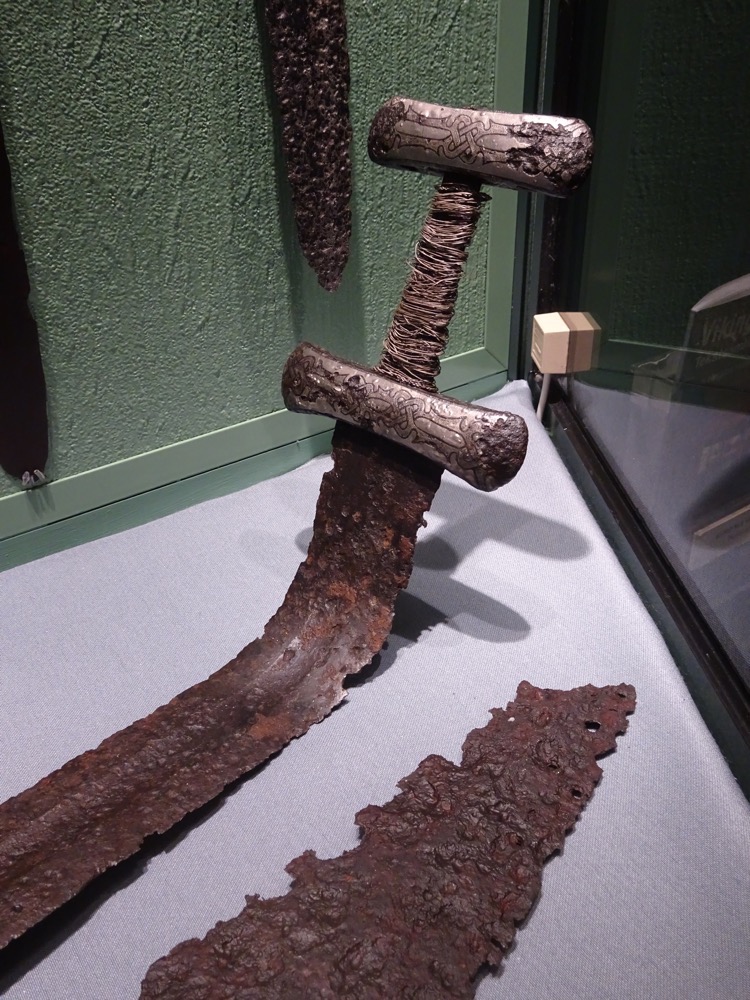
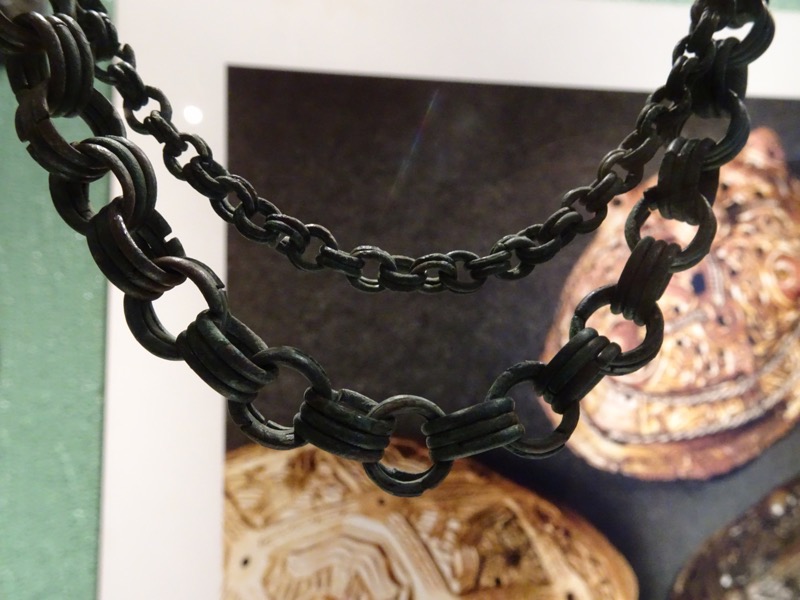 More 9th century tortoise brooches.
More 9th century tortoise brooches.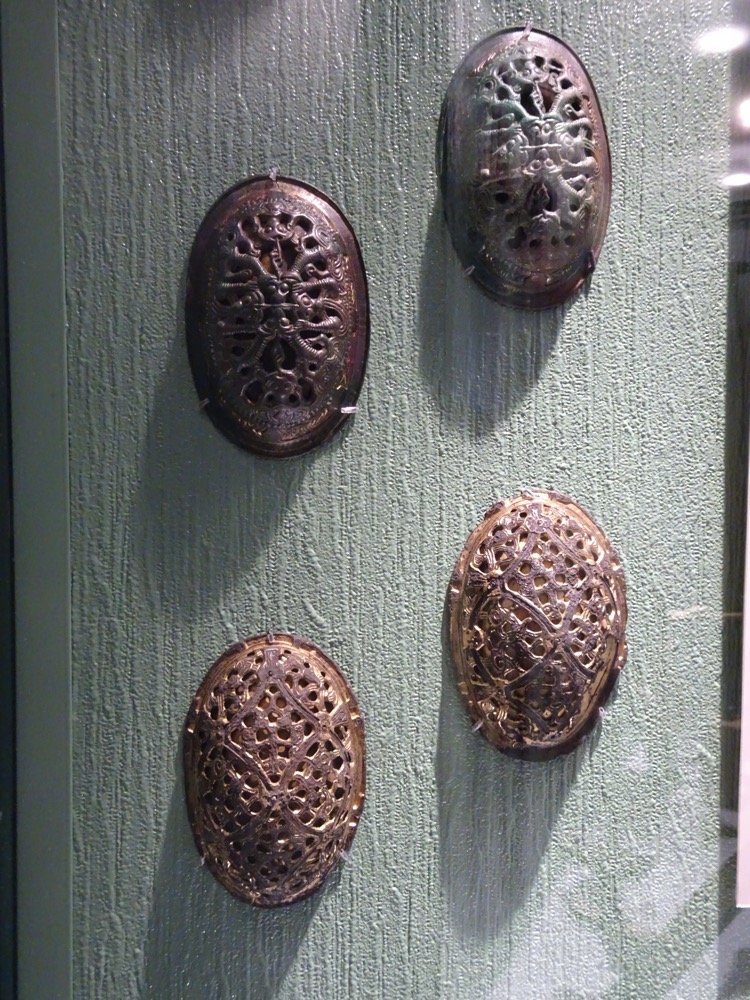
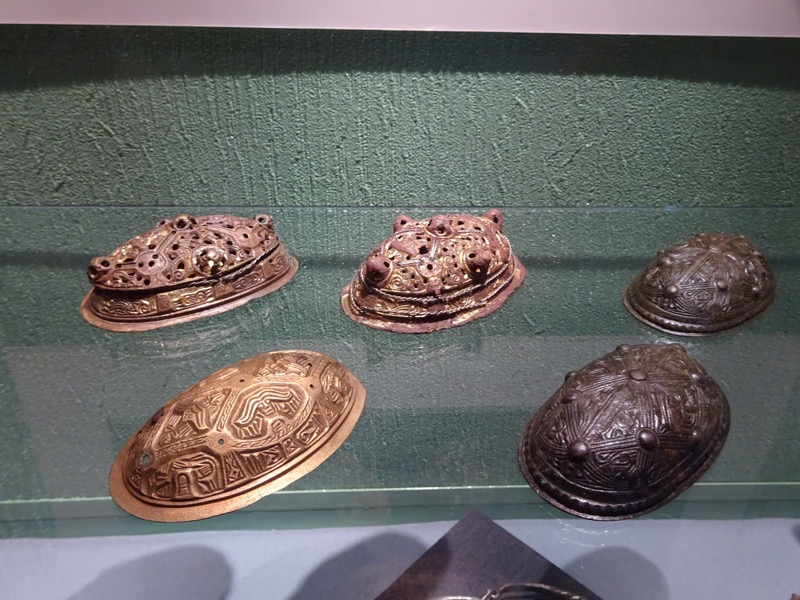 This amazing brooch from Hovland, Larvik, Vestfold, shows beautifully braided silver wire wound in and around the holes in the design of the brooch. I tried to photograph the underside but without success. 9th century, and appears to be very ususual.
This amazing brooch from Hovland, Larvik, Vestfold, shows beautifully braided silver wire wound in and around the holes in the design of the brooch. I tried to photograph the underside but without success. 9th century, and appears to be very ususual.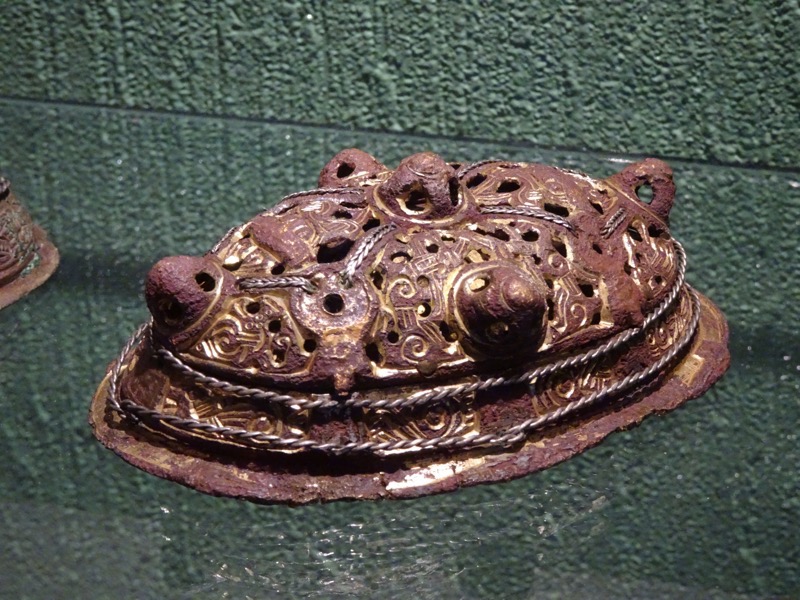 Trefoil brooches. 9th-10th century.
Trefoil brooches. 9th-10th century.
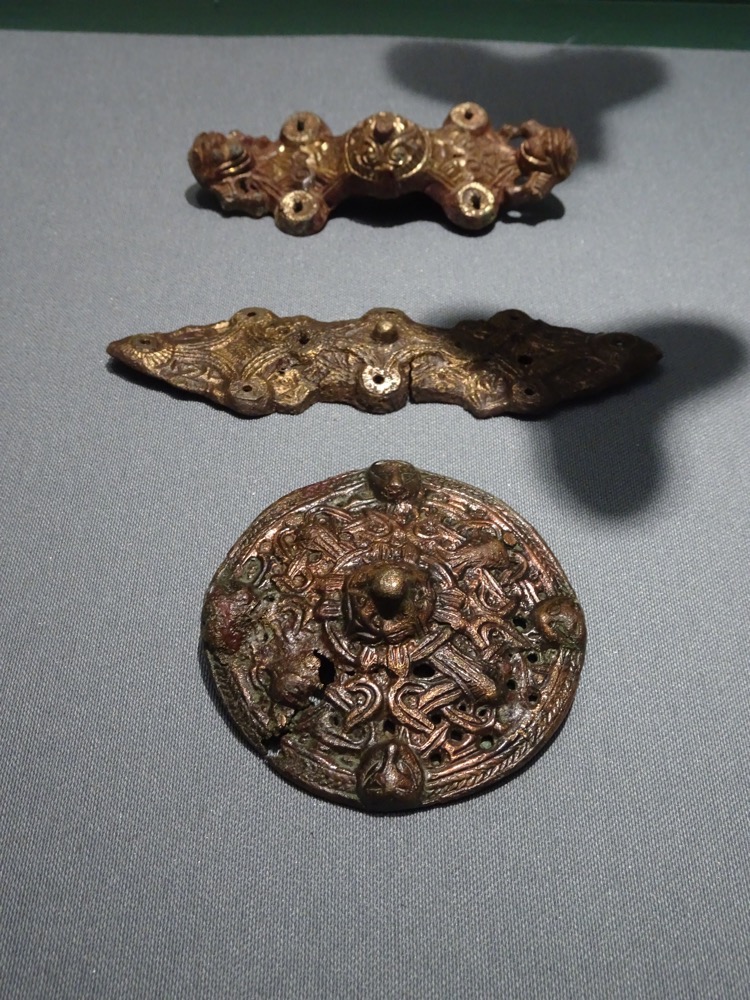
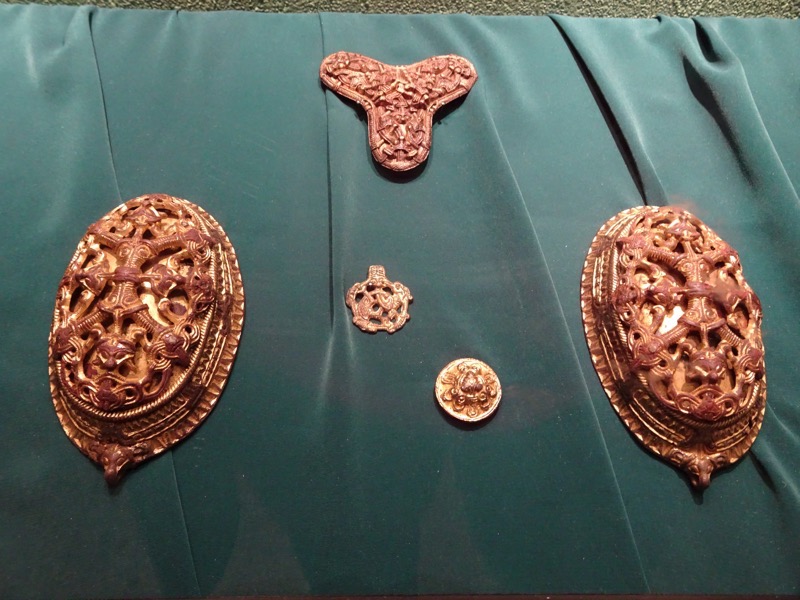
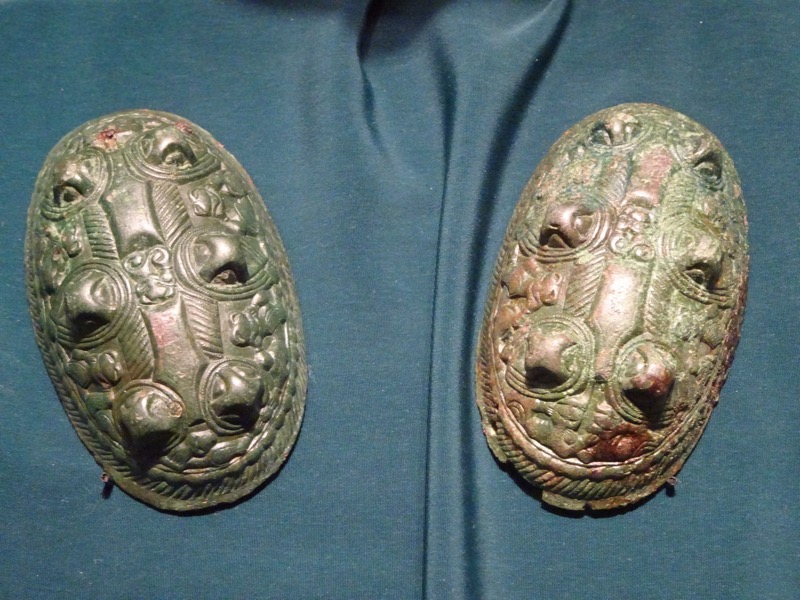
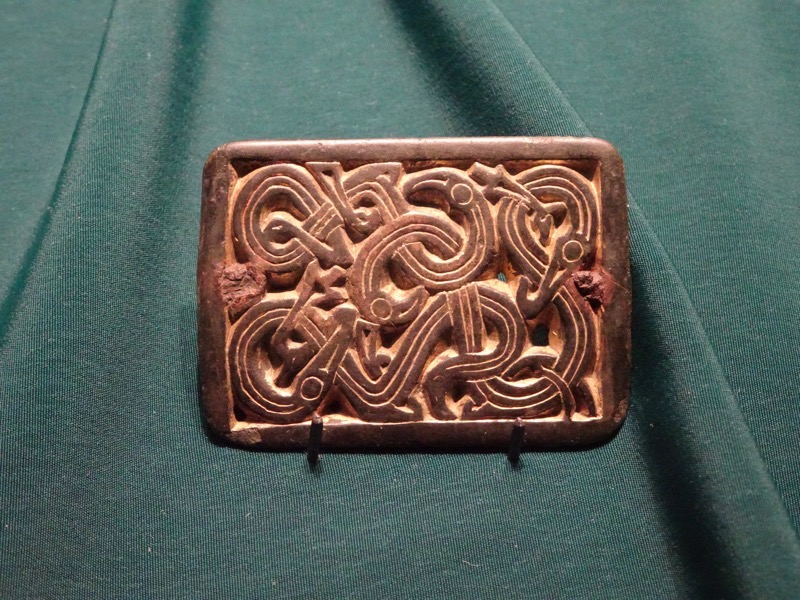 Male jarl grave find from Funde aus Mannergrab. Gjermundbu, Ringerkike, Buskerud, 10th century:
Male jarl grave find from Funde aus Mannergrab. Gjermundbu, Ringerkike, Buskerud, 10th century: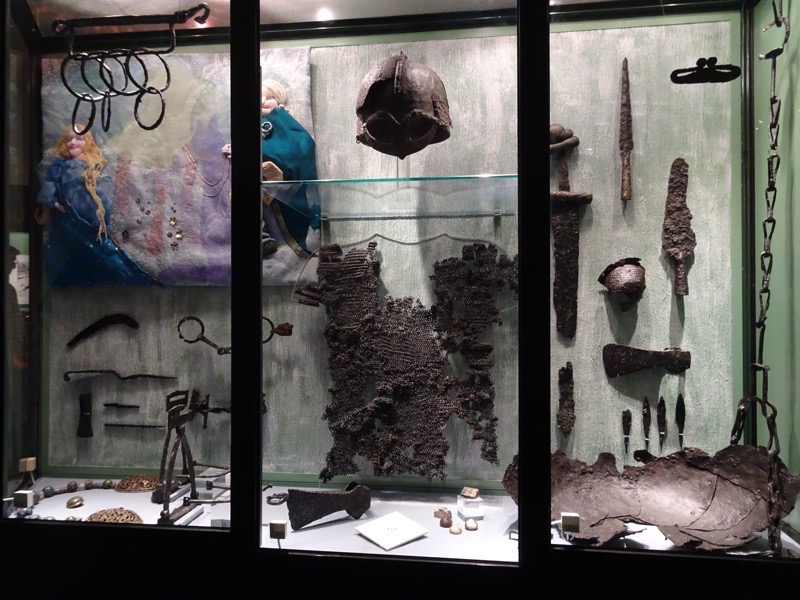 Contains: rattles, sickles, rasp, bell, knife, file, horse-bits, stirrups, spurs, helm, chain mail shirt, axe, 2 dice, 3 gaming pieces, sword, spear, fire-steel, spear, shield boss, axe, chape, cauldron, crampons, chain for cauldron.
Contains: rattles, sickles, rasp, bell, knife, file, horse-bits, stirrups, spurs, helm, chain mail shirt, axe, 2 dice, 3 gaming pieces, sword, spear, fire-steel, spear, shield boss, axe, chape, cauldron, crampons, chain for cauldron.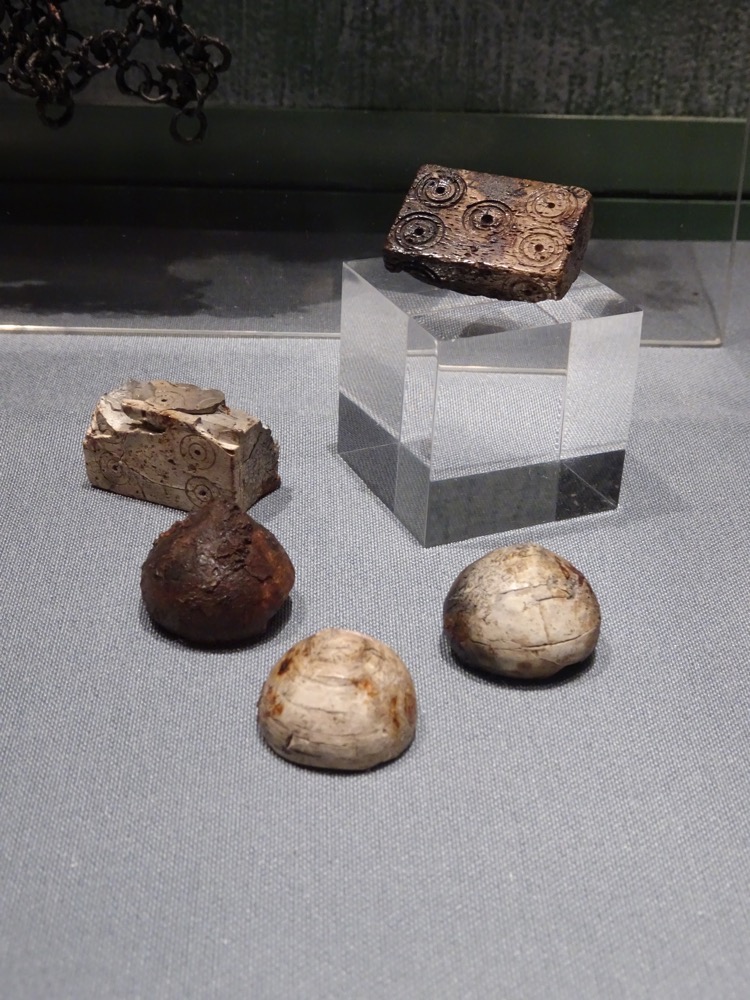
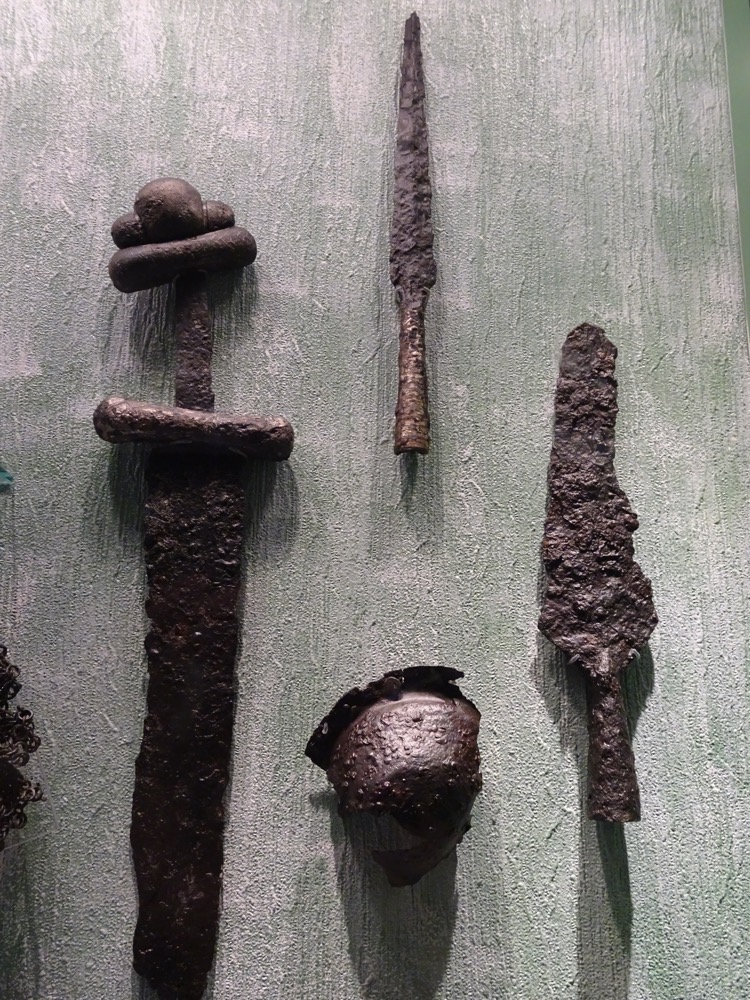
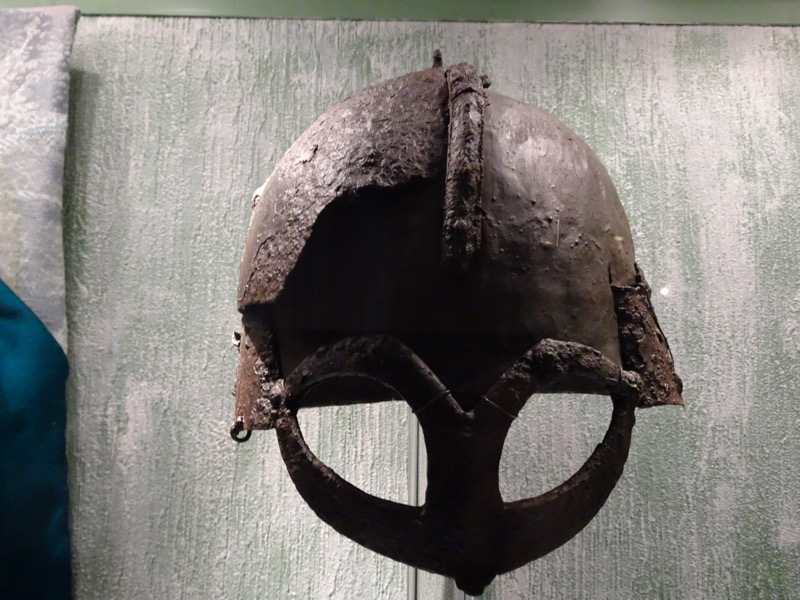 Female grave find from Ryem, Vikna, Nord-Trondelag, 10th century. Brooches, and beads. Those beads were enromous… my thumb included for scale.
Female grave find from Ryem, Vikna, Nord-Trondelag, 10th century. Brooches, and beads. Those beads were enromous… my thumb included for scale. 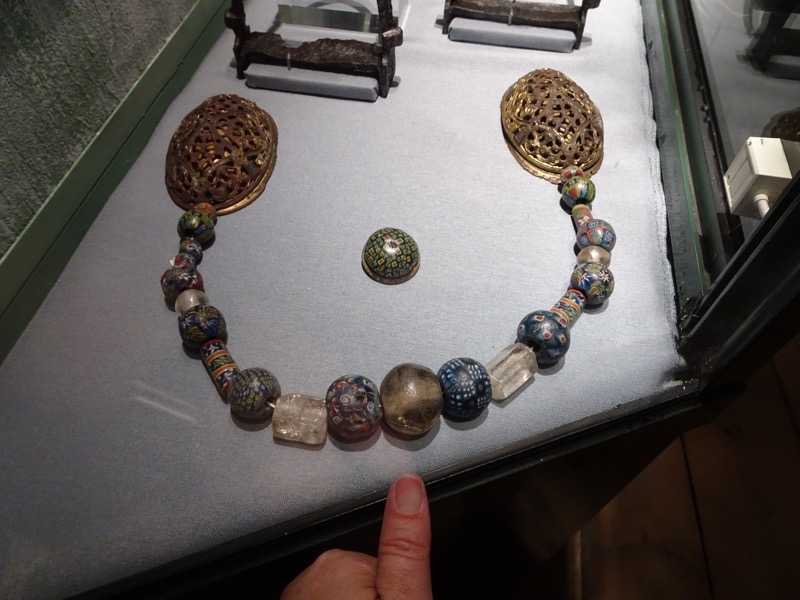

 Iron age tools. Used for ship building.
Iron age tools. Used for ship building.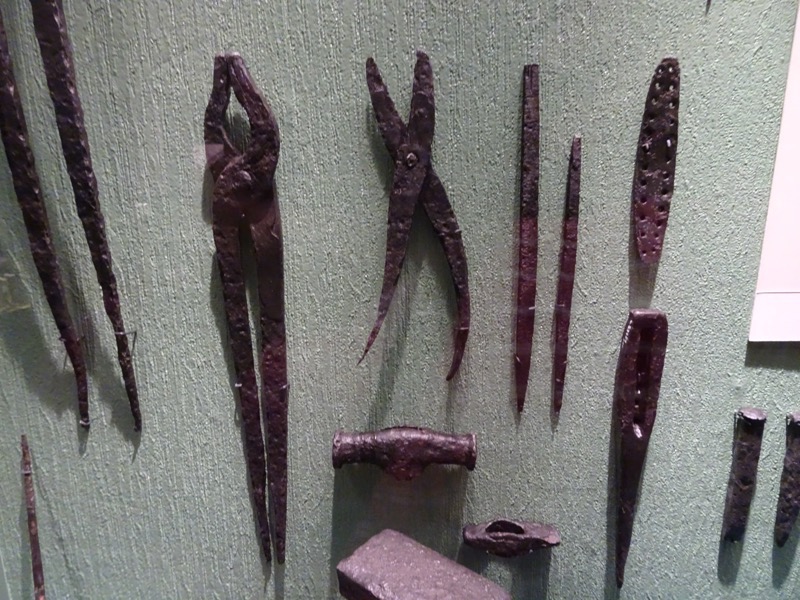 Chisel set used for timber work, ship building… possibly for rune stone carving as well.
Chisel set used for timber work, ship building… possibly for rune stone carving as well.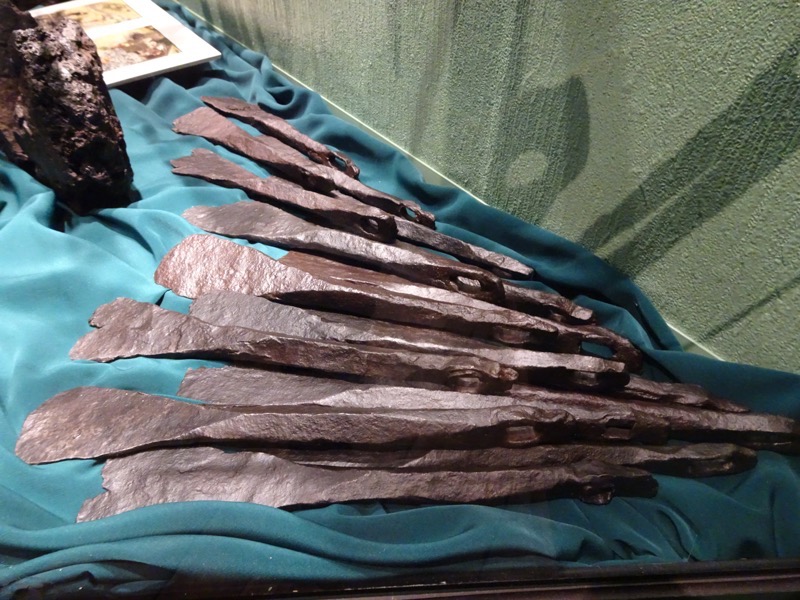 Bowls carved using chisels.
Bowls carved using chisels.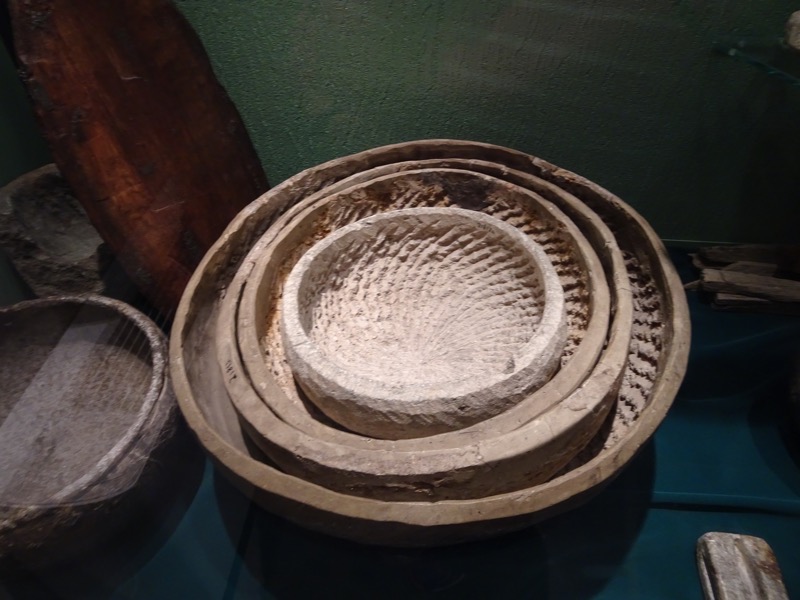 Viking sword pommels – Vaga kirke, Vaga, Oppland. 9th century.
Viking sword pommels – Vaga kirke, Vaga, Oppland. 9th century.
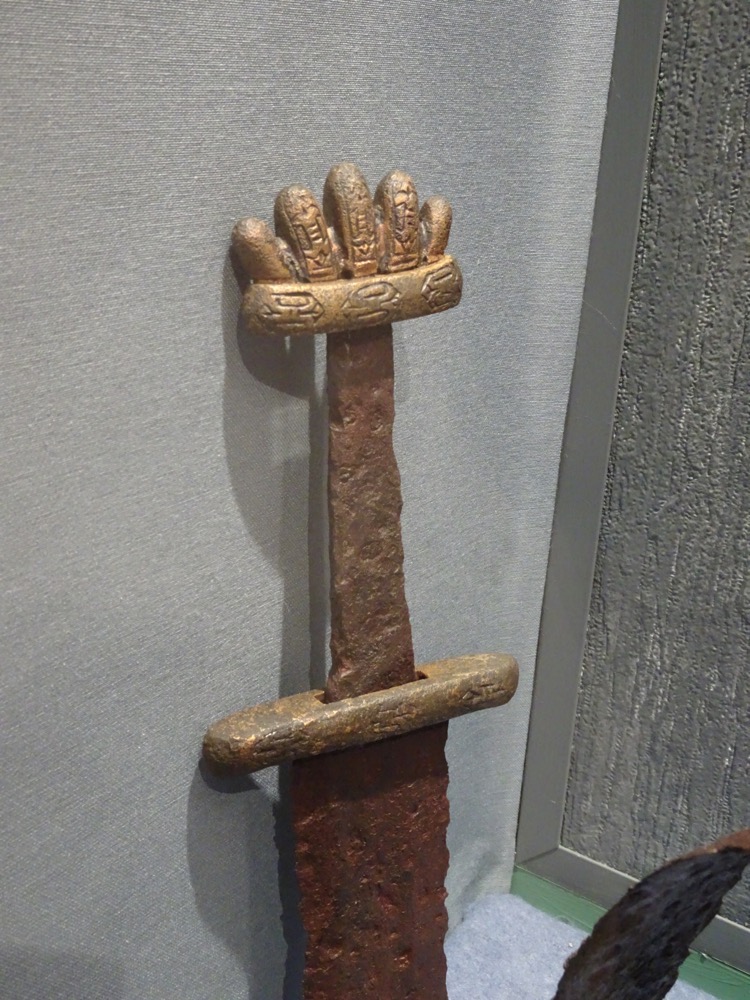
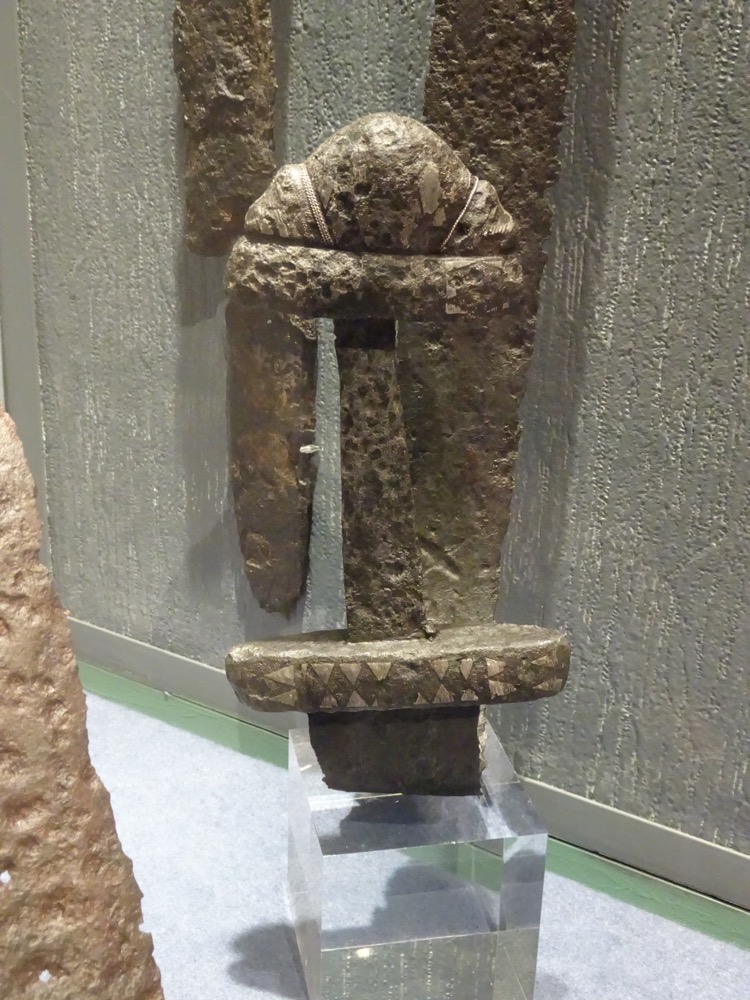

 Flattening board and flattening stones.
Flattening board and flattening stones.
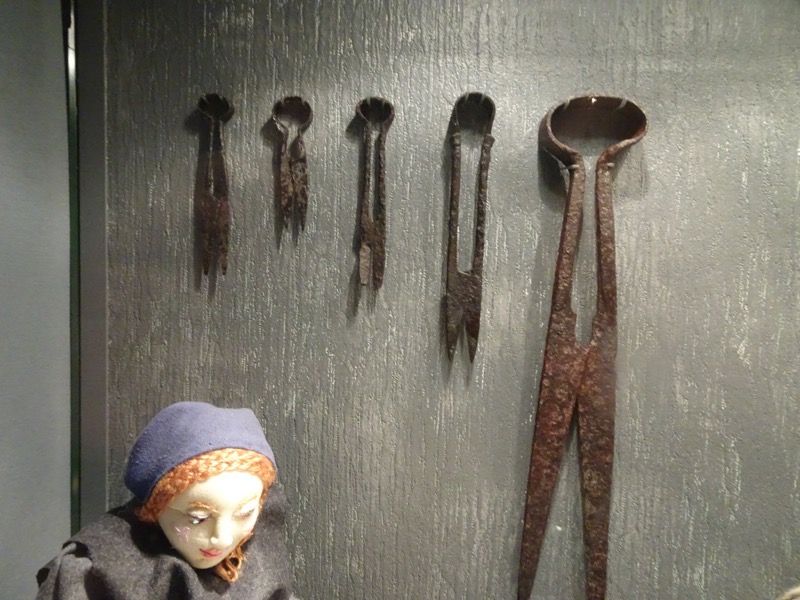
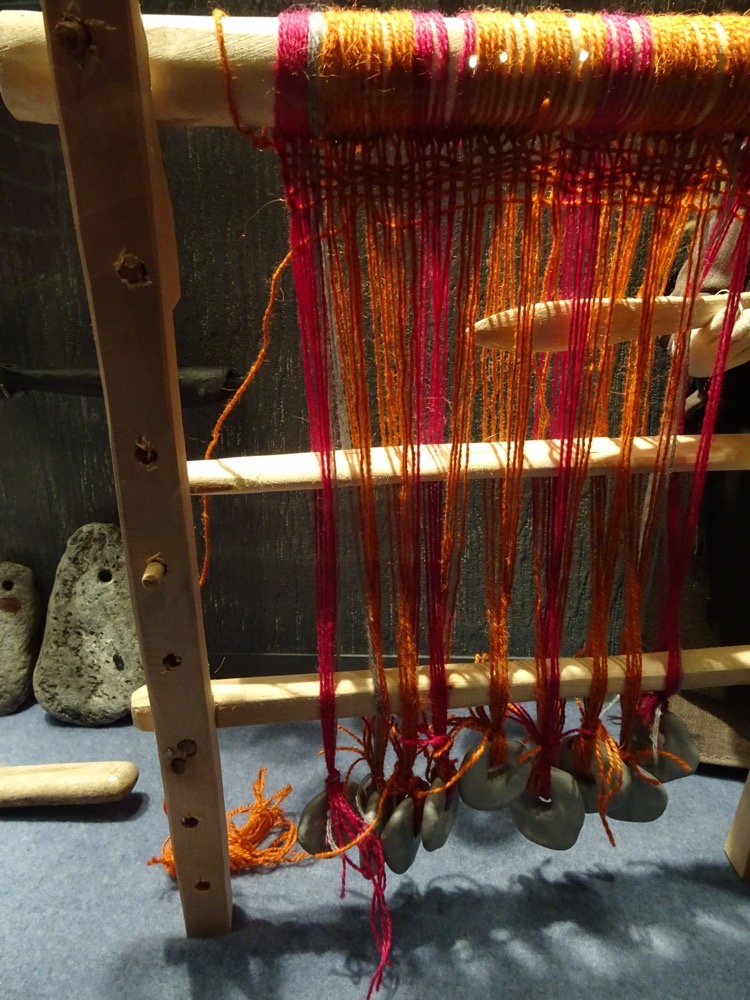 Spinning whorls.
Spinning whorls.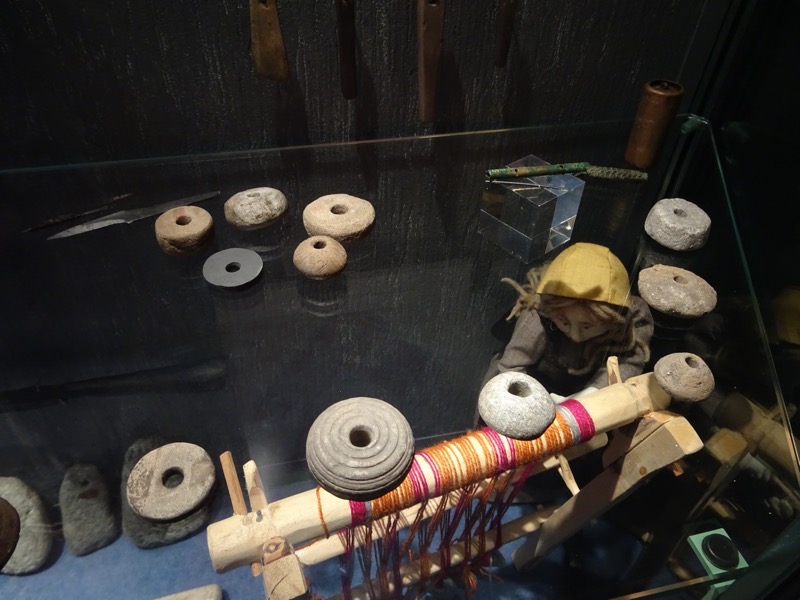 Neck band.
Neck band. Viking shield from Oseberg grave.
Viking shield from Oseberg grave.

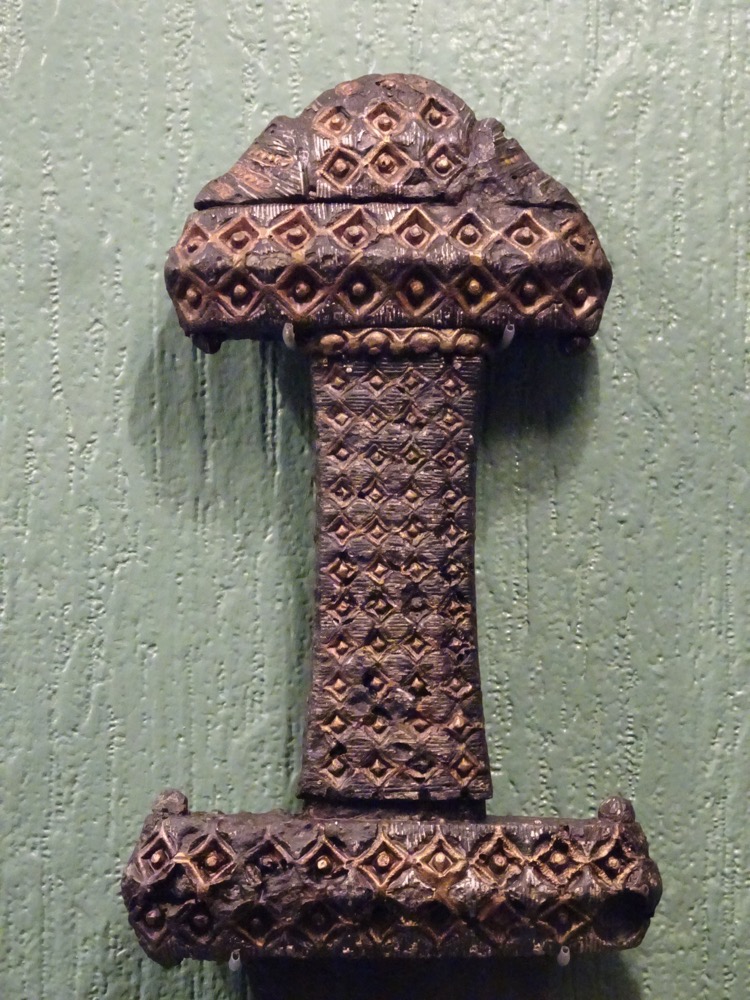

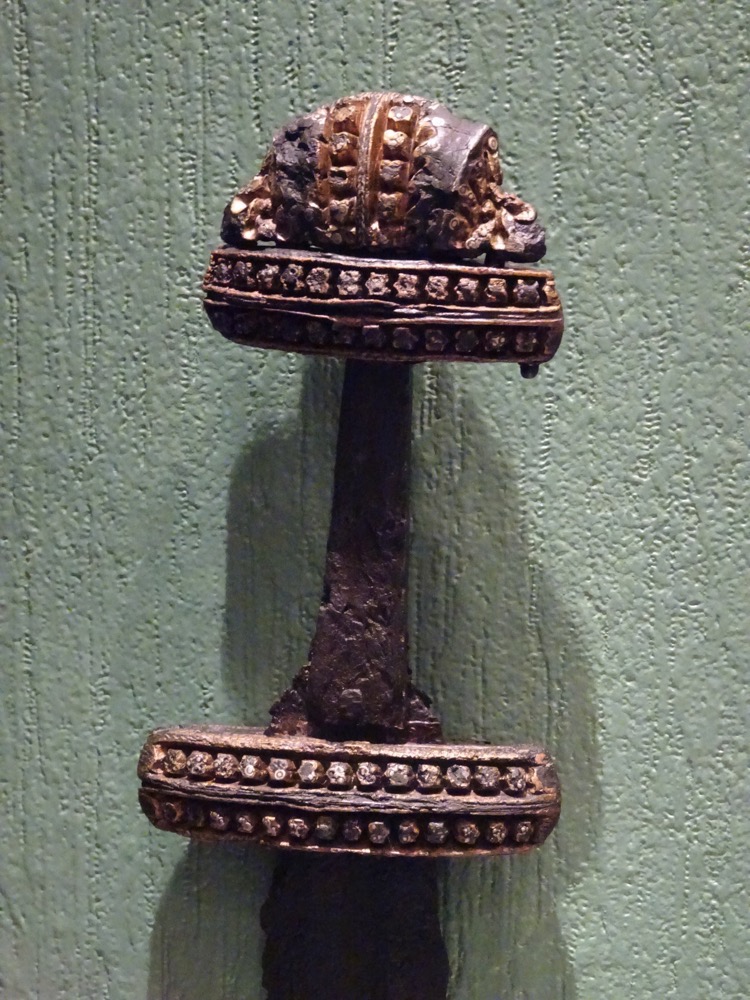
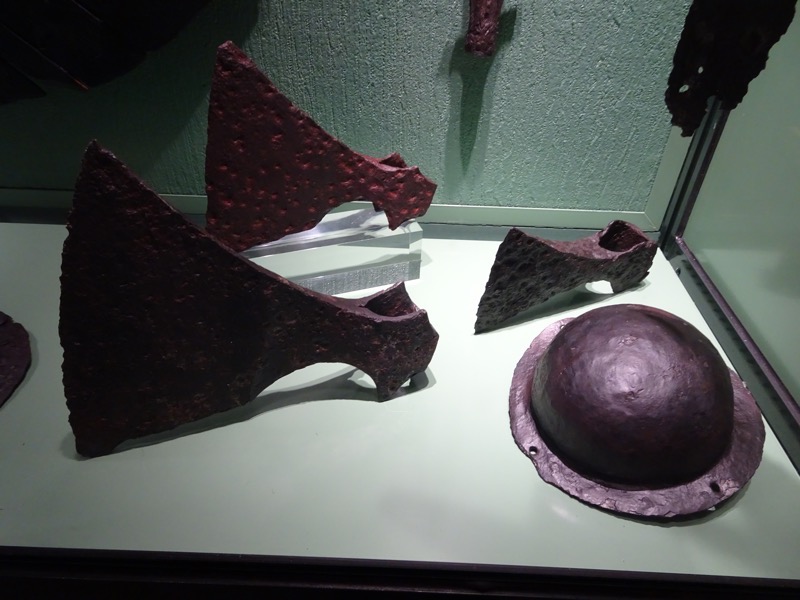
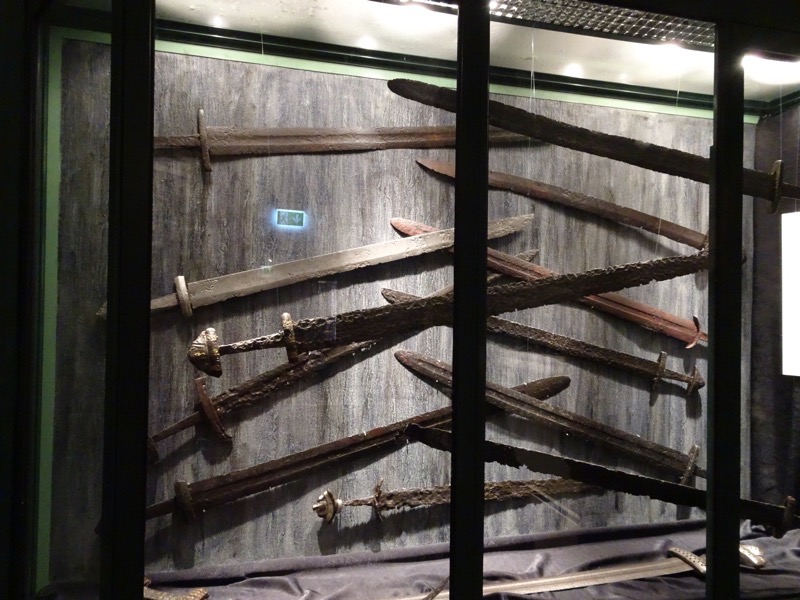
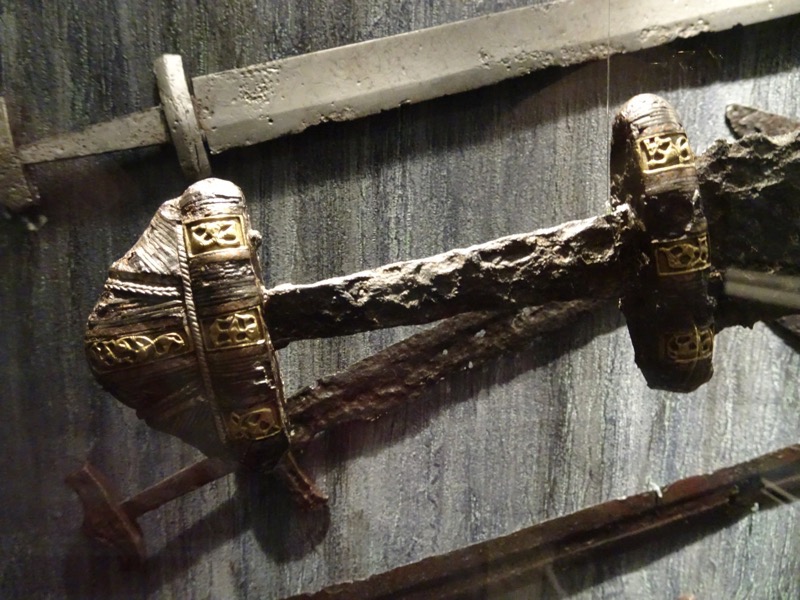

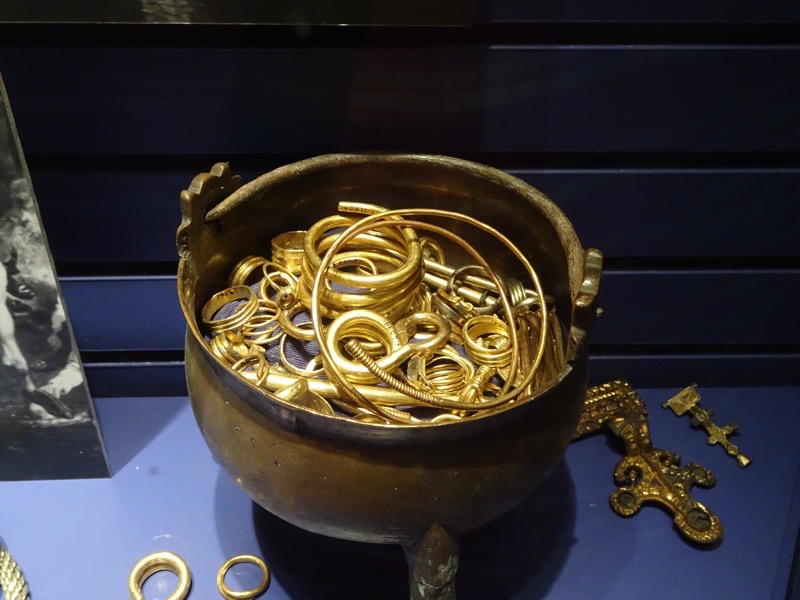

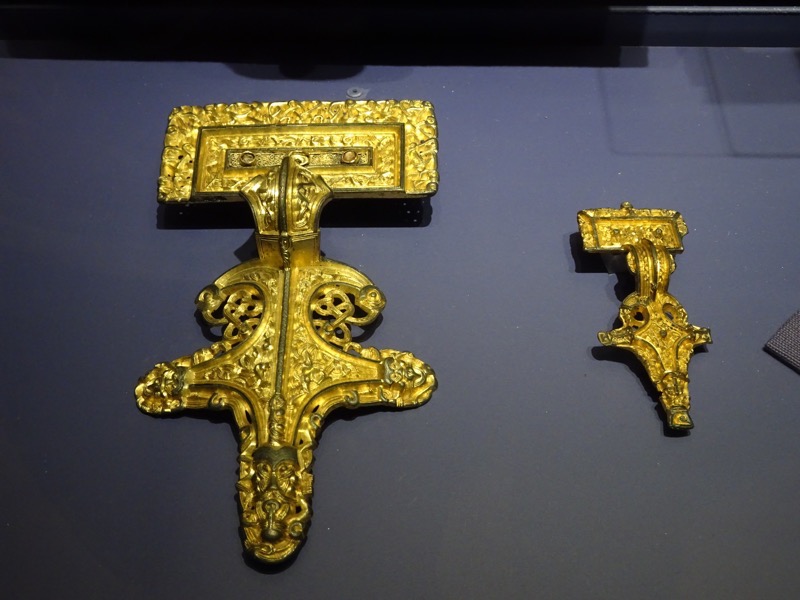
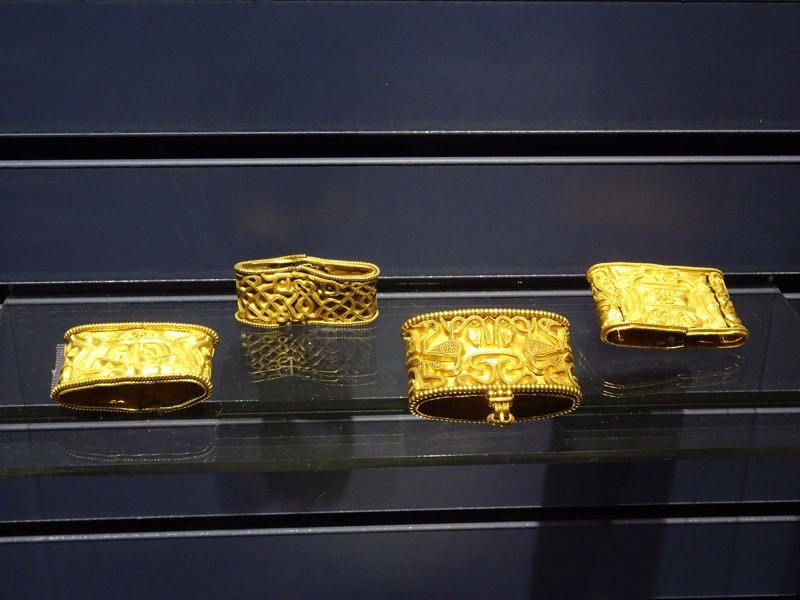
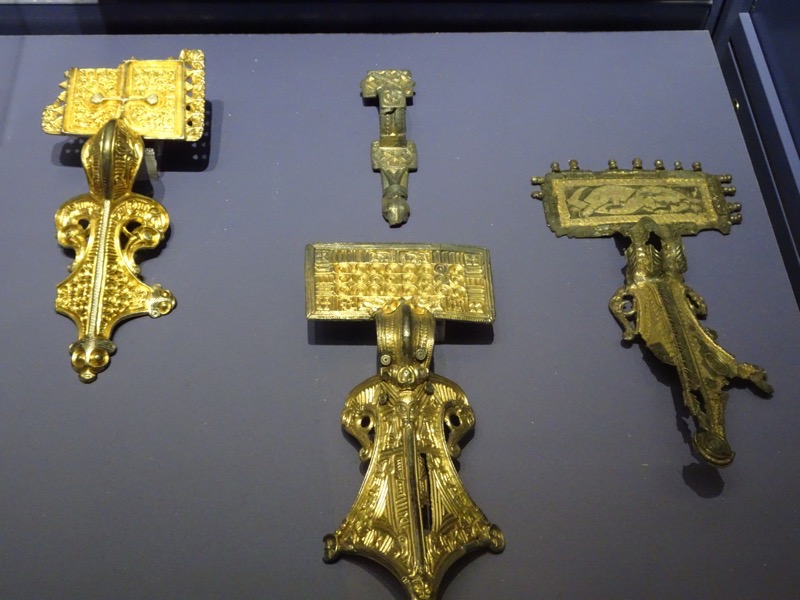
 Belt mounts.
Belt mounts. 



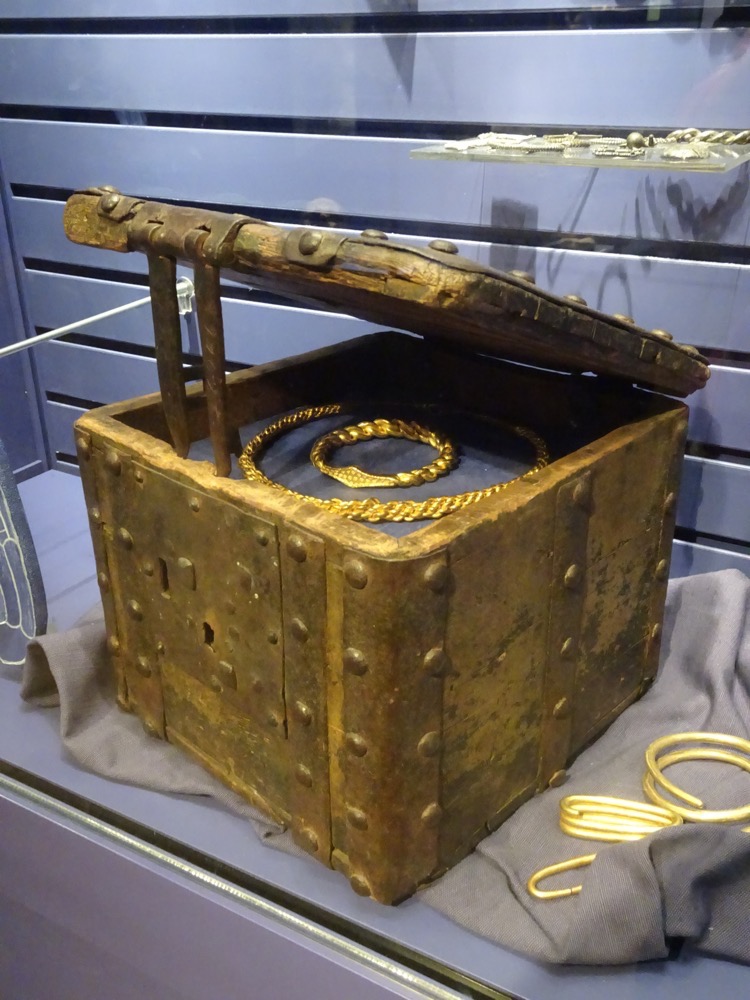

 And on the way out – back to the chaos.
And on the way out – back to the chaos.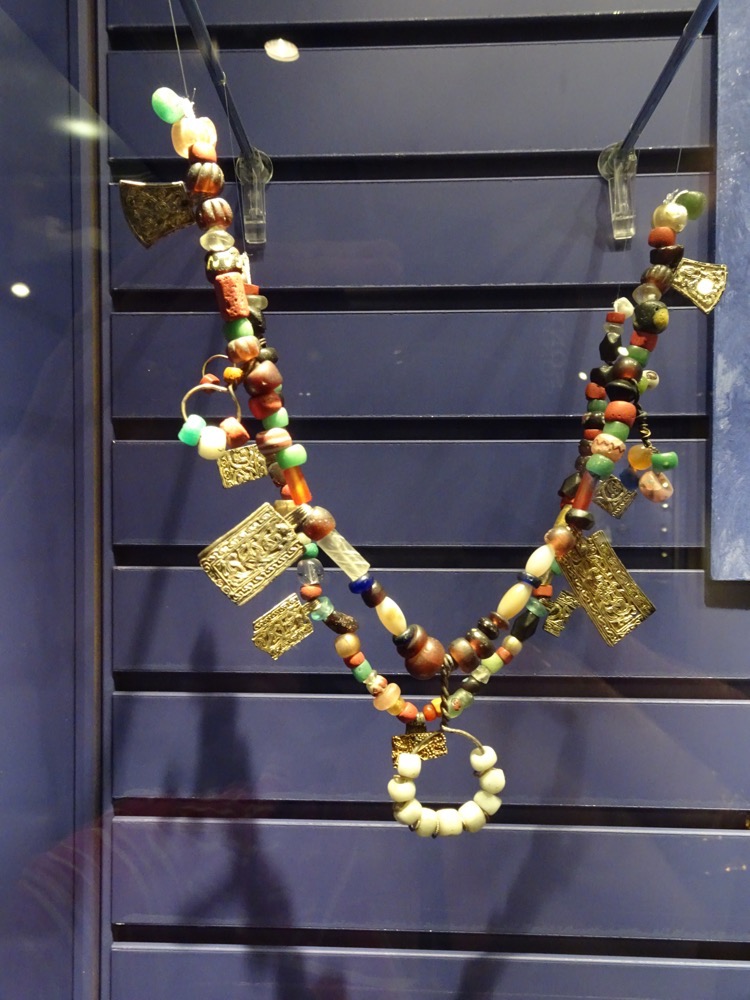 After this we went back to town, did a bit of proper touristing… you know, cruised the souvenir shops, stopped for a pint at the Dr Jeckyll pub, walked along the waterfront and checked out the multi-cultural festival being held in Oslo’s town centre. From there it was back to the ship! 🙂
After this we went back to town, did a bit of proper touristing… you know, cruised the souvenir shops, stopped for a pint at the Dr Jeckyll pub, walked along the waterfront and checked out the multi-cultural festival being held in Oslo’s town centre. From there it was back to the ship! 🙂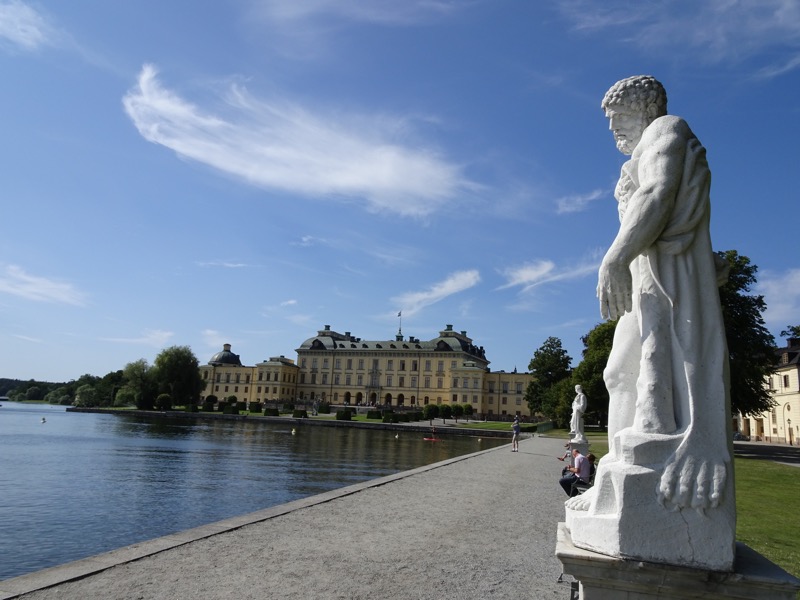
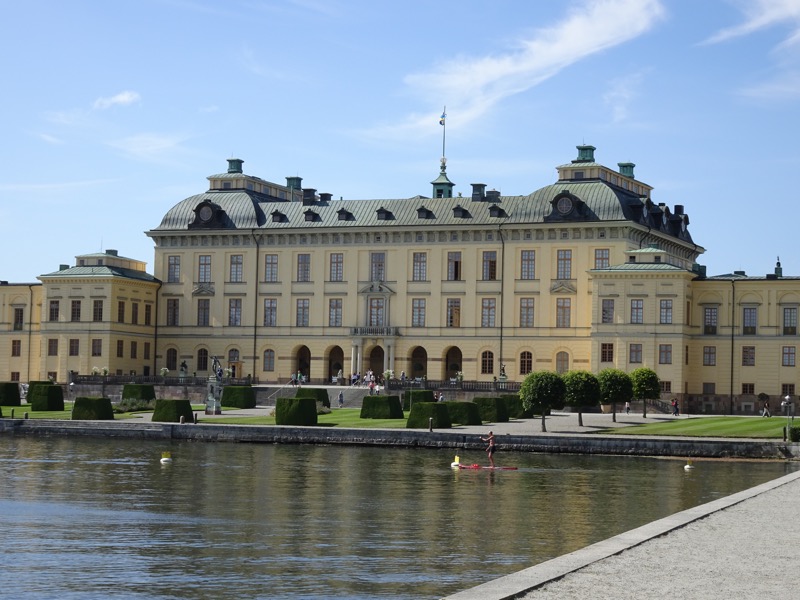
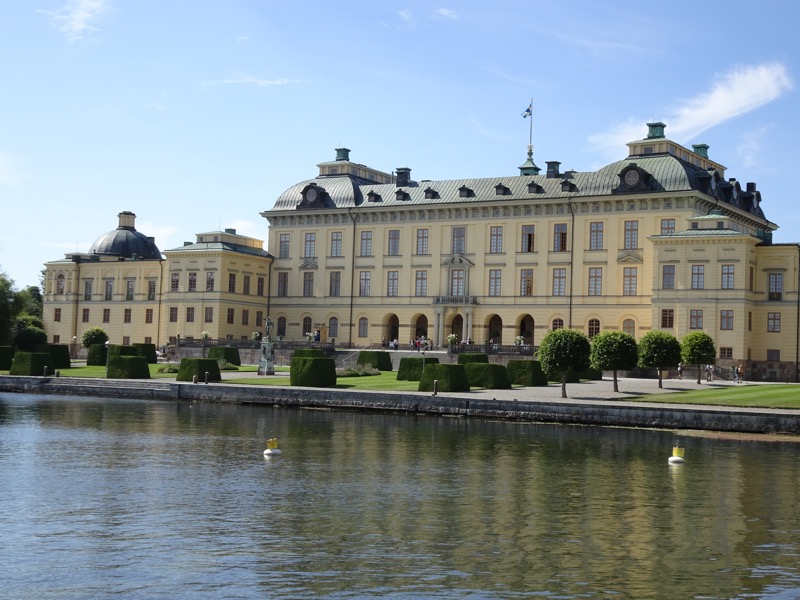 The palace and its grounds have seen many alterations and additions over the past 400 years. The main innovations, of course, were adding electricity, heating, sewage, and water lines, followed by a major roof replacement on the castle in 1907 to 1913. The upkeep on these palatial homes must be phenomenally expensive. From the 70s to the late 90s, several areas of the palace were restored and completely rebuilt. The wonderful library and the national hall received a much-needed make over, and fire protection systems installed throughout the palace.
The palace and its grounds have seen many alterations and additions over the past 400 years. The main innovations, of course, were adding electricity, heating, sewage, and water lines, followed by a major roof replacement on the castle in 1907 to 1913. The upkeep on these palatial homes must be phenomenally expensive. From the 70s to the late 90s, several areas of the palace were restored and completely rebuilt. The wonderful library and the national hall received a much-needed make over, and fire protection systems installed throughout the palace.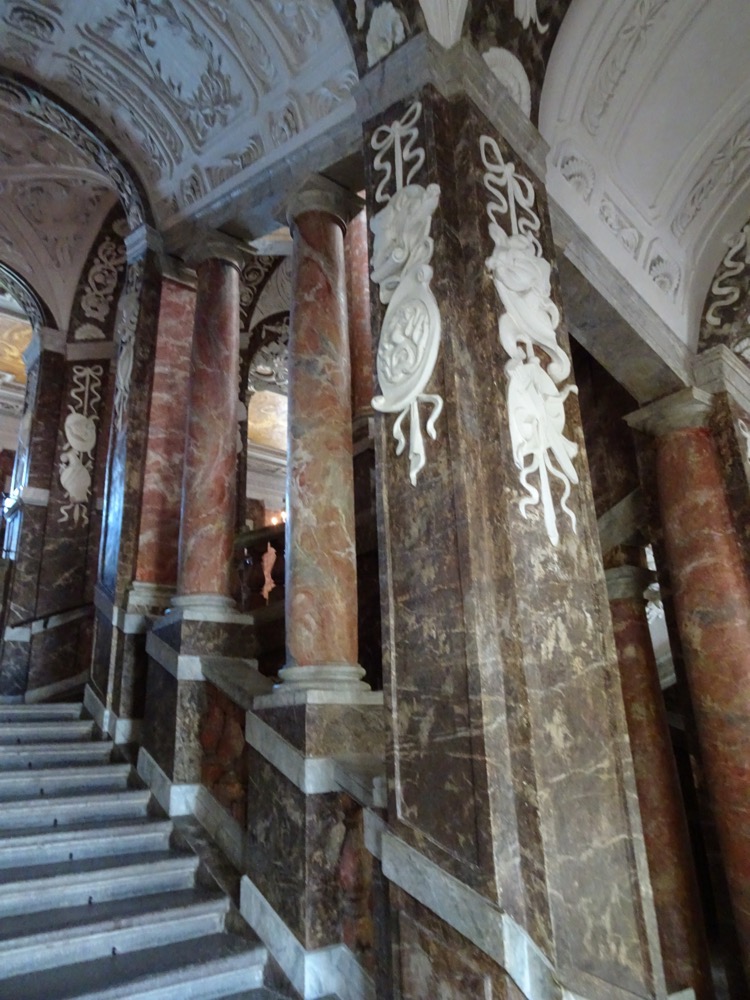
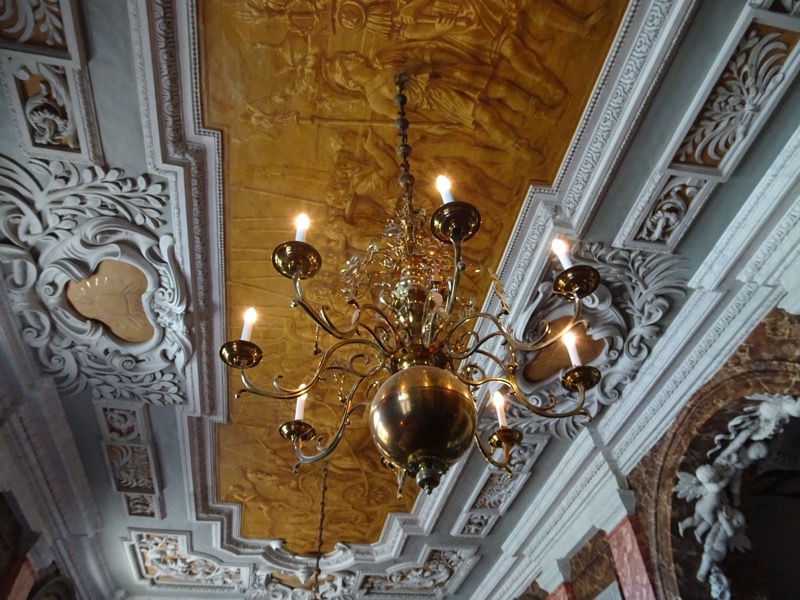 Later, in 1661, the Queen Dowager Regent (great title), Hedwig Eleanora bought the castle, but just as her Queen of Sweden ended, so too did the castle, and it burned to the ground in December the same year. Hedwig Eleonora then hired the famous architect Nicodemus Tessin the Elder (great name) to redesign and rebuild the castle. The following year, work began on the reconstruction. Unfortunately, when the castle was almost complete in 1681, poor old Nicodemus died, and his son, Nicodemus Tessin the Younger (unoriginal), was left to finish the construction and complete the elaborate interior designs.
Later, in 1661, the Queen Dowager Regent (great title), Hedwig Eleanora bought the castle, but just as her Queen of Sweden ended, so too did the castle, and it burned to the ground in December the same year. Hedwig Eleonora then hired the famous architect Nicodemus Tessin the Elder (great name) to redesign and rebuild the castle. The following year, work began on the reconstruction. Unfortunately, when the castle was almost complete in 1681, poor old Nicodemus died, and his son, Nicodemus Tessin the Younger (unoriginal), was left to finish the construction and complete the elaborate interior designs.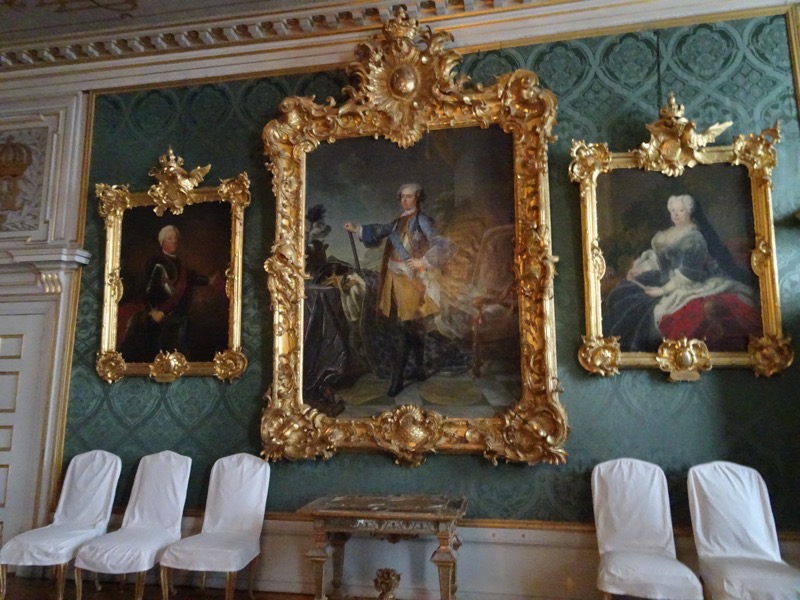 Throughout this period of reconstruction, Hedwig Eleonora was head of the protectorate for the underage King, Charles XI of Sweden (1660-1672). Sweden had developed to be a powerful country after the Peace of Westphalia, and the position of Dowager-Queen who was essentially the ruler of Sweden demanded a residence conveniently close to Stockholm for official royal business.
Throughout this period of reconstruction, Hedwig Eleonora was head of the protectorate for the underage King, Charles XI of Sweden (1660-1672). Sweden had developed to be a powerful country after the Peace of Westphalia, and the position of Dowager-Queen who was essentially the ruler of Sweden demanded a residence conveniently close to Stockholm for official royal business.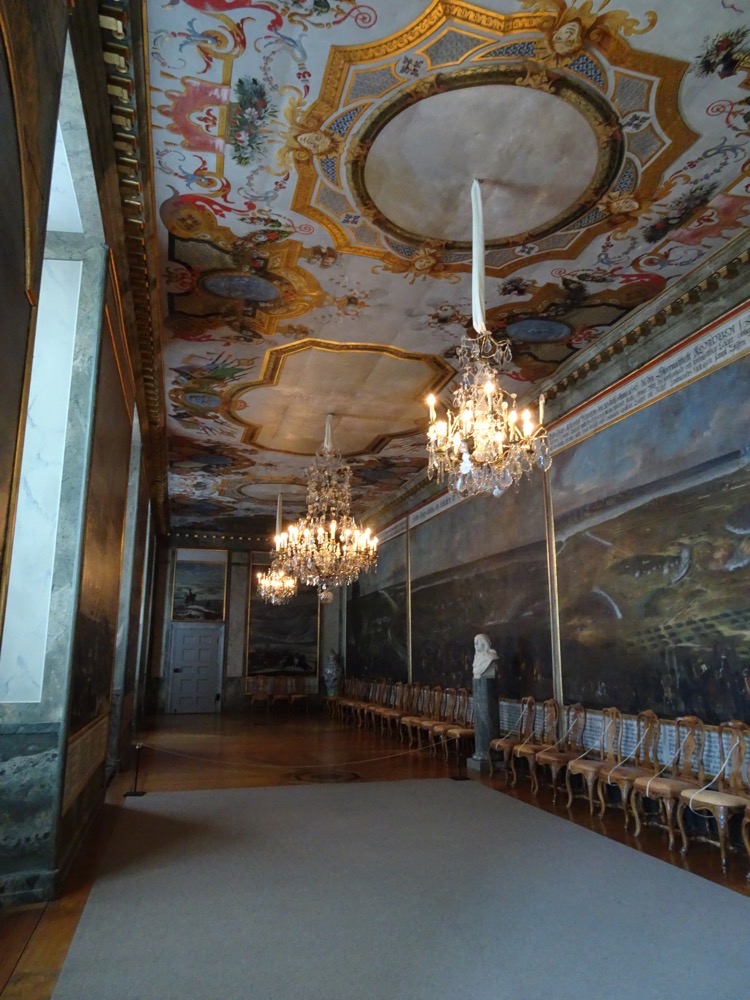
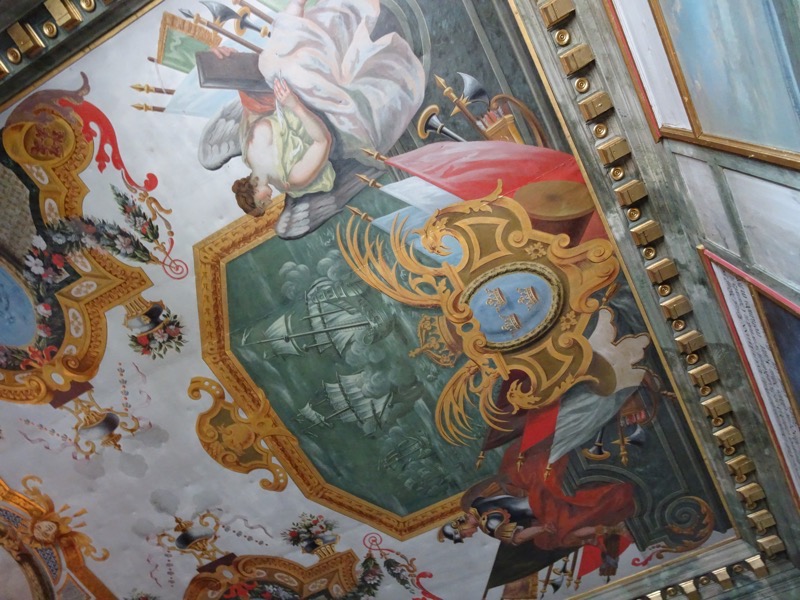

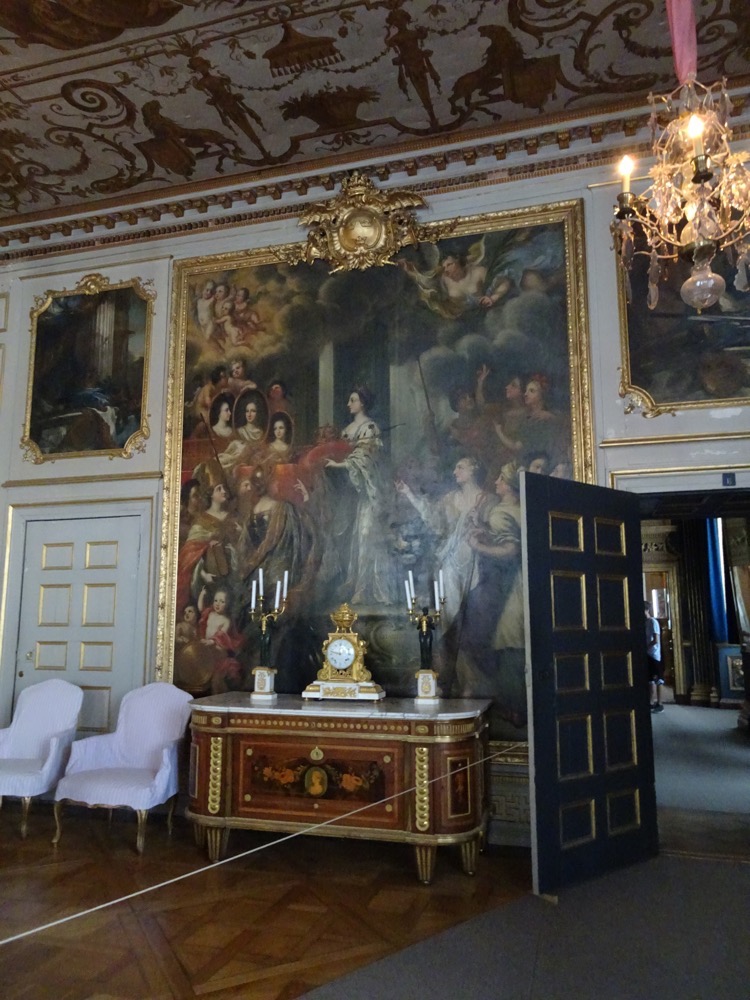 During the later reign of kings Charles XI and Charles XII, the royal court was often at the palace and it was a favoured place for hunting parties. Hedwig Eleonora used the palace extensively as a summer residence until her death in 1715.
During the later reign of kings Charles XI and Charles XII, the royal court was often at the palace and it was a favoured place for hunting parties. Hedwig Eleonora used the palace extensively as a summer residence until her death in 1715.
 Queen’s formal bed chamber – primarily used as an audience chamber.
Queen’s formal bed chamber – primarily used as an audience chamber.
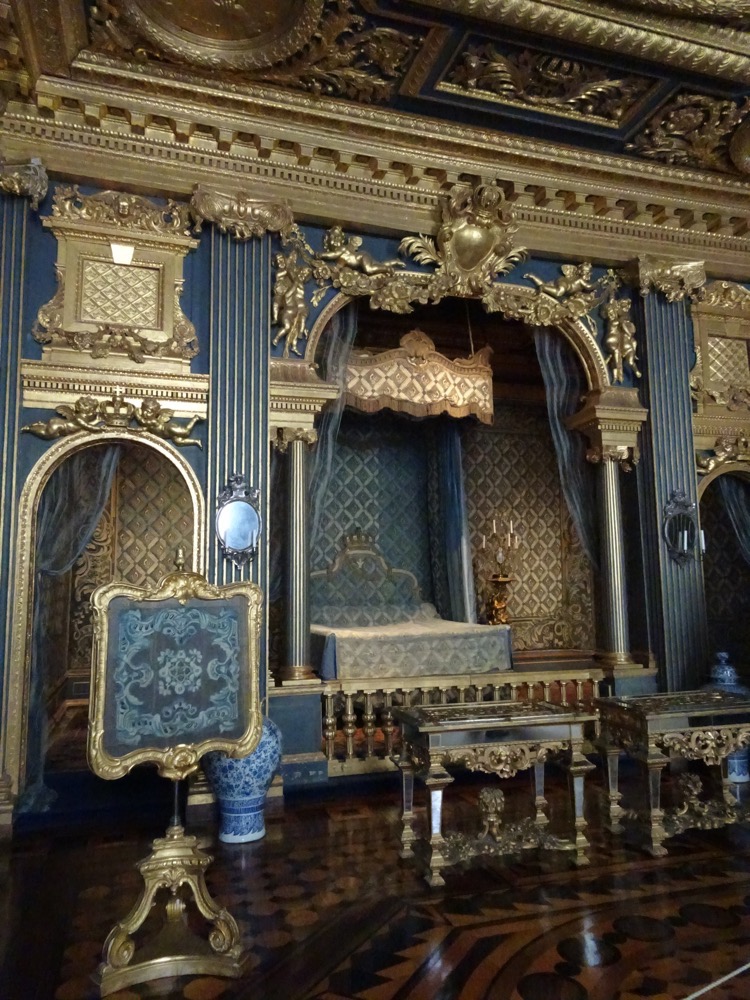
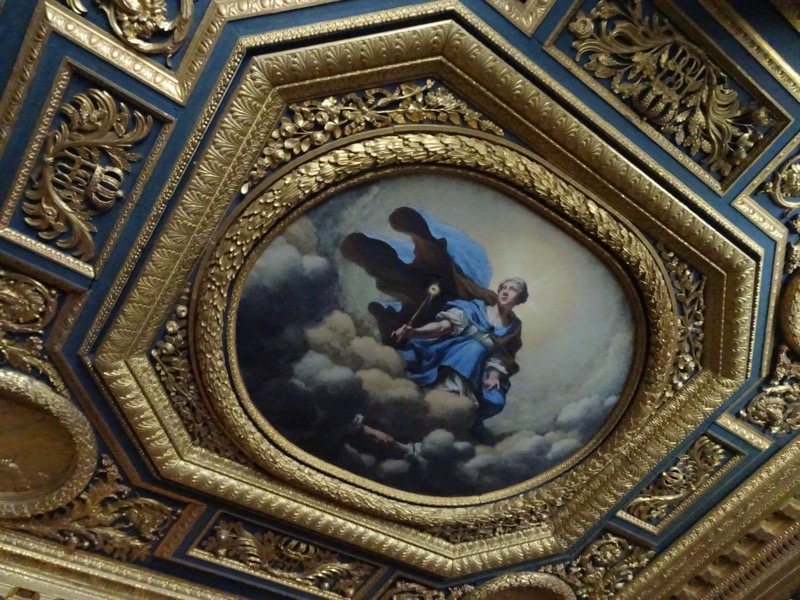
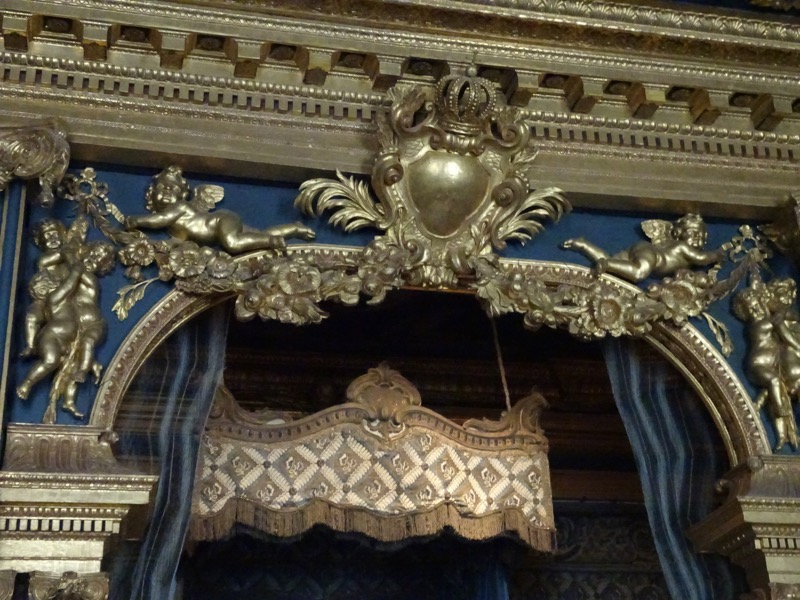 Salon for ladies in waiting.
Salon for ladies in waiting.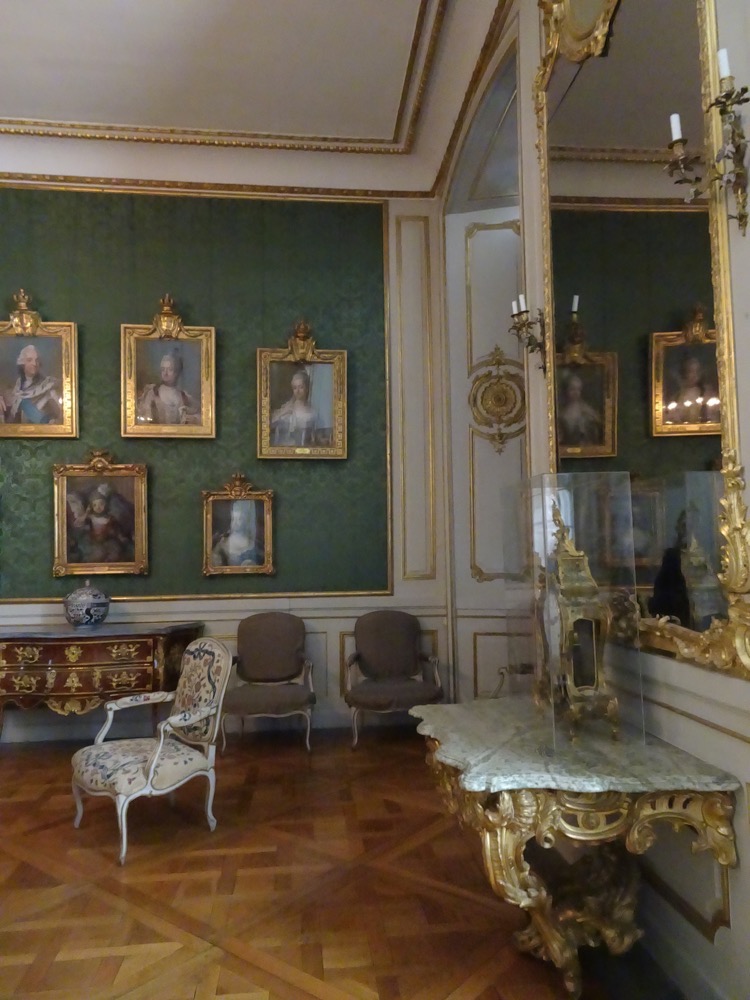
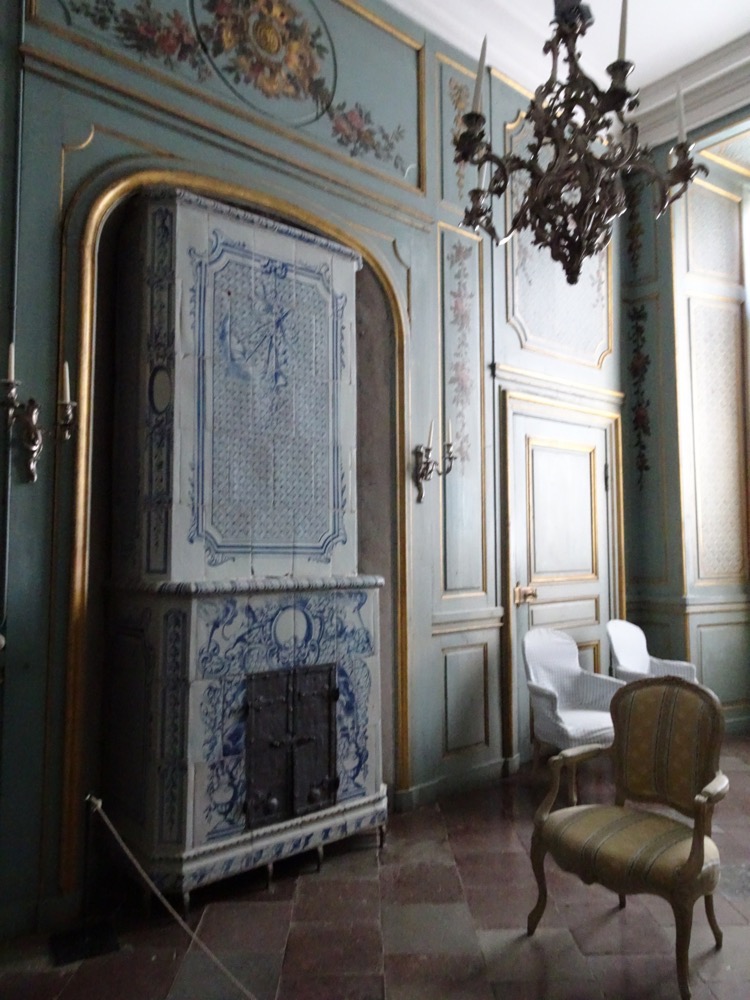
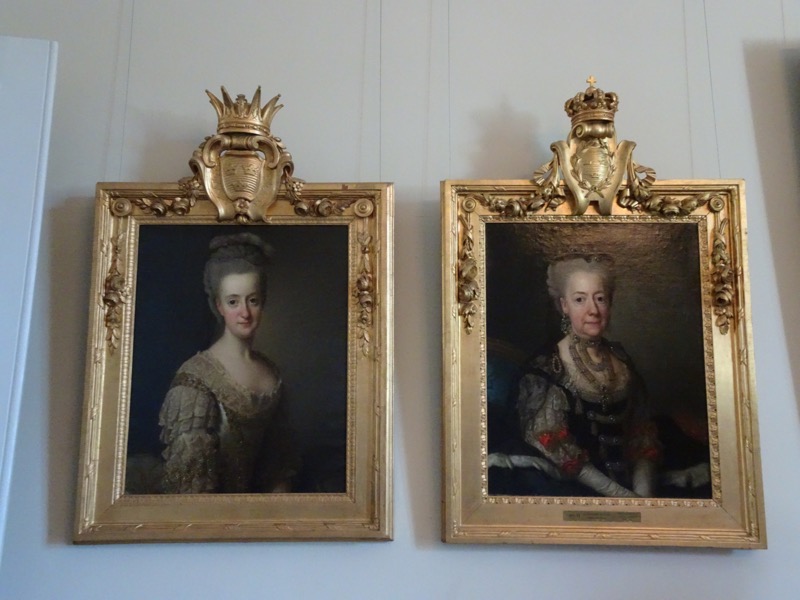 Drottningholms Slott Bibliotekek
Drottningholms Slott Bibliotekek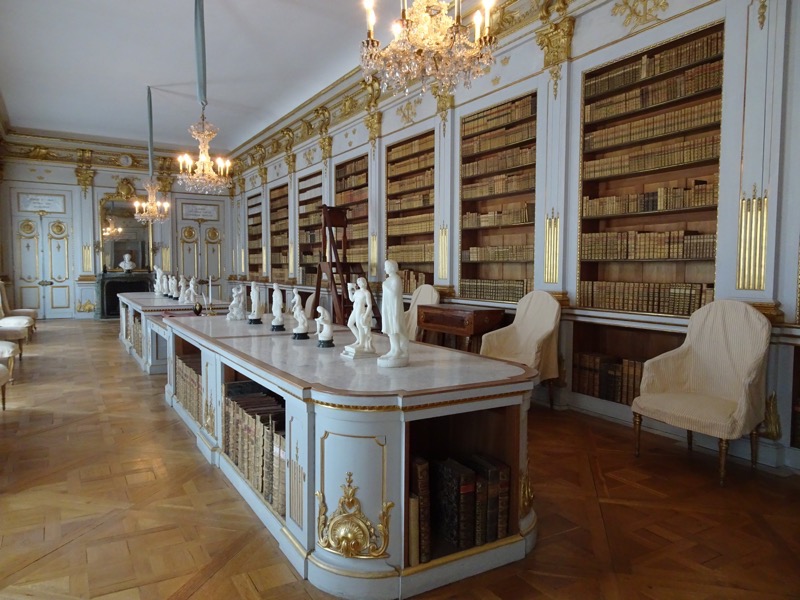

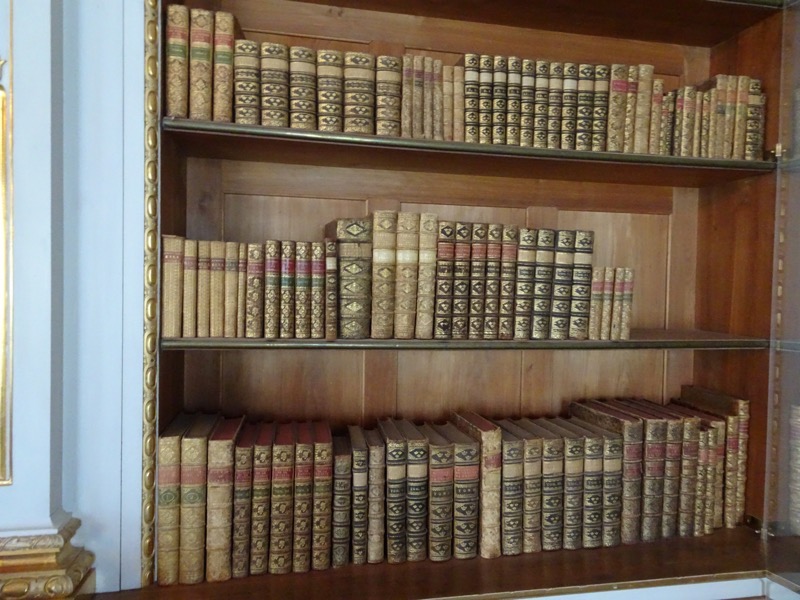 Palace Hall staircase.
Palace Hall staircase.

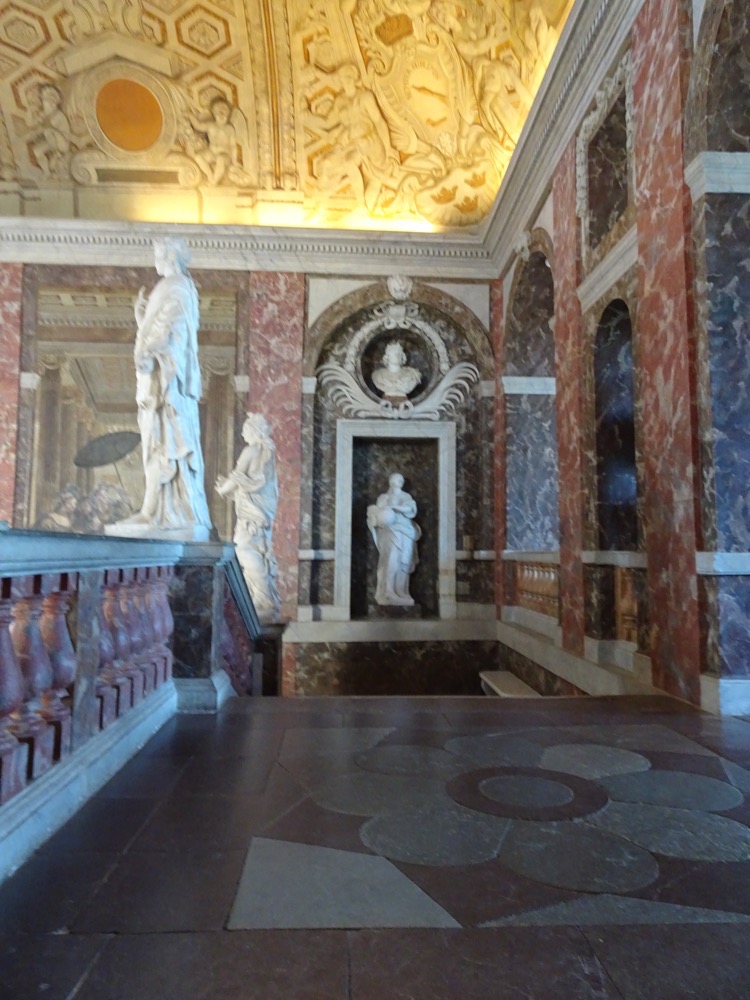
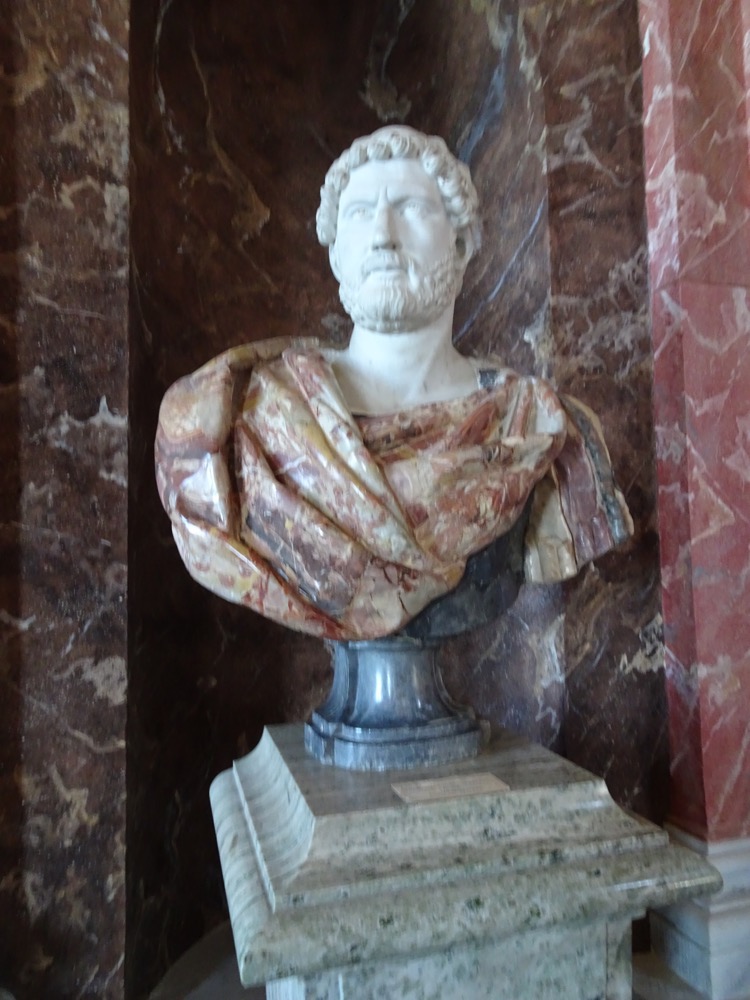

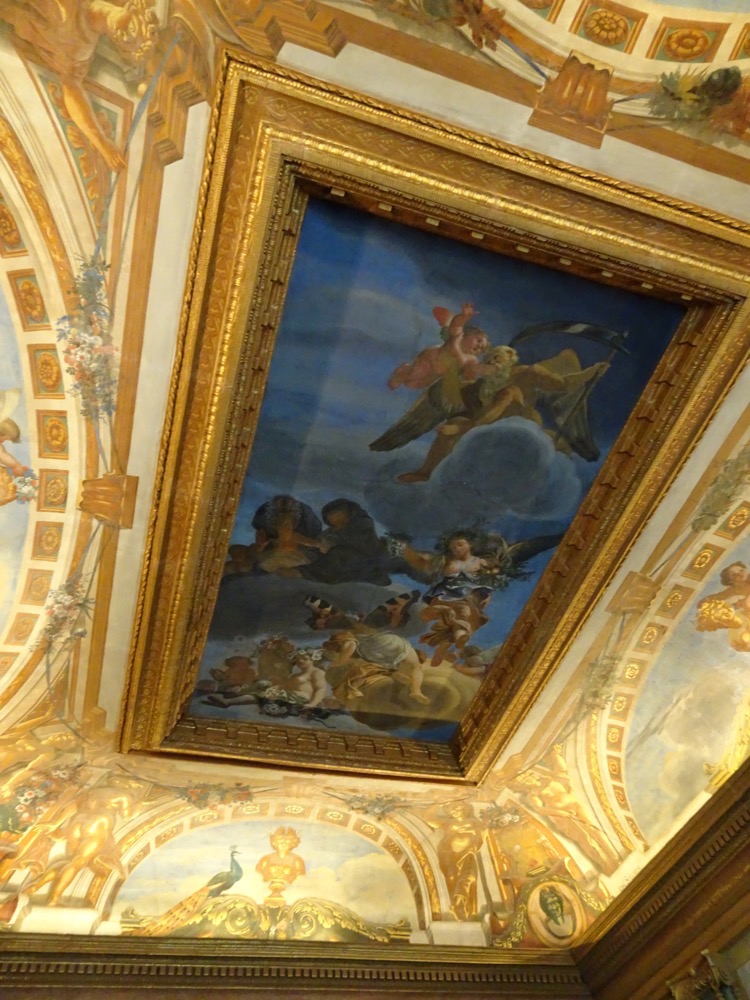
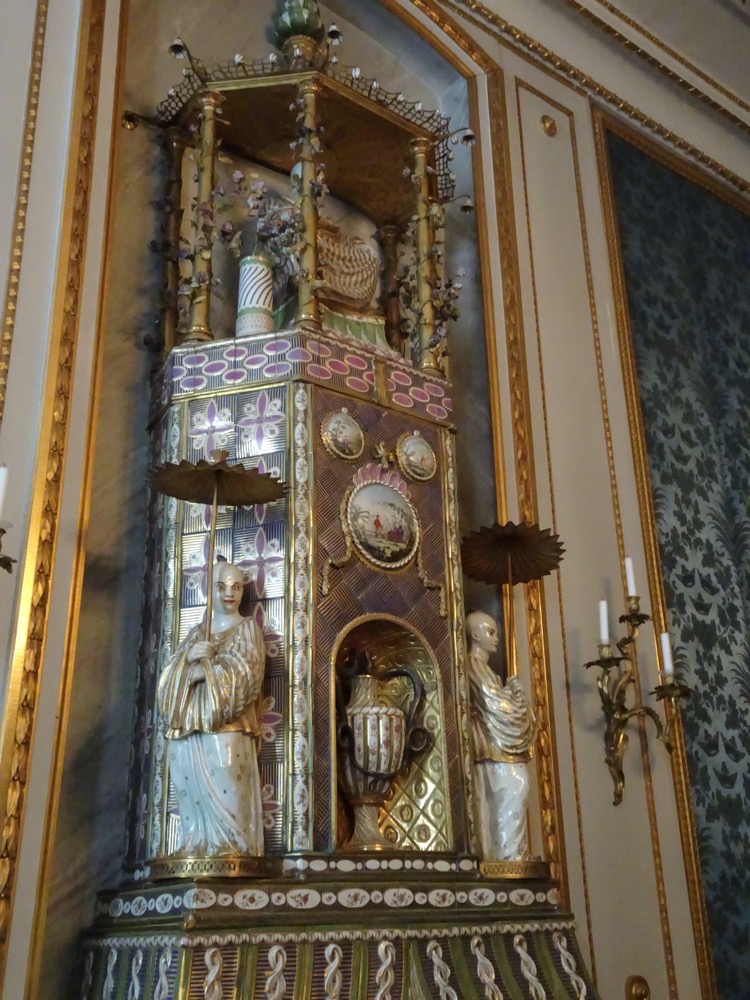
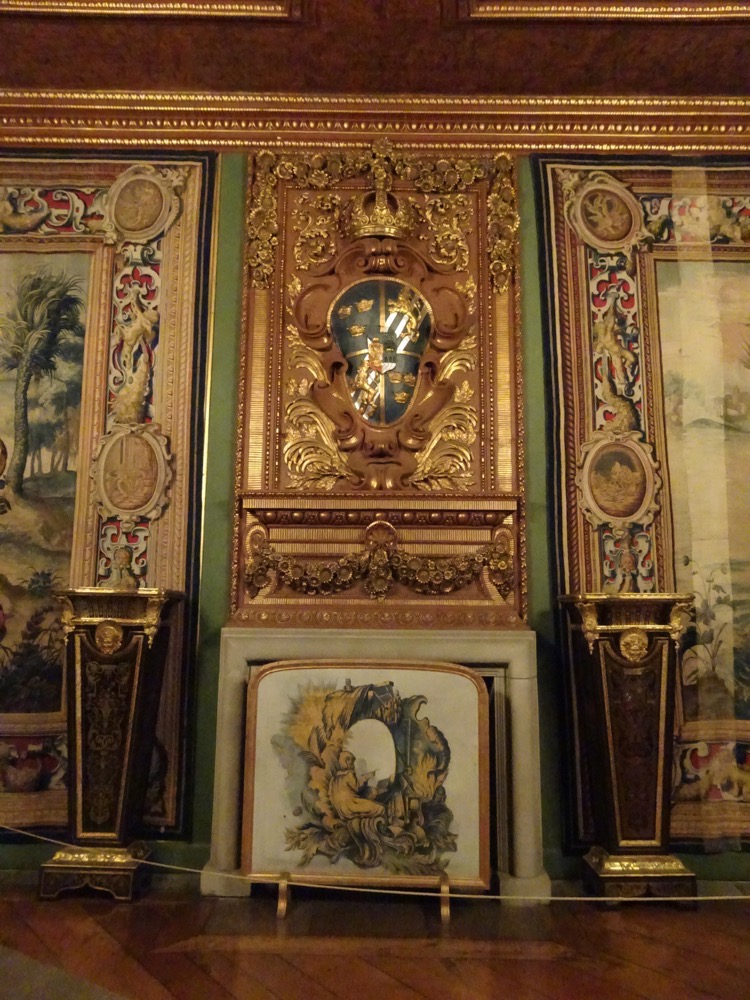
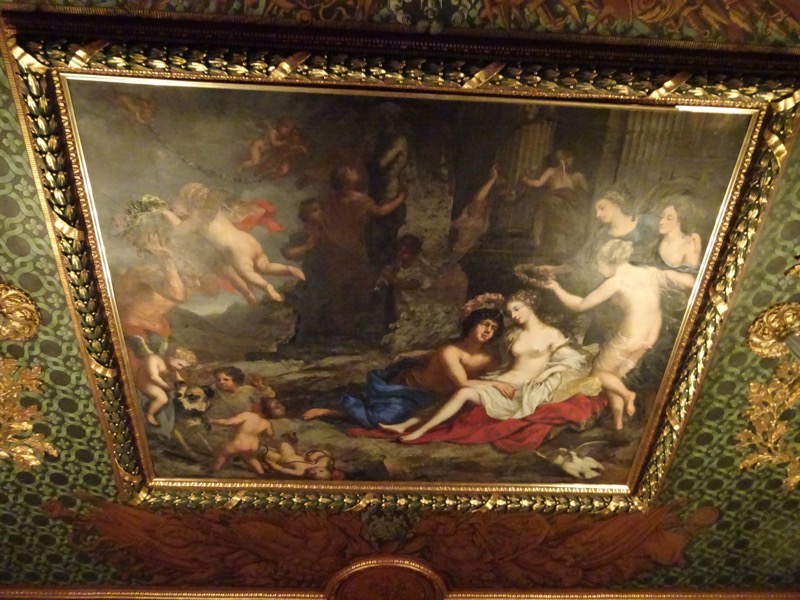
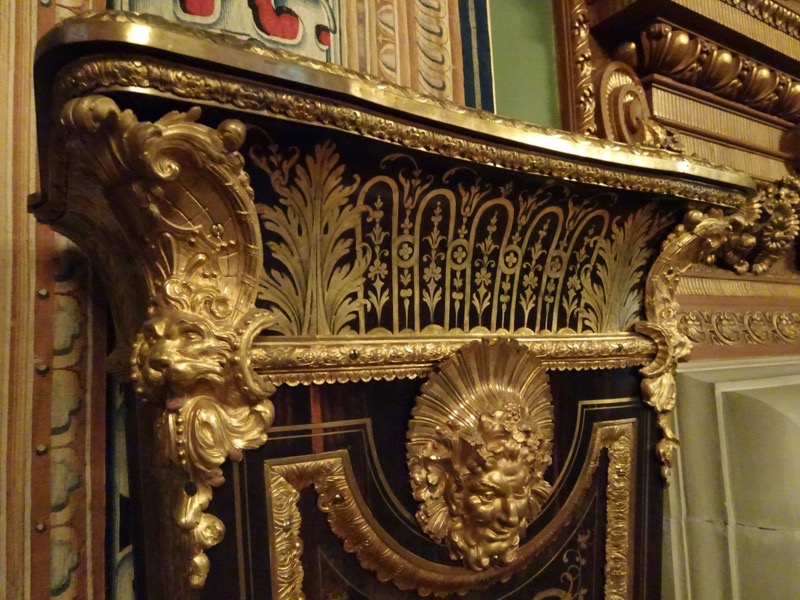
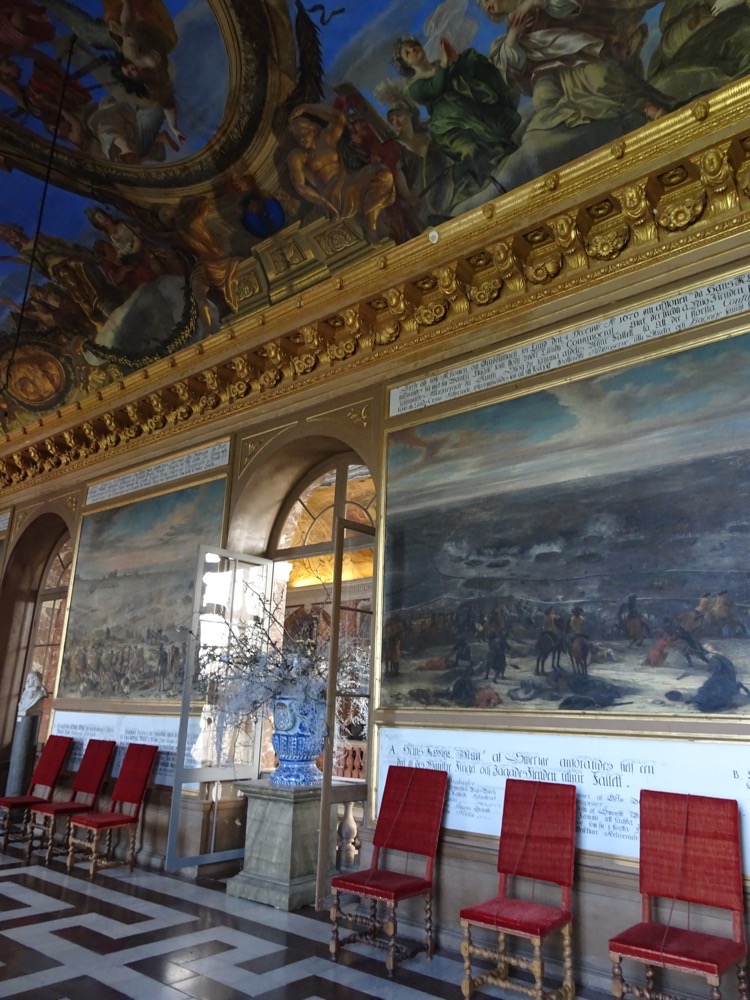
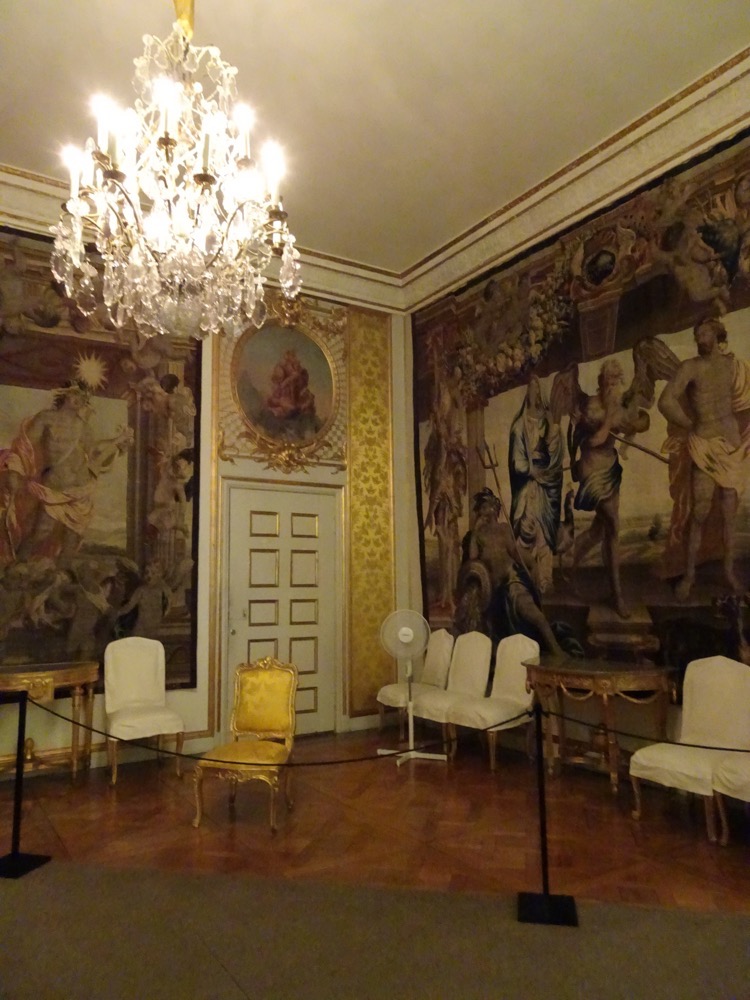 Grand Hall
Grand Hall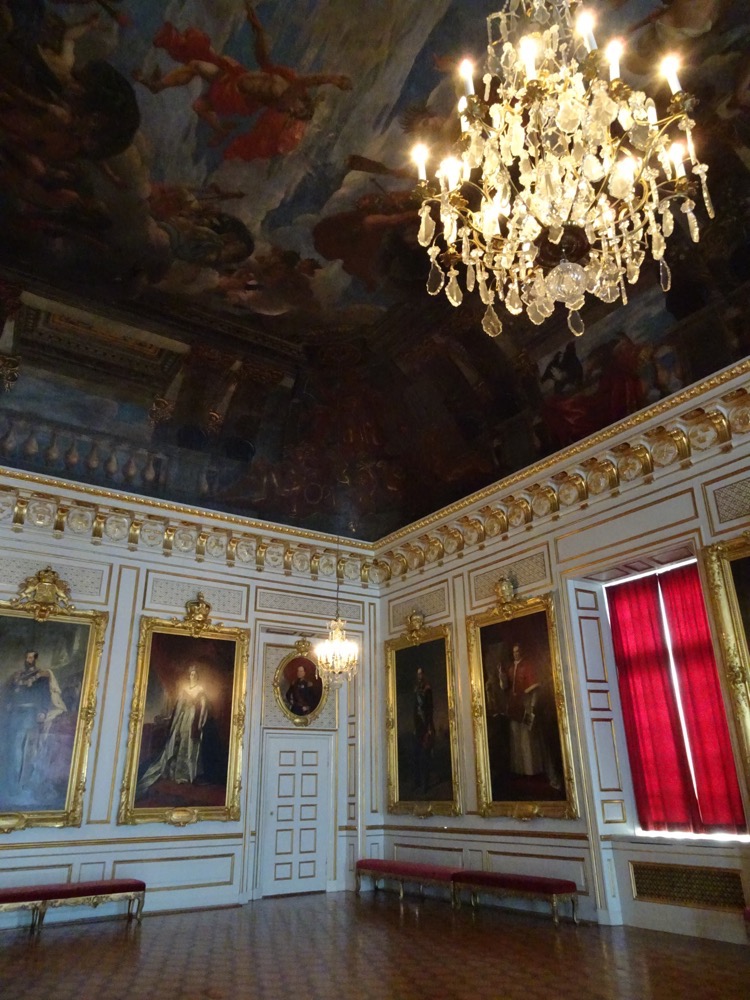
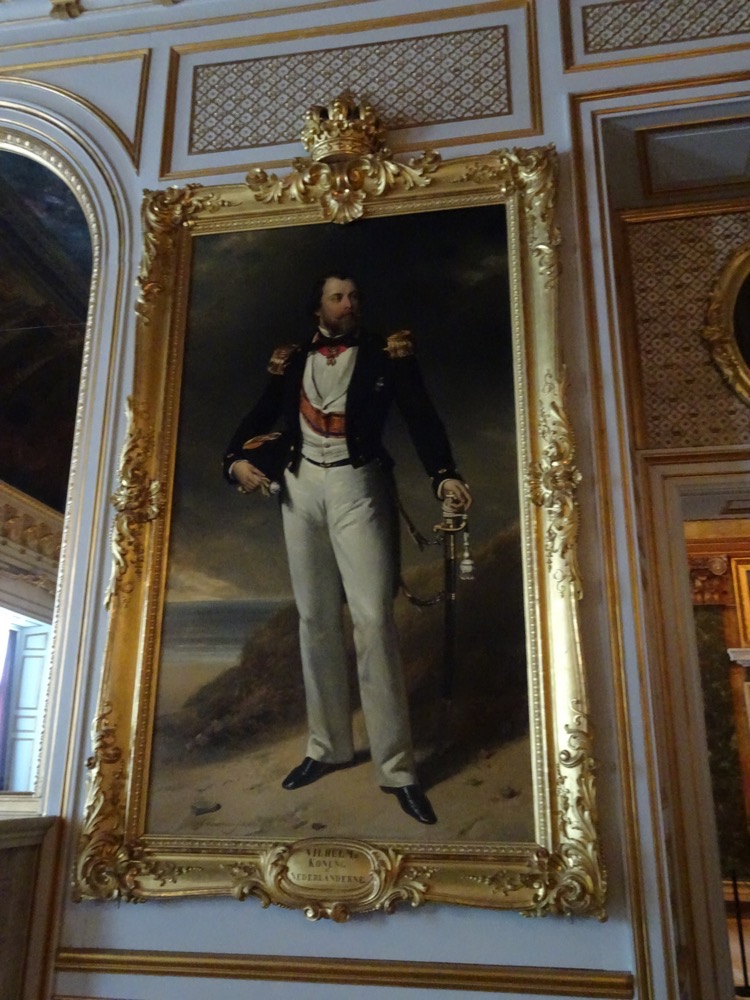
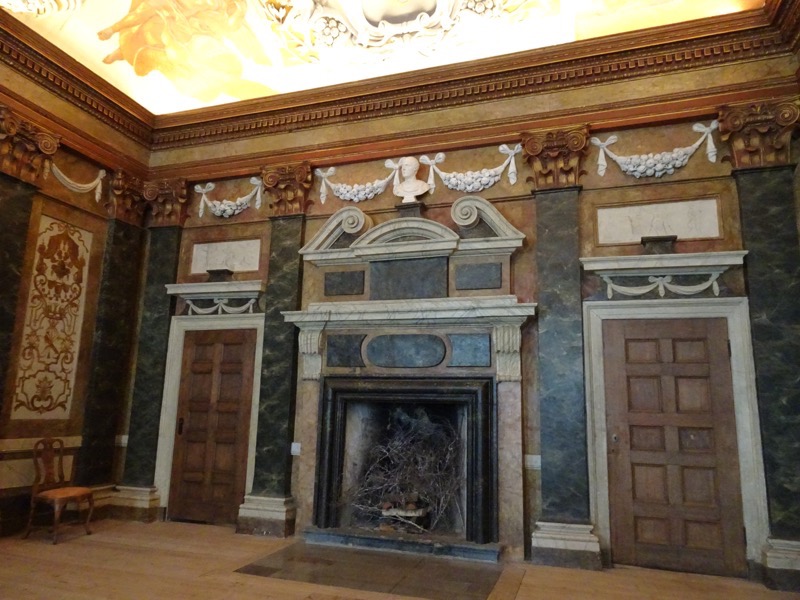

 View over the baroque gardens as seen from the palace windows.
View over the baroque gardens as seen from the palace windows.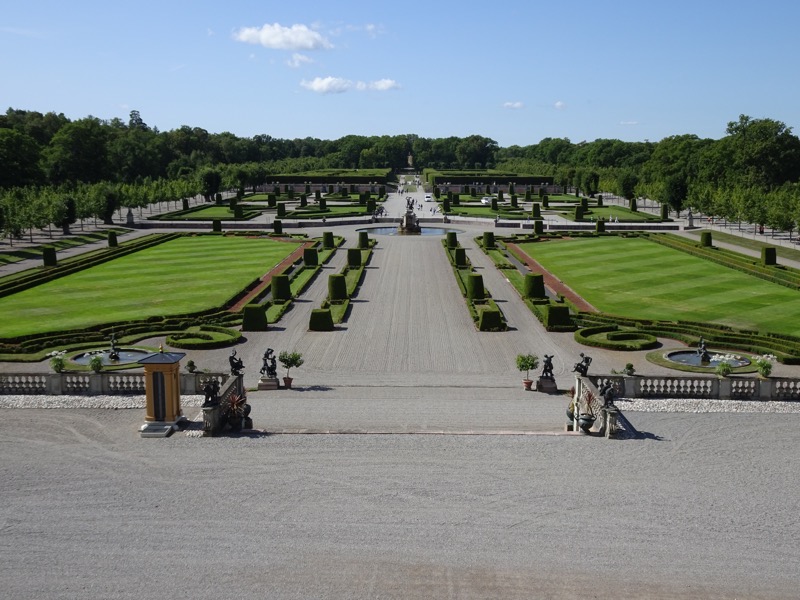
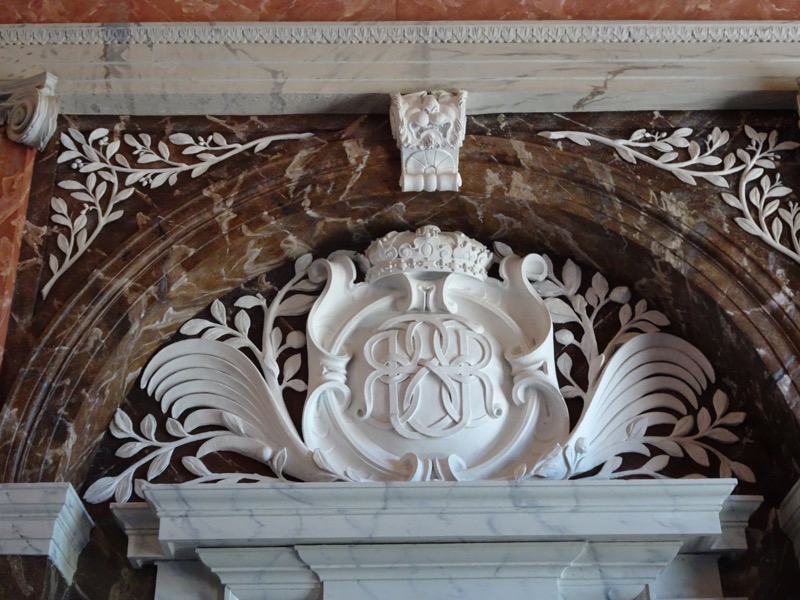
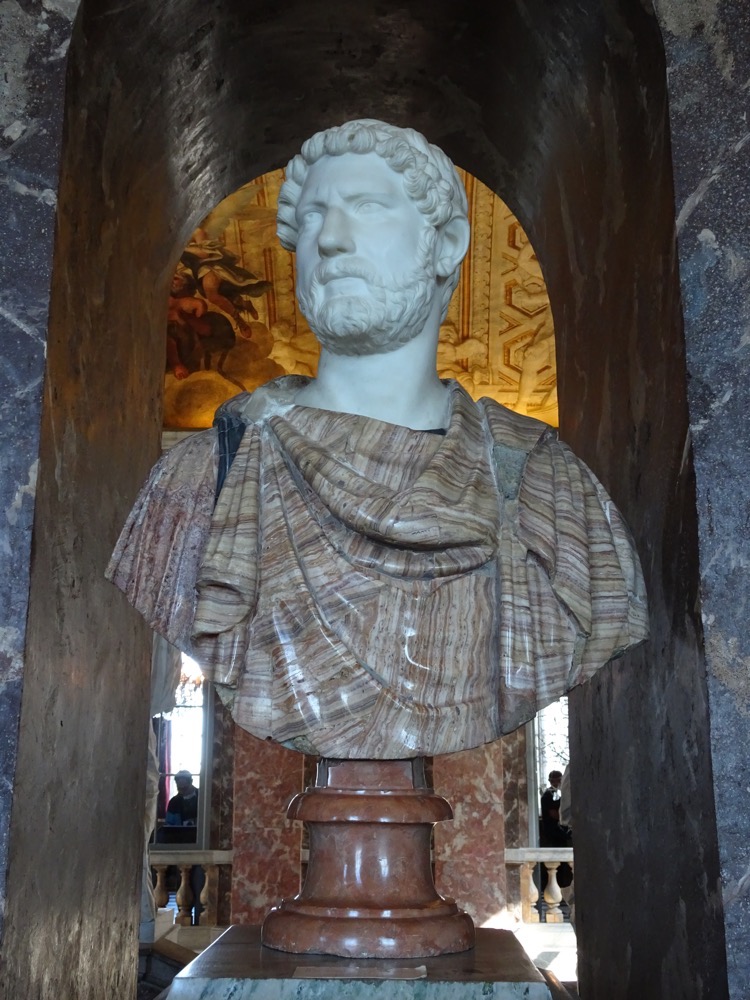 Odd littel chamber under the palace, show casing blue and white china.
Odd littel chamber under the palace, show casing blue and white china.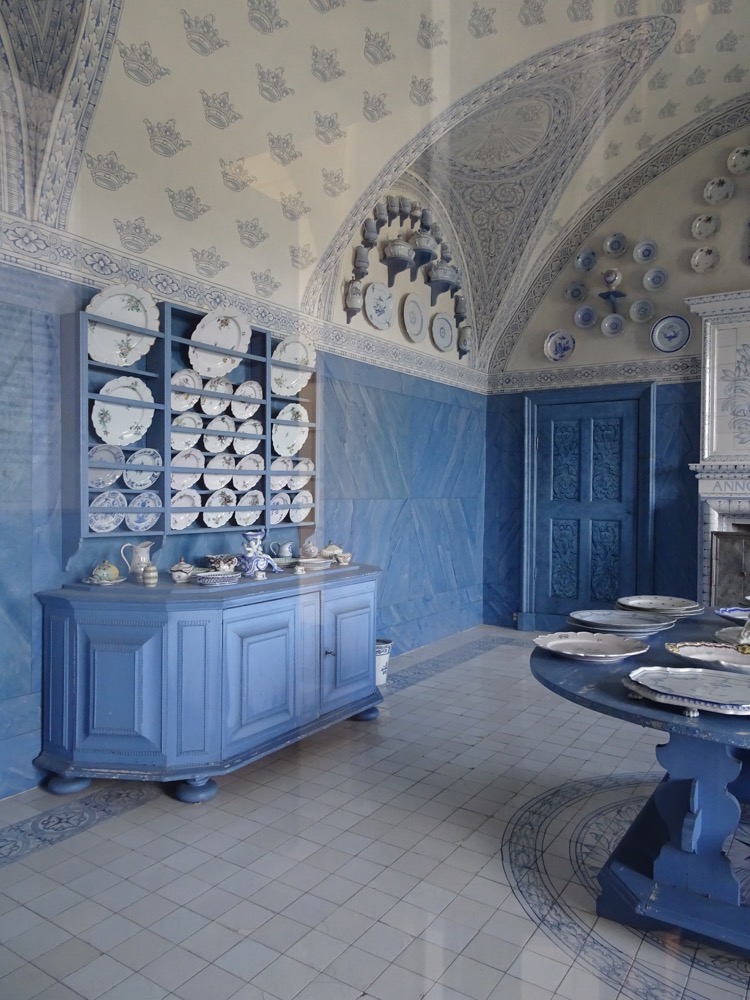
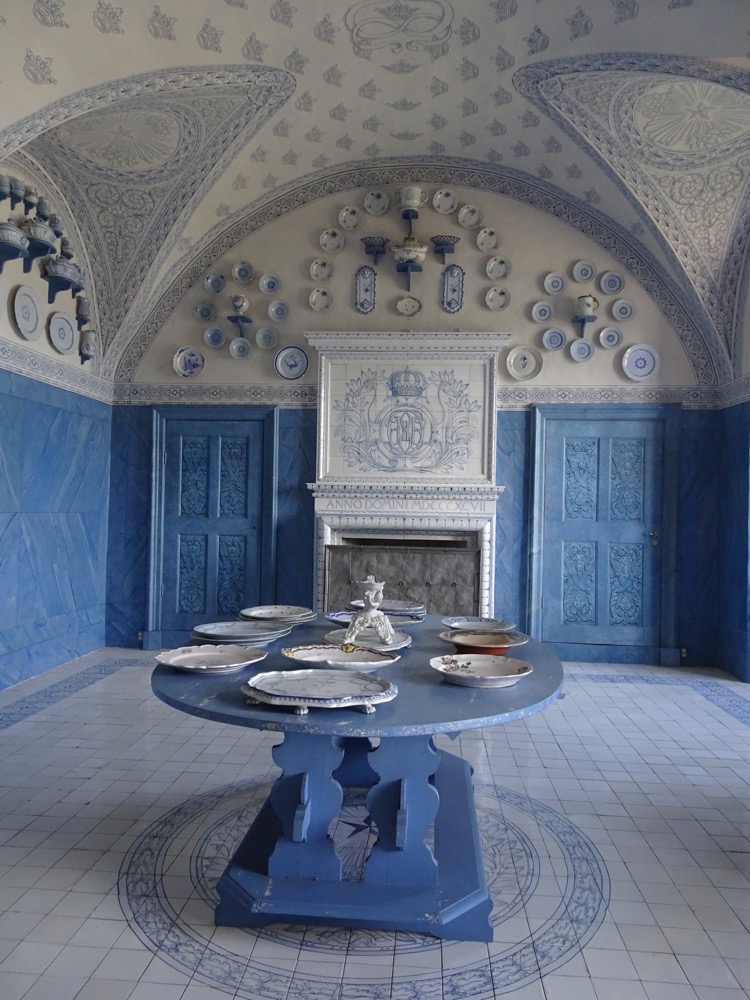

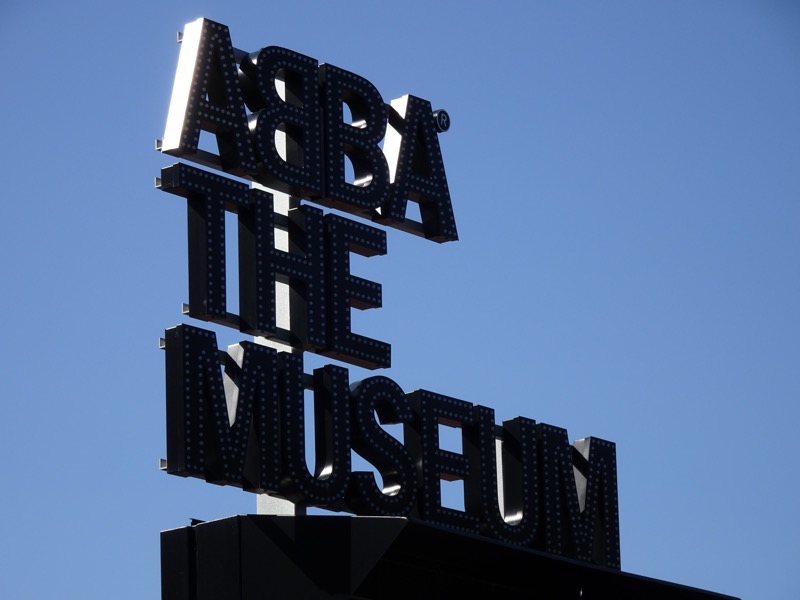 Another short bus ride, a short wait to buy a $38 ticket (*sticker shock ensues*), and then ushered into the depths of the building to the tune of ‘Ring, Ring’ to be greeted by a very neon’d and glitter’d kinda of ABBA shrine.
Another short bus ride, a short wait to buy a $38 ticket (*sticker shock ensues*), and then ushered into the depths of the building to the tune of ‘Ring, Ring’ to be greeted by a very neon’d and glitter’d kinda of ABBA shrine.
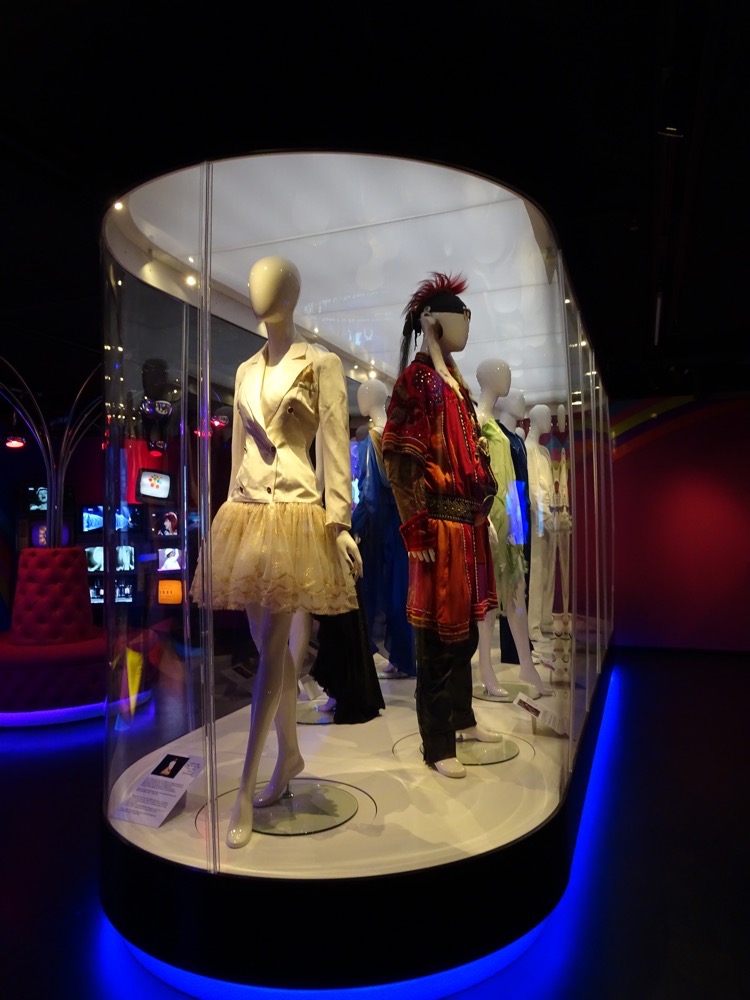 On display were many of the group’s outlandish costumes – deliberately designed to grab attention and cement ABBA in the psyche of the music loving public, for many years their costume design became more and more outlandish until Bjorn himself declared that they would wear anything ‘no sensible person would wear’.
On display were many of the group’s outlandish costumes – deliberately designed to grab attention and cement ABBA in the psyche of the music loving public, for many years their costume design became more and more outlandish until Bjorn himself declared that they would wear anything ‘no sensible person would wear’.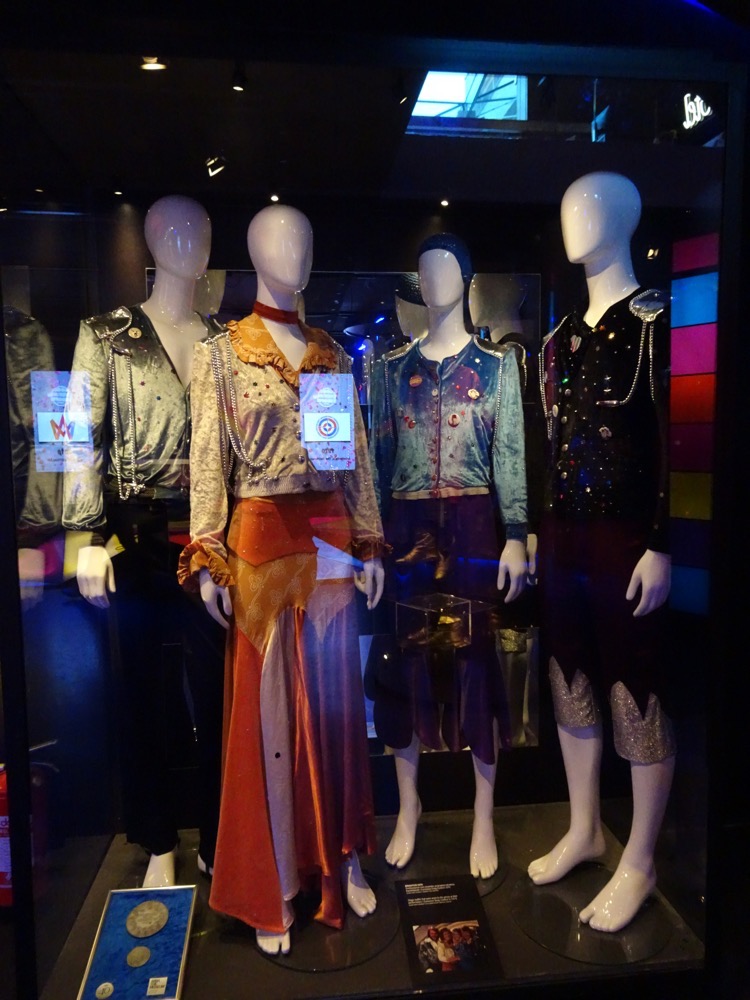 Insta-hit, ‘Ring, Ring’
Insta-hit, ‘Ring, Ring’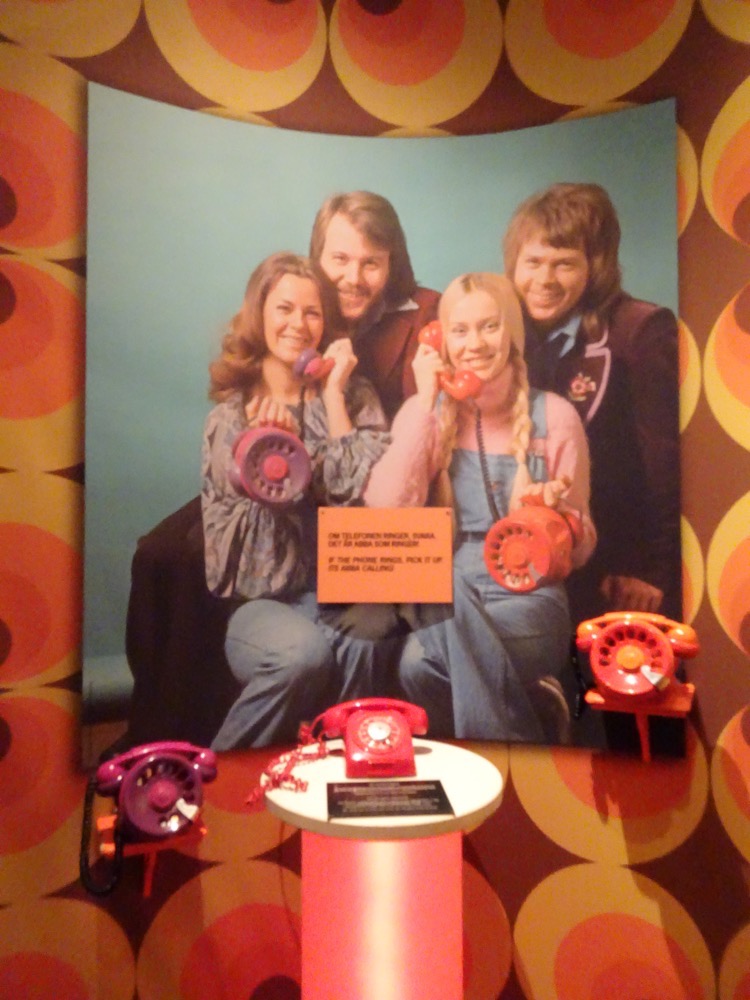 Costumes and instruments from their winning performance at the Eurovision competition that shot them to fame singing ‘Waterloo’.
Costumes and instruments from their winning performance at the Eurovision competition that shot them to fame singing ‘Waterloo’.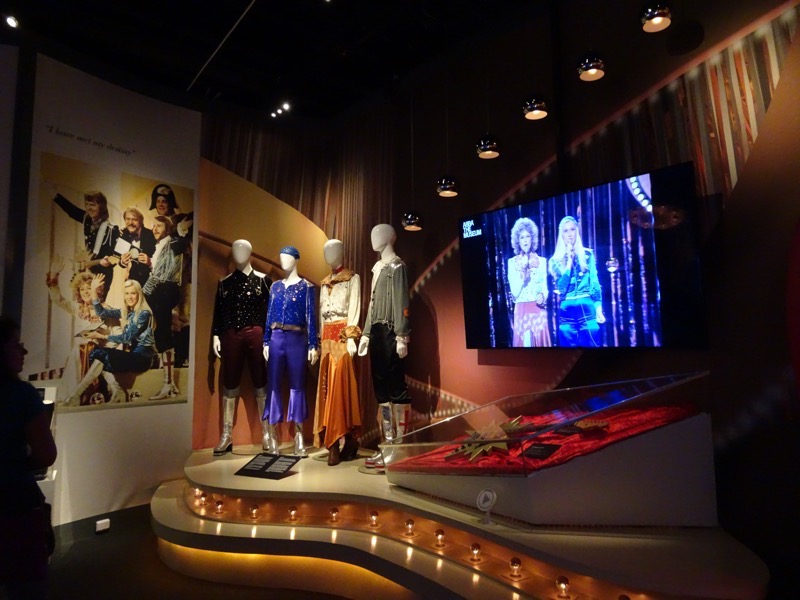

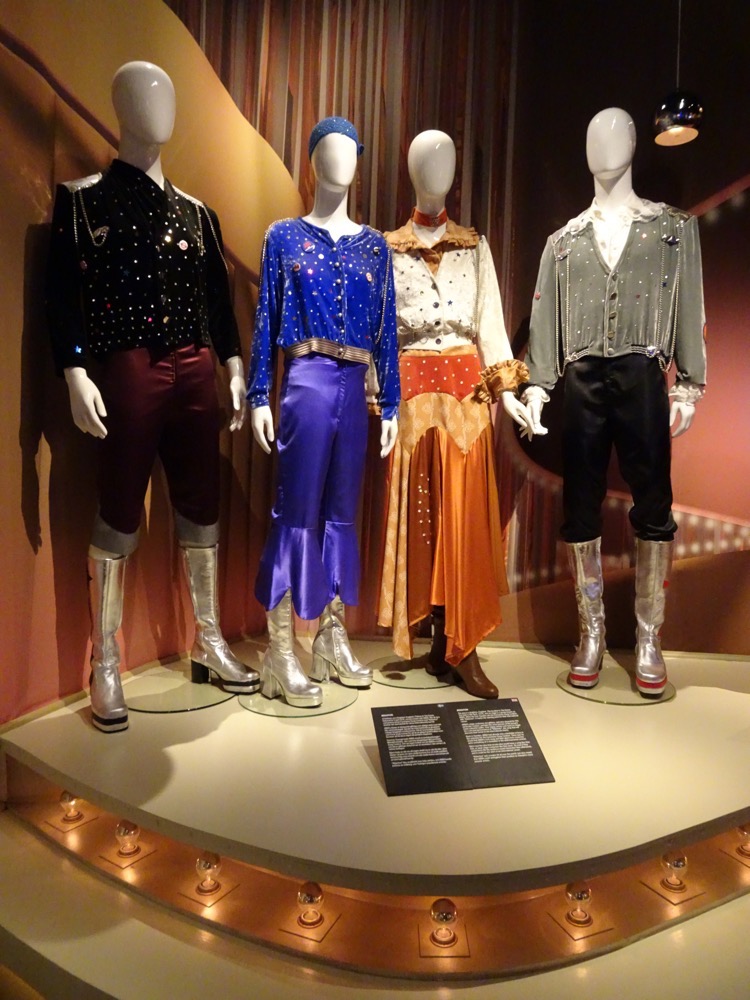
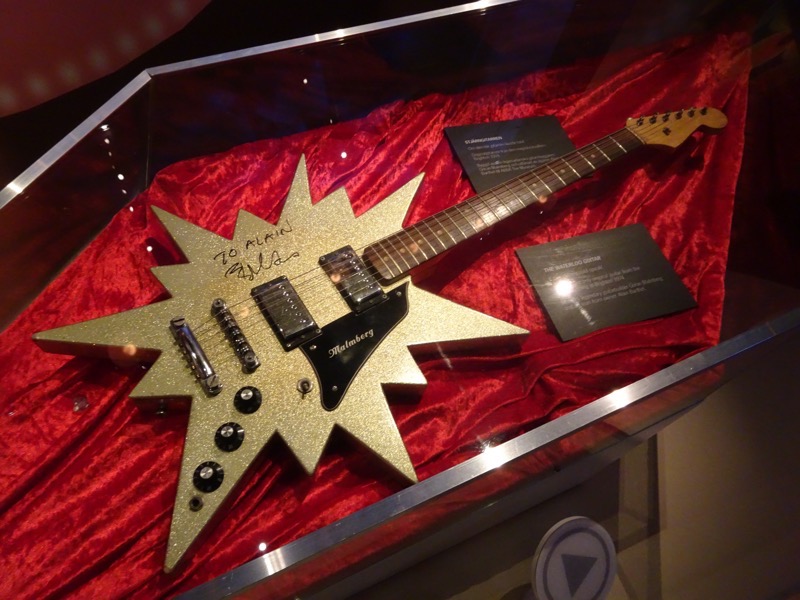
 A restaged copy of their Polar Records office.
A restaged copy of their Polar Records office. The Polar Records recording studio, complete with many of the band’s original instruments.
The Polar Records recording studio, complete with many of the band’s original instruments.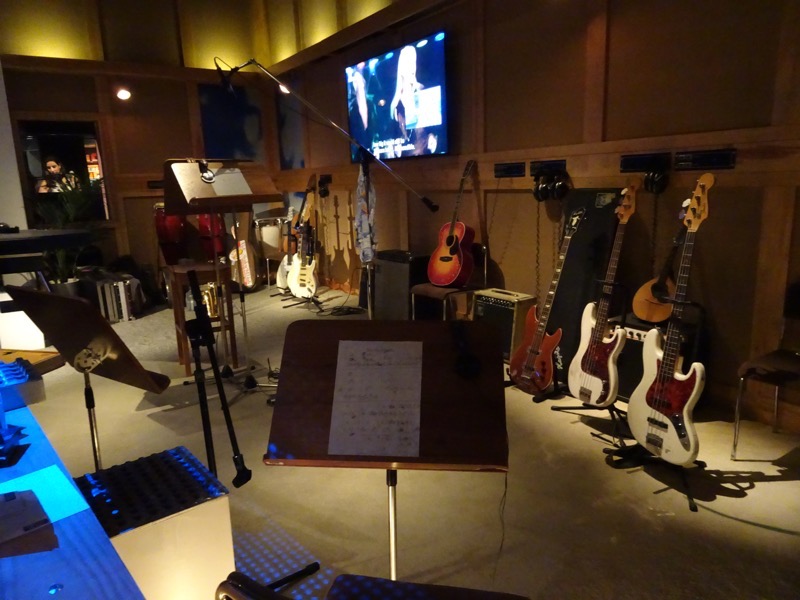
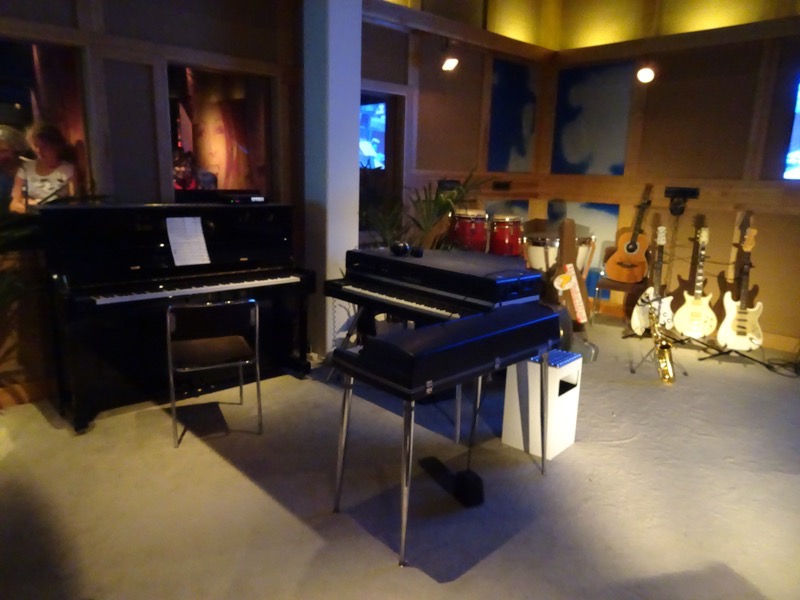 The quaint little white piano at Benny’s cottage in the Stockholm archipelago – many songs were written in this cottage by Benny and Bjorn.
The quaint little white piano at Benny’s cottage in the Stockholm archipelago – many songs were written in this cottage by Benny and Bjorn. ABBA Mania.
ABBA Mania. Early Merchandise – speaking of which, I had an ABBA t-shirt when I was a kid and I absolutely loved it … right up until it got lost when I was swimming once up at the Noosa River near Harry’s Hut.
Early Merchandise – speaking of which, I had an ABBA t-shirt when I was a kid and I absolutely loved it … right up until it got lost when I was swimming once up at the Noosa River near Harry’s Hut.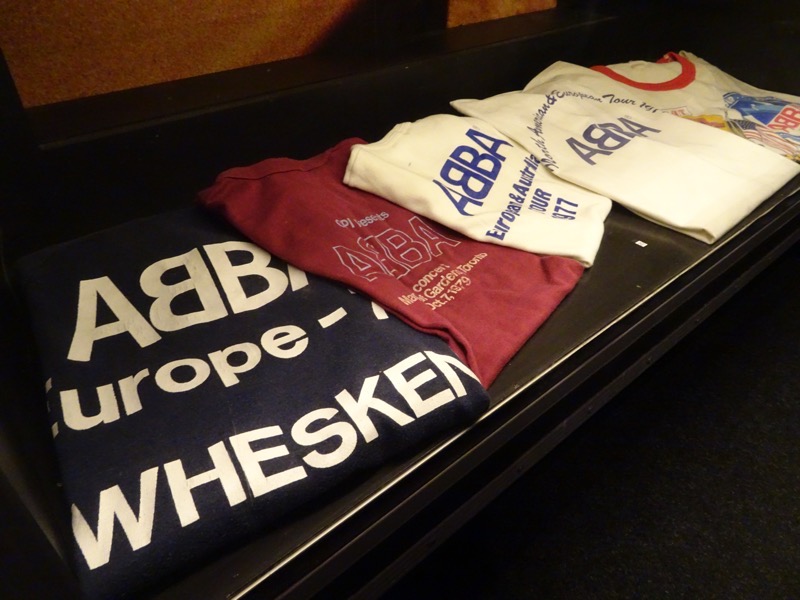 Tickets from early world tours.
Tickets from early world tours. Fun little karaoke recording booths for fans to jump in an belt out a tune.
Fun little karaoke recording booths for fans to jump in an belt out a tune.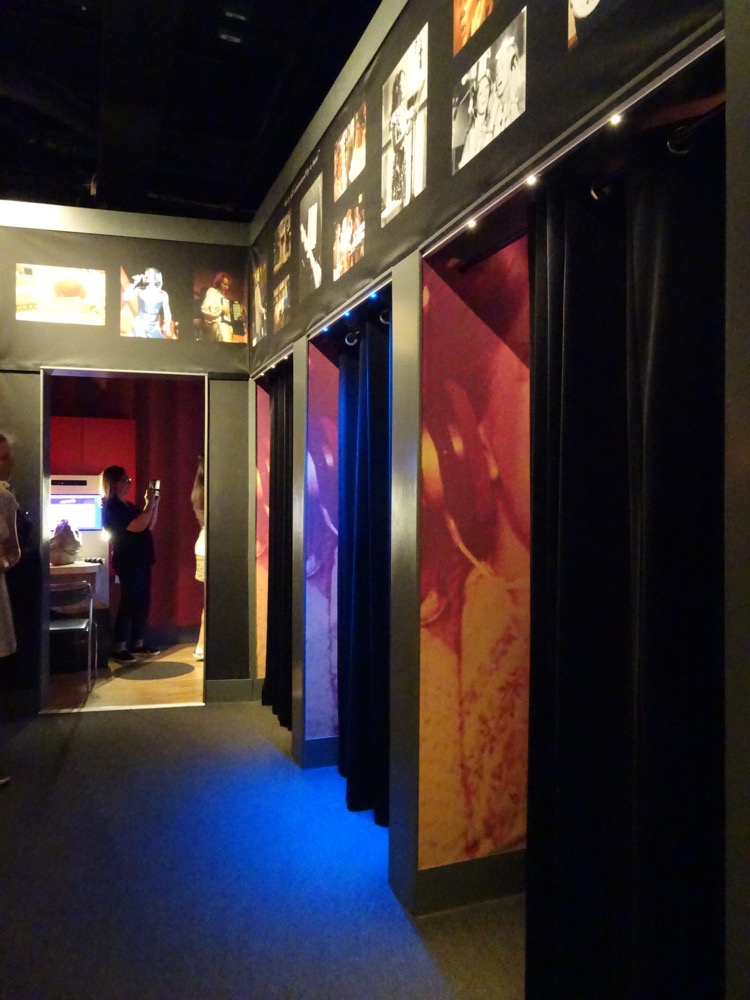 Costume design was an important part of the band’s stage appeal.
Costume design was an important part of the band’s stage appeal. The Arrival helicopter.
The Arrival helicopter.
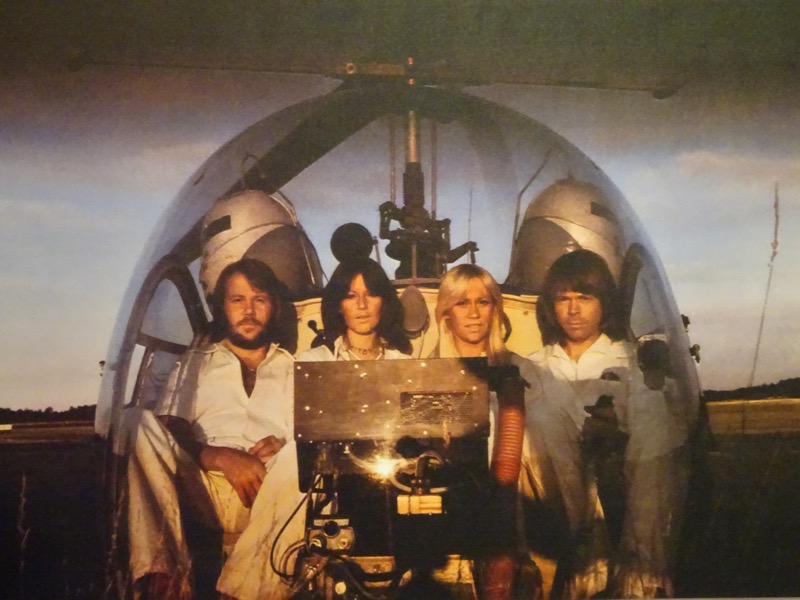 More merchandise.
More merchandise.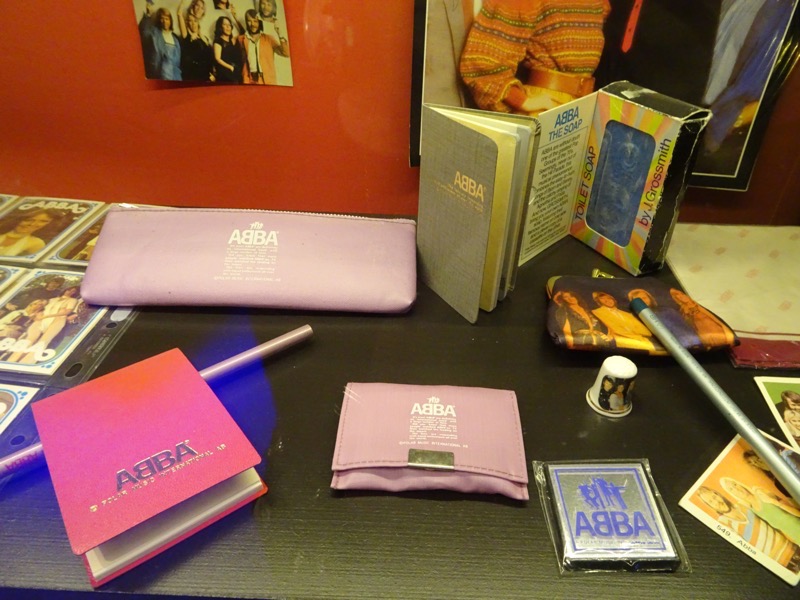
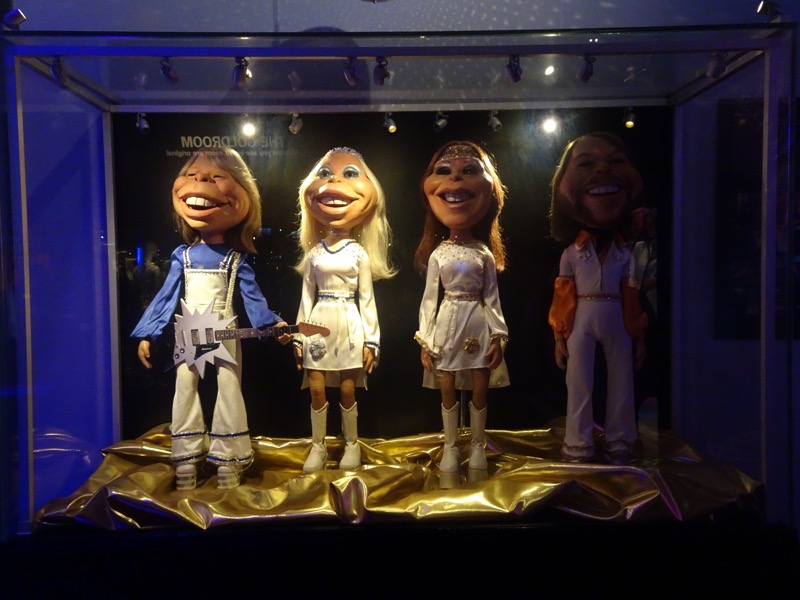 Lifesized models looking fabulous in skin tight white lycra… like a rock star! 😉
Lifesized models looking fabulous in skin tight white lycra… like a rock star! 😉  Walls lined in ABBA LPs and singles… I imagine this is quite a valuable collection.
Walls lined in ABBA LPs and singles… I imagine this is quite a valuable collection.
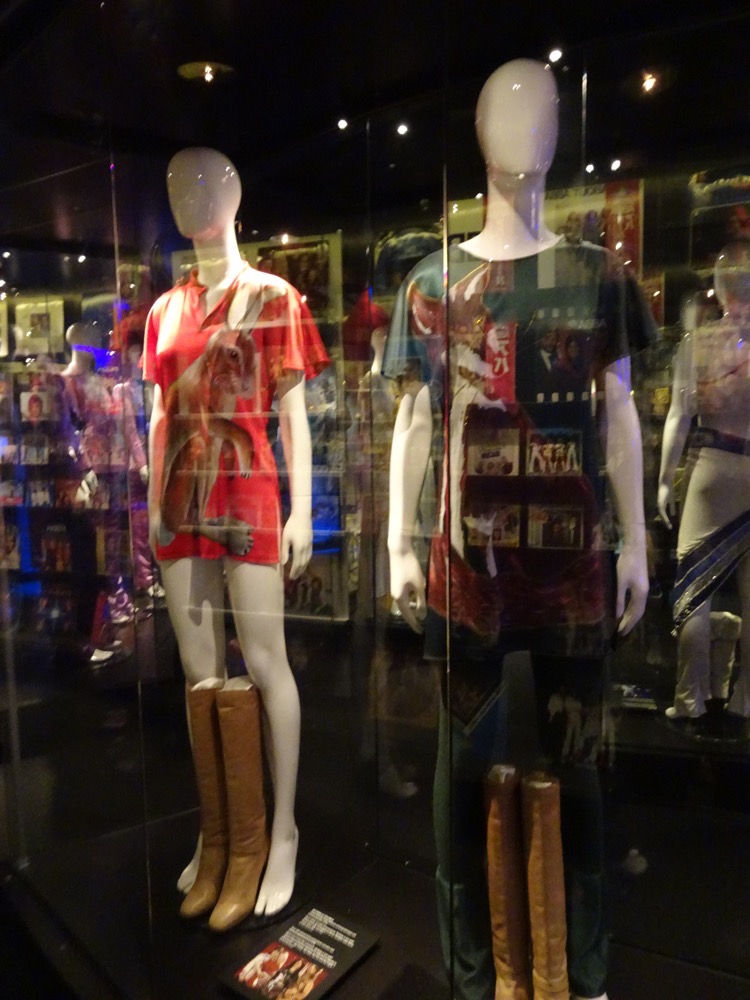 More crazy costumes.
More crazy costumes.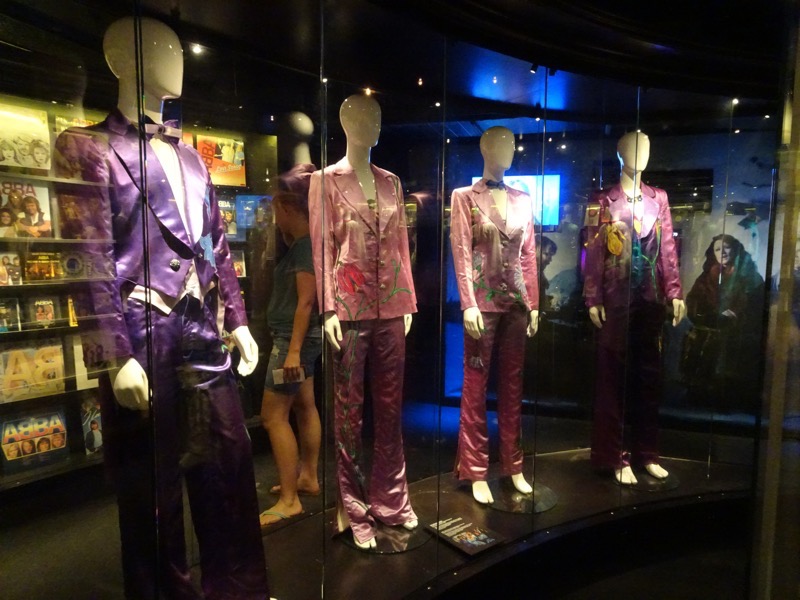
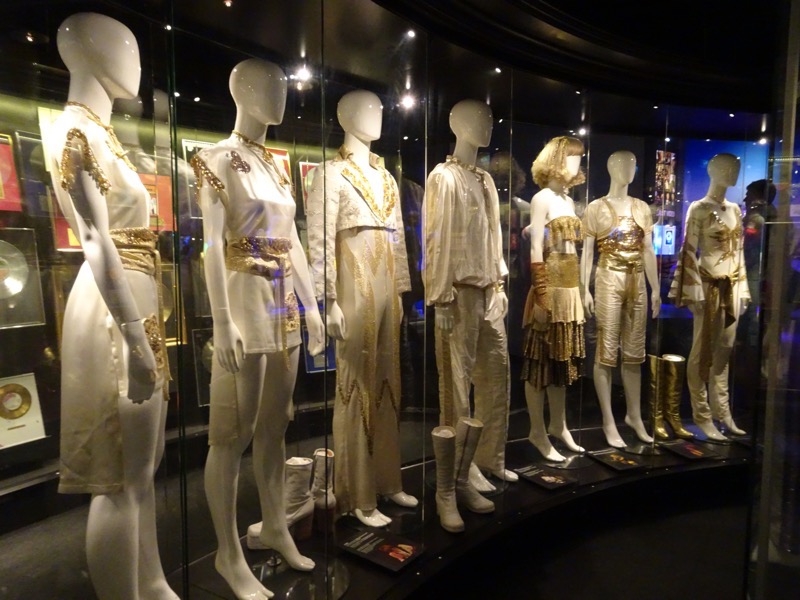 A wall literally covered in gold records for album sales world-wide. Including a few from Australia for selling millions of records.
A wall literally covered in gold records for album sales world-wide. Including a few from Australia for selling millions of records.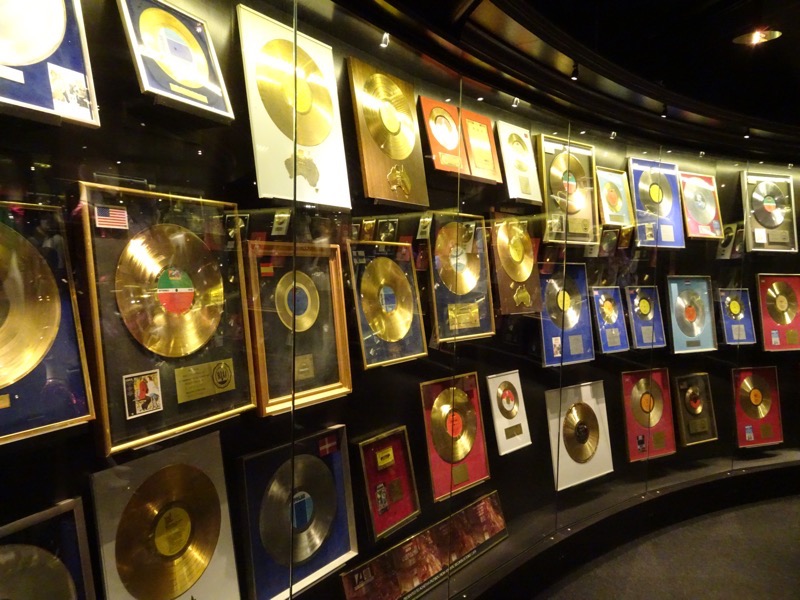

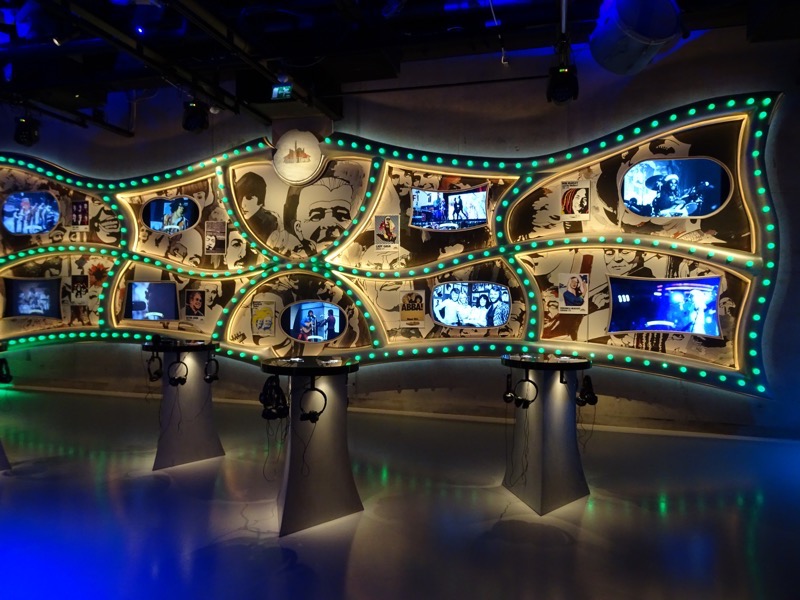 Golden cassettes celebrating cassette sales – I didn’t even know they did this! Many of Angus’ peers have probably never seen a cassette… “music just comes by download doesn’t it, Mum?”
Golden cassettes celebrating cassette sales – I didn’t even know they did this! Many of Angus’ peers have probably never seen a cassette… “music just comes by download doesn’t it, Mum?” The displays were quite impressive and a lot of fun. The music, the sounds, the costumes, the colours all brought back memories for everyone who enters.
The displays were quite impressive and a lot of fun. The music, the sounds, the costumes, the colours all brought back memories for everyone who enters.
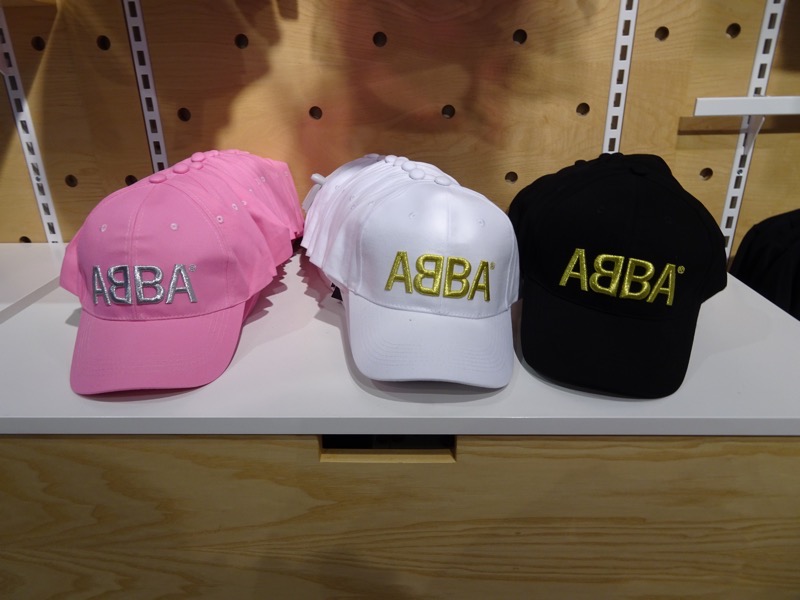
 Should have bought a new ABBA t-shirt to replace the one I lost in 1980 😉
Should have bought a new ABBA t-shirt to replace the one I lost in 1980 😉 
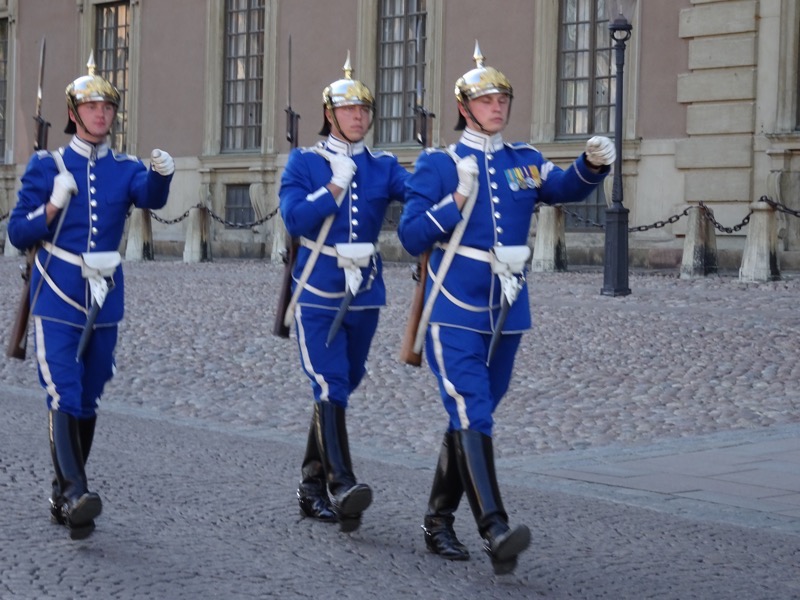
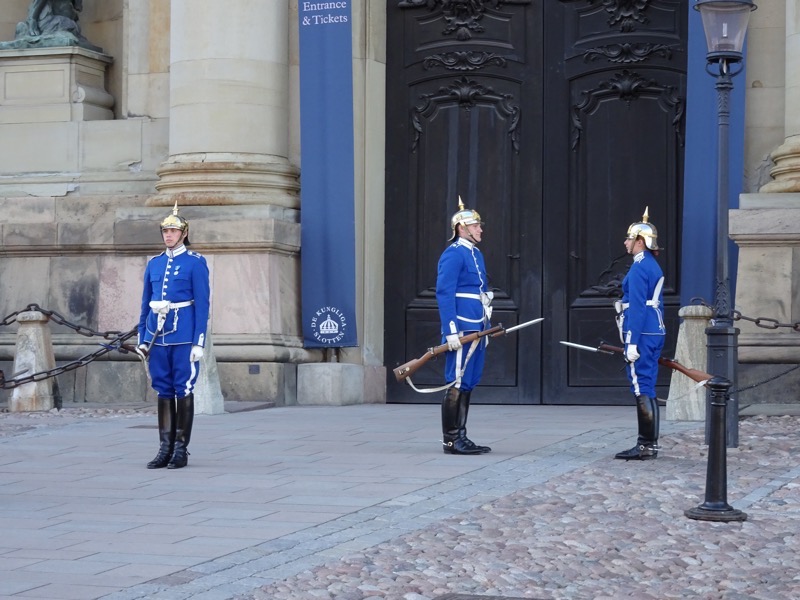
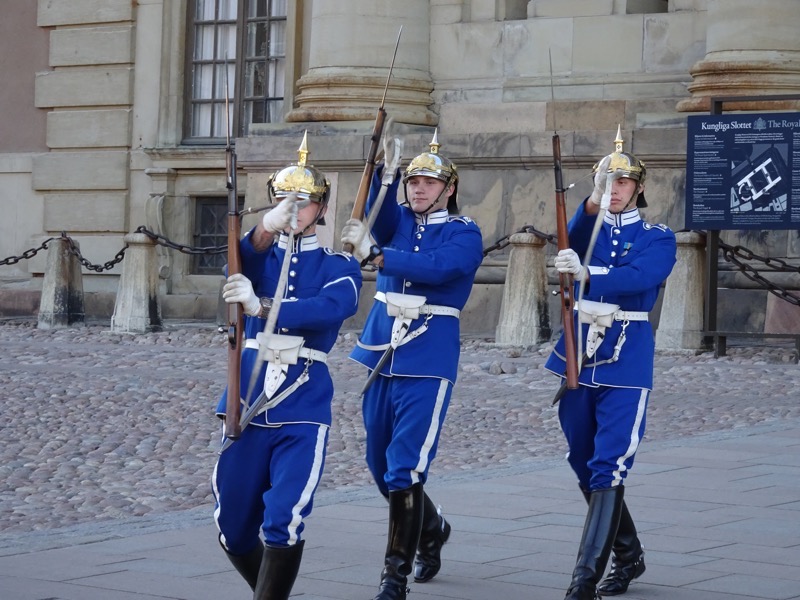
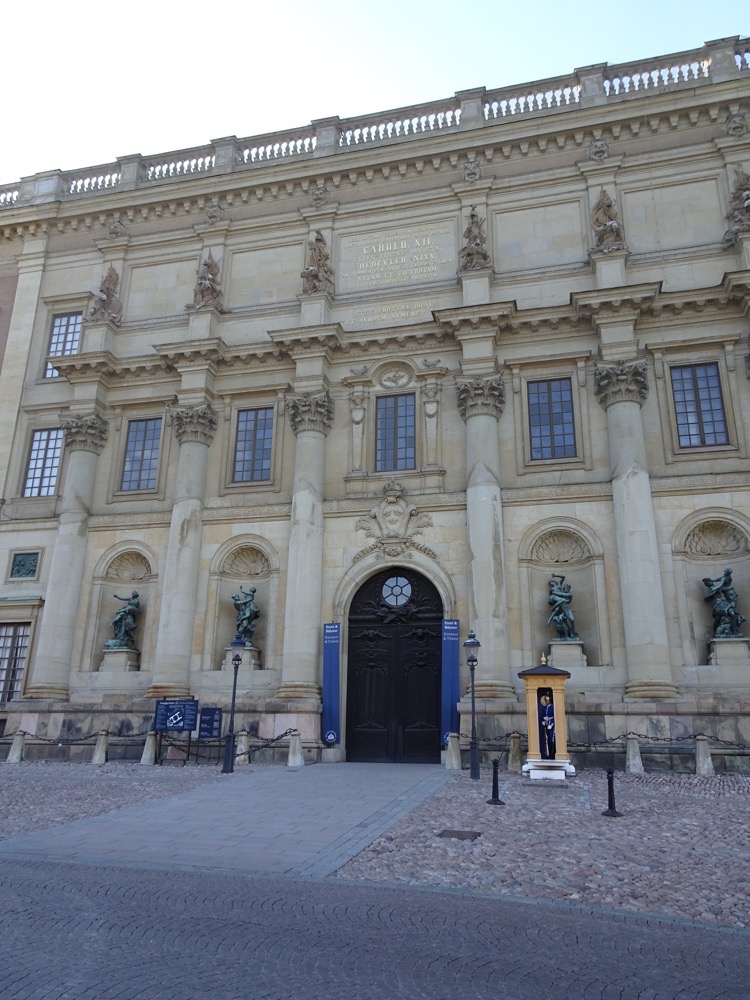 We’ve had a lovely time in Sweden – the work conference went well, and has been extremely productive. I managed to squeeze in more museums that I thought was possible in my spare time, which has been wonderful. Now to pack up and get an early start for our transit to Copenhagen in the morning by train!
We’ve had a lovely time in Sweden – the work conference went well, and has been extremely productive. I managed to squeeze in more museums that I thought was possible in my spare time, which has been wonderful. Now to pack up and get an early start for our transit to Copenhagen in the morning by train!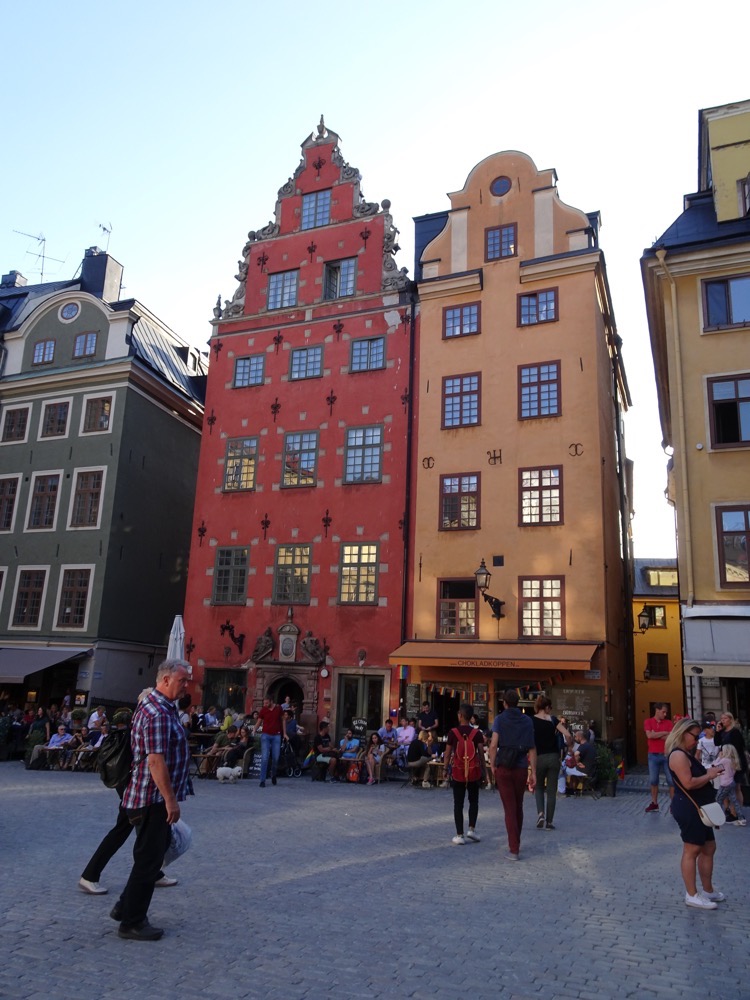
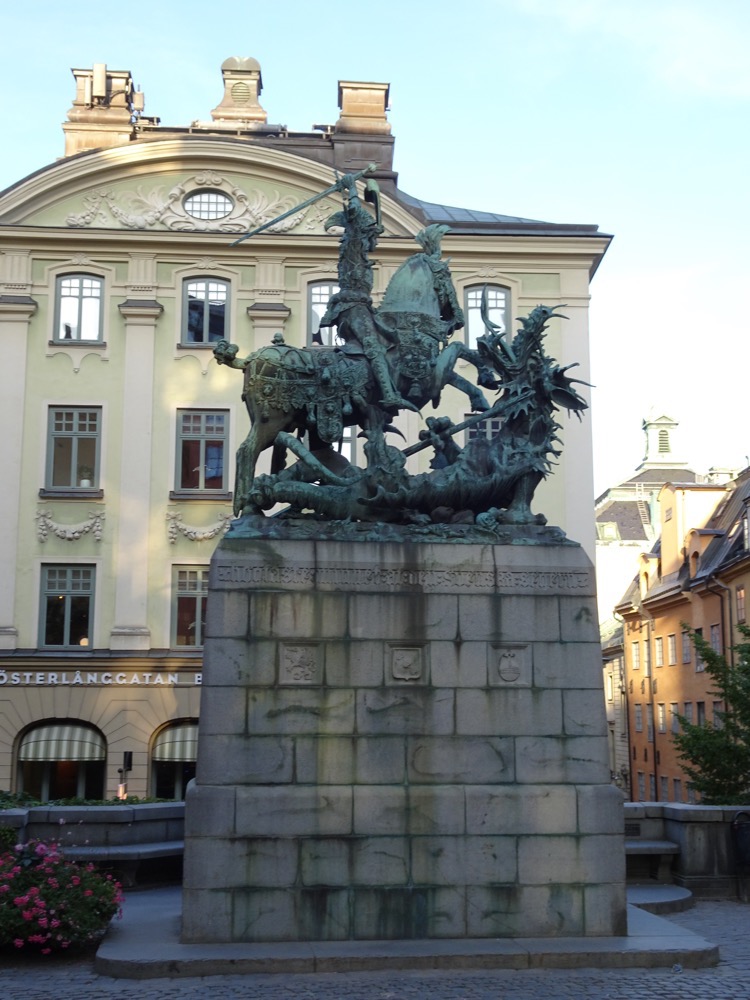
 On August 10, everything was ready for the Vasa’s maiden voyage. Stockholmers turned out to see her sail from directly below the Royal Castle located on the island of Blasieholmen in the middle of town. The wind was from the south-west, and for the first few hundred meters the Vasa was pulled along using anchors. At Tranbodarna, the Captain, Sofring Hansson issued the order to set sail. The sailors climbed the rigging and set four of the Vasa’s ten sails. A salute was fired from the ships’ guns, and slowly she set off on her first voyage.
On August 10, everything was ready for the Vasa’s maiden voyage. Stockholmers turned out to see her sail from directly below the Royal Castle located on the island of Blasieholmen in the middle of town. The wind was from the south-west, and for the first few hundred meters the Vasa was pulled along using anchors. At Tranbodarna, the Captain, Sofring Hansson issued the order to set sail. The sailors climbed the rigging and set four of the Vasa’s ten sails. A salute was fired from the ships’ guns, and slowly she set off on her first voyage.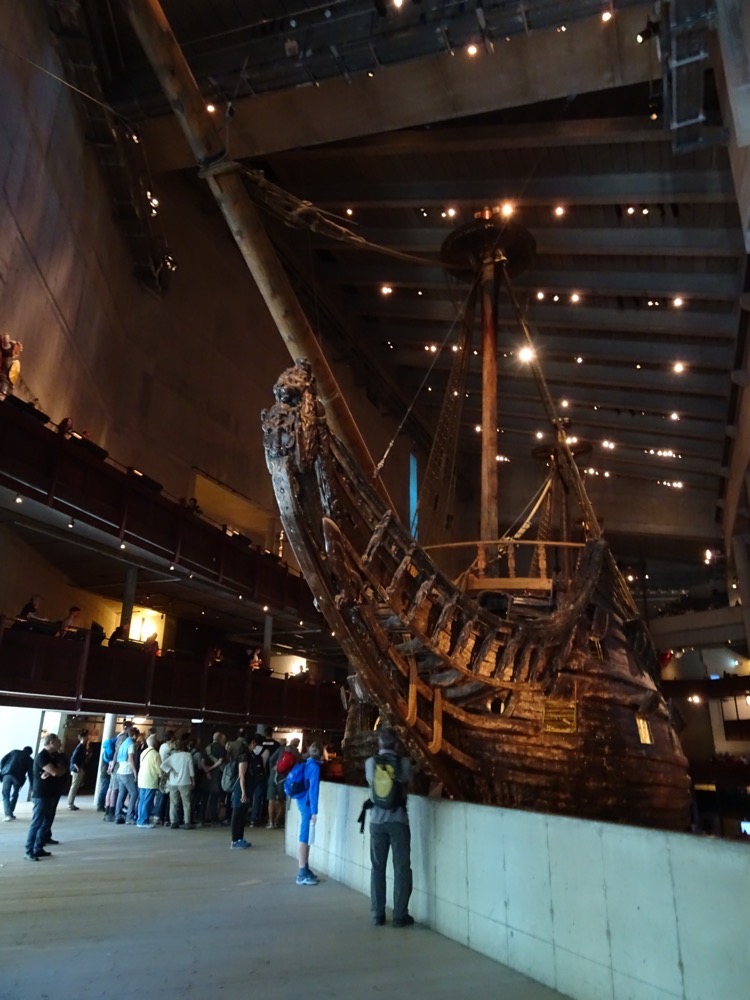 In a letter to the King, who was on campaign in Prussia, the council of the realm described the following events: ” When the ship left the shelter of Tegelviken, a stronger wind entered the sails and she immediately began to heel over hard to the lee side; she righted herself slightly until she approached Beckholmen, where she heeled right over and water gushed in through the (open) gun ports until she went to the bottom under sail, pennants and all.”
In a letter to the King, who was on campaign in Prussia, the council of the realm described the following events: ” When the ship left the shelter of Tegelviken, a stronger wind entered the sails and she immediately began to heel over hard to the lee side; she righted herself slightly until she approached Beckholmen, where she heeled right over and water gushed in through the (open) gun ports until she went to the bottom under sail, pennants and all.”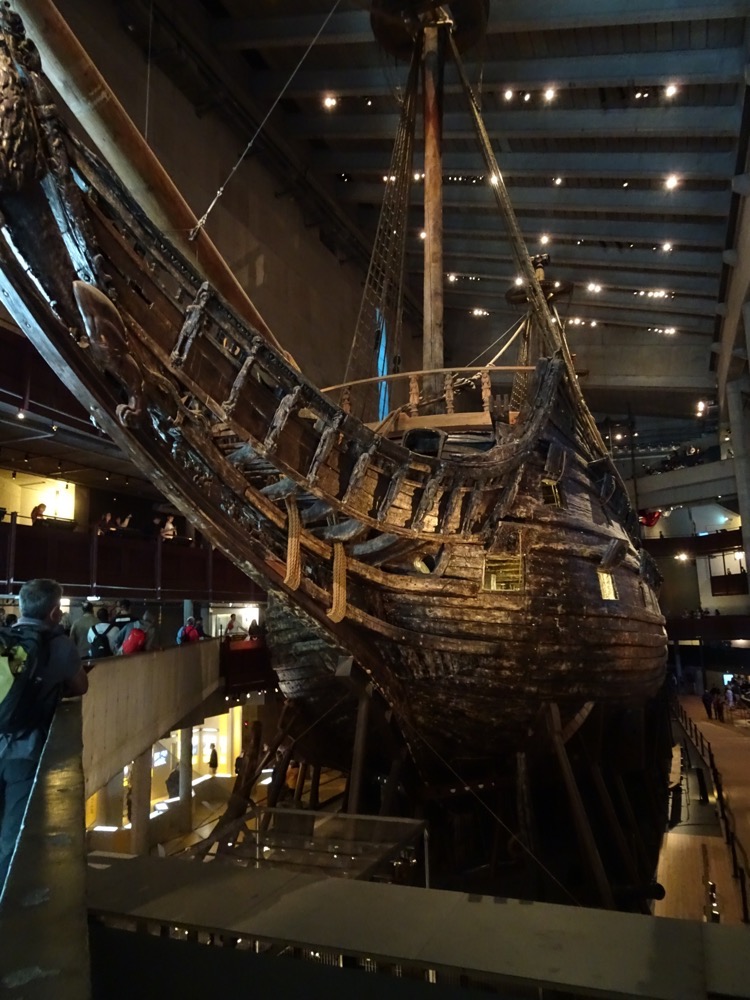 Stuck by a moderate gust of wind, the Vasa capsized and sank after a journey of 1,300 meters. Admiral Erik Jonsson was witness to the terrifying seconds on board when water poured in through the gun ports, after the first heel, he had gone below decks to ensure the canon were properly secured and returned to the just as the water had risen so high as to sweep loose the staircases. While the Vasa would have been crewed by nearly 400 people, there were fortunately only fifty people on board who are believed to have gone down with the Vasa that day… many of those, however, were the wives and children of the few crew that were required on the ship to move it from the Royal Palace to the Navy dockyard.
Stuck by a moderate gust of wind, the Vasa capsized and sank after a journey of 1,300 meters. Admiral Erik Jonsson was witness to the terrifying seconds on board when water poured in through the gun ports, after the first heel, he had gone below decks to ensure the canon were properly secured and returned to the just as the water had risen so high as to sweep loose the staircases. While the Vasa would have been crewed by nearly 400 people, there were fortunately only fifty people on board who are believed to have gone down with the Vasa that day… many of those, however, were the wives and children of the few crew that were required on the ship to move it from the Royal Palace to the Navy dockyard. Upon the sinking of the ship, the Captain was immediately taken prisoner and the report of his interrogation survives to this day. “You can cut me in a thousand pieces if all the guns were not secured… and before God Almighty, I swear that no one on board was intoxicated.” He claimed that “It was a small gust of wind, a mere breeze, that overturned the ship… the ship was too unsteady, although all the ballast was on board.” In doing so, his testimony squarely placed blame on the ship’s design and the shipbuilder. The crew supported the Captain’s report – no mistakes were made, the ship was loaded with maximum ballast, the guns were properly lashed down and it was a Sunday, so many of the crew had been at Communion and no member was drunk.
Upon the sinking of the ship, the Captain was immediately taken prisoner and the report of his interrogation survives to this day. “You can cut me in a thousand pieces if all the guns were not secured… and before God Almighty, I swear that no one on board was intoxicated.” He claimed that “It was a small gust of wind, a mere breeze, that overturned the ship… the ship was too unsteady, although all the ballast was on board.” In doing so, his testimony squarely placed blame on the ship’s design and the shipbuilder. The crew supported the Captain’s report – no mistakes were made, the ship was loaded with maximum ballast, the guns were properly lashed down and it was a Sunday, so many of the crew had been at Communion and no member was drunk.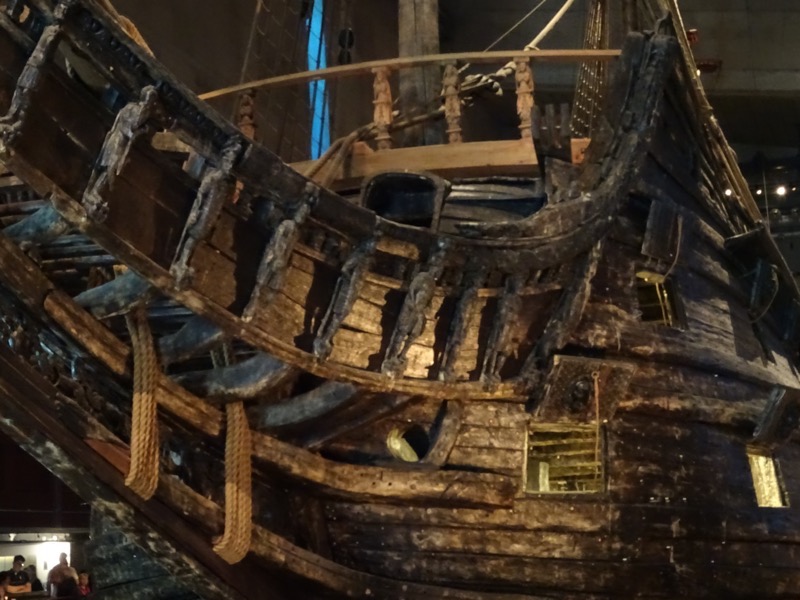 When the King received news of his pride and joy having sunk (a full two weeks after the sinking), barely 1.3kms from its berth, he wrote to the Council of the Realm in Stockholm claiming that “imprudence and negligence” must have been the cause of the disaster and that the responsible parties must be rooted out and punished. A formal inquest was held to determine blame.
When the King received news of his pride and joy having sunk (a full two weeks after the sinking), barely 1.3kms from its berth, he wrote to the Council of the Realm in Stockholm claiming that “imprudence and negligence” must have been the cause of the disaster and that the responsible parties must be rooted out and punished. A formal inquest was held to determine blame.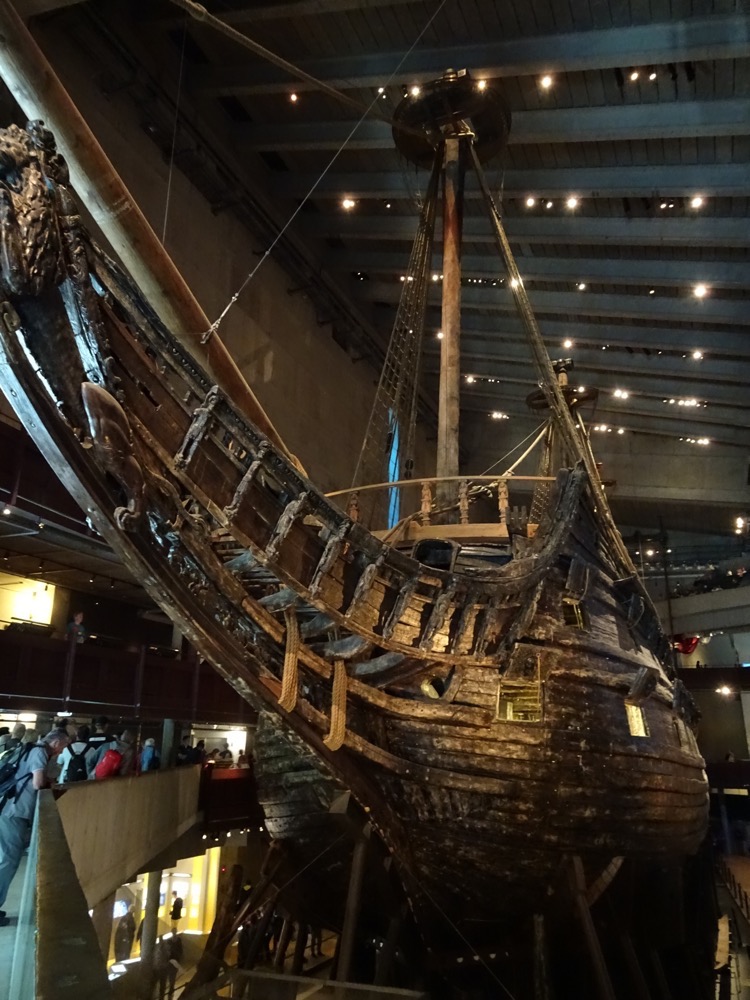 Fault was eventually found with the ship’s unstable construction. It was an innovative and ambitious project, to begin with – the King wanted two gun decks so the Vasa could have twice as many guns as any other ship around at that time, this made the ship top-heavy with her masts, yards, sails, and guns. The shipbuilders Jakobson and Arent de Groot were questioned regarding the construction and they testified that everything was built in accordance with the dimensions of His Majesty’s instructions and approval. The actual builder of the Vasa, Dutchman Henrick Hybertsson had died the year before, complicating the placement of blame. But between them, they had built many successful warships that had given years of service, it was the alterations to have a second gun deck while maintaining only a 11m width that made the Vasa top-heavy.
Fault was eventually found with the ship’s unstable construction. It was an innovative and ambitious project, to begin with – the King wanted two gun decks so the Vasa could have twice as many guns as any other ship around at that time, this made the ship top-heavy with her masts, yards, sails, and guns. The shipbuilders Jakobson and Arent de Groot were questioned regarding the construction and they testified that everything was built in accordance with the dimensions of His Majesty’s instructions and approval. The actual builder of the Vasa, Dutchman Henrick Hybertsson had died the year before, complicating the placement of blame. But between them, they had built many successful warships that had given years of service, it was the alterations to have a second gun deck while maintaining only a 11m width that made the Vasa top-heavy.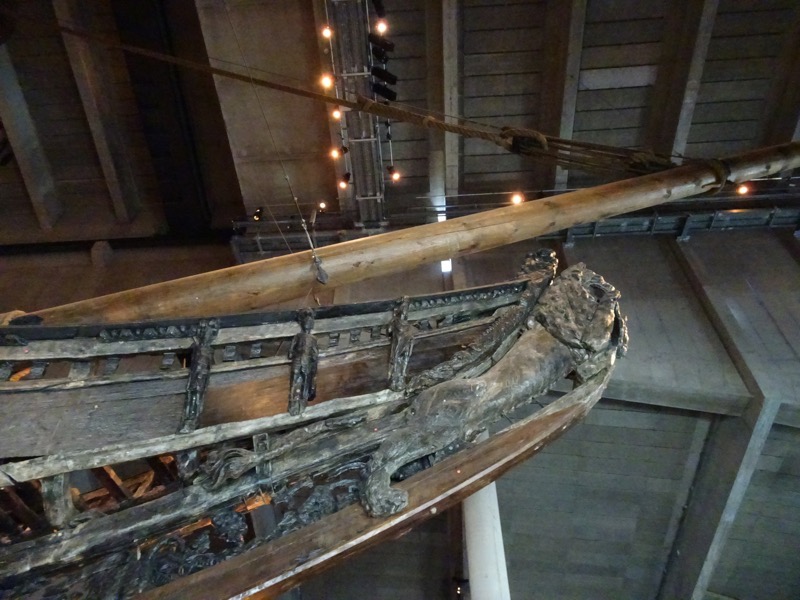 Shipmaster Joran Matsson also revealed that the Vasa’s stability had been tested before sailing. To stability test a ship, thirty men were made to run back and forth across the Vasa’s decks when she was safely moored at the quayside. After three runs, Matsson put a halt to the test, otherwise, the Vasa would have capsized then and there. Present at the test was Admiral Klas Flemming, one of the most influential men in the royal navy. His only recorded comment regarding the failed stability test was, “If only His Majesty were at home!”
Shipmaster Joran Matsson also revealed that the Vasa’s stability had been tested before sailing. To stability test a ship, thirty men were made to run back and forth across the Vasa’s decks when she was safely moored at the quayside. After three runs, Matsson put a halt to the test, otherwise, the Vasa would have capsized then and there. Present at the test was Admiral Klas Flemming, one of the most influential men in the royal navy. His only recorded comment regarding the failed stability test was, “If only His Majesty were at home!”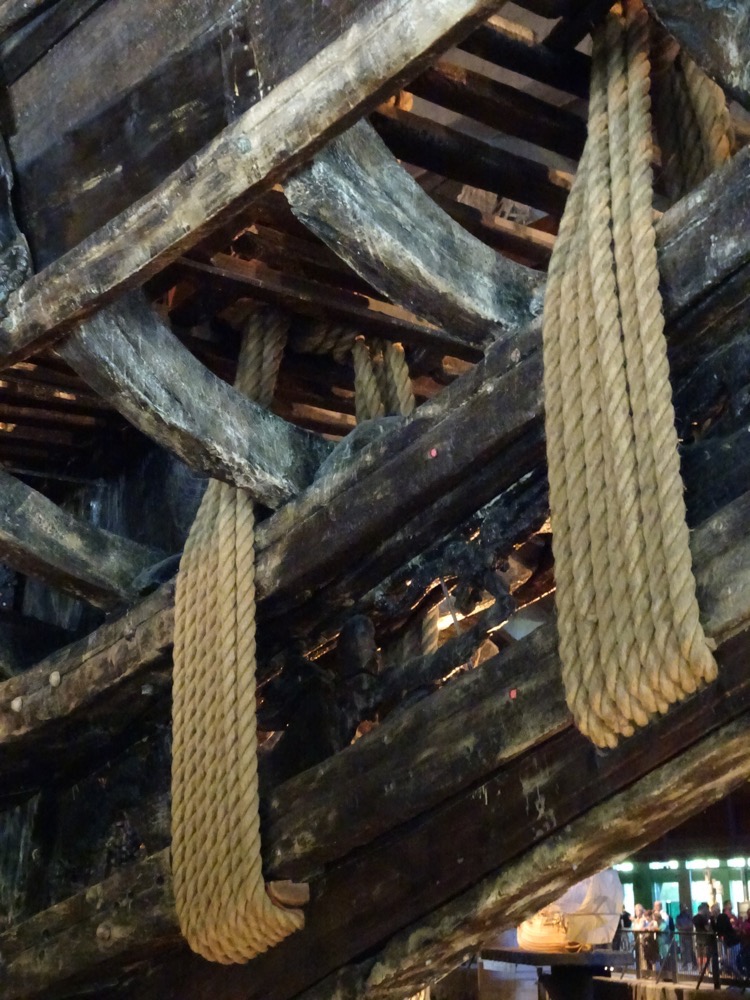 God and King, both considered equally infallible were drawn into the case. The subsequent deliberations of the Council of the realm on the issue of guilt are not recorded, but no guilty party was ever identified, and no one was ever punished for the disaster.
God and King, both considered equally infallible were drawn into the case. The subsequent deliberations of the Council of the realm on the issue of guilt are not recorded, but no guilty party was ever identified, and no one was ever punished for the disaster.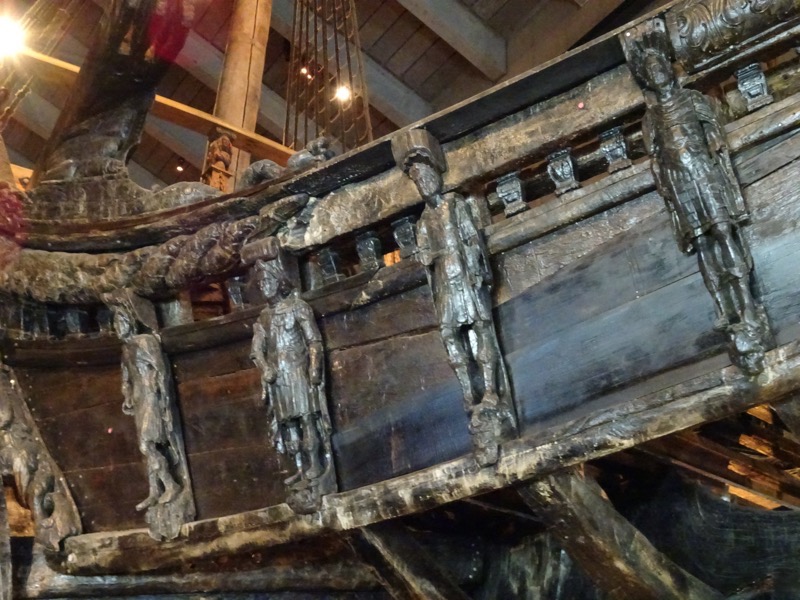 380 years later with a salvaged ship 98% complete, we can explain quite readily why the Vasa sank. Firstly, evidence supports that the guns were properly secured as reported, only four sails were set (the remaining six were still stored in the sail lockers), the ballast was as fully loaded as possible. Many people are partially to blame in the Vasa disaster – the King, with his drive to acquire a ship with as many guns as possible and his drive to have it completed rapidly. Admiral Fleming who failed to prevent the ship’s departure after the abysmal stability test. But the ultimate blame lays with the defective theoretical knowledge of the period. 17thC shipbuilders were incapable of making construction drawings or doing mathematical calculations for stability… instead, shipbuilders used a table of figures, the ship’s reckoning which was somewhat of well-kept secrets passed down from father to son. Many ships were modeled on its predecessor, but the Vasa was not. It was more massive, had more guns – it was too large, too strong, and as a result was a big expensive experiment.
380 years later with a salvaged ship 98% complete, we can explain quite readily why the Vasa sank. Firstly, evidence supports that the guns were properly secured as reported, only four sails were set (the remaining six were still stored in the sail lockers), the ballast was as fully loaded as possible. Many people are partially to blame in the Vasa disaster – the King, with his drive to acquire a ship with as many guns as possible and his drive to have it completed rapidly. Admiral Fleming who failed to prevent the ship’s departure after the abysmal stability test. But the ultimate blame lays with the defective theoretical knowledge of the period. 17thC shipbuilders were incapable of making construction drawings or doing mathematical calculations for stability… instead, shipbuilders used a table of figures, the ship’s reckoning which was somewhat of well-kept secrets passed down from father to son. Many ships were modeled on its predecessor, but the Vasa was not. It was more massive, had more guns – it was too large, too strong, and as a result was a big expensive experiment.
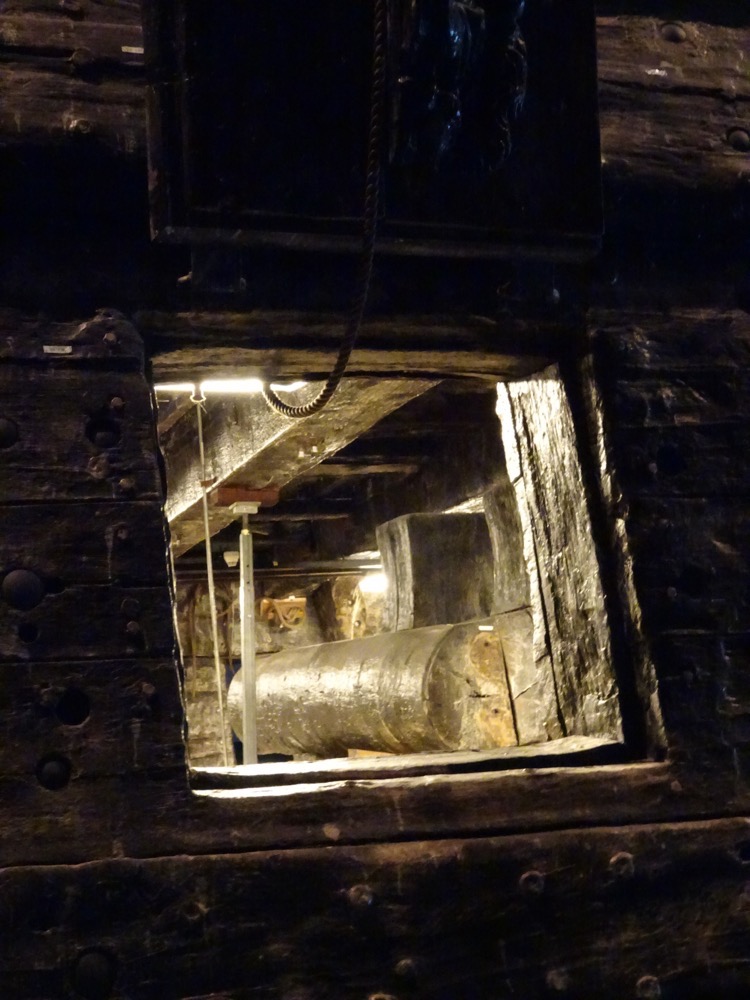
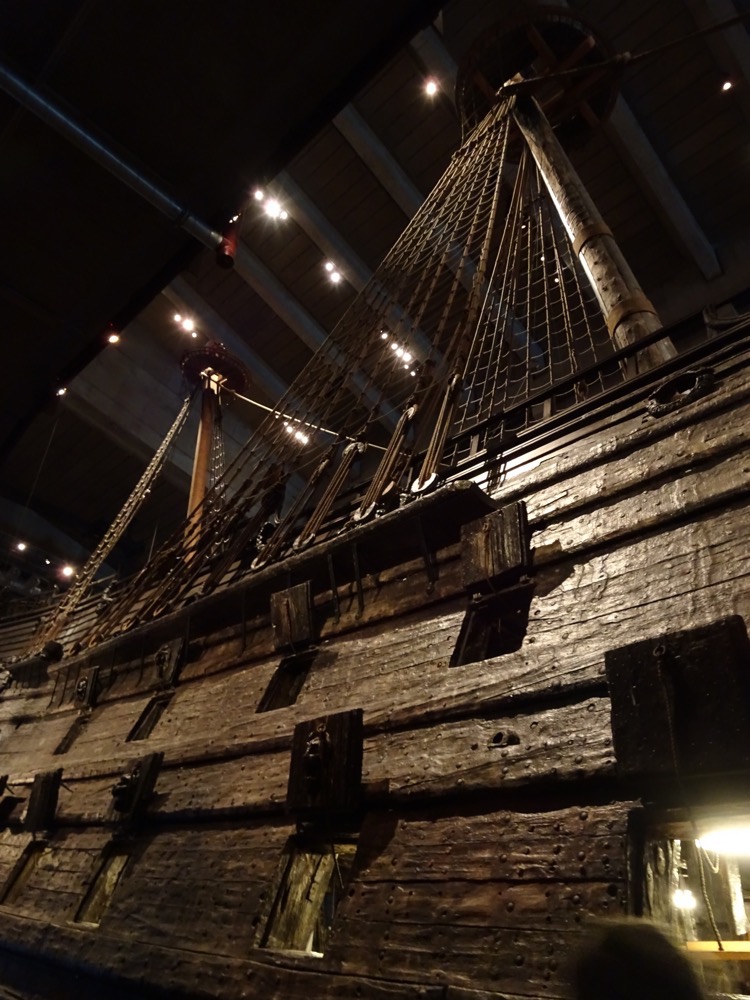 The Vasa was lavishly decorated – each of the gun ports had a carved depiction of a lion – a symbol of the Swedish King.
The Vasa was lavishly decorated – each of the gun ports had a carved depiction of a lion – a symbol of the Swedish King.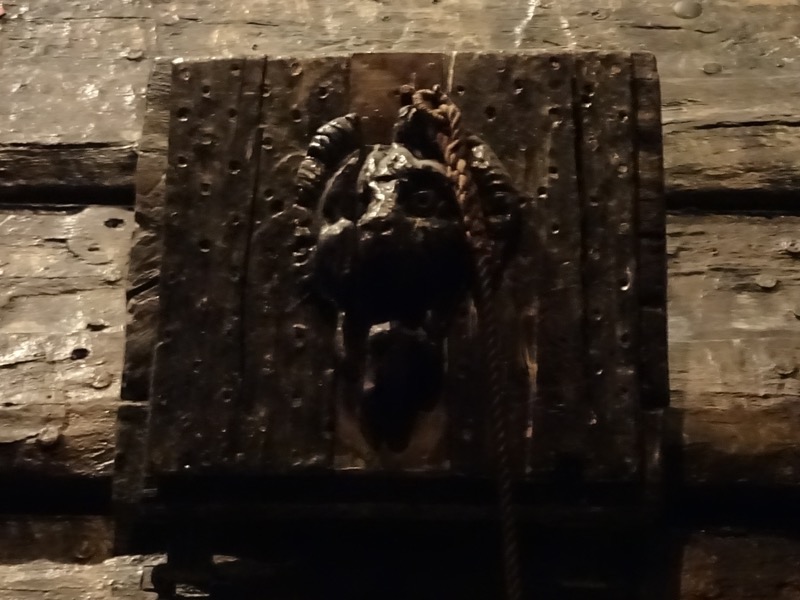
 Directly after the ship sank, the masts of the ship were cut off, primarily because the ship had sunk in a relatively busy shipping channel, but also because the city did not want a constant visual reminder of this most spectacular naval failure. Salvage efforts started immediately, and many tried to particularly raise the Vasa’s valuable guns. It was not until the 1660s that fifty of the Vasa’s guns were retrieved with the use of a diving bell, by salvage workers, von Treileben and Pecknell.
Directly after the ship sank, the masts of the ship were cut off, primarily because the ship had sunk in a relatively busy shipping channel, but also because the city did not want a constant visual reminder of this most spectacular naval failure. Salvage efforts started immediately, and many tried to particularly raise the Vasa’s valuable guns. It was not until the 1660s that fifty of the Vasa’s guns were retrieved with the use of a diving bell, by salvage workers, von Treileben and Pecknell.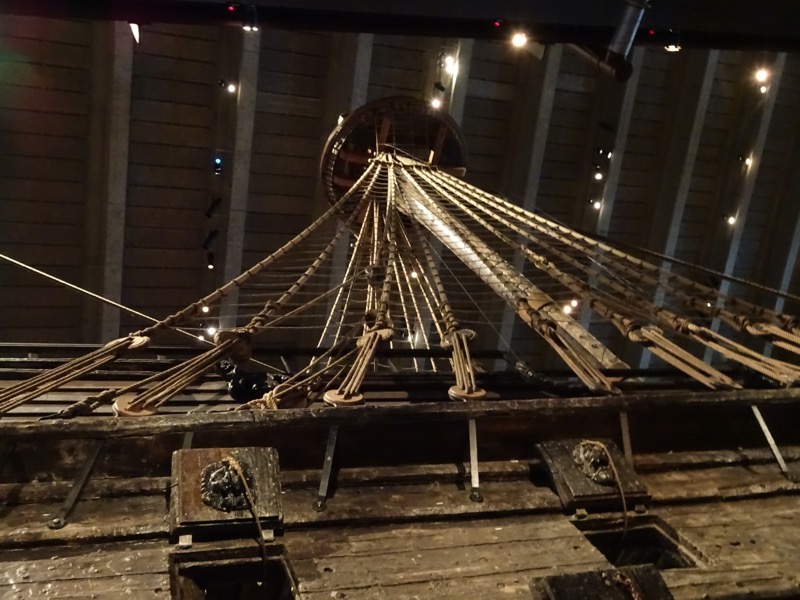 With her valuable guns removed, the Vasa fell into obscurity until in 1956, a newspaper announced, that an old ship had been found off Beckholmen in the middle of Stockholm and that it was probably the warship, the Vasa which sank on her maiden voyage in 1628. It was engineer Anders Franzen, an expert on Swedish naval warfare of the 16th and 17thC who had discovered the location of the ship from archives and renewed interested in the Vasa. Franzen knew that the Baltic sea is unique in that here, there are no shipworms (the tiny Teredo worm that eat timber), and many vessels had been preserved for centuries before. He had high expectations that the Vasa might be in reasonably good shape thanks to the absence of the shipworm and little oxygen in the cold, low saline, waters.
With her valuable guns removed, the Vasa fell into obscurity until in 1956, a newspaper announced, that an old ship had been found off Beckholmen in the middle of Stockholm and that it was probably the warship, the Vasa which sank on her maiden voyage in 1628. It was engineer Anders Franzen, an expert on Swedish naval warfare of the 16th and 17thC who had discovered the location of the ship from archives and renewed interested in the Vasa. Franzen knew that the Baltic sea is unique in that here, there are no shipworms (the tiny Teredo worm that eat timber), and many vessels had been preserved for centuries before. He had high expectations that the Vasa might be in reasonably good shape thanks to the absence of the shipworm and little oxygen in the cold, low saline, waters. The raising of such a large and old ship had never been attempted before – heavy cables were laid beneath the hull and attached to water filled pontoons. When the water was pumped out of the pontoons, they would rise, stretching the cables and lifting the Vasa from the seabed. A large, ‘Save the Vasa’ campaign was launched and money and materials were donated by foundations, individuals and companies to Brostroms, the parent company of the Neptun Salvaging Company who promised to carry out the work, free of charge. The Vasa had sunk in barely 33m of water but it was still an enormous undertaking. The ship was raised in 16 stages, moving to shallower and shallower water, until eventually it was salvaged and taken to dry dock in Beckholmen, directly adjacent to where she had sunk.
The raising of such a large and old ship had never been attempted before – heavy cables were laid beneath the hull and attached to water filled pontoons. When the water was pumped out of the pontoons, they would rise, stretching the cables and lifting the Vasa from the seabed. A large, ‘Save the Vasa’ campaign was launched and money and materials were donated by foundations, individuals and companies to Brostroms, the parent company of the Neptun Salvaging Company who promised to carry out the work, free of charge. The Vasa had sunk in barely 33m of water but it was still an enormous undertaking. The ship was raised in 16 stages, moving to shallower and shallower water, until eventually it was salvaged and taken to dry dock in Beckholmen, directly adjacent to where she had sunk.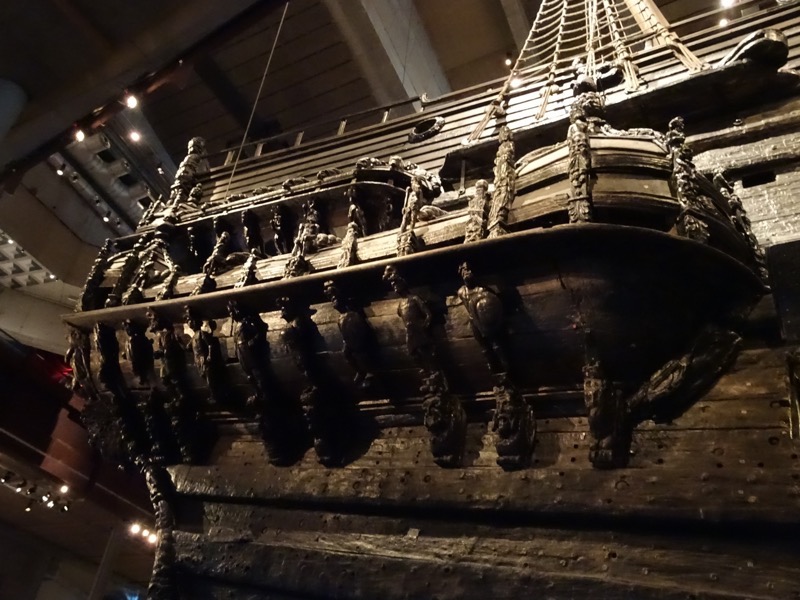 It was 1961 before the ship was raised in its entirety and all the world’s news media was watching as seven large bilge pumps were used to assist with the final lift. After 333 years on the seabed, the Vasa was back on the surface. Amazingly the ship was sufficiently watertight to be able to float and move on her own.
It was 1961 before the ship was raised in its entirety and all the world’s news media was watching as seven large bilge pumps were used to assist with the final lift. After 333 years on the seabed, the Vasa was back on the surface. Amazingly the ship was sufficiently watertight to be able to float and move on her own.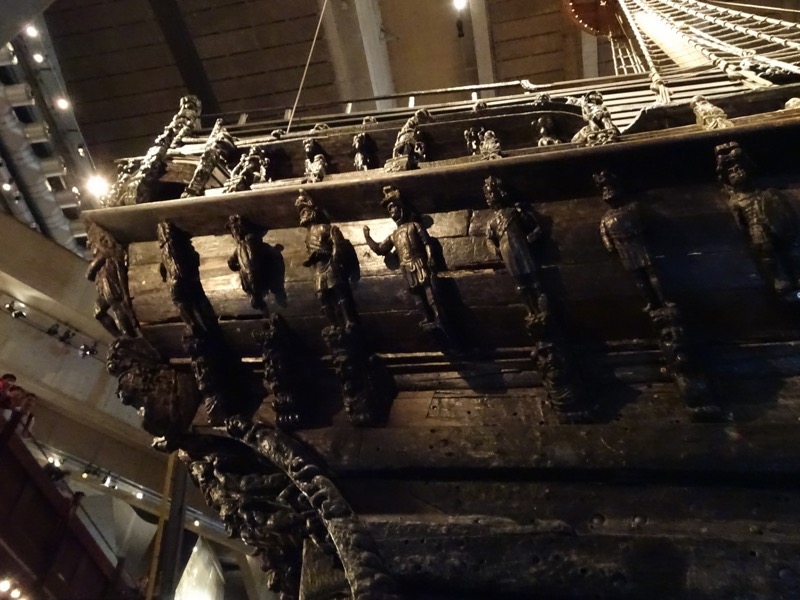 The brackish, deoxygenated water and mud on the seabed has perfectly preserved the Basa, but now in the warm dry air, the wood would start shrinking and splitting and a huge question of how to preserve the 1,080 tonnes of waterlogged oak with a volume of 900sqm was to be accomplished? In addition, there were 13,500 wooden figures, 500, sculptures, 200 ornaments, 12,000 smaller wooden objects, as well as textiles, leather and metal objects to be preserved. With no previous experience of how to preserve such a large amount of wood – a method was adopted of spraying the timber with a mixture of water and polyethylene glycol (PEG)to penetrate the wood and displace the water. The PEG successfully prevented shrinking and cracking. Sculptures and small wooden objects were also treated in vats of PEG.
The brackish, deoxygenated water and mud on the seabed has perfectly preserved the Basa, but now in the warm dry air, the wood would start shrinking and splitting and a huge question of how to preserve the 1,080 tonnes of waterlogged oak with a volume of 900sqm was to be accomplished? In addition, there were 13,500 wooden figures, 500, sculptures, 200 ornaments, 12,000 smaller wooden objects, as well as textiles, leather and metal objects to be preserved. With no previous experience of how to preserve such a large amount of wood – a method was adopted of spraying the timber with a mixture of water and polyethylene glycol (PEG)to penetrate the wood and displace the water. The PEG successfully prevented shrinking and cracking. Sculptures and small wooden objects were also treated in vats of PEG.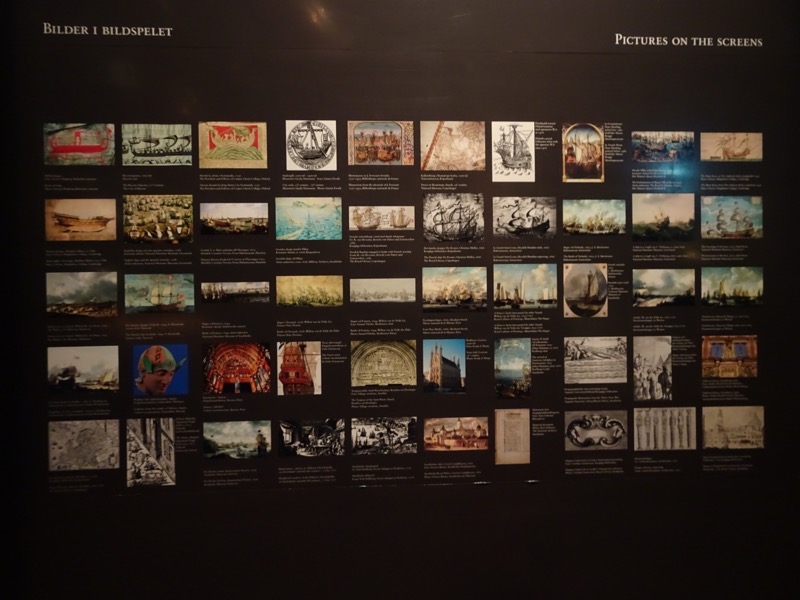 Vasa in Figures:
Vasa in Figures: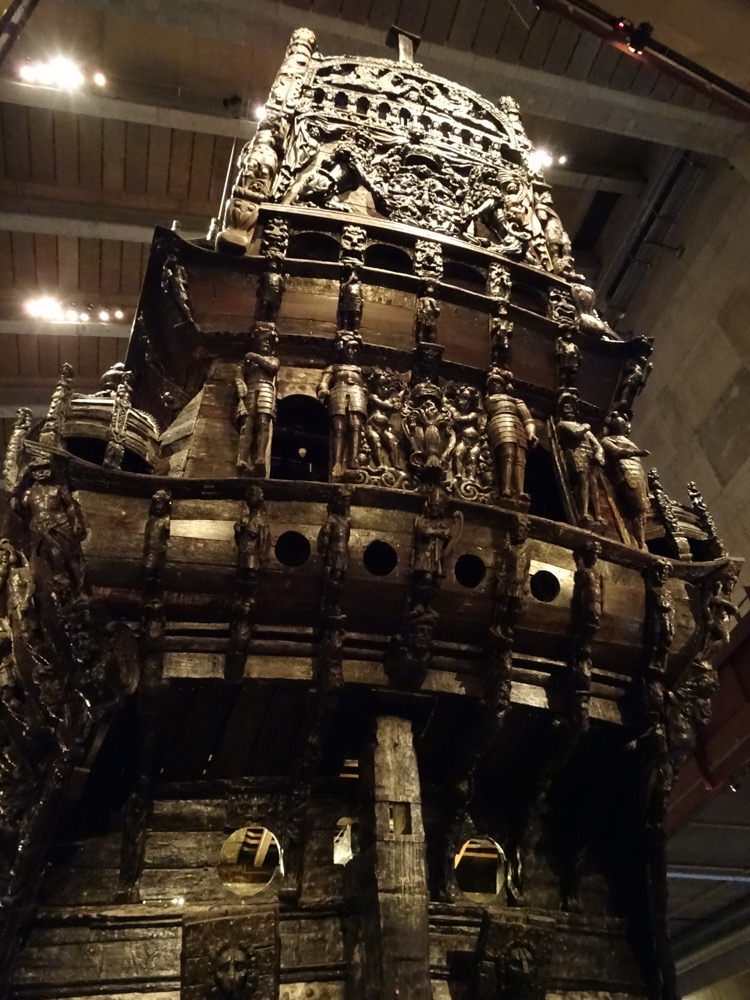 The Vasa was built not only to dominate the waves with her superior military armaments, but also to impress with her lavish visual appearance. Many works of art sank with her in 1628 including hundreds of wooden sculptures that had been carefully painted and gilded. The work was predominantly in the German-Dutch late Renaissance/early Baroque style and executed by master carvers. Most of the works depict large expressive sculptures of lions, angels, devils, warriors, musicians, emperors and gods.
The Vasa was built not only to dominate the waves with her superior military armaments, but also to impress with her lavish visual appearance. Many works of art sank with her in 1628 including hundreds of wooden sculptures that had been carefully painted and gilded. The work was predominantly in the German-Dutch late Renaissance/early Baroque style and executed by master carvers. Most of the works depict large expressive sculptures of lions, angels, devils, warriors, musicians, emperors and gods. Opulence and extravagance were the fashion of the 17th century, though, to the modern eye, the riot of colour that covered the ship would be considered terribly gaudy. Chubby angels, with ruddy cheeks, golden hair, pink fleshy tummies, blue and grey armoured Roman soldiers, bright green sea monsters – it was a riot of colour.
Opulence and extravagance were the fashion of the 17th century, though, to the modern eye, the riot of colour that covered the ship would be considered terribly gaudy. Chubby angels, with ruddy cheeks, golden hair, pink fleshy tummies, blue and grey armoured Roman soldiers, bright green sea monsters – it was a riot of colour. On the stern, but not painted in letters is the name “Vasa” – the name of the Swedish Royal family depicted instead by their family impressa.
On the stern, but not painted in letters is the name “Vasa” – the name of the Swedish Royal family depicted instead by their family impressa.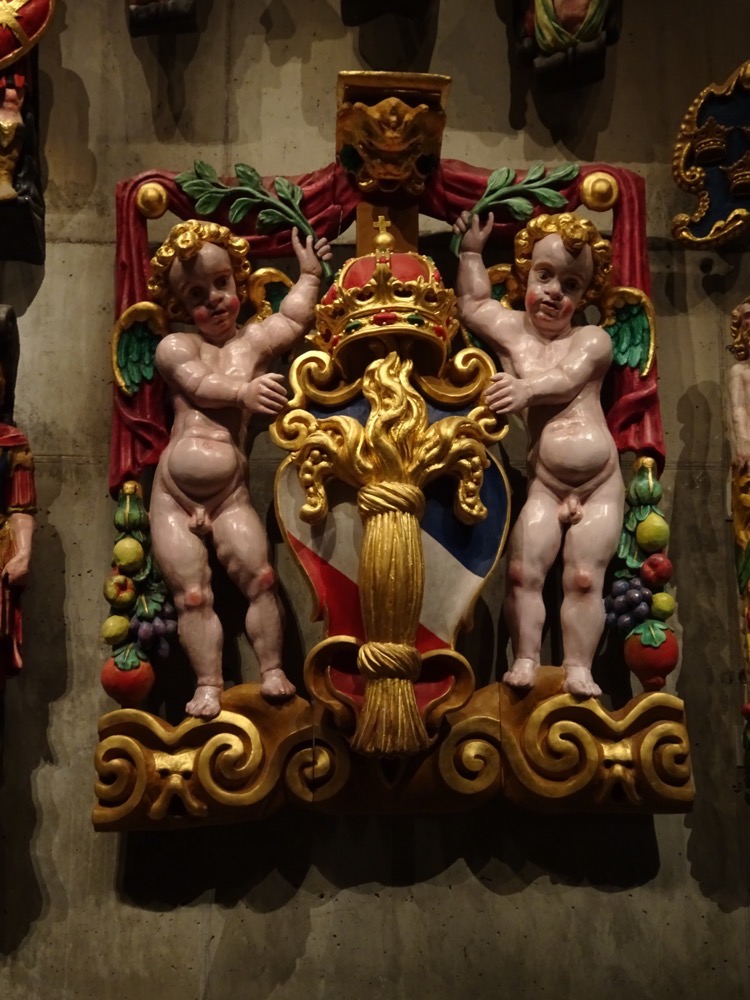

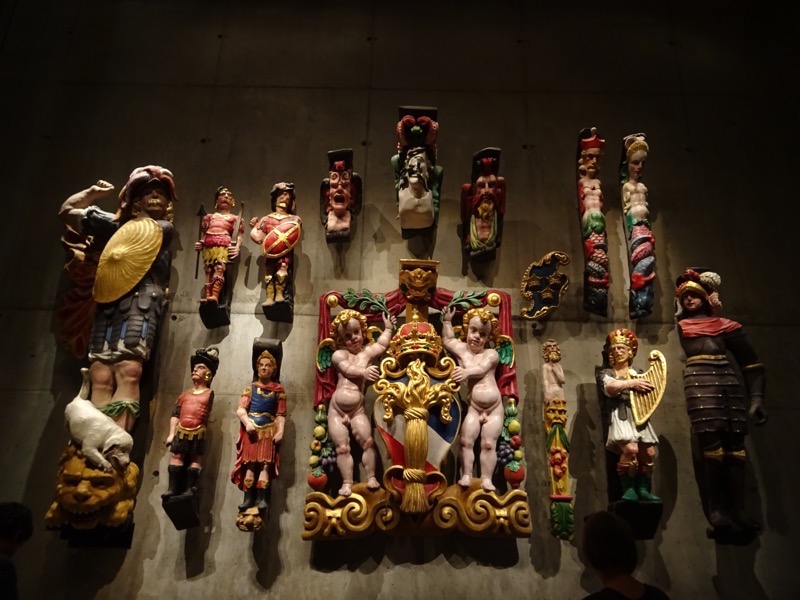 Researchers have identified over twenty different colours were painted on the sculptures on the ship, as well as gold and silver gilding.
Researchers have identified over twenty different colours were painted on the sculptures on the ship, as well as gold and silver gilding.
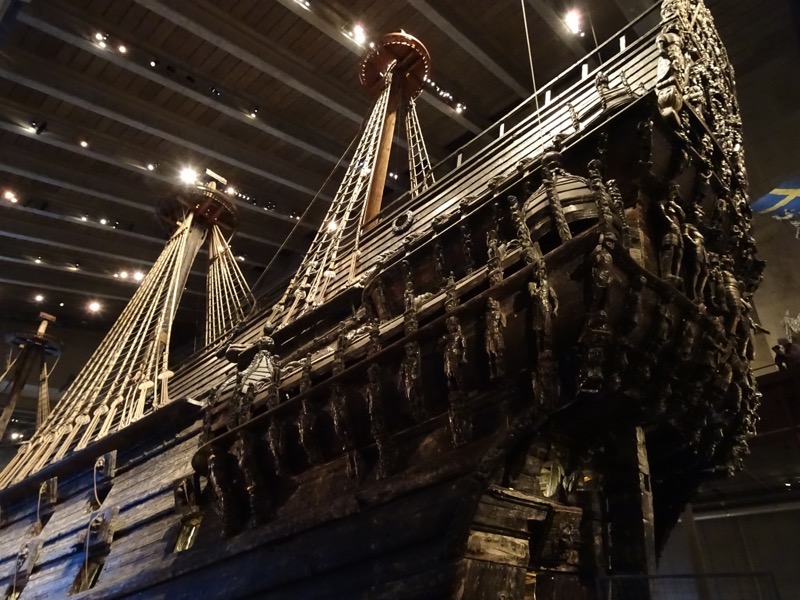 Surrounding the gun galleys (spaces the soldiers could fire their weapons from when engaged in closer combat), are statues of Roman soldiers standing on the heads of sea monsters. Every statue is unique, and in this case to represent the superiority of the navy over the seas.
Surrounding the gun galleys (spaces the soldiers could fire their weapons from when engaged in closer combat), are statues of Roman soldiers standing on the heads of sea monsters. Every statue is unique, and in this case to represent the superiority of the navy over the seas.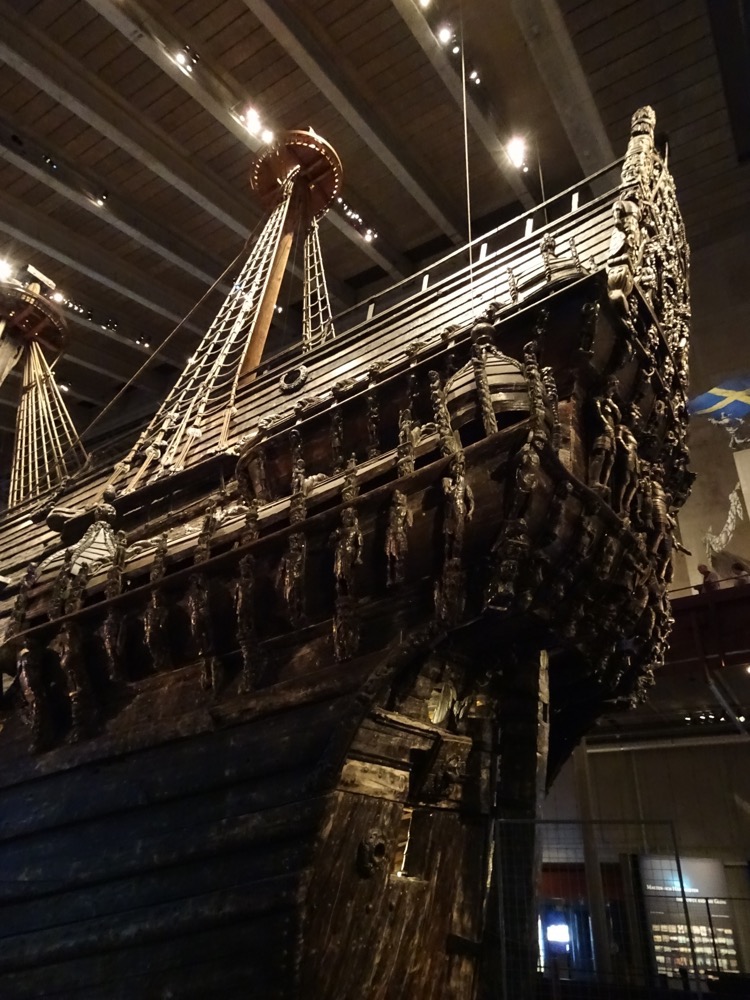
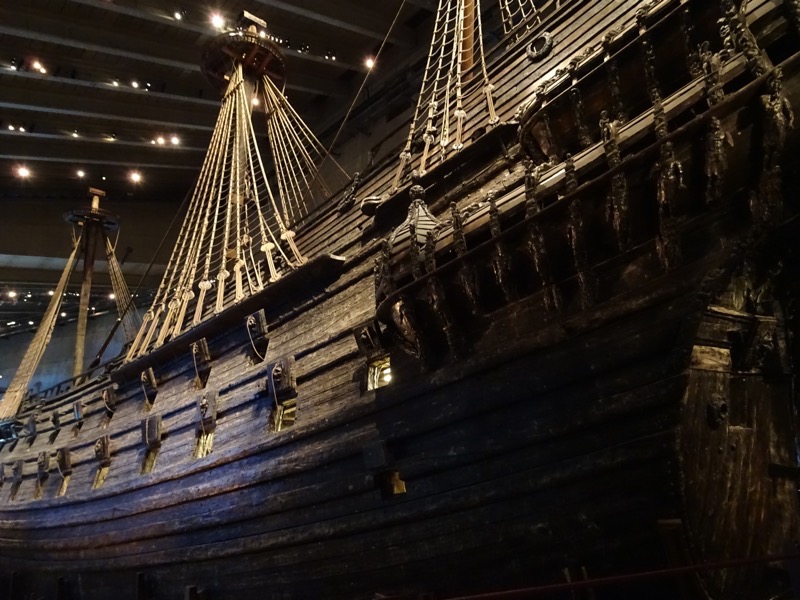
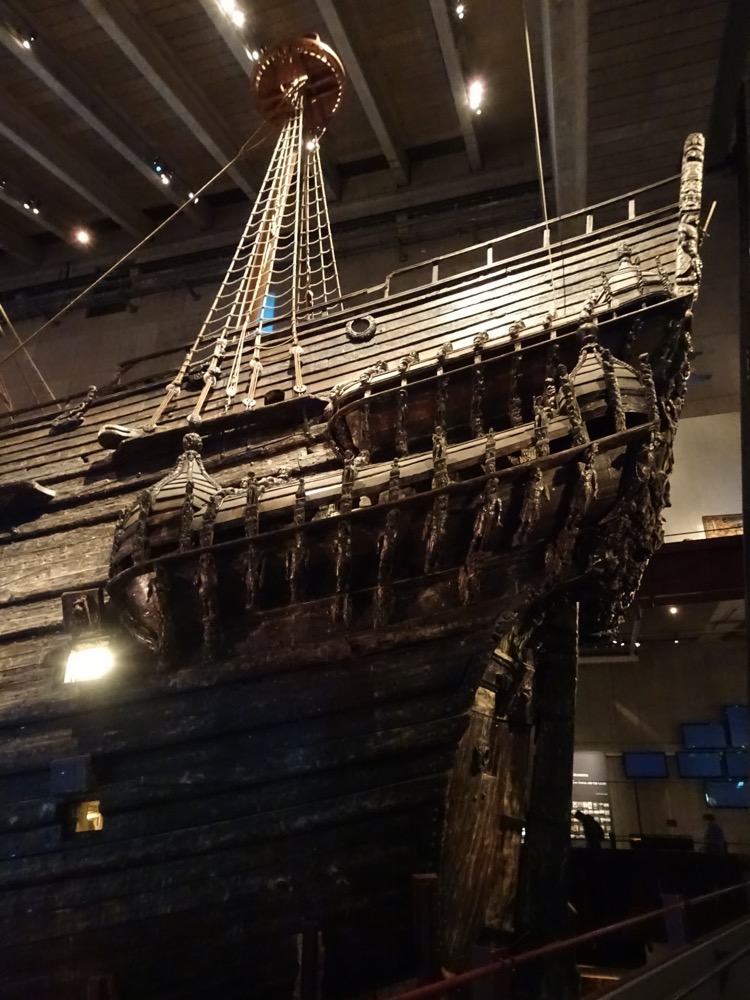 Original documents from the inquest into the sinking of the Vasa, “Between four and five o’clock, the great new warship Vasa keeled over and sank.”
Original documents from the inquest into the sinking of the Vasa, “Between four and five o’clock, the great new warship Vasa keeled over and sank.” 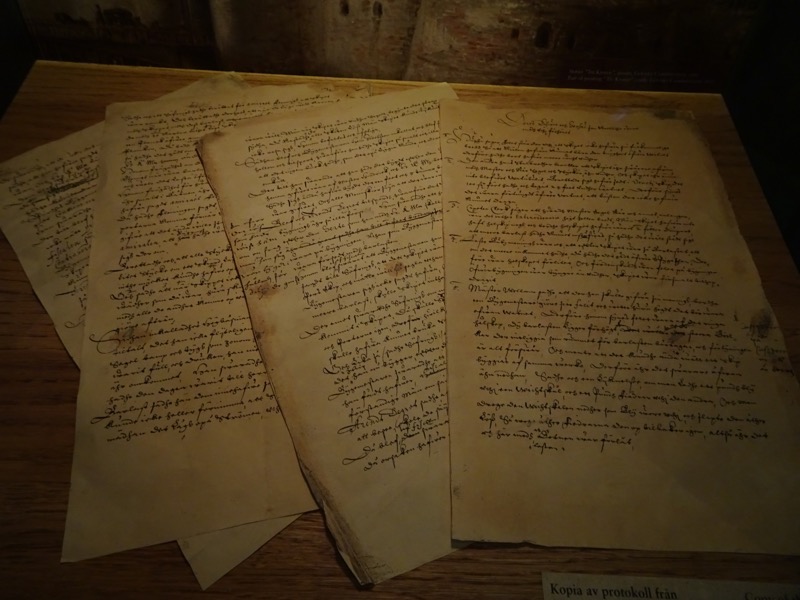 A 1960’s replica of the diving bell used in the 1660’s to salvage the Vasa’s expensive guns.
A 1960’s replica of the diving bell used in the 1660’s to salvage the Vasa’s expensive guns.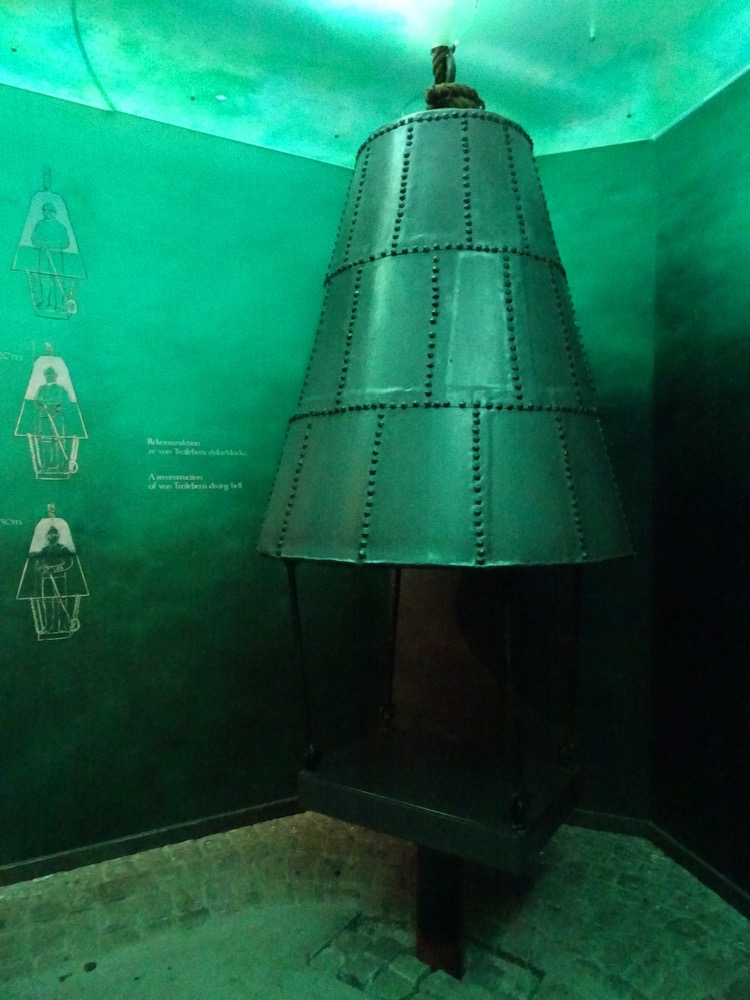 A modelled cross section of the ship which shows the limited space for ballast to offset the huge weight of the cannon decks and the enormous height of the ship.
A modelled cross section of the ship which shows the limited space for ballast to offset the huge weight of the cannon decks and the enormous height of the ship. 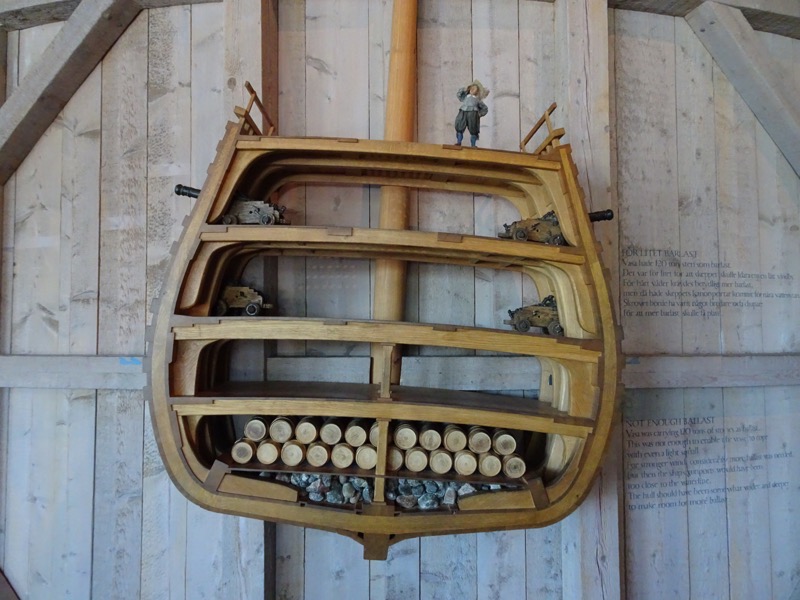
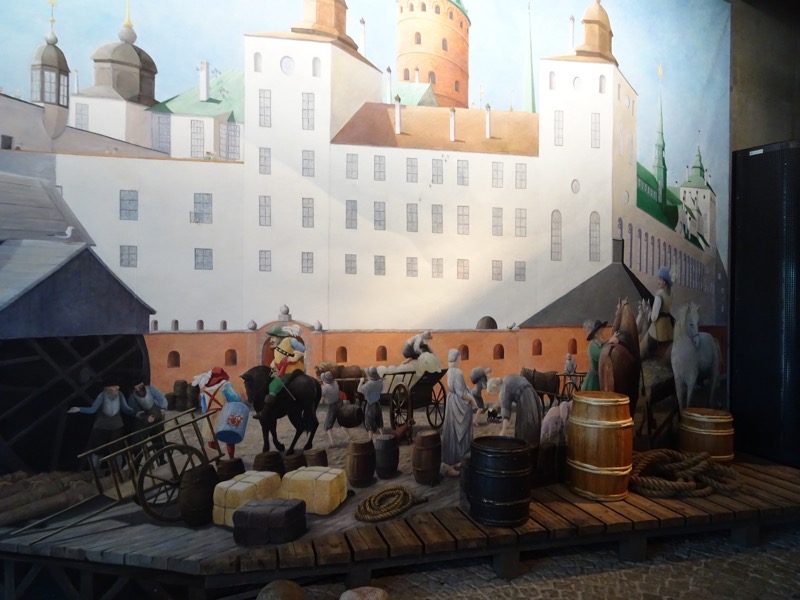
 A 1950’s diving suit, the kind used in the operation to resurrect the Vasa.
A 1950’s diving suit, the kind used in the operation to resurrect the Vasa.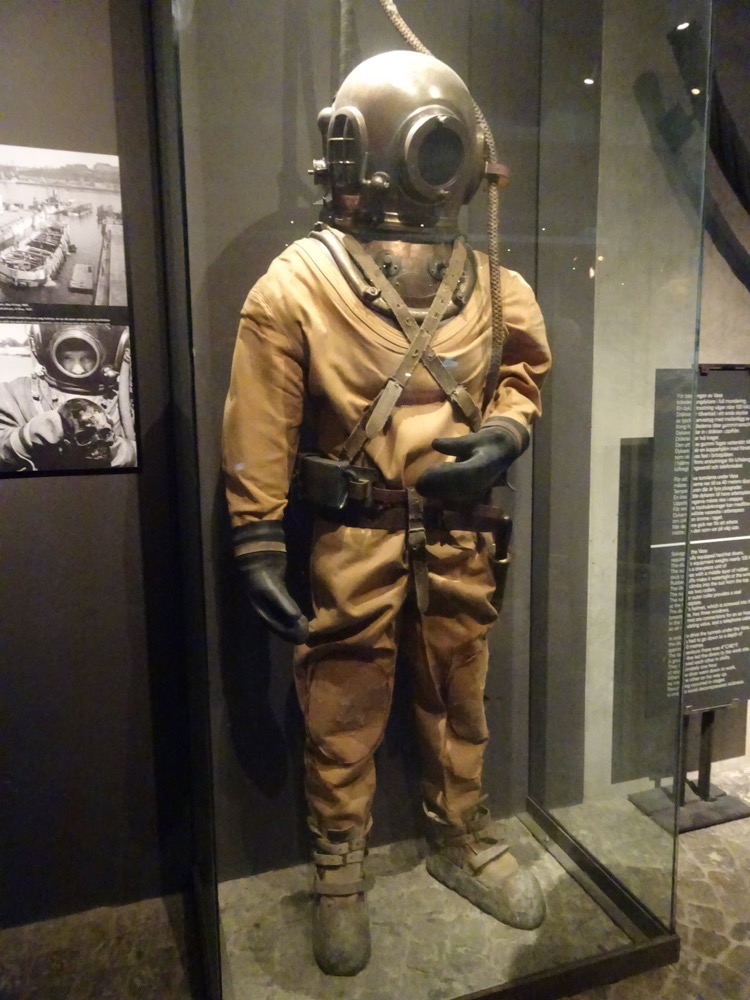 Scale model of the Vasa showing the vibrant coloured sculptures and a depiction of the ship had she ever had all her sail hoisted.
Scale model of the Vasa showing the vibrant coloured sculptures and a depiction of the ship had she ever had all her sail hoisted.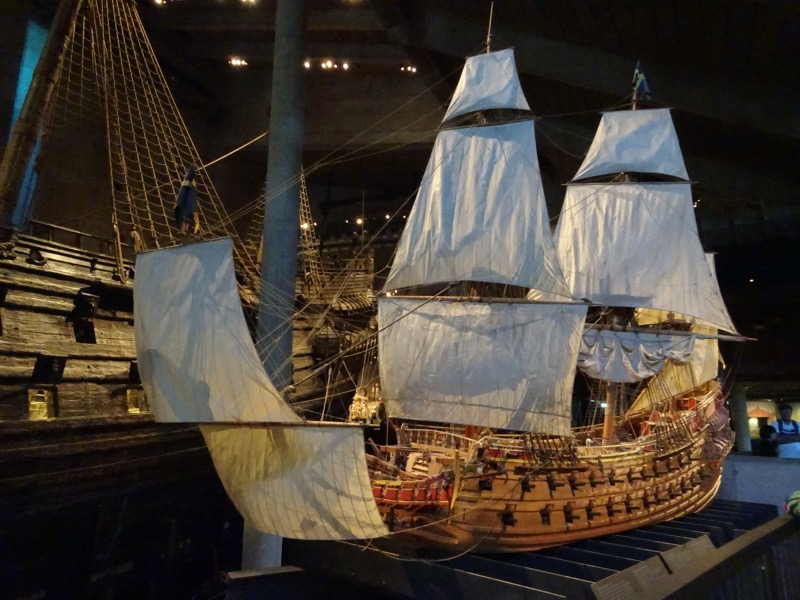
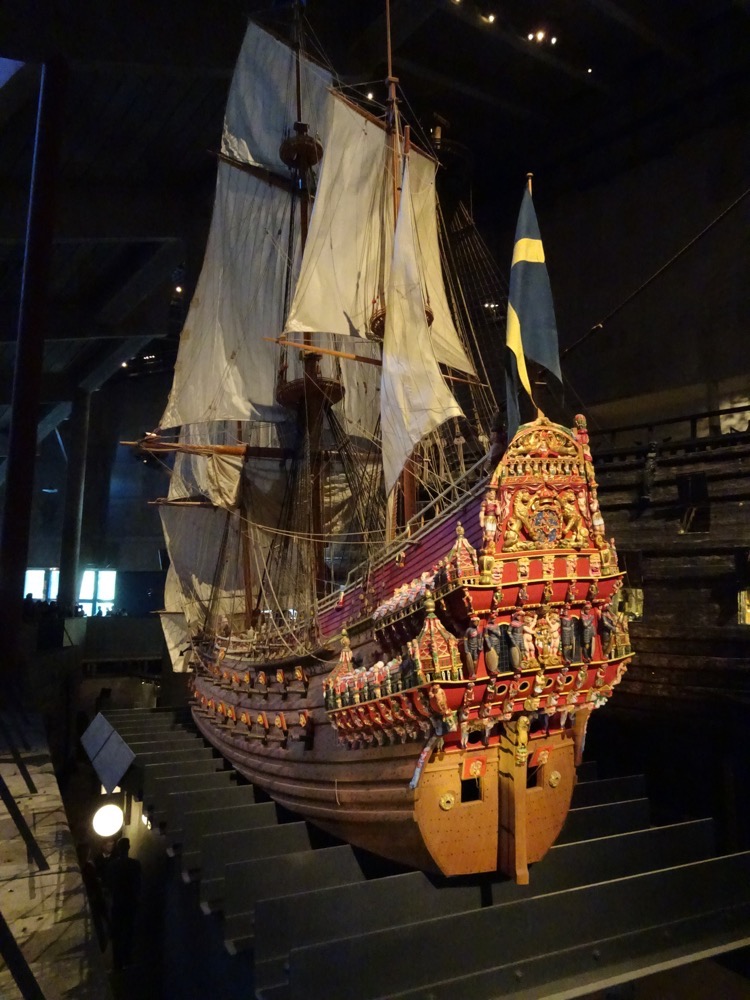 In the Vasa’s day, the Swedish navy ships were largely crewed with conscripts, the most able seamen frequently defected to foreign fleets where the wages were apparently better. One man in ten was usually taken on active service, only children under 15 and men older than 60 were exempt from service.
In the Vasa’s day, the Swedish navy ships were largely crewed with conscripts, the most able seamen frequently defected to foreign fleets where the wages were apparently better. One man in ten was usually taken on active service, only children under 15 and men older than 60 were exempt from service.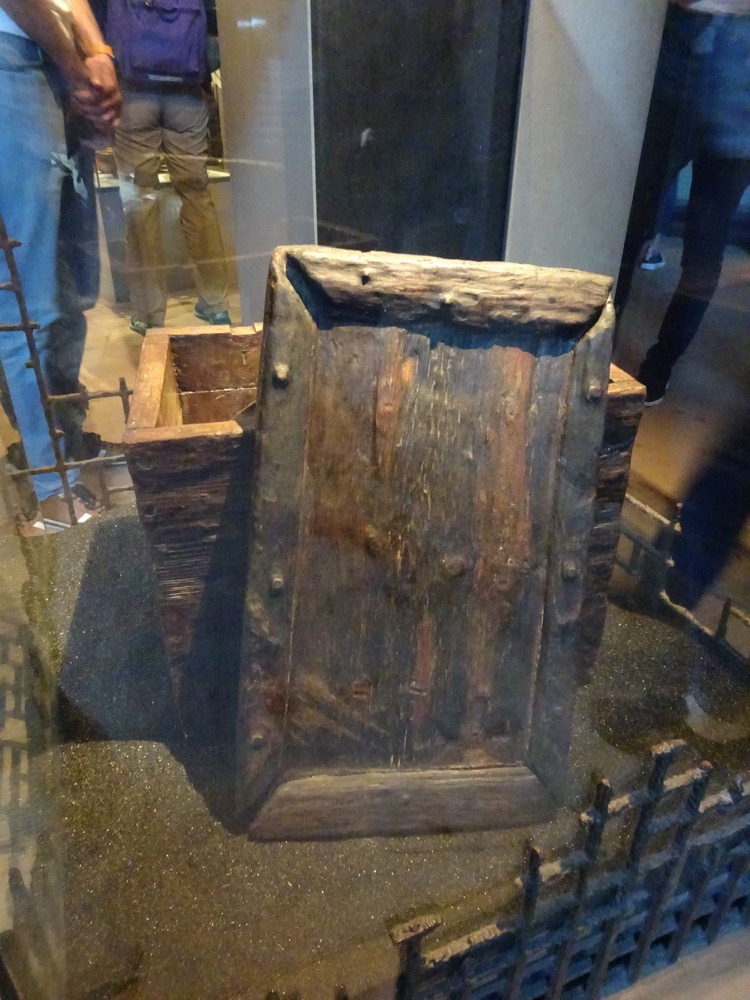
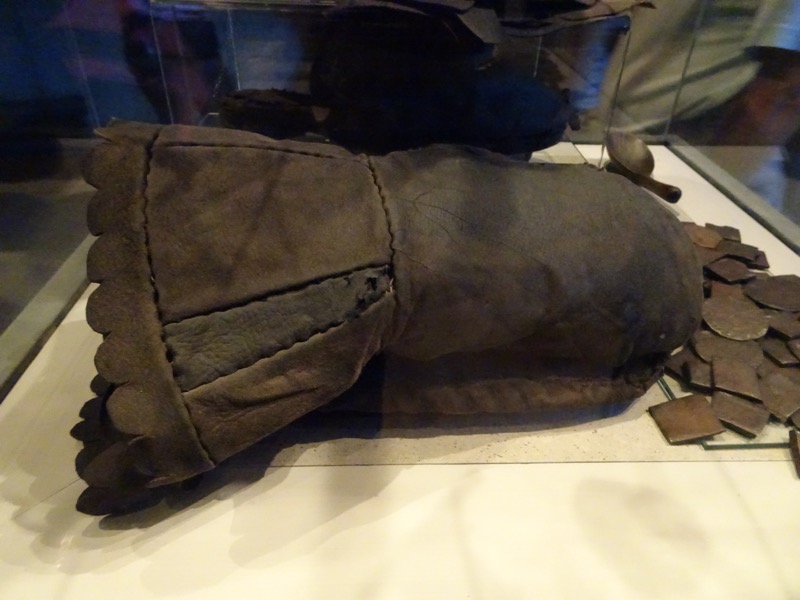 Above: some leather mittens/gloves. Below: Shoes belonging to a crew member.
Above: some leather mittens/gloves. Below: Shoes belonging to a crew member.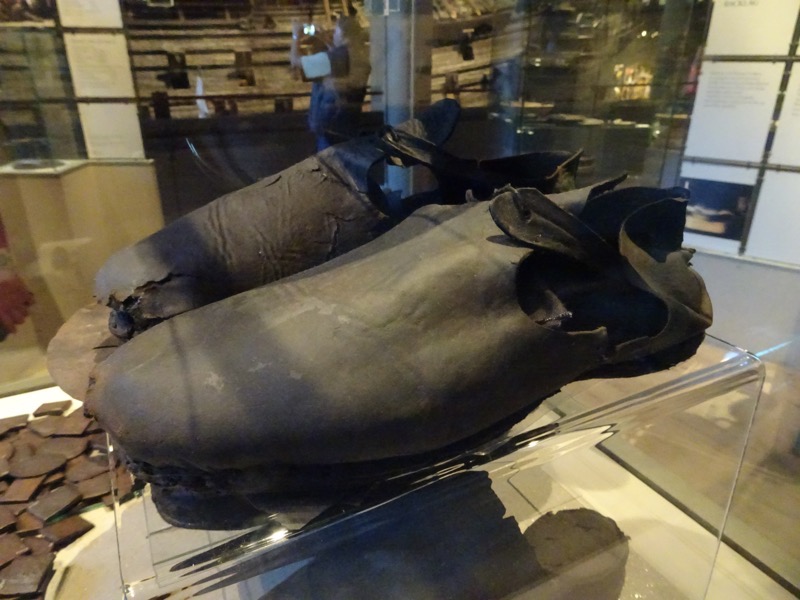

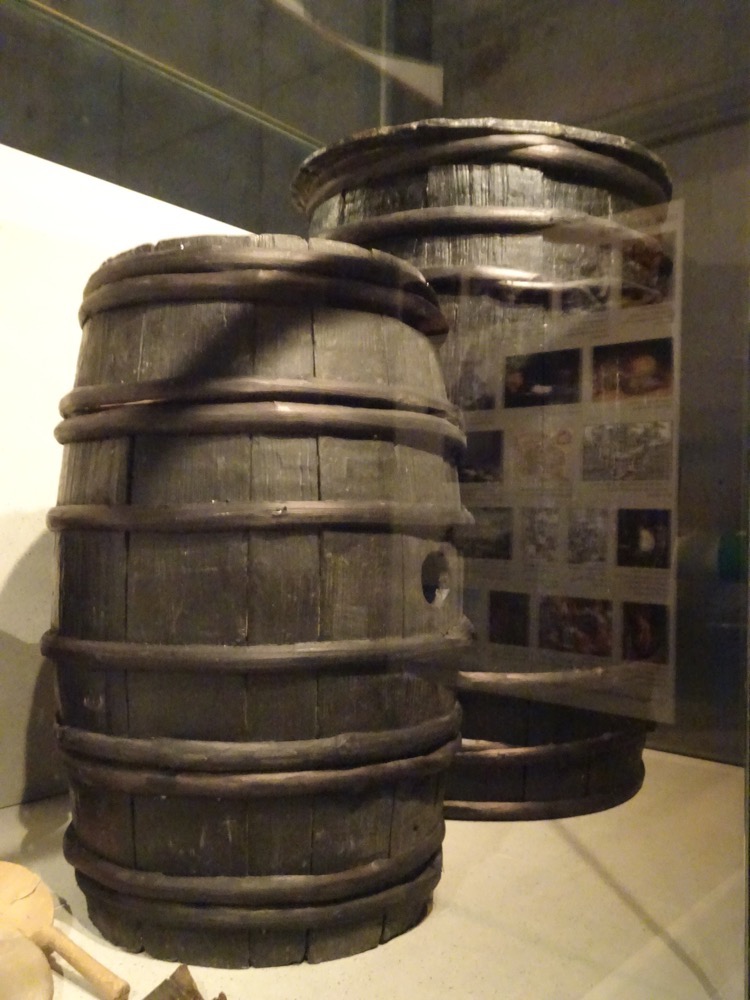
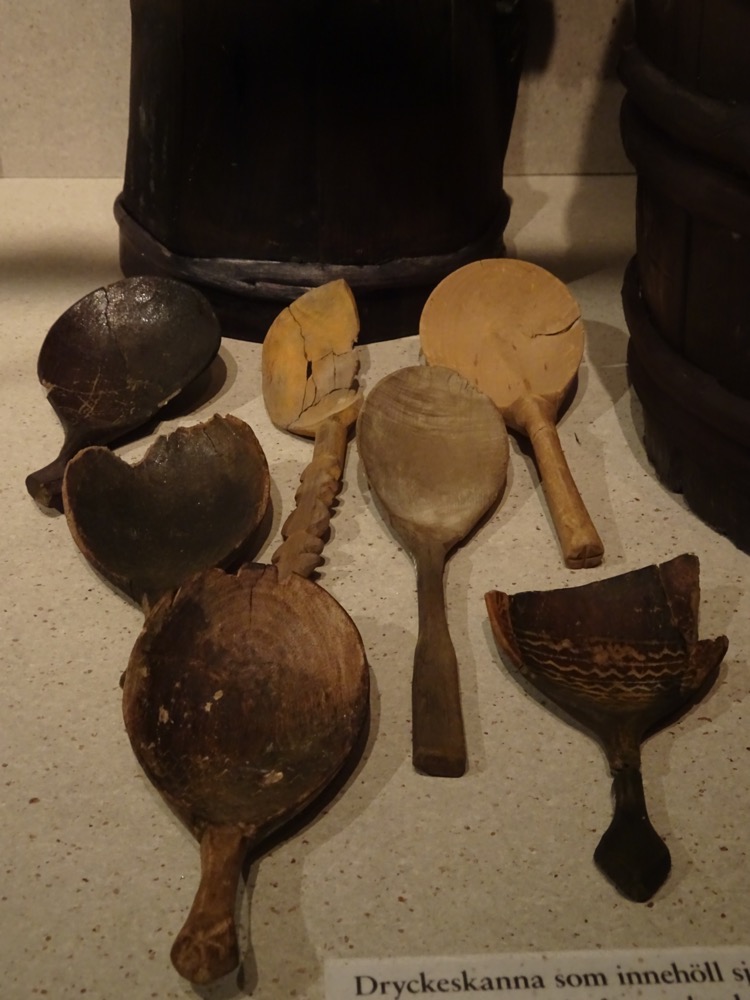 A leather pouch remnant.
A leather pouch remnant.
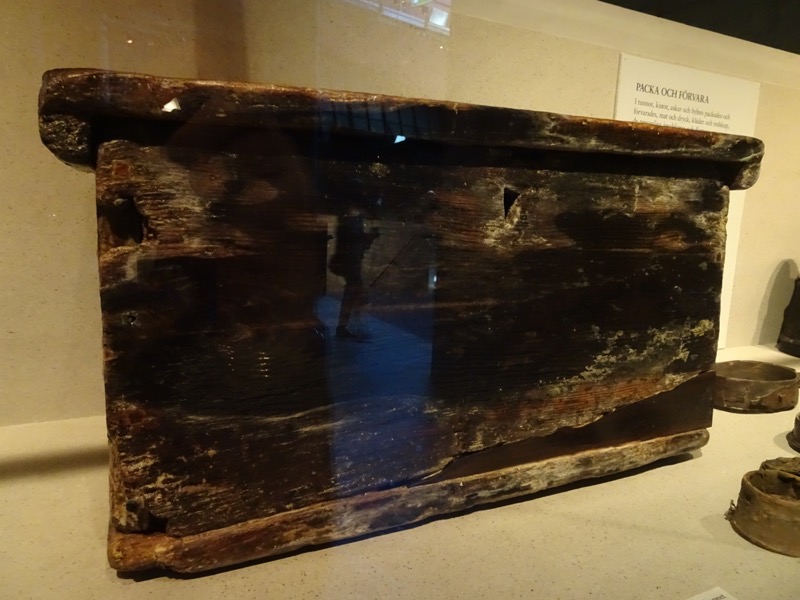 Small casket with a ‘combination’ lock.
Small casket with a ‘combination’ lock.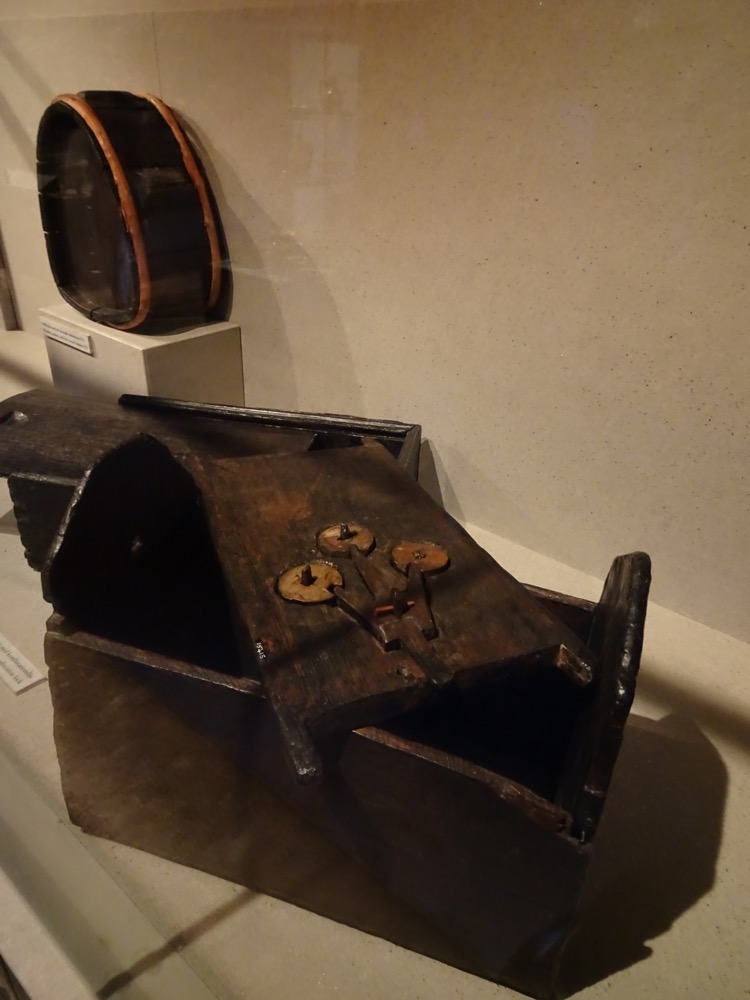
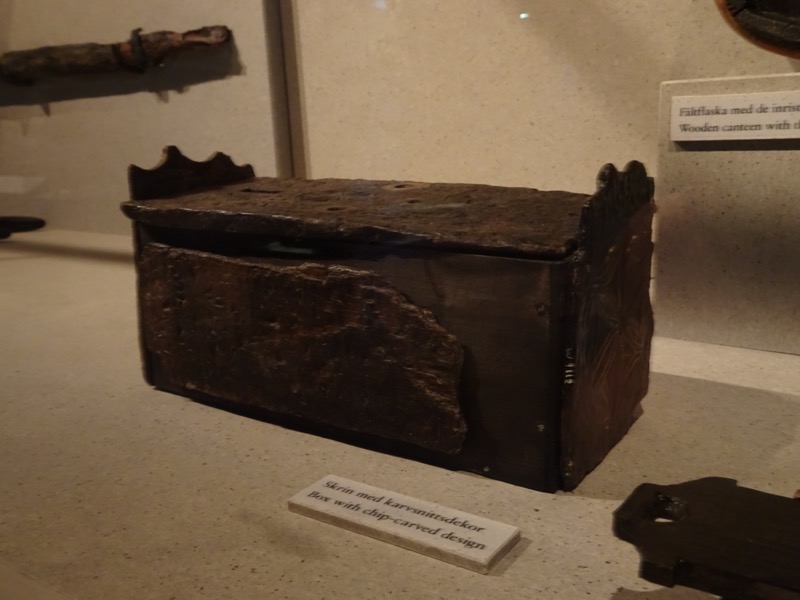 Earthernware likely from the officers mess.
Earthernware likely from the officers mess.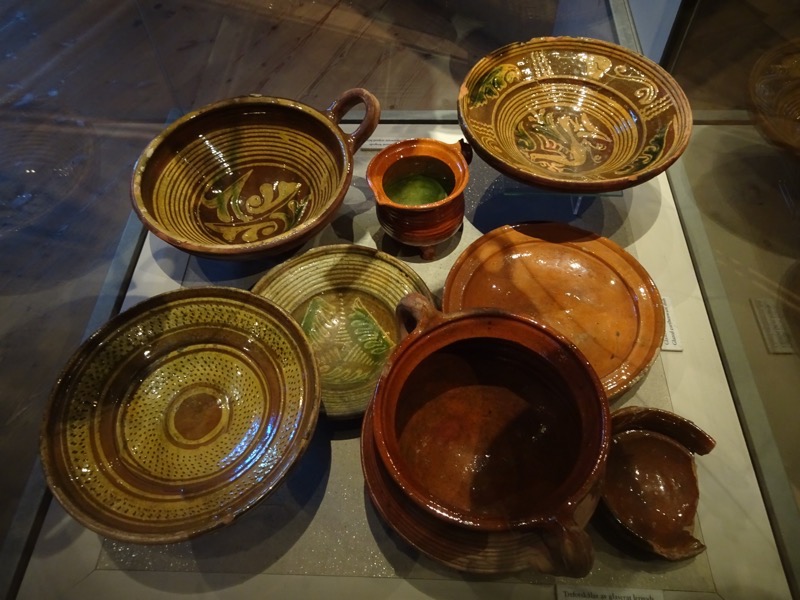
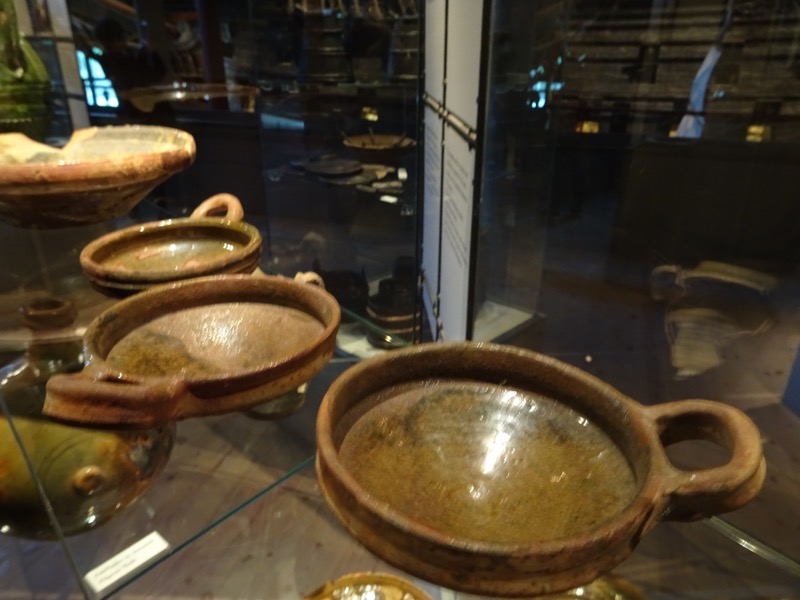
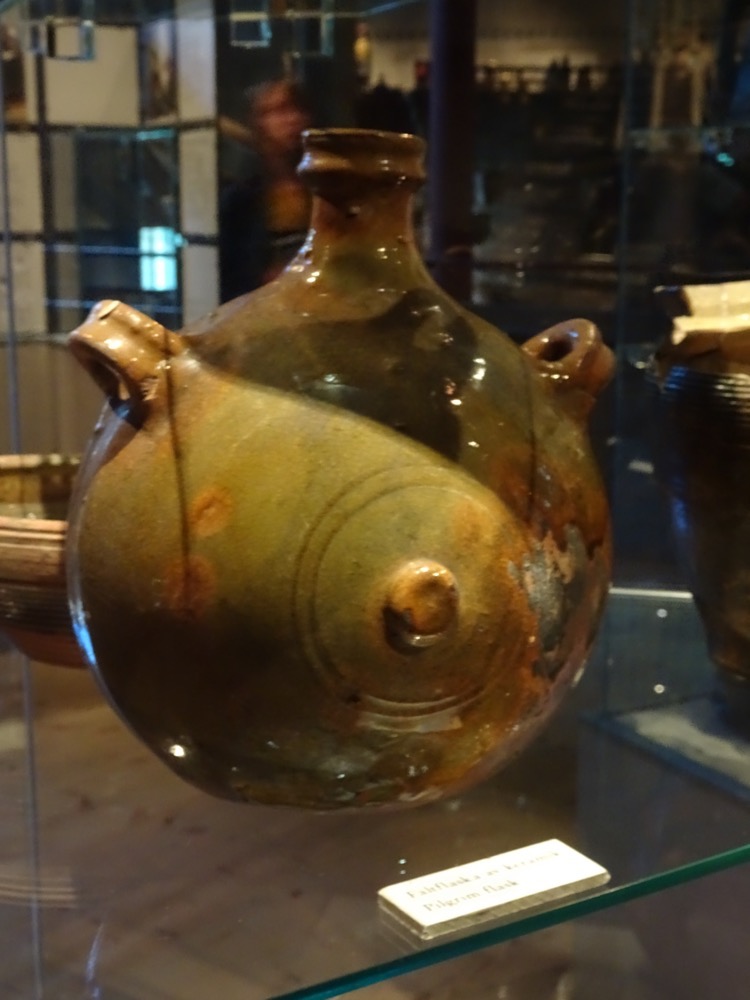
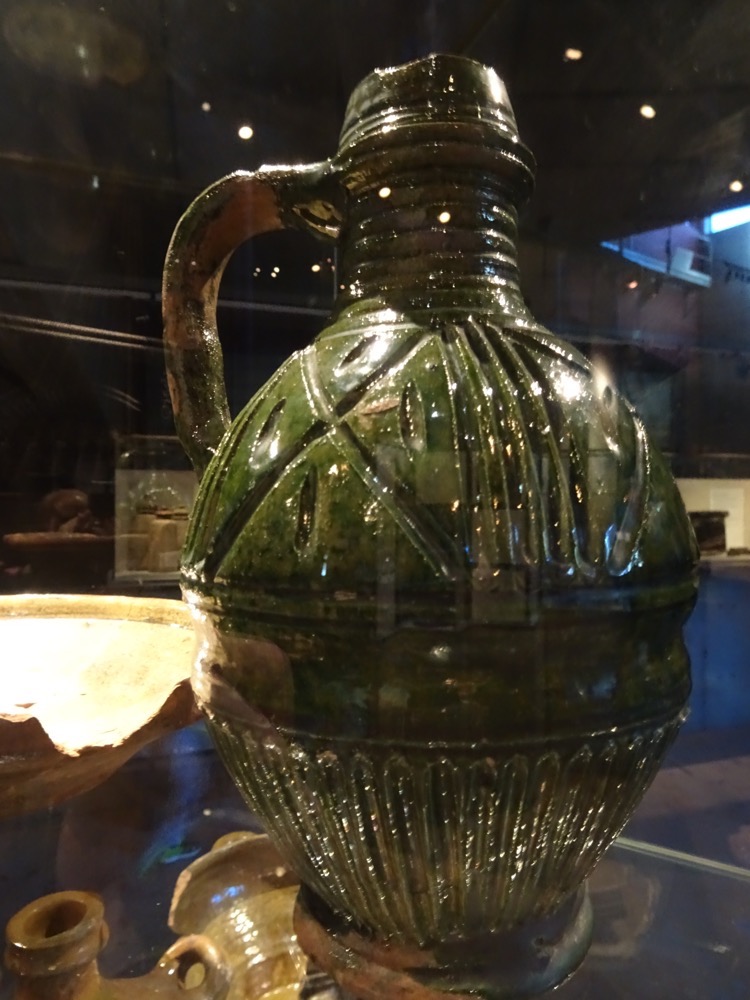
 Simple wooden dishes and spoons mostly likely used by the conscipted seamen. In contrast the officers would have had pewter and faience dishes served in the Captain’s quarters.
Simple wooden dishes and spoons mostly likely used by the conscipted seamen. In contrast the officers would have had pewter and faience dishes served in the Captain’s quarters.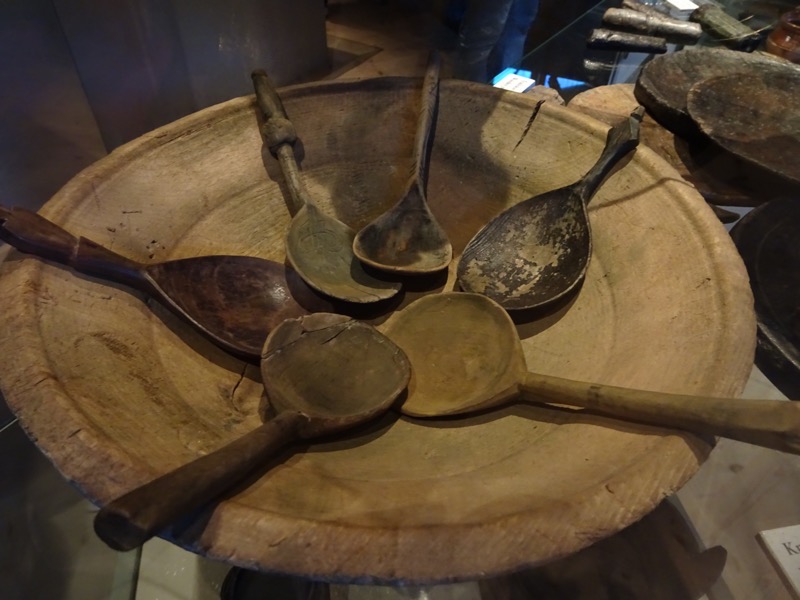
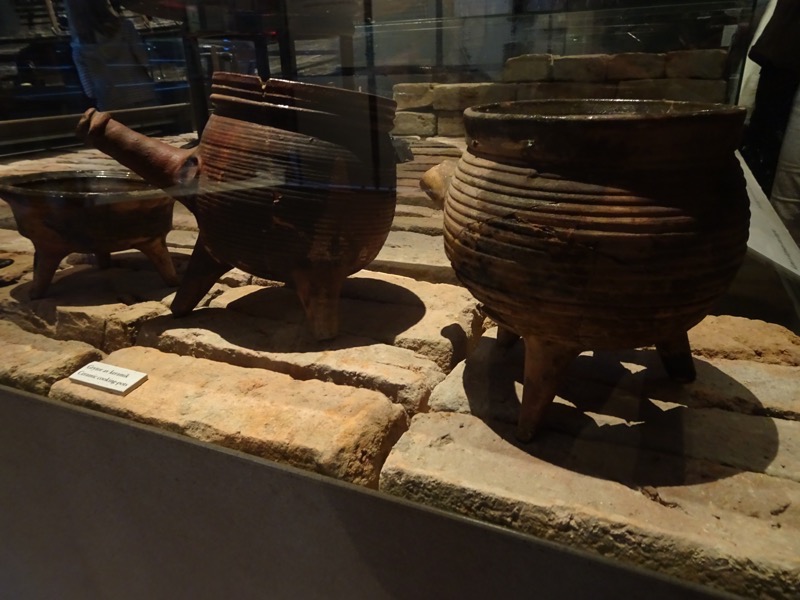

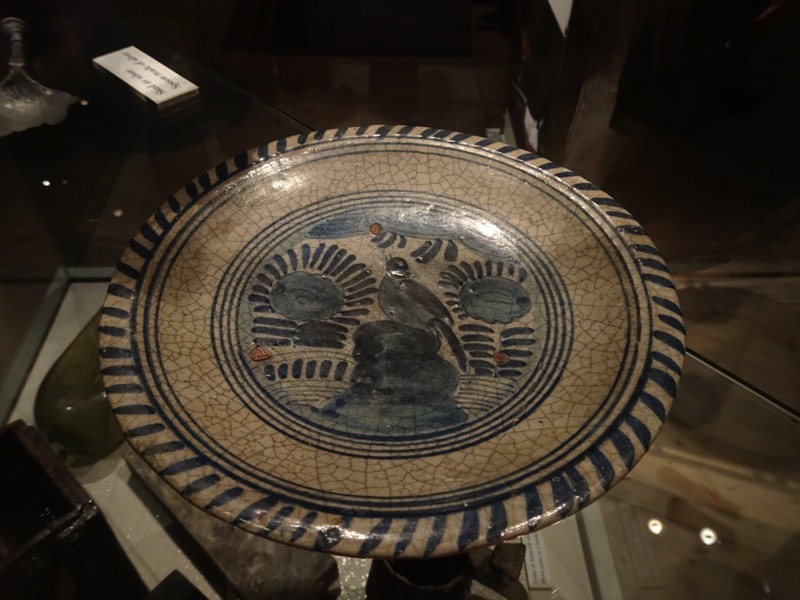
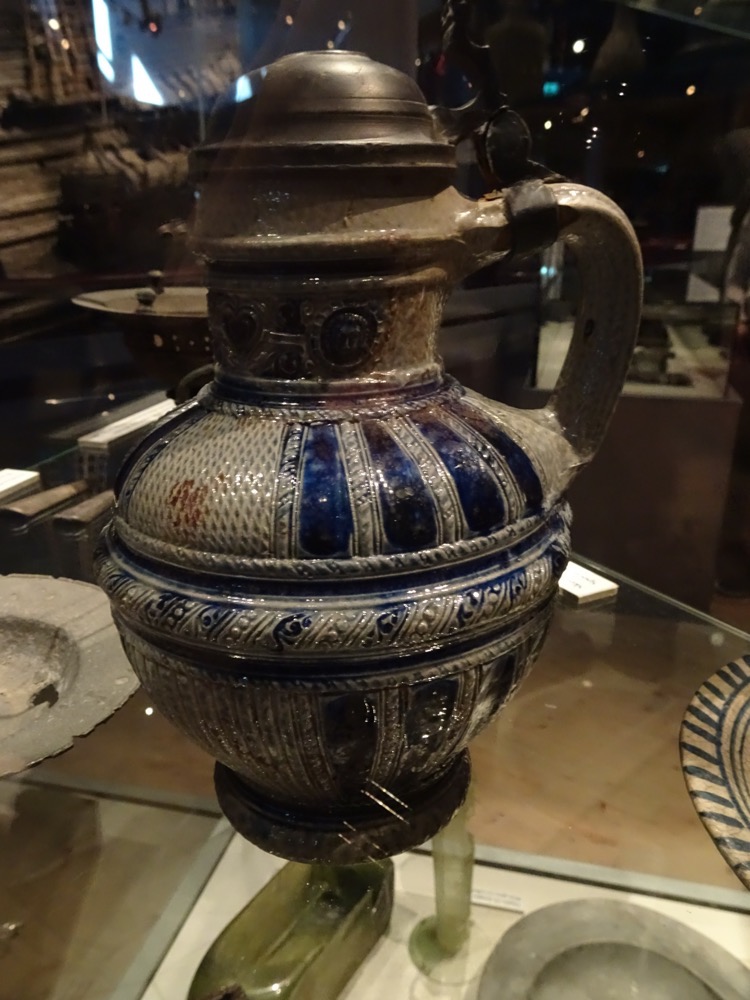

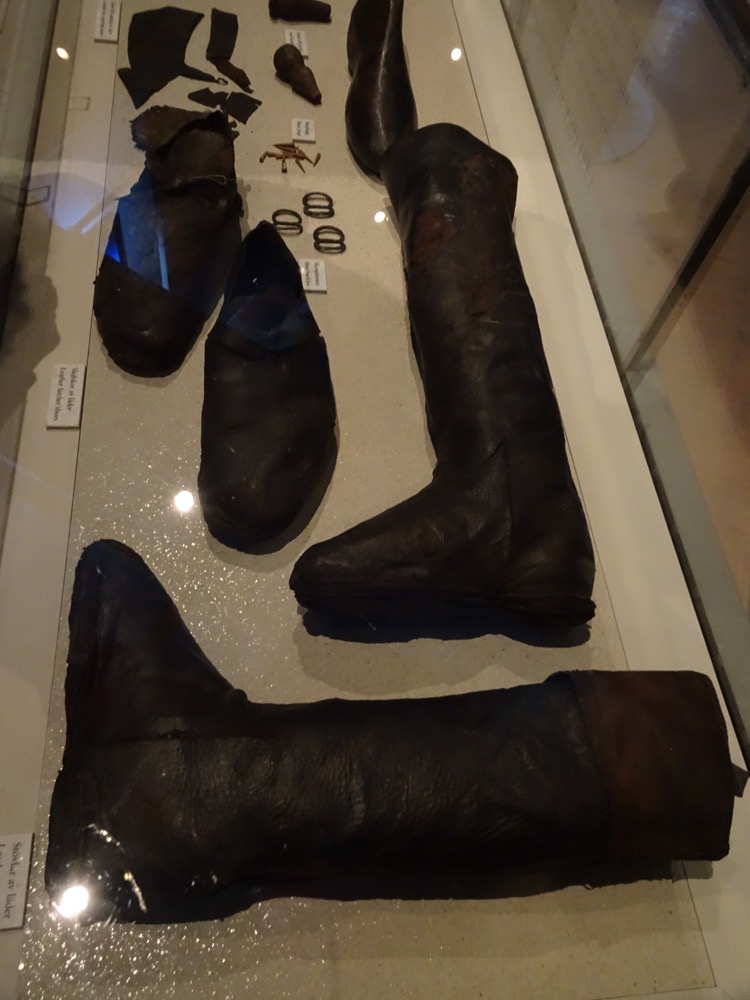
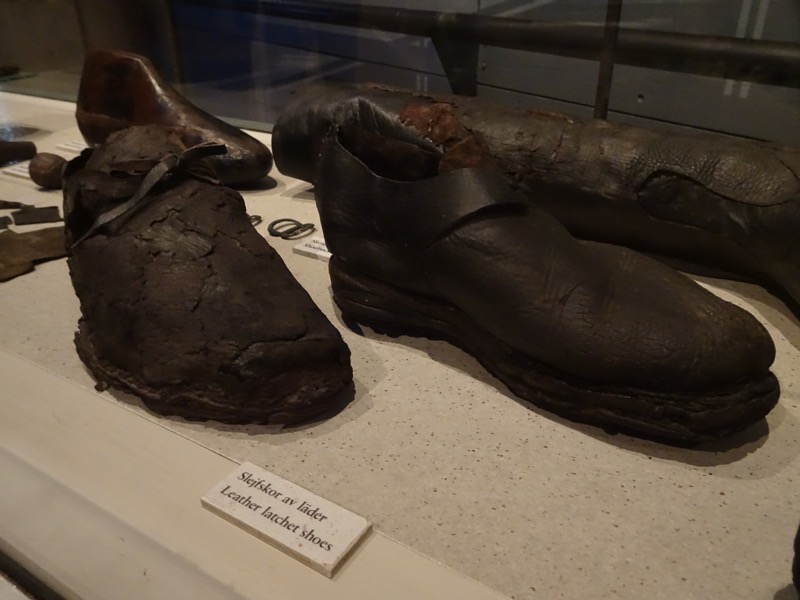
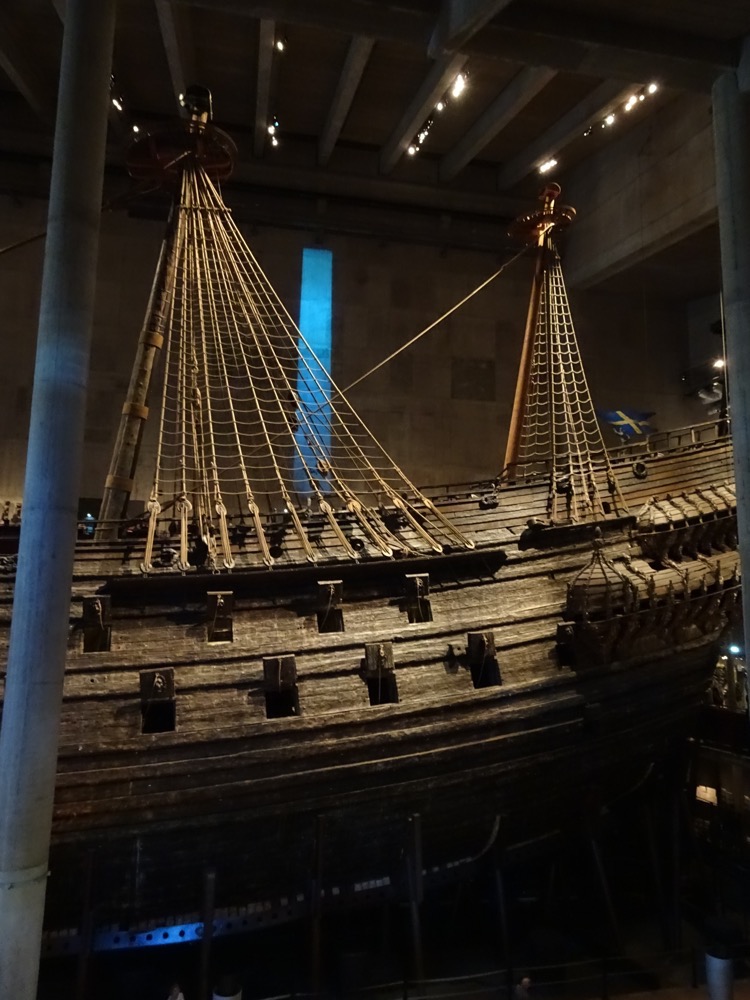
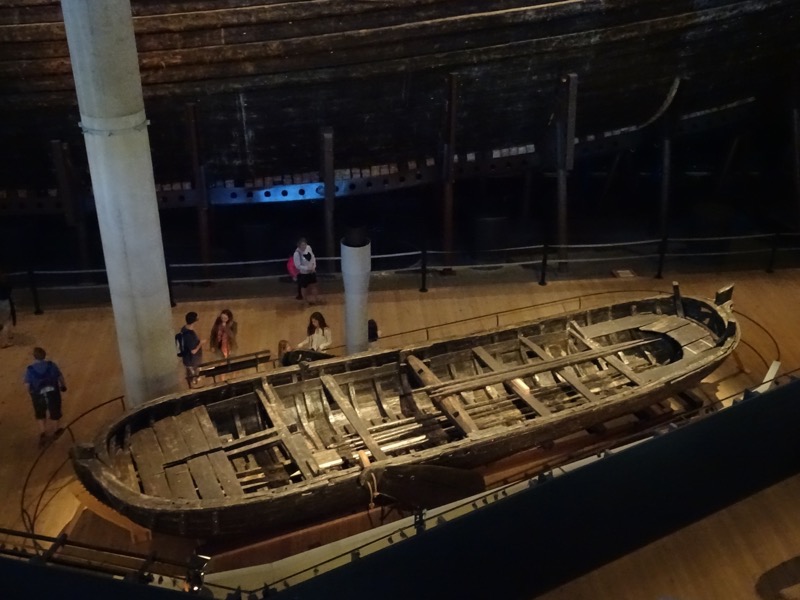 Entrance to the Captain’s quarters – which would have doubled as the King’s quarters if he was on board. Gustavus was an unusual Renaissance king and led his troops into battle for nearly 30 years.
Entrance to the Captain’s quarters – which would have doubled as the King’s quarters if he was on board. Gustavus was an unusual Renaissance king and led his troops into battle for nearly 30 years. 
 Captain’s quarters – the ceiling height is barely 5’5″ inside.
Captain’s quarters – the ceiling height is barely 5’5″ inside.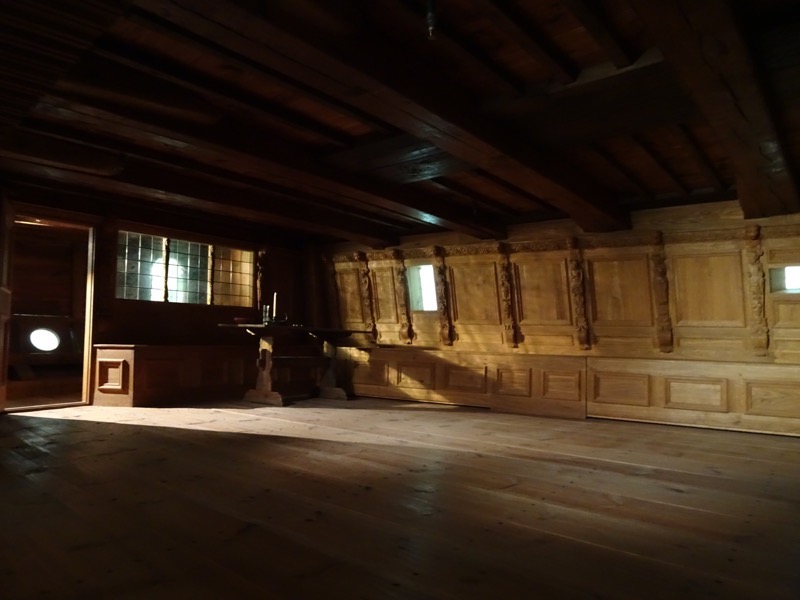
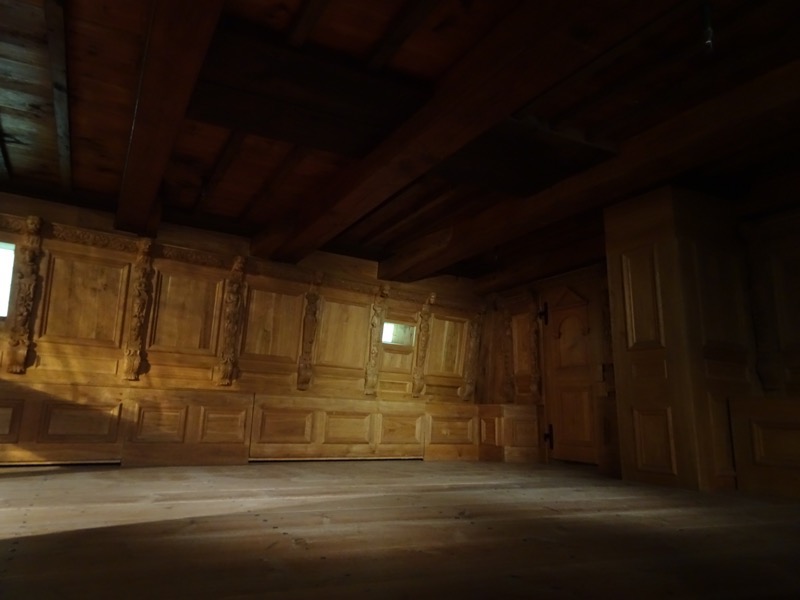
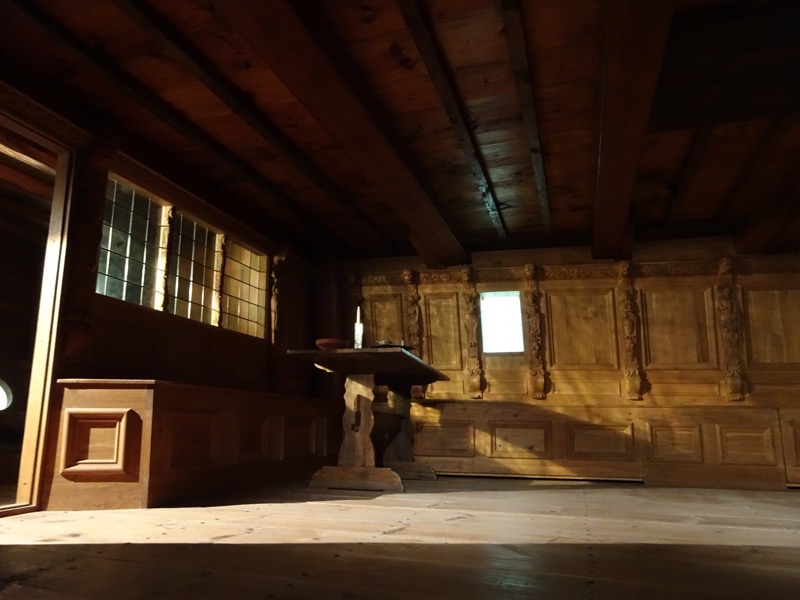 The Vasa Museum itself is quite a spectacle, if you look out the window,s it is only a few hundred meters from the spot where the Vasa sank. The museum also occupies the site of the former naval dockyard. There were 384 proposals to build a museum to house the important Vasa warship
The Vasa Museum itself is quite a spectacle, if you look out the window,s it is only a few hundred meters from the spot where the Vasa sank. The museum also occupies the site of the former naval dockyard. There were 384 proposals to build a museum to house the important Vasa warship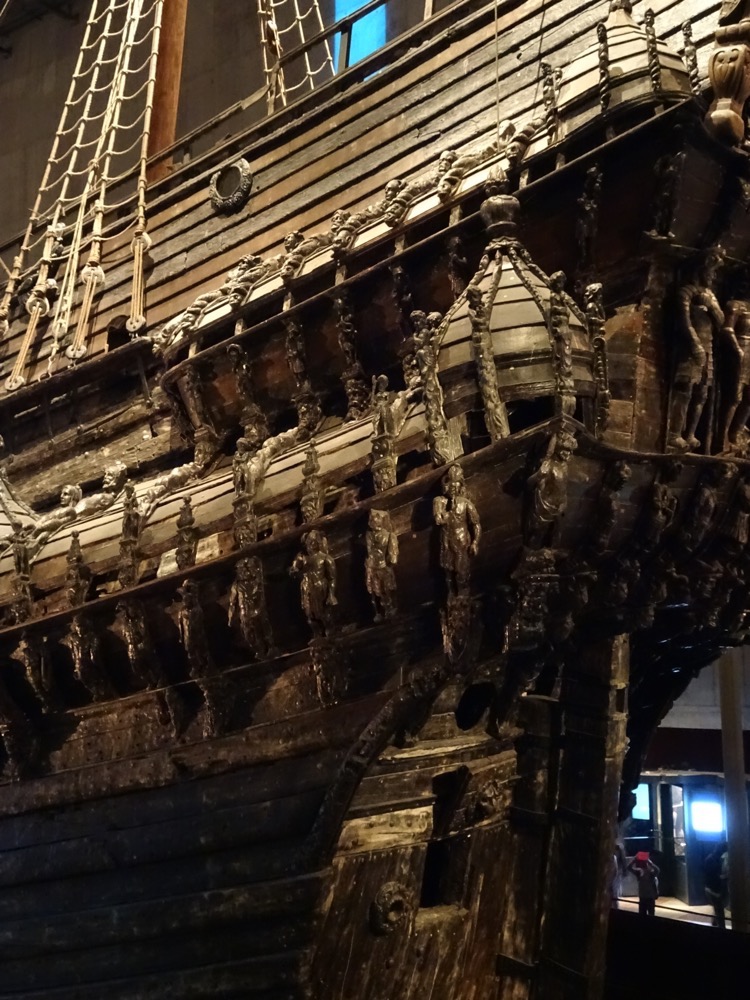
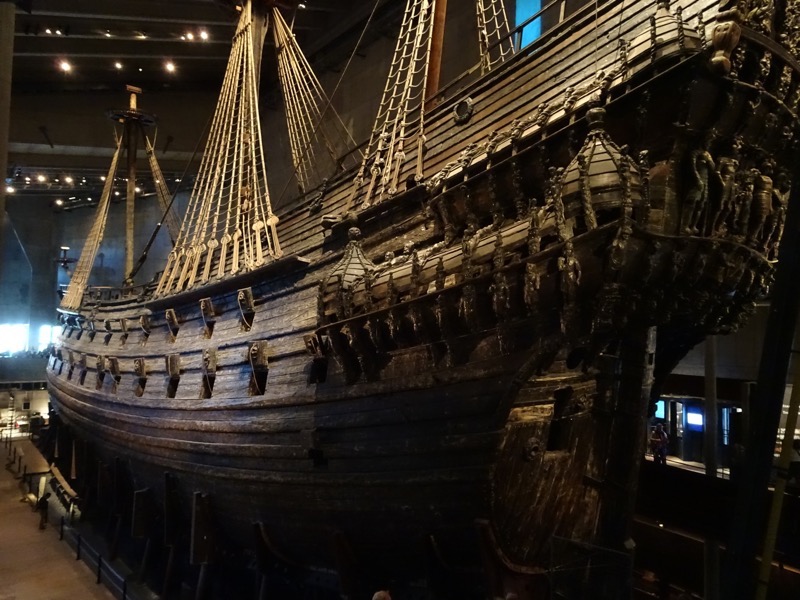 The blue window to the right, depicts the depth of water in which the Vasa sank.
The blue window to the right, depicts the depth of water in which the Vasa sank.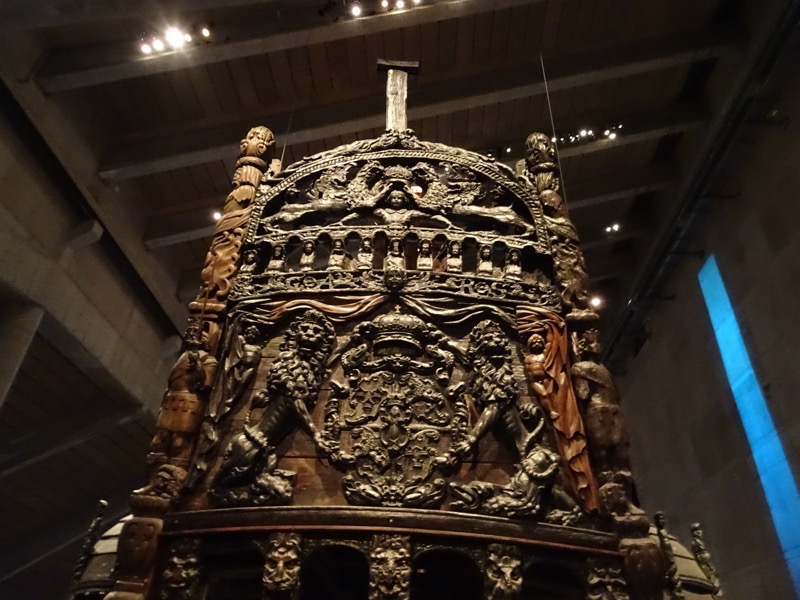
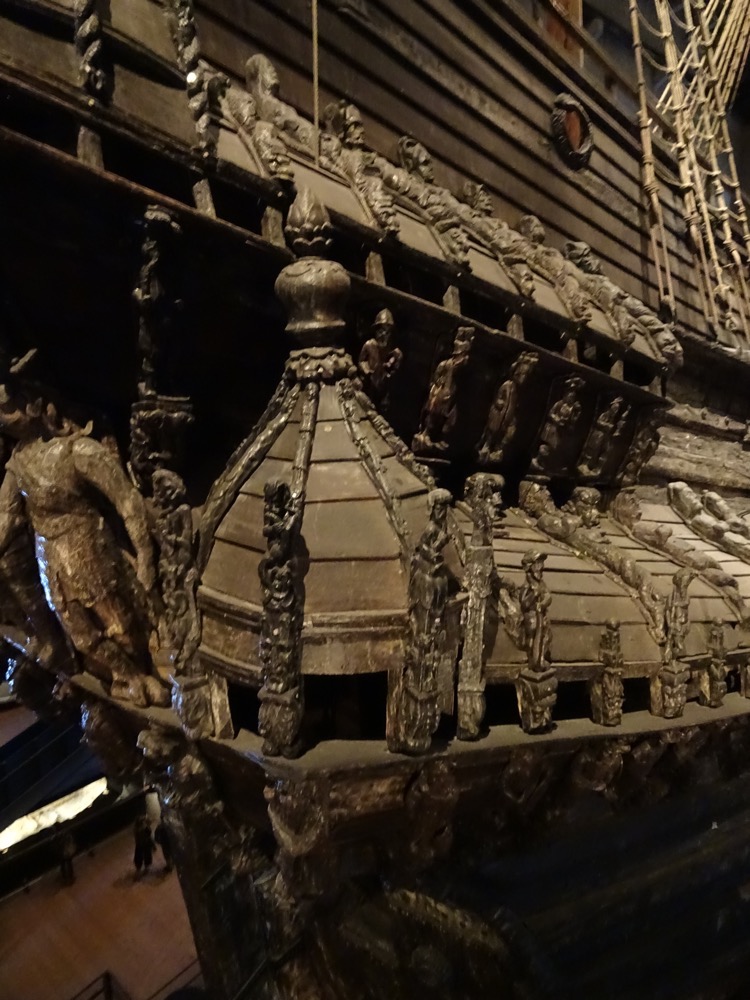 The height of the ceiling marks the point at which the masts were cut off when the ship was submerged. Part of the architectural design has the full size of the masts on the outside of the building showing the full 52.5m height of the ship.
The height of the ceiling marks the point at which the masts were cut off when the ship was submerged. Part of the architectural design has the full size of the masts on the outside of the building showing the full 52.5m height of the ship.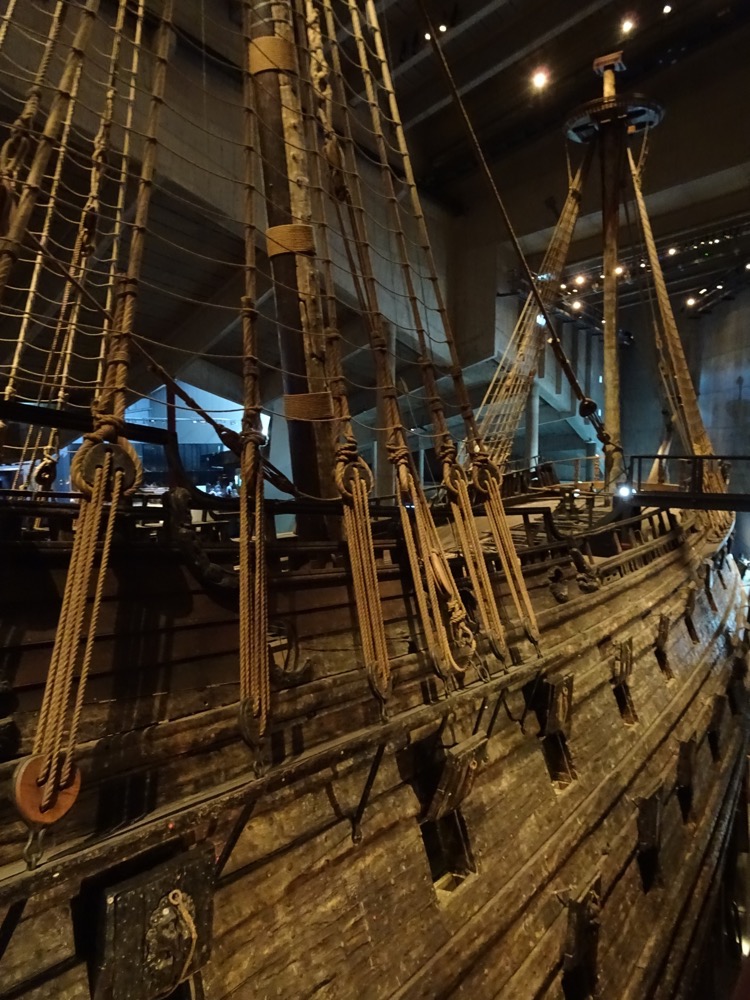
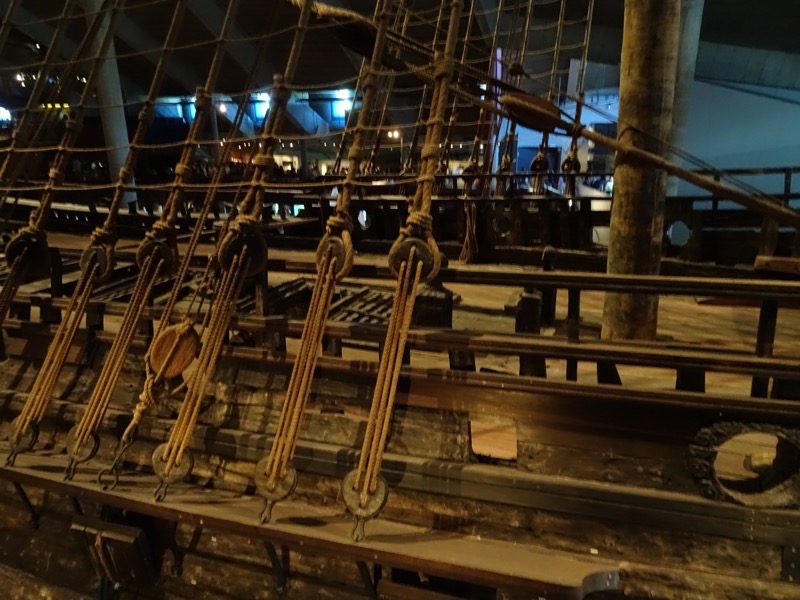


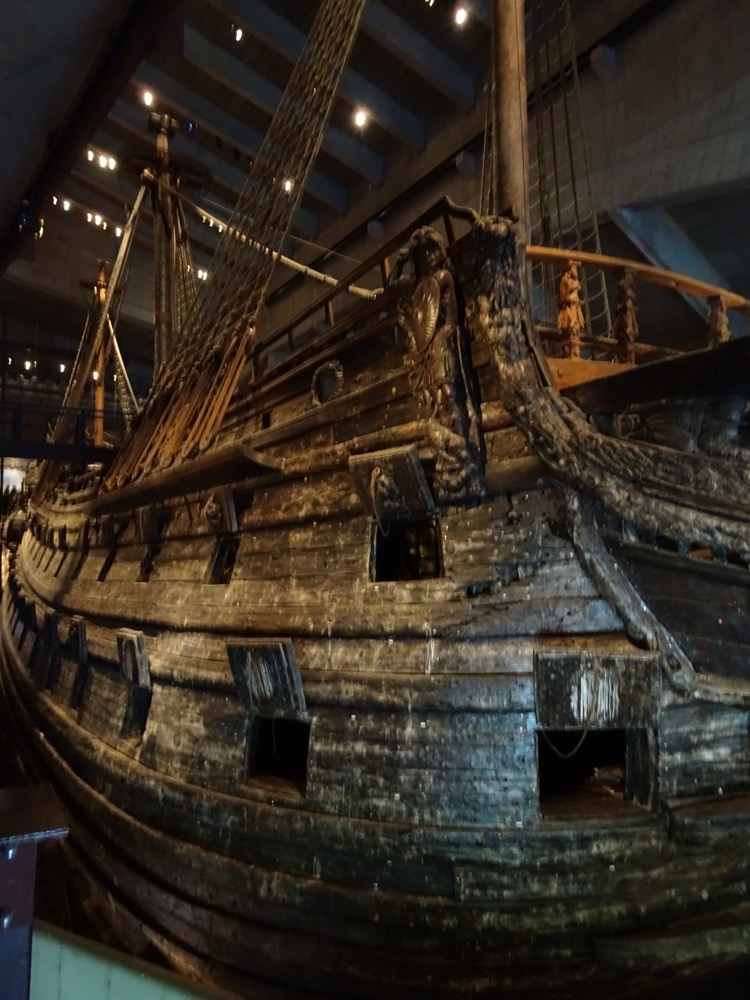
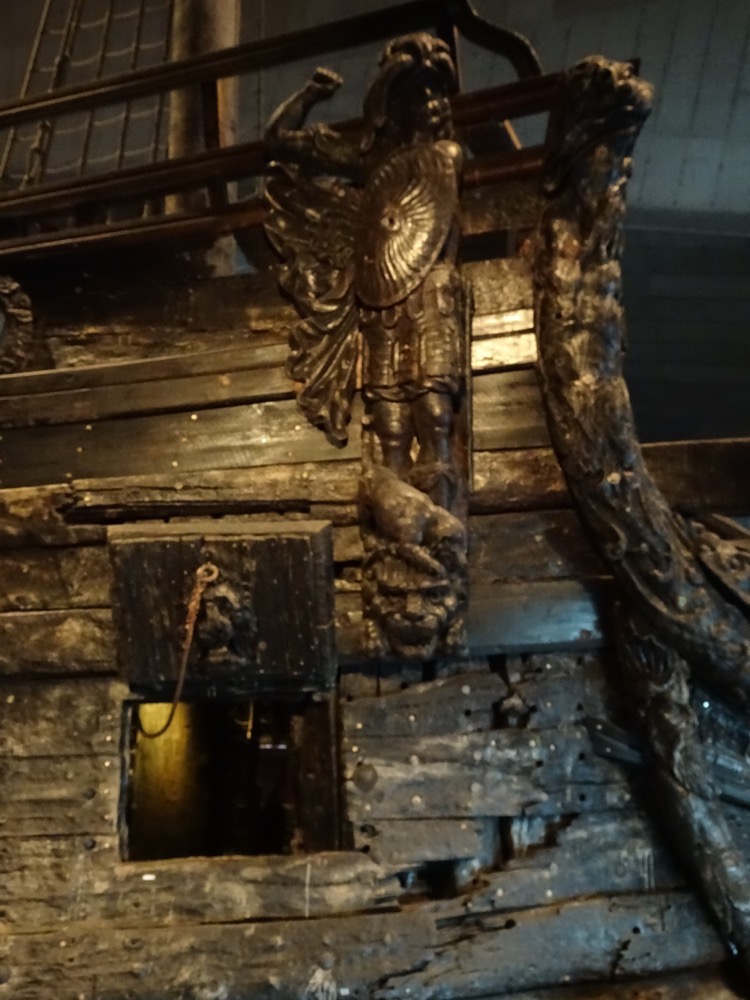
 It is an exceedingly impressive ship, and in a perfectly designed musuem to showcase it. No wonder it has become one of the world’s premiere tourist attractions – you can not seen anything like this anywhere else in the world.
It is an exceedingly impressive ship, and in a perfectly designed musuem to showcase it. No wonder it has become one of the world’s premiere tourist attractions – you can not seen anything like this anywhere else in the world.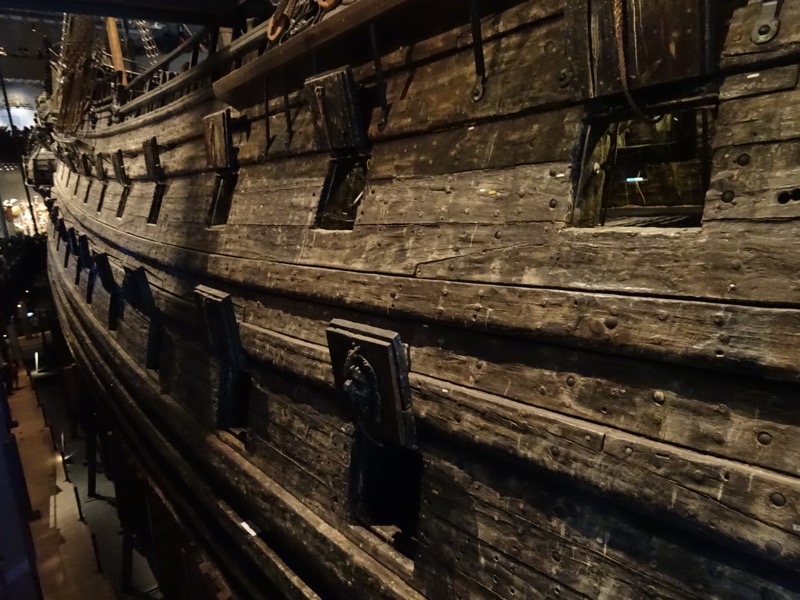
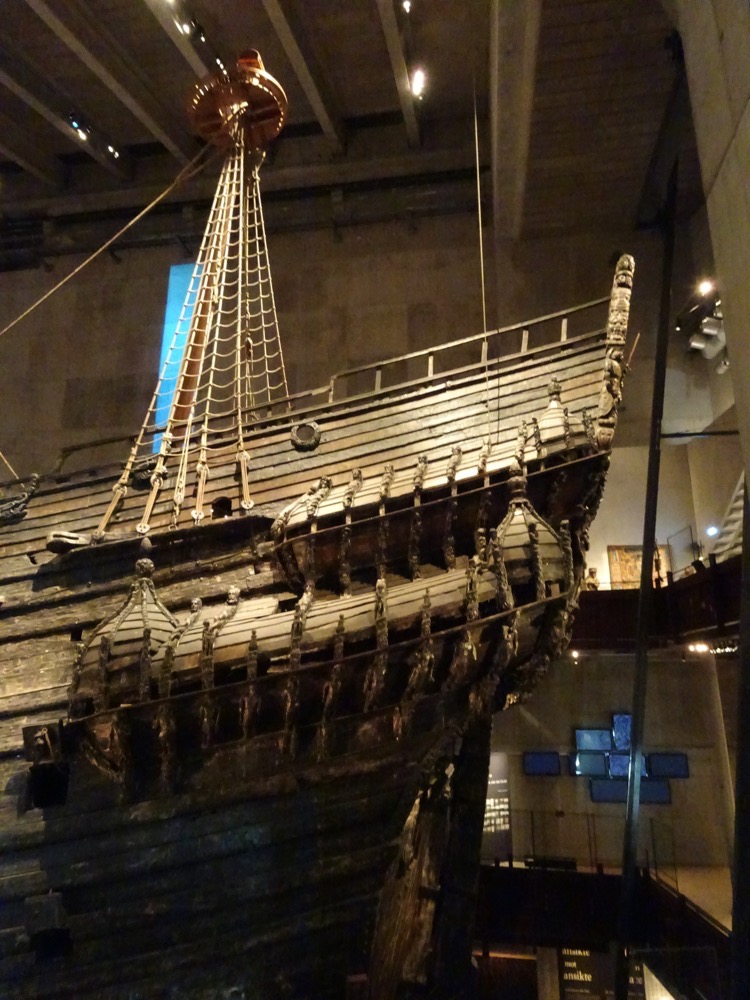
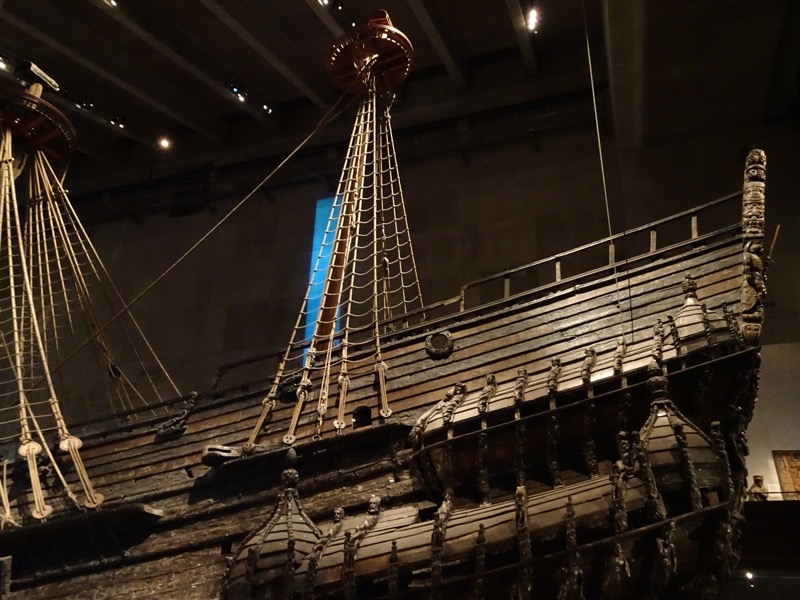



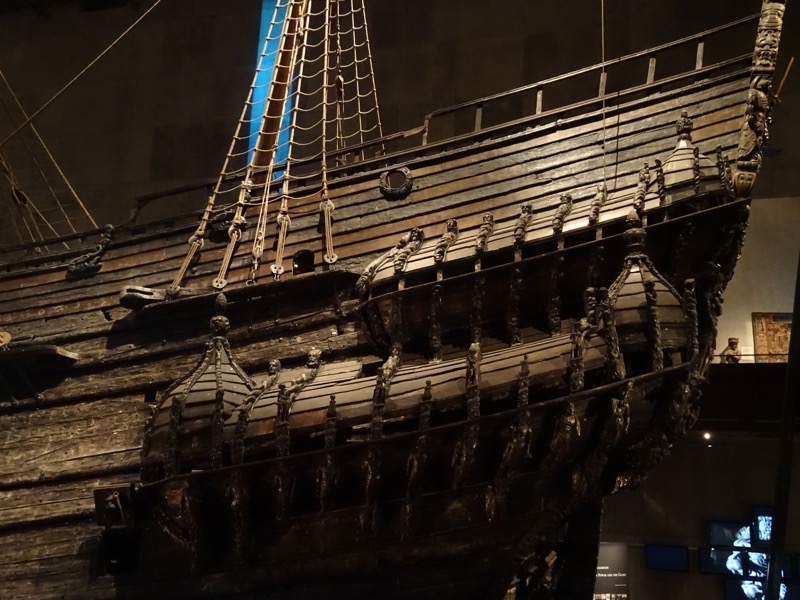
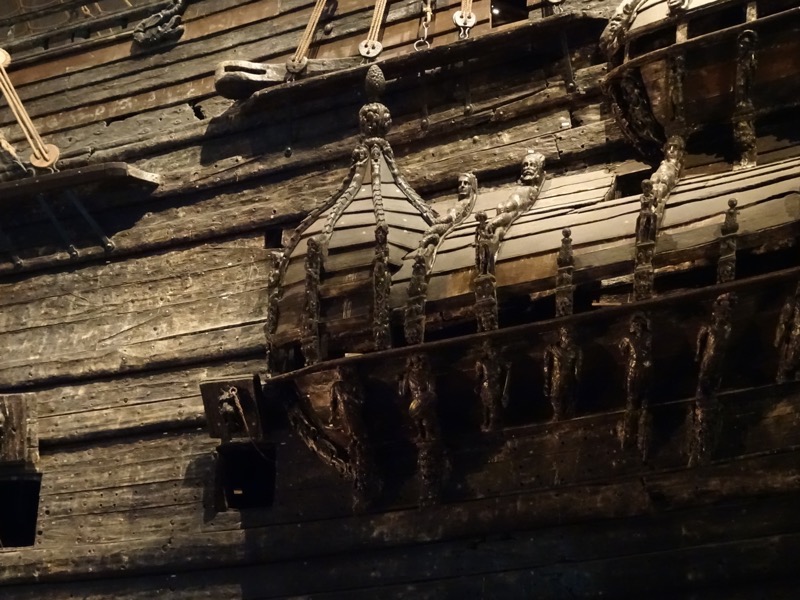
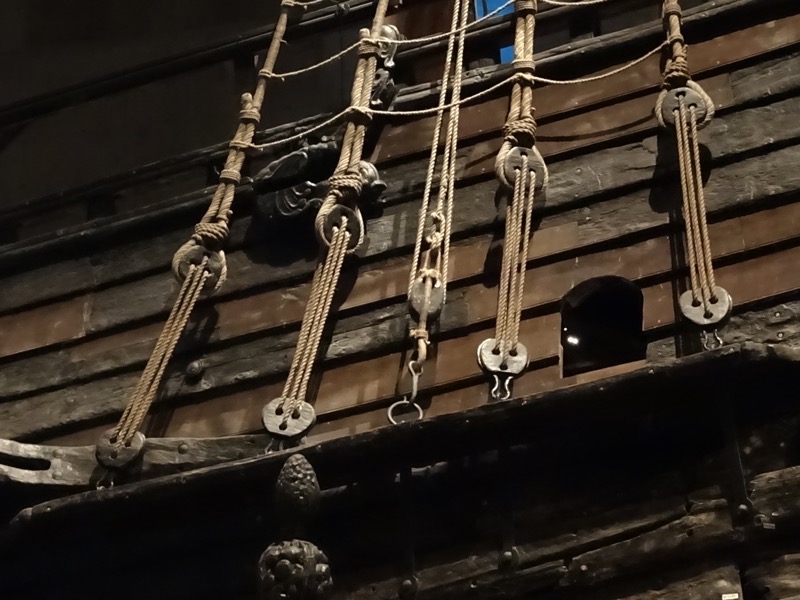 A recreation of the gun decks shows how large the cannon were and in what tight quarters the soldiers lived.
A recreation of the gun decks shows how large the cannon were and in what tight quarters the soldiers lived.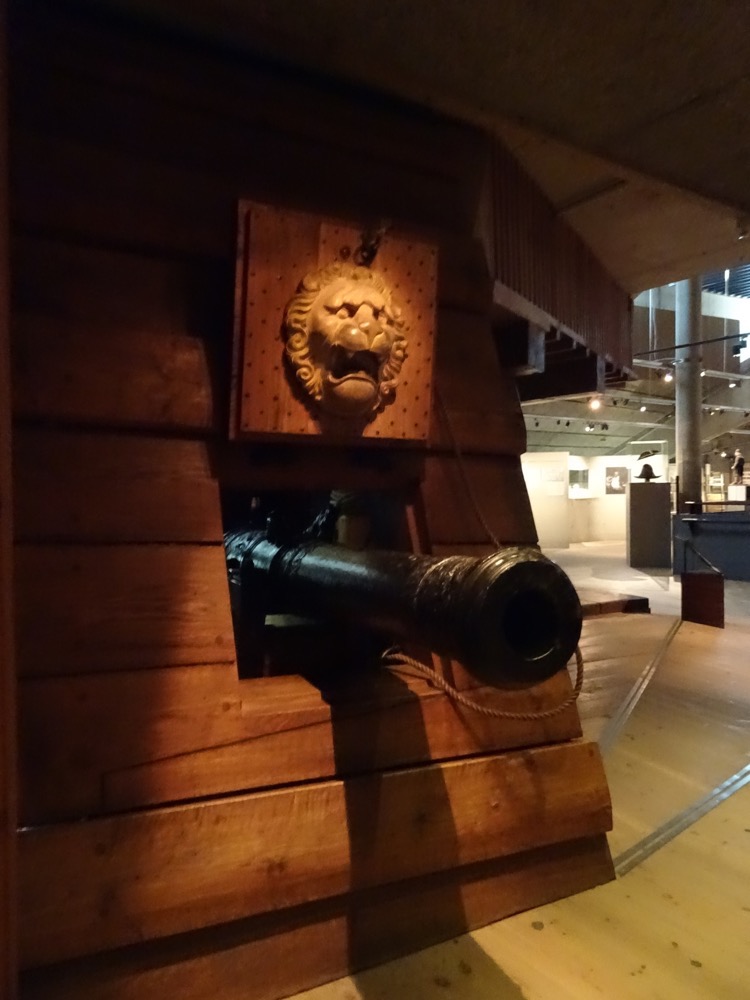
 Six to eight men would ‘live’ between each gun. This was achieved by working and sleeping in shifts. Still, it would have been extremely close and uncomfortable quarters for what was potentially months at sea.
Six to eight men would ‘live’ between each gun. This was achieved by working and sleeping in shifts. Still, it would have been extremely close and uncomfortable quarters for what was potentially months at sea.
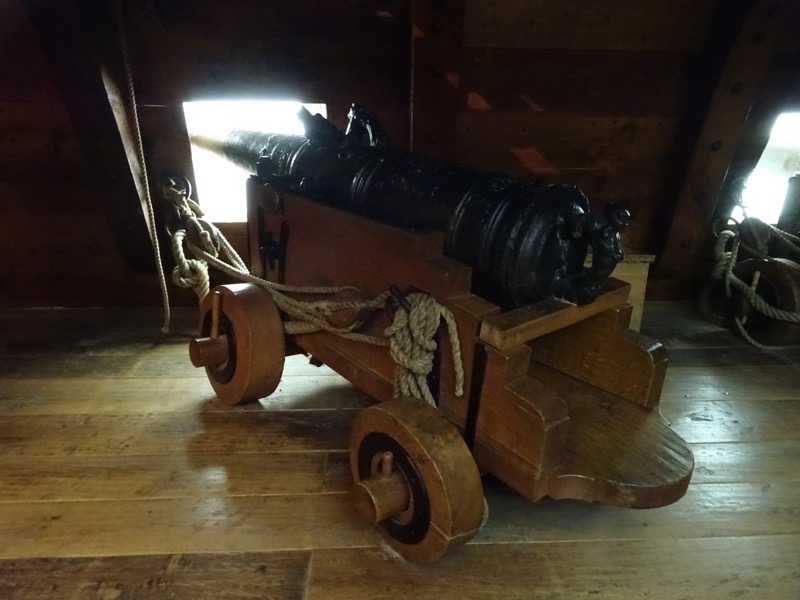
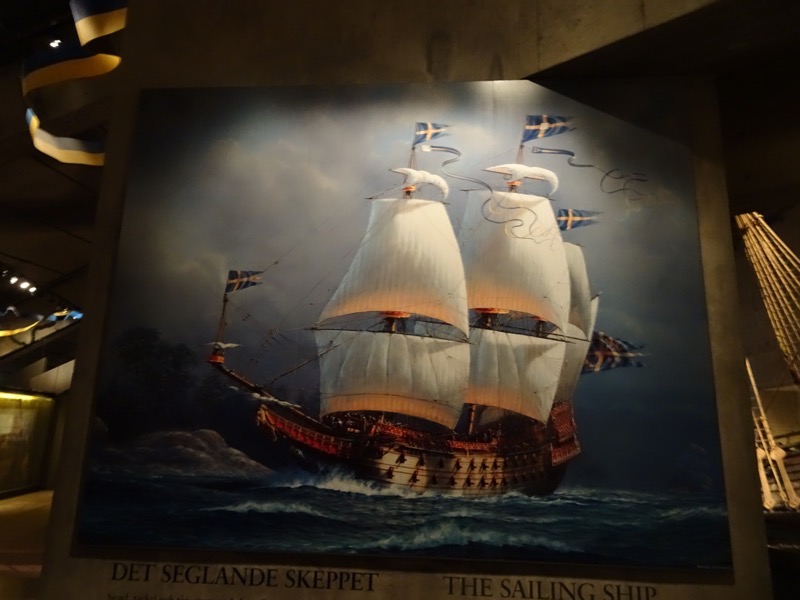
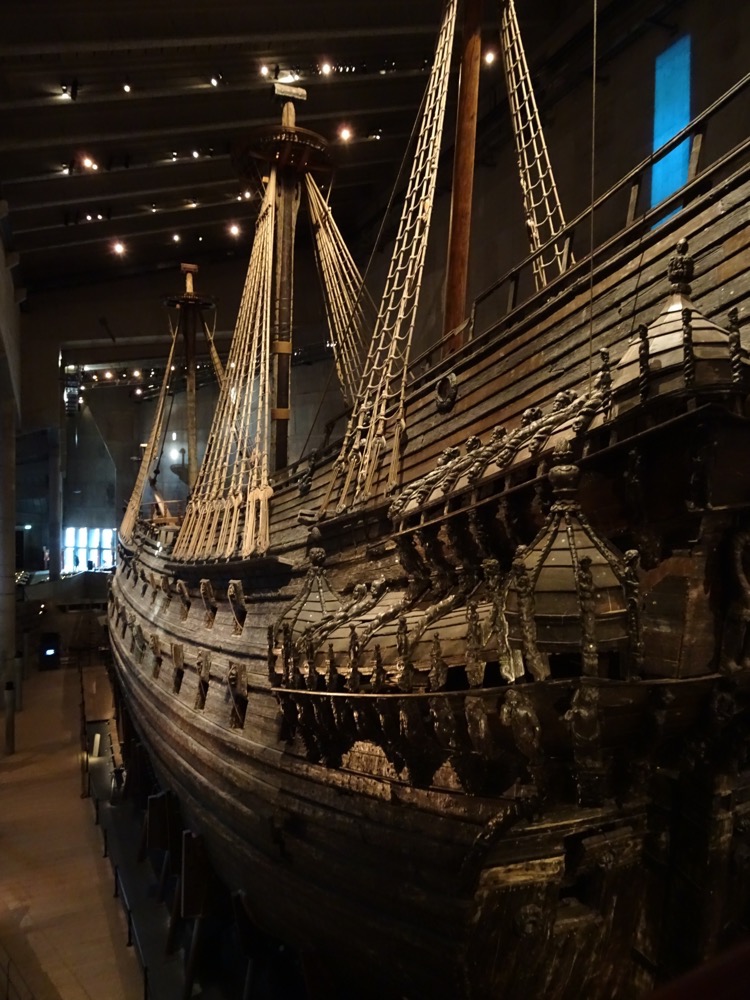
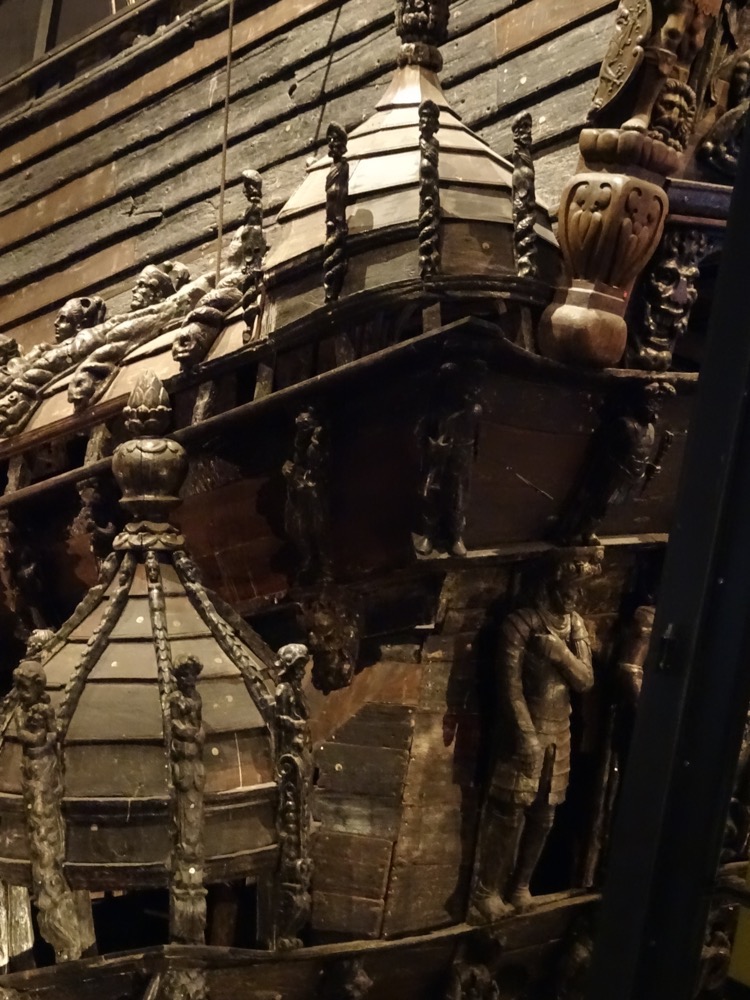
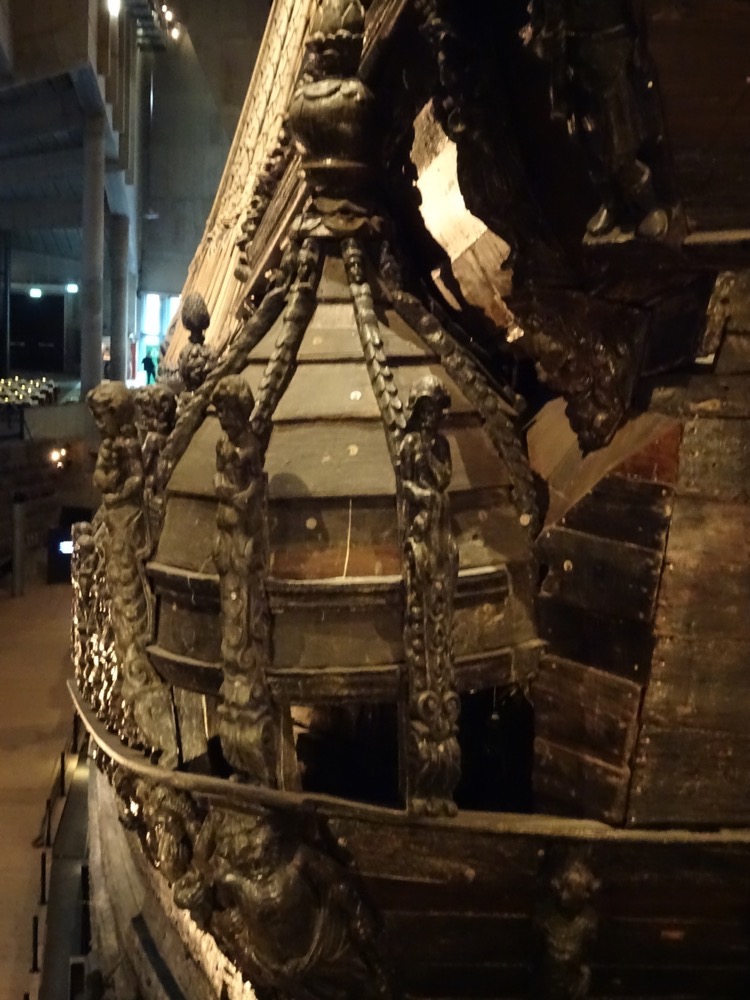
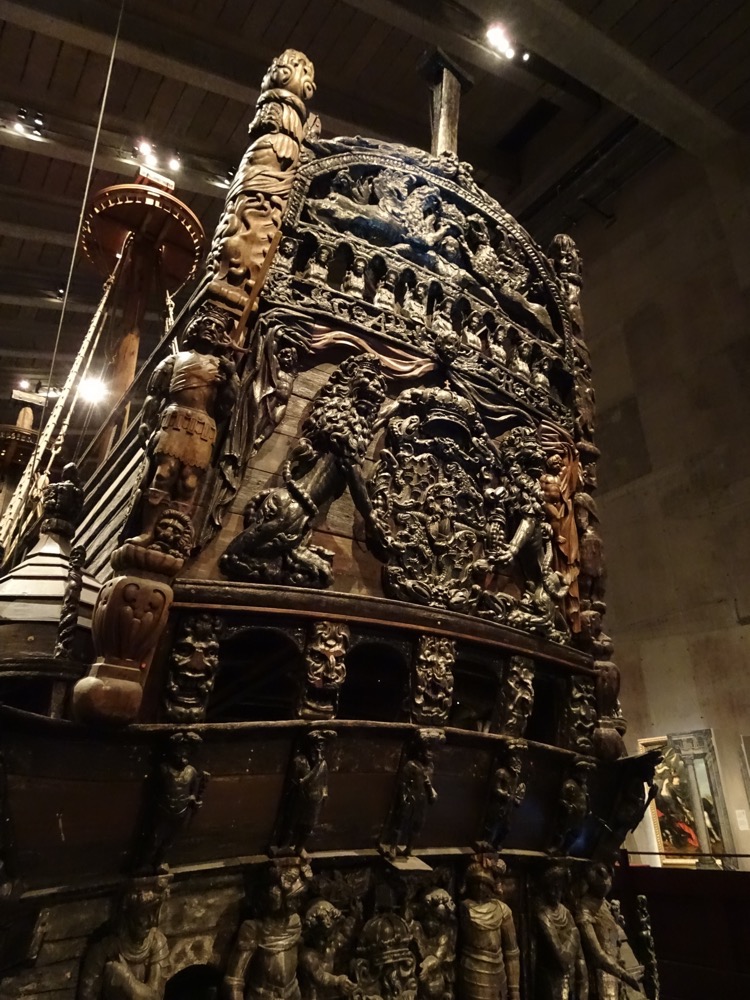
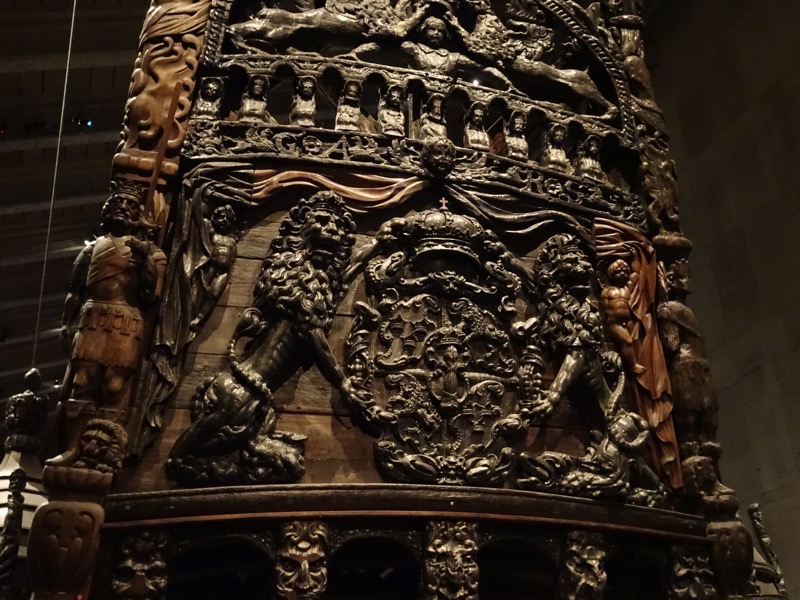
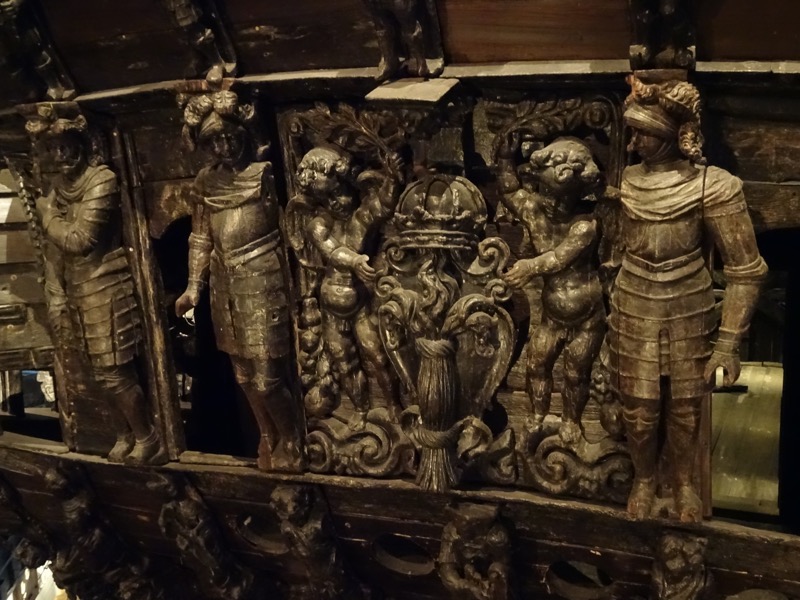
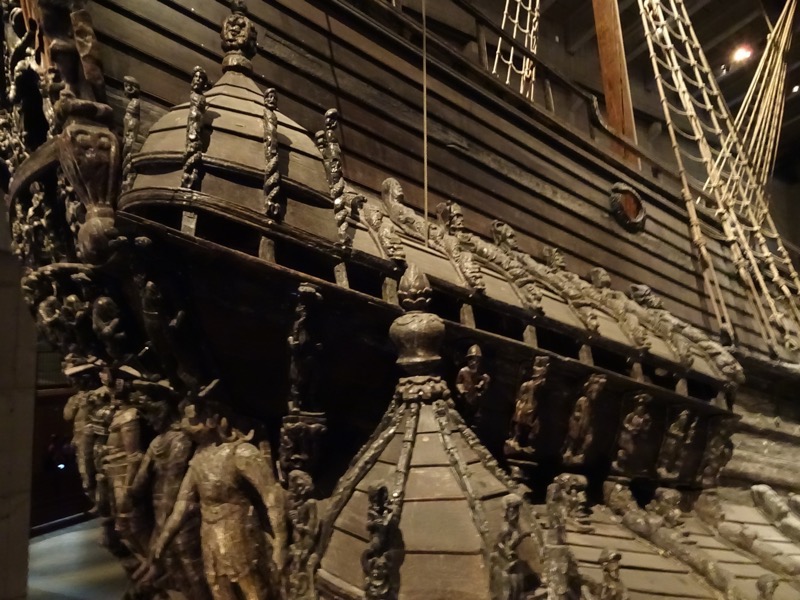
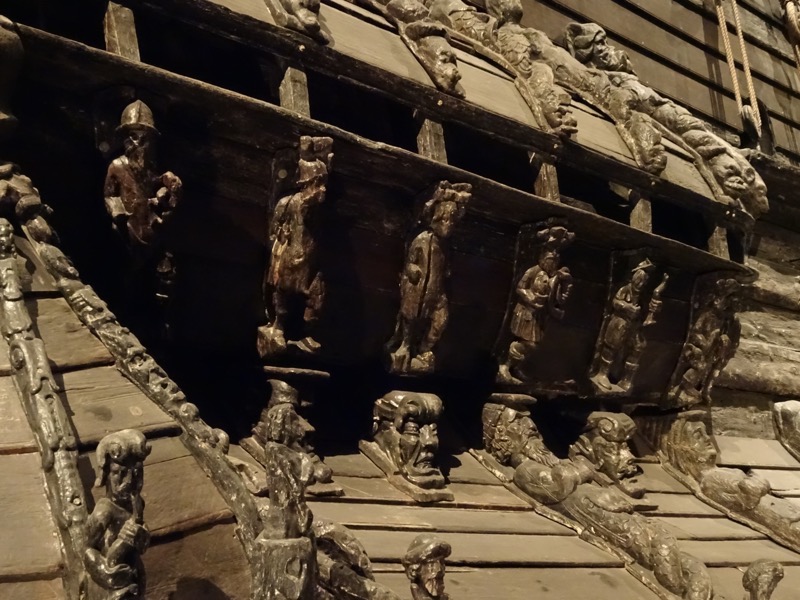
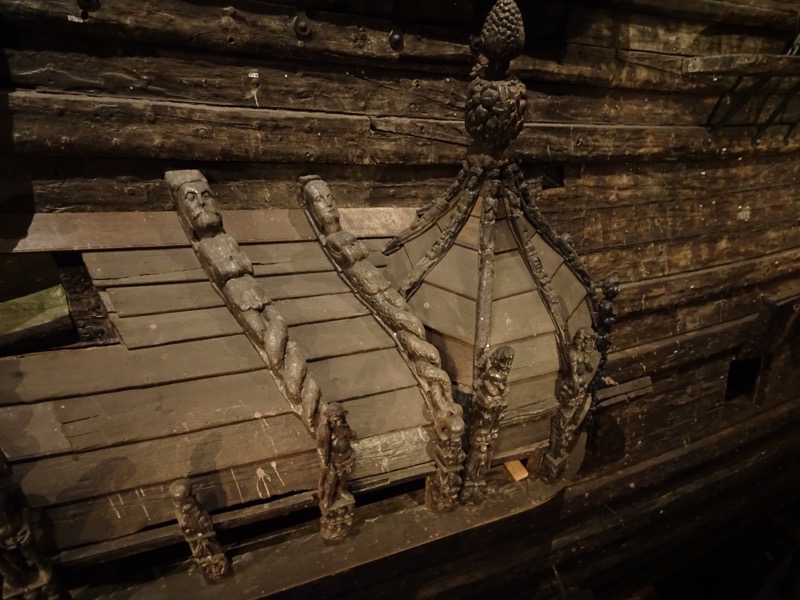



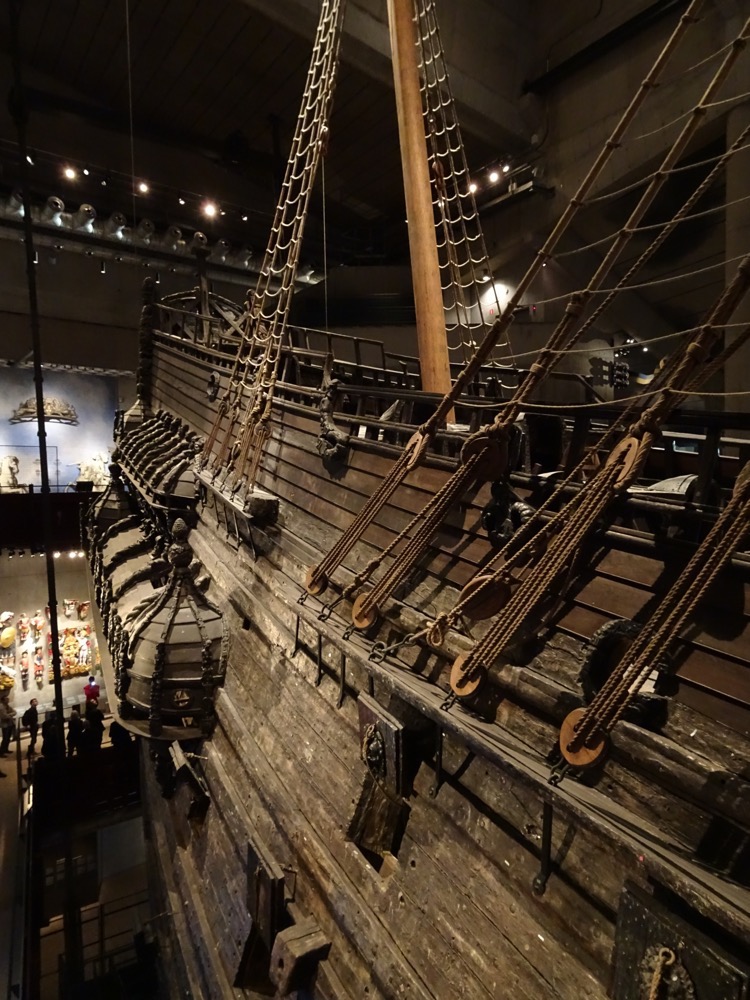
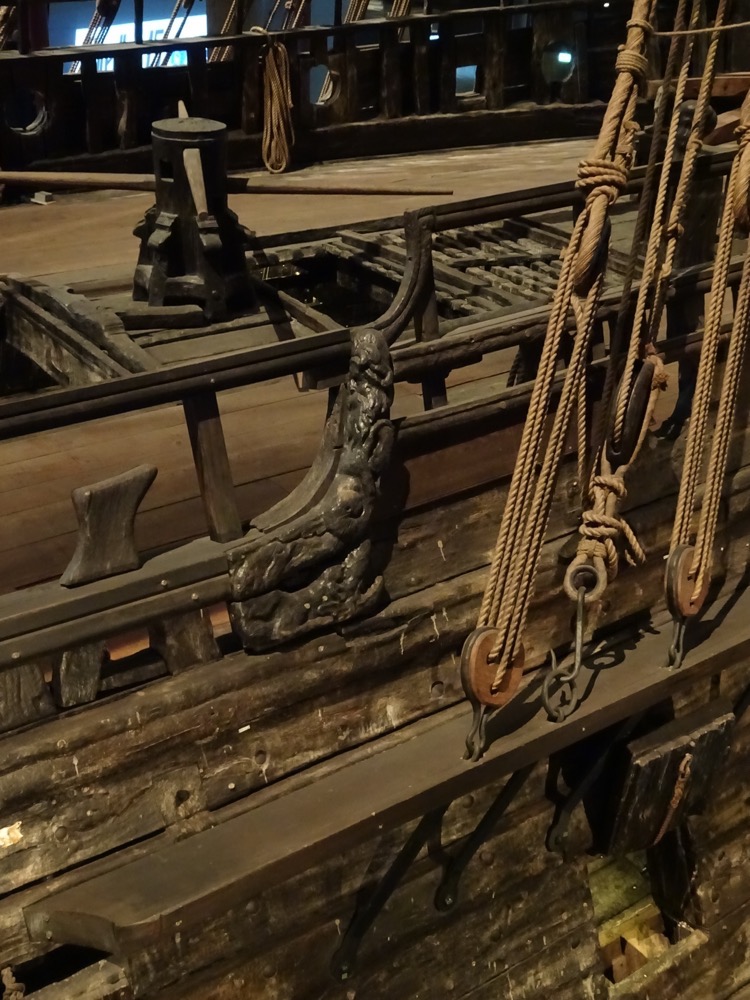
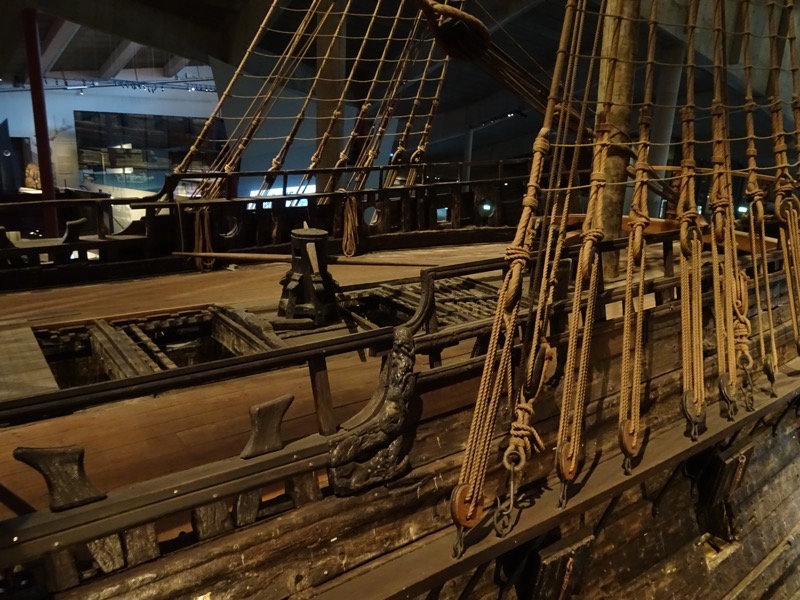
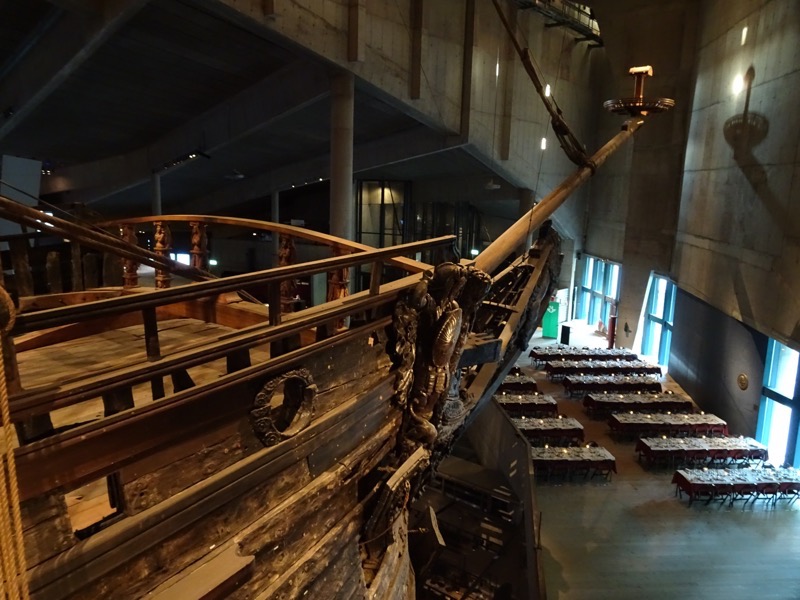
 I was fortunate enough to visit the museum during regular public hours, as well as to attend a private conference dinner at the museum. It was a very special experience to be able to admire and explore the ship and the museum without the hordes of bustling tourists present.
I was fortunate enough to visit the museum during regular public hours, as well as to attend a private conference dinner at the museum. It was a very special experience to be able to admire and explore the ship and the museum without the hordes of bustling tourists present. 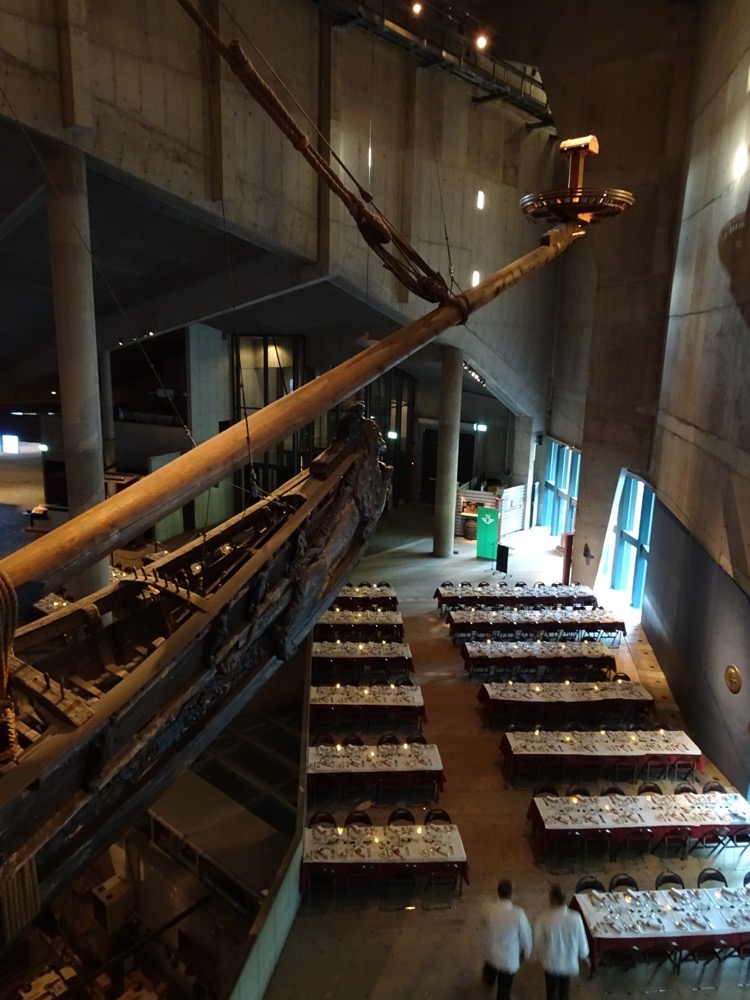

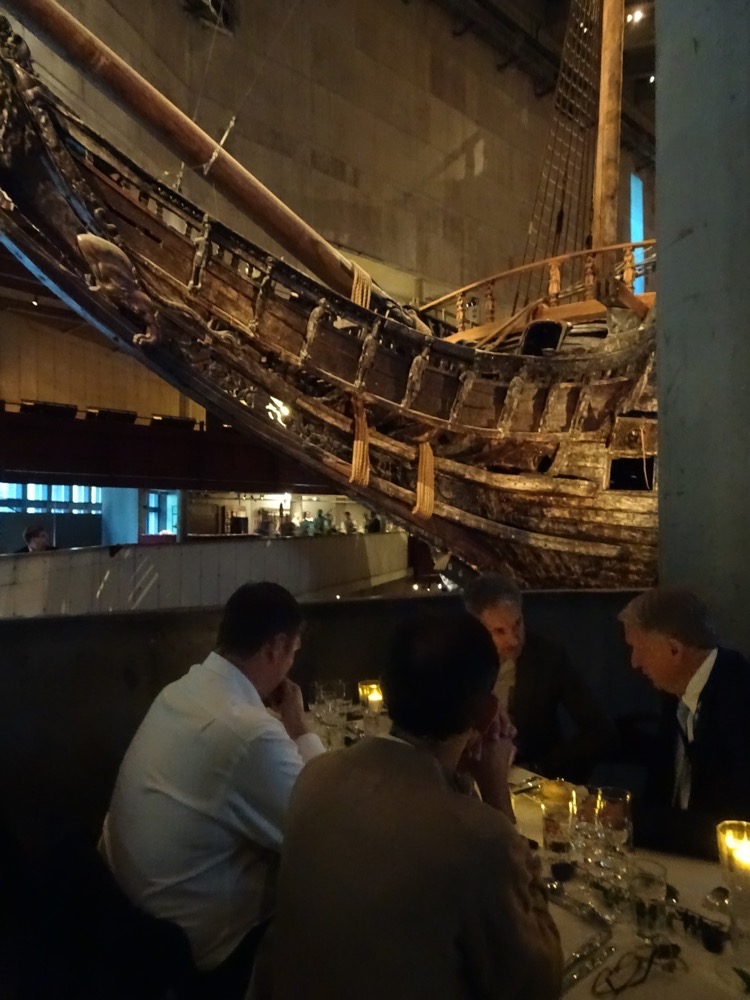
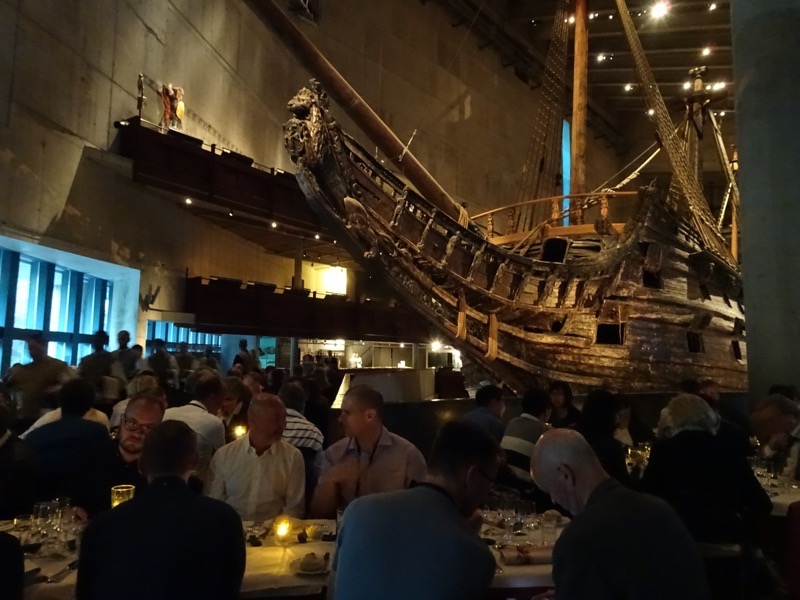
 I’ve put way too many photos into this post!
I’ve put way too many photos into this post!